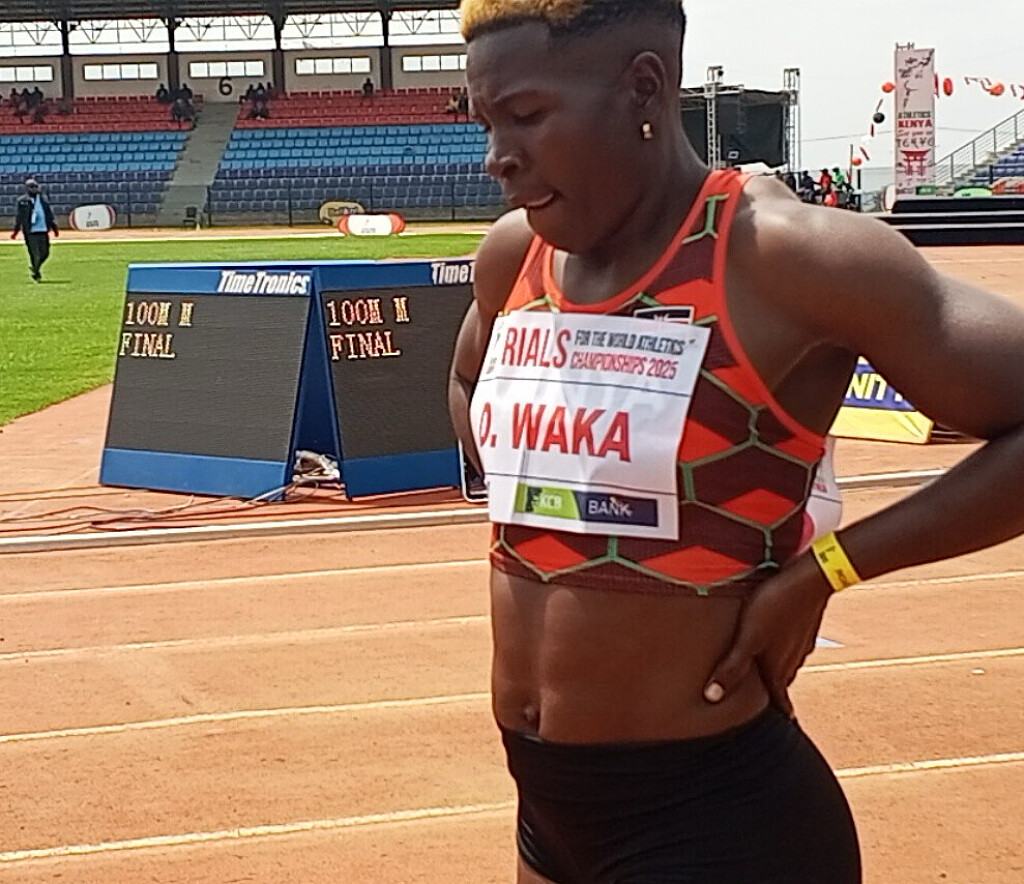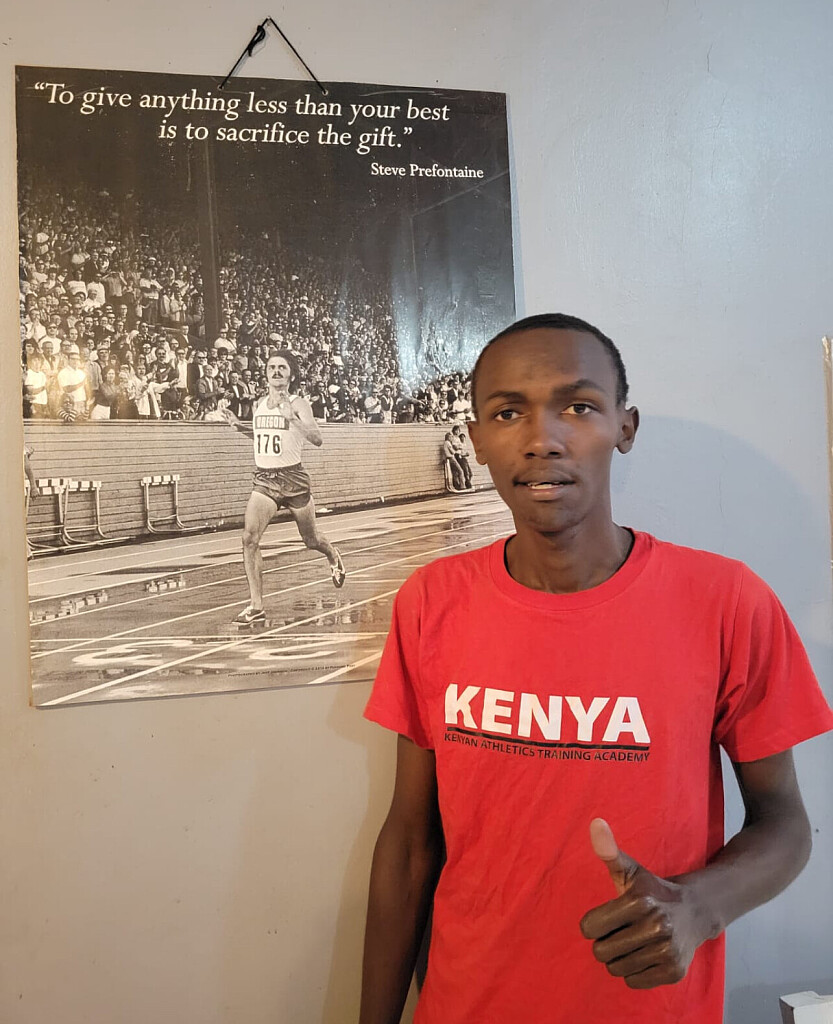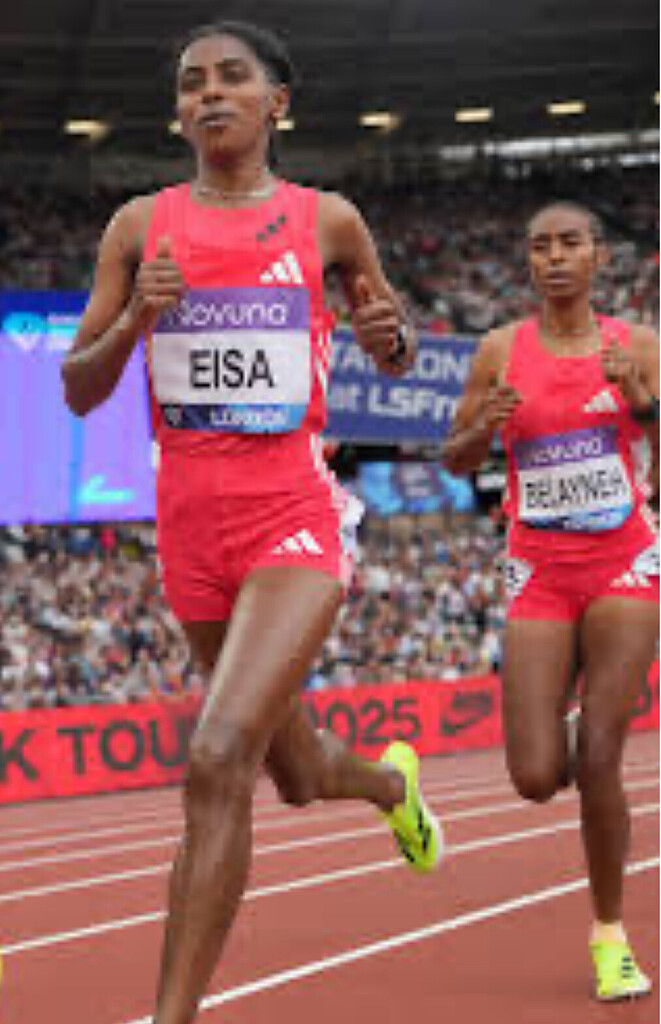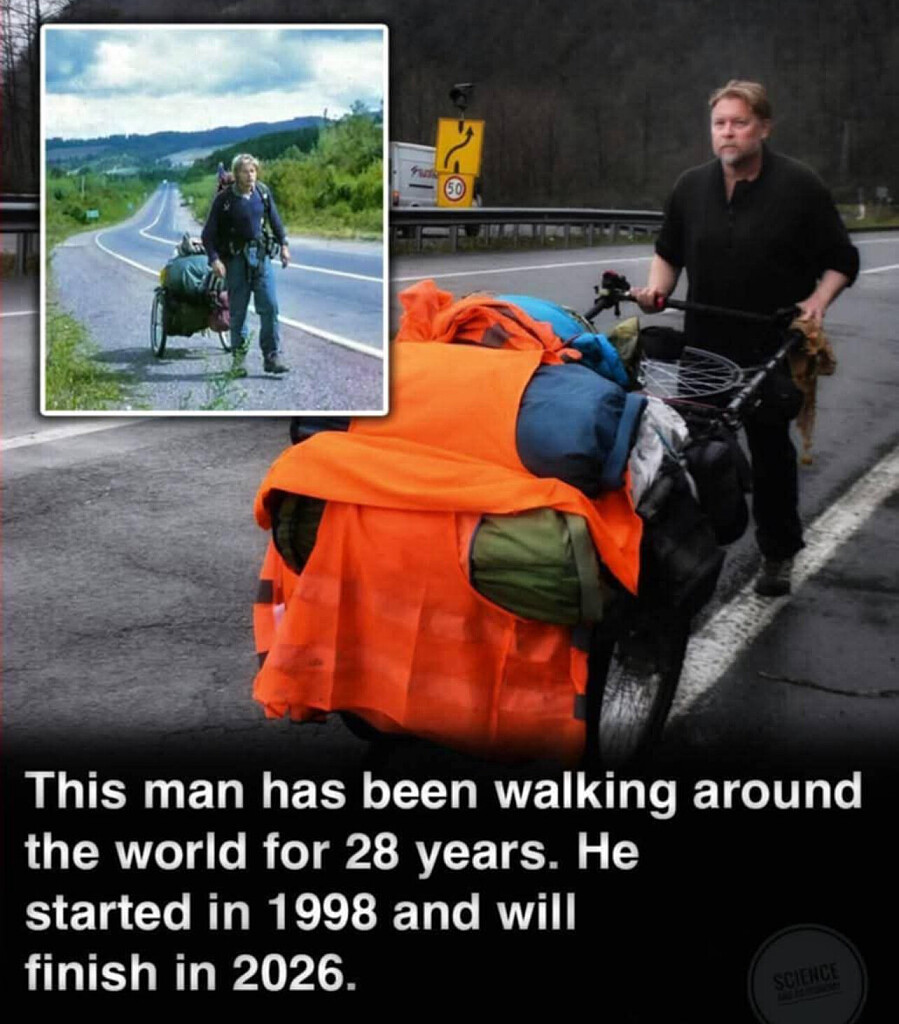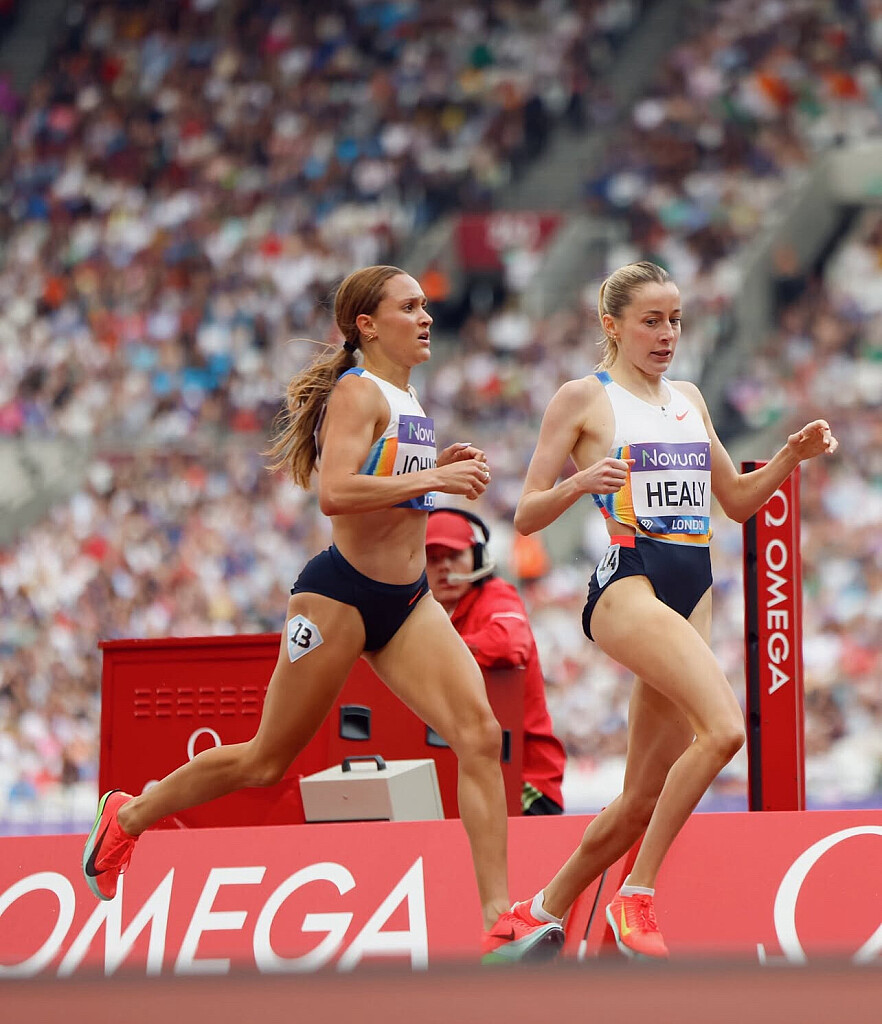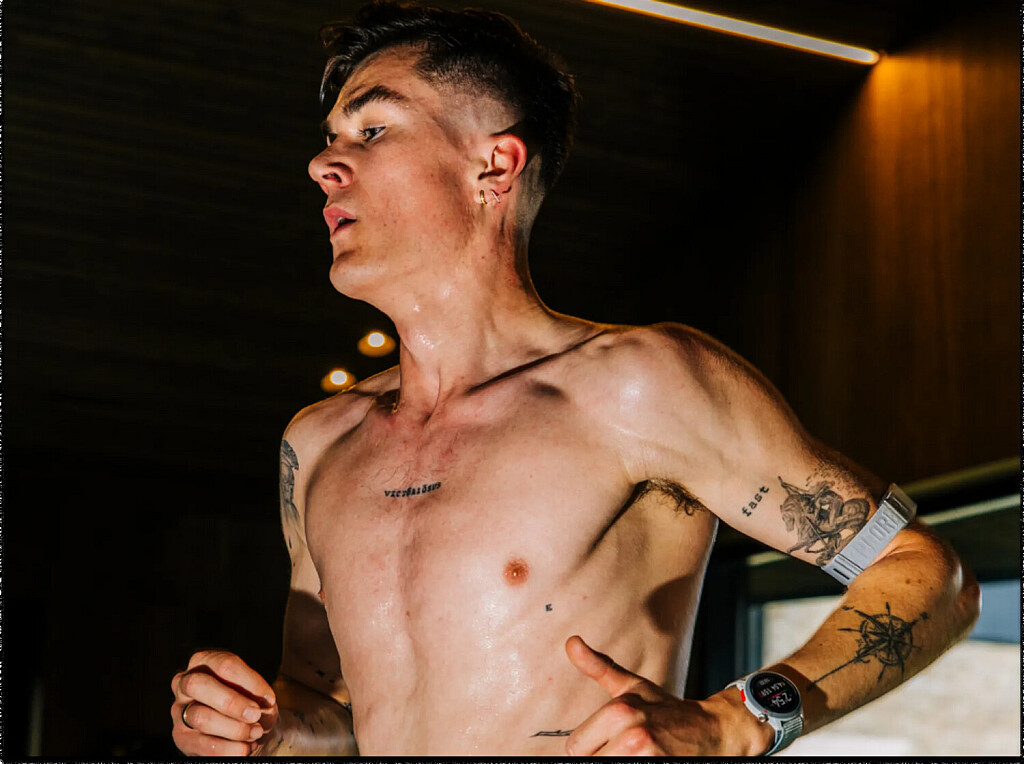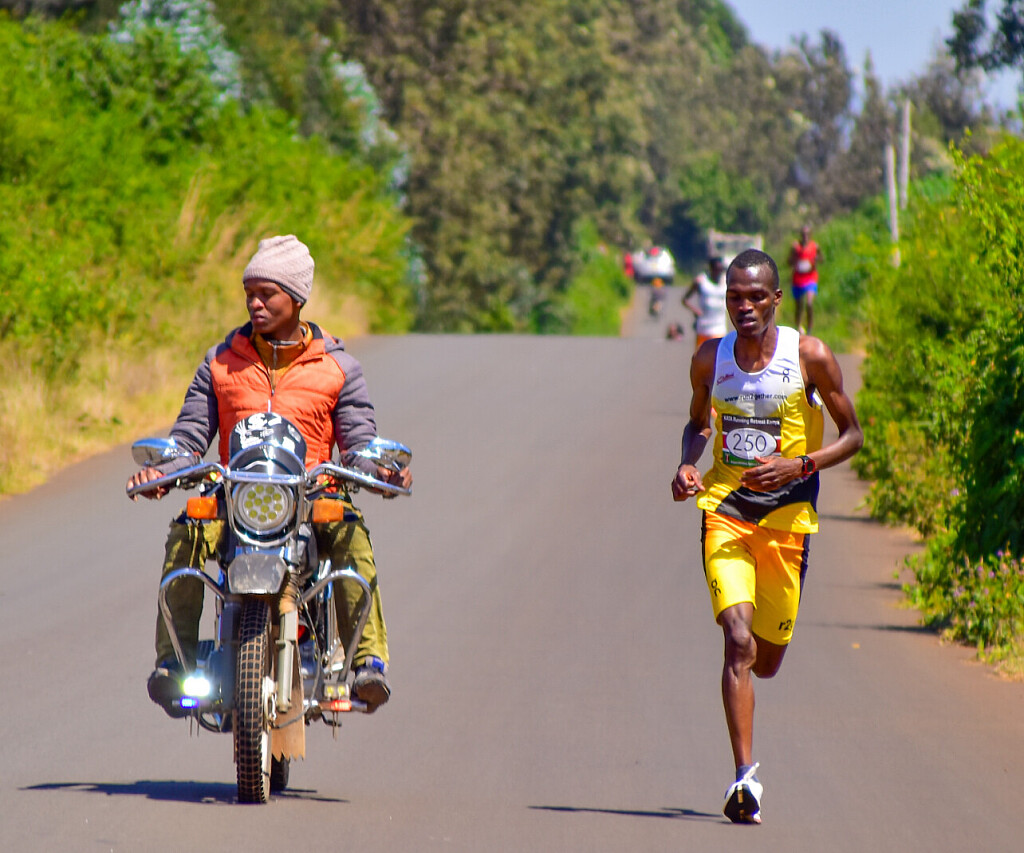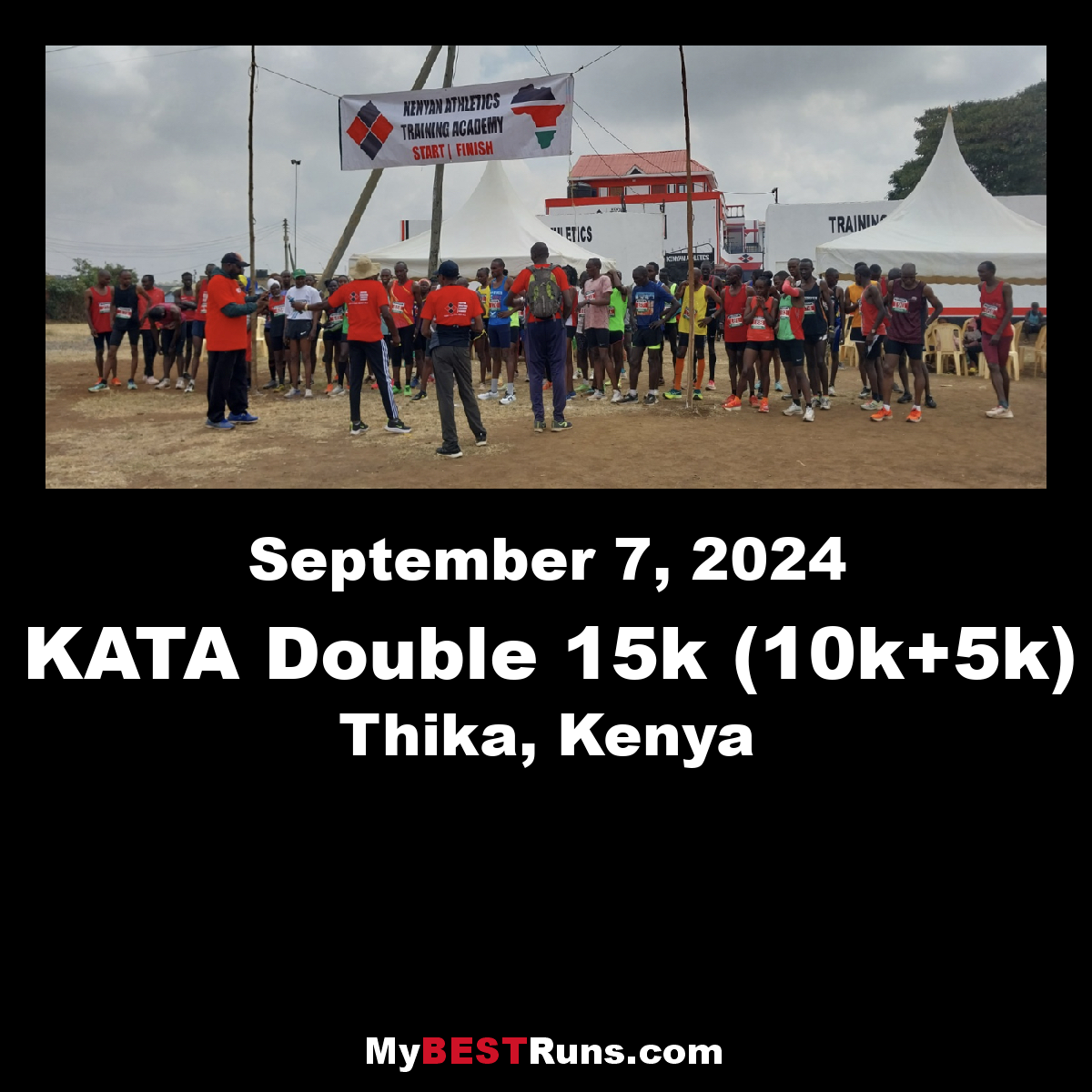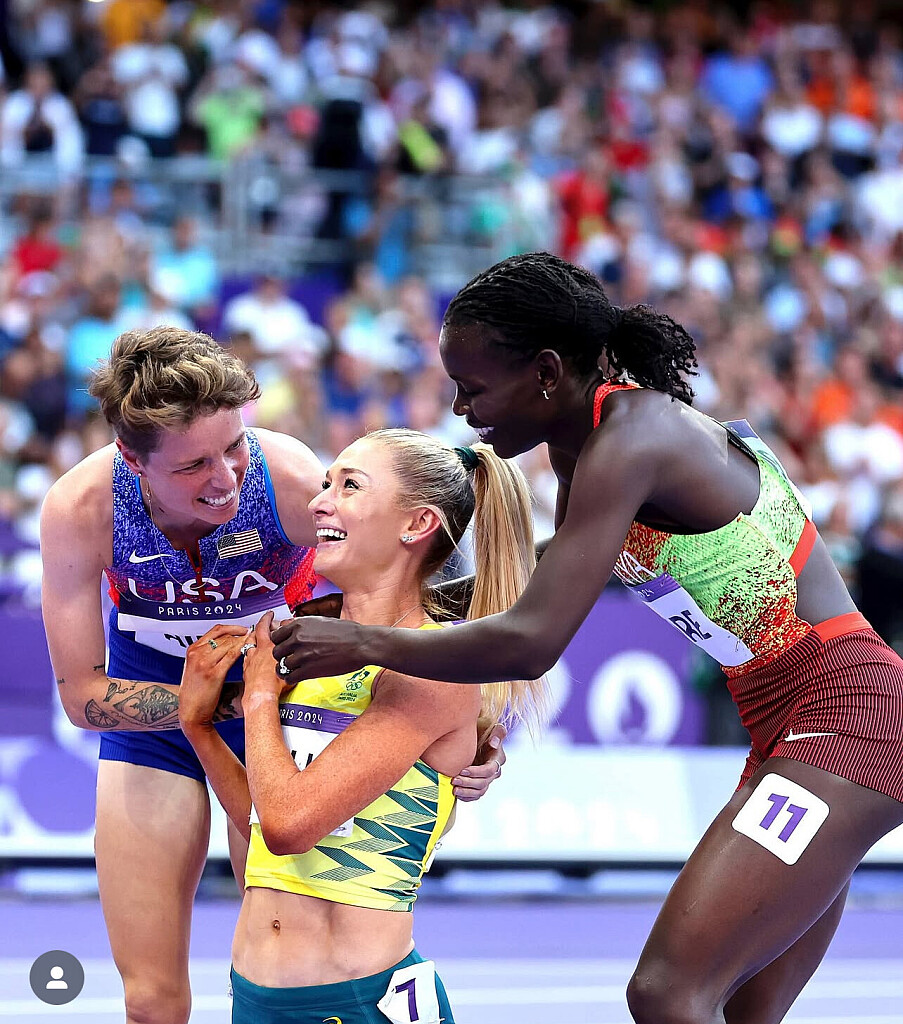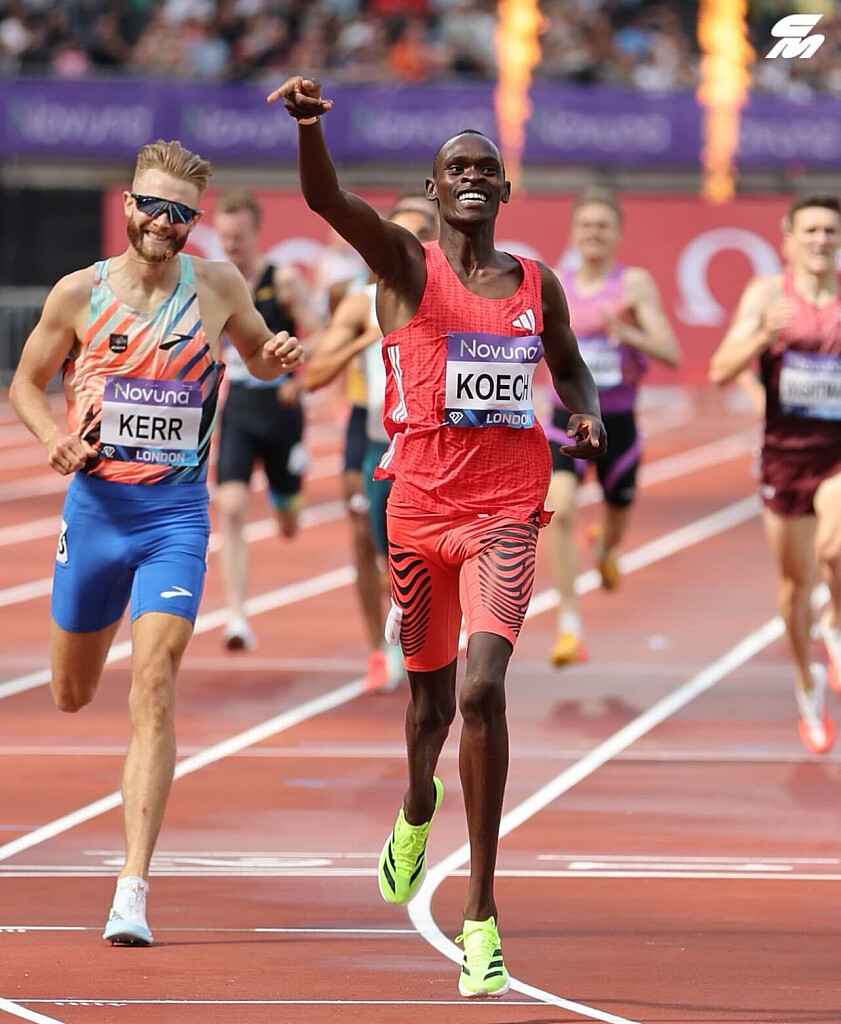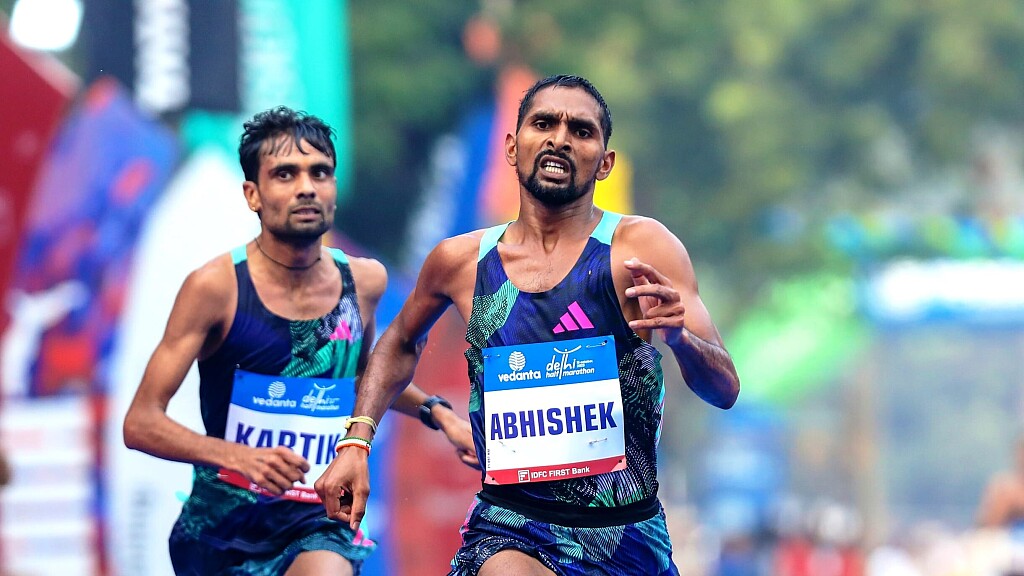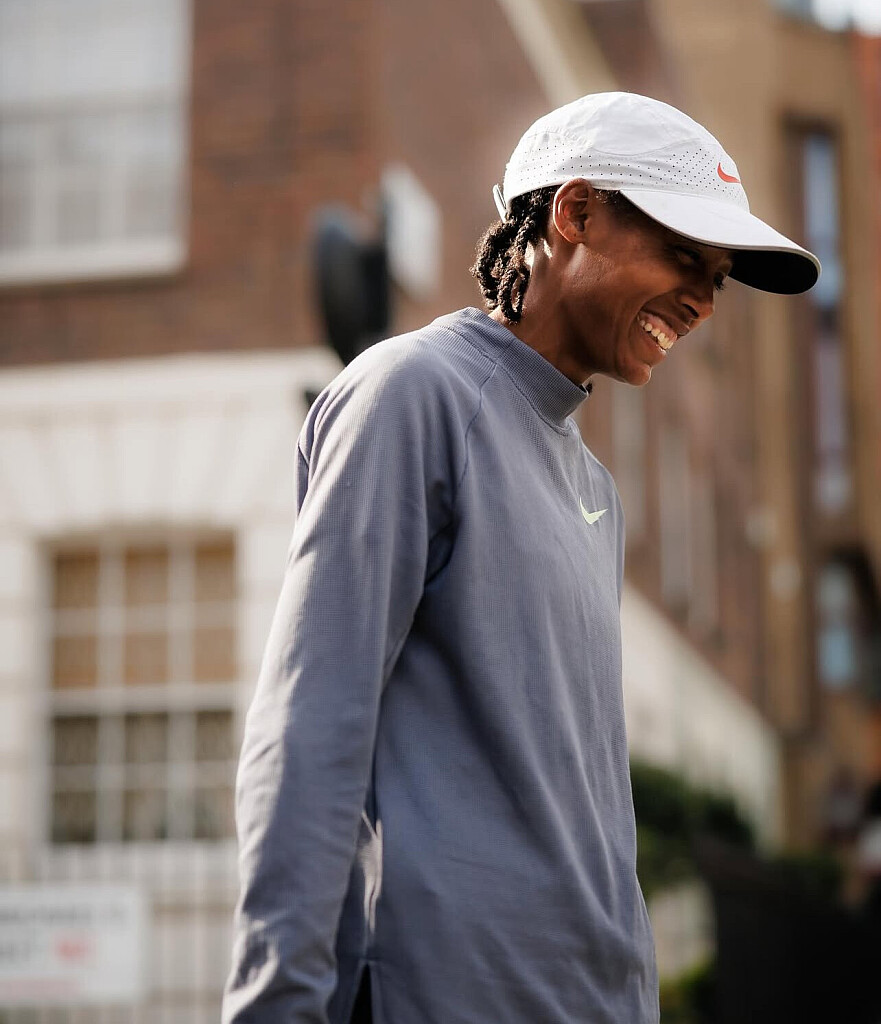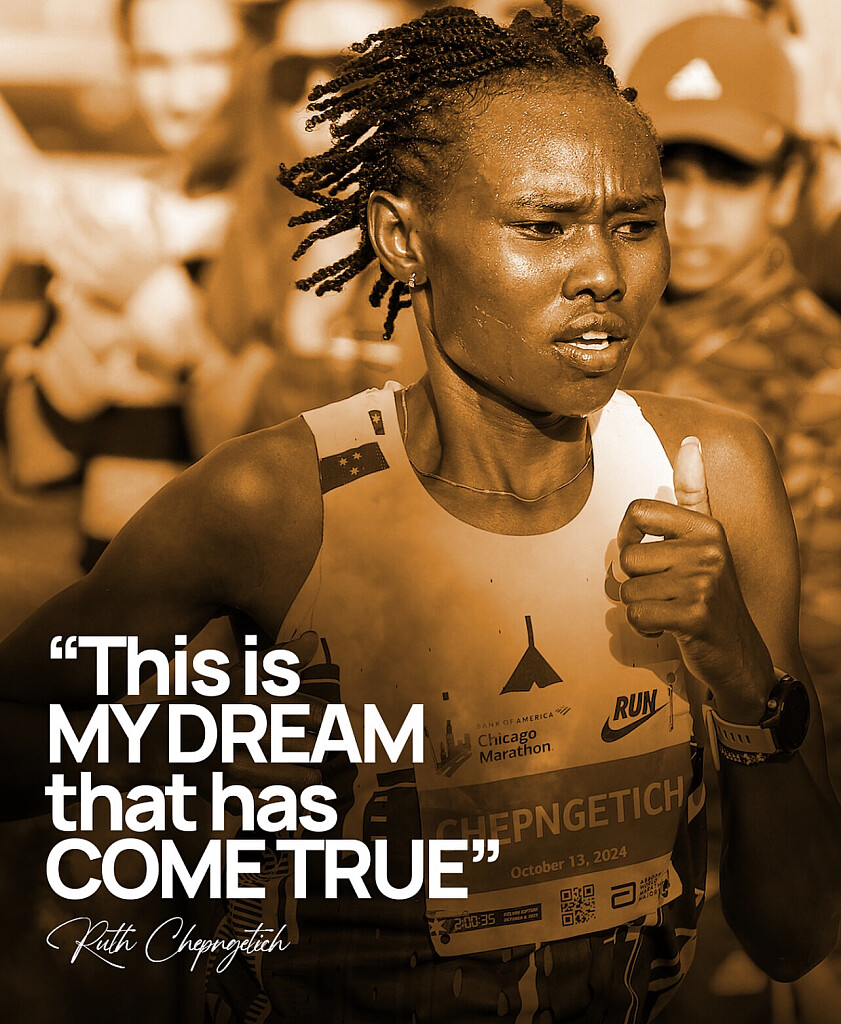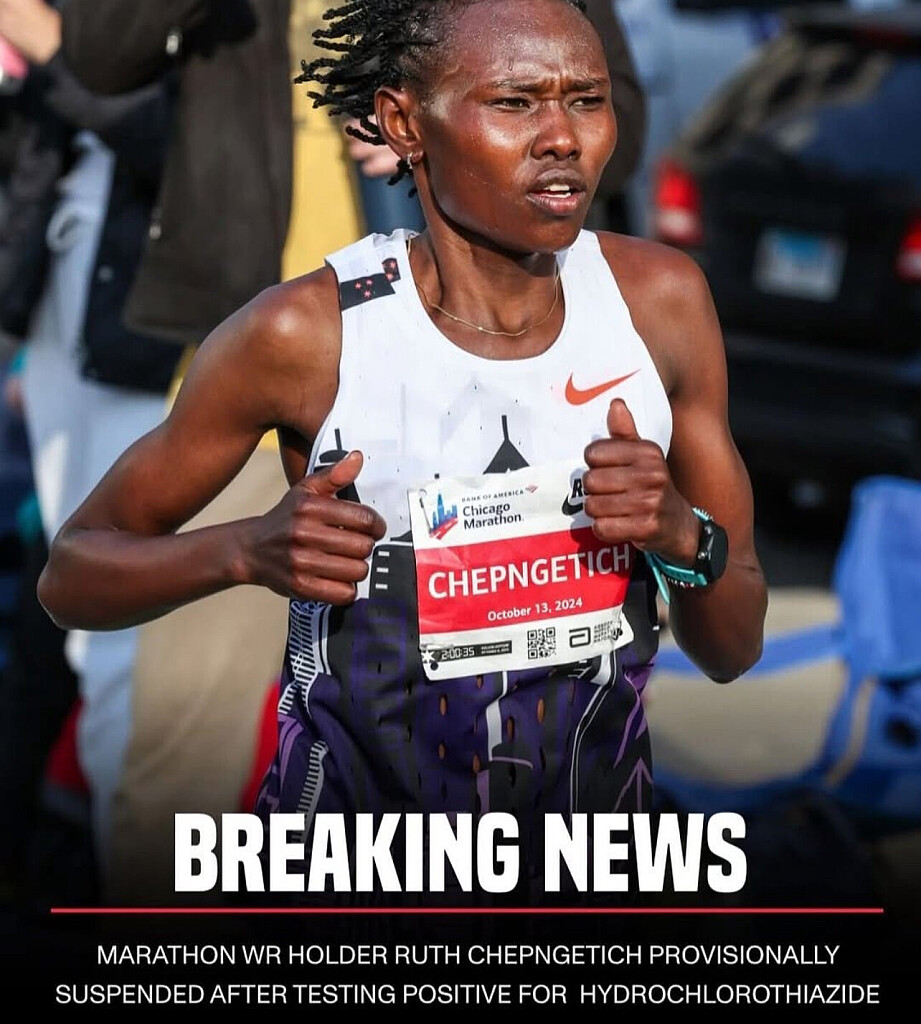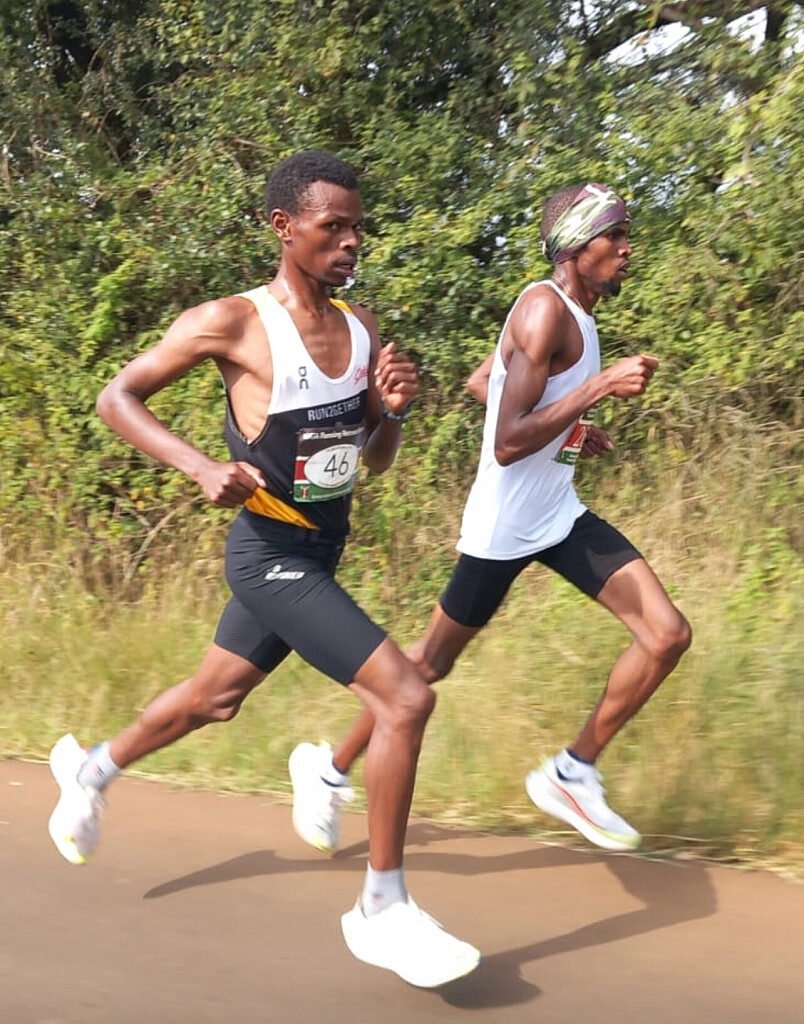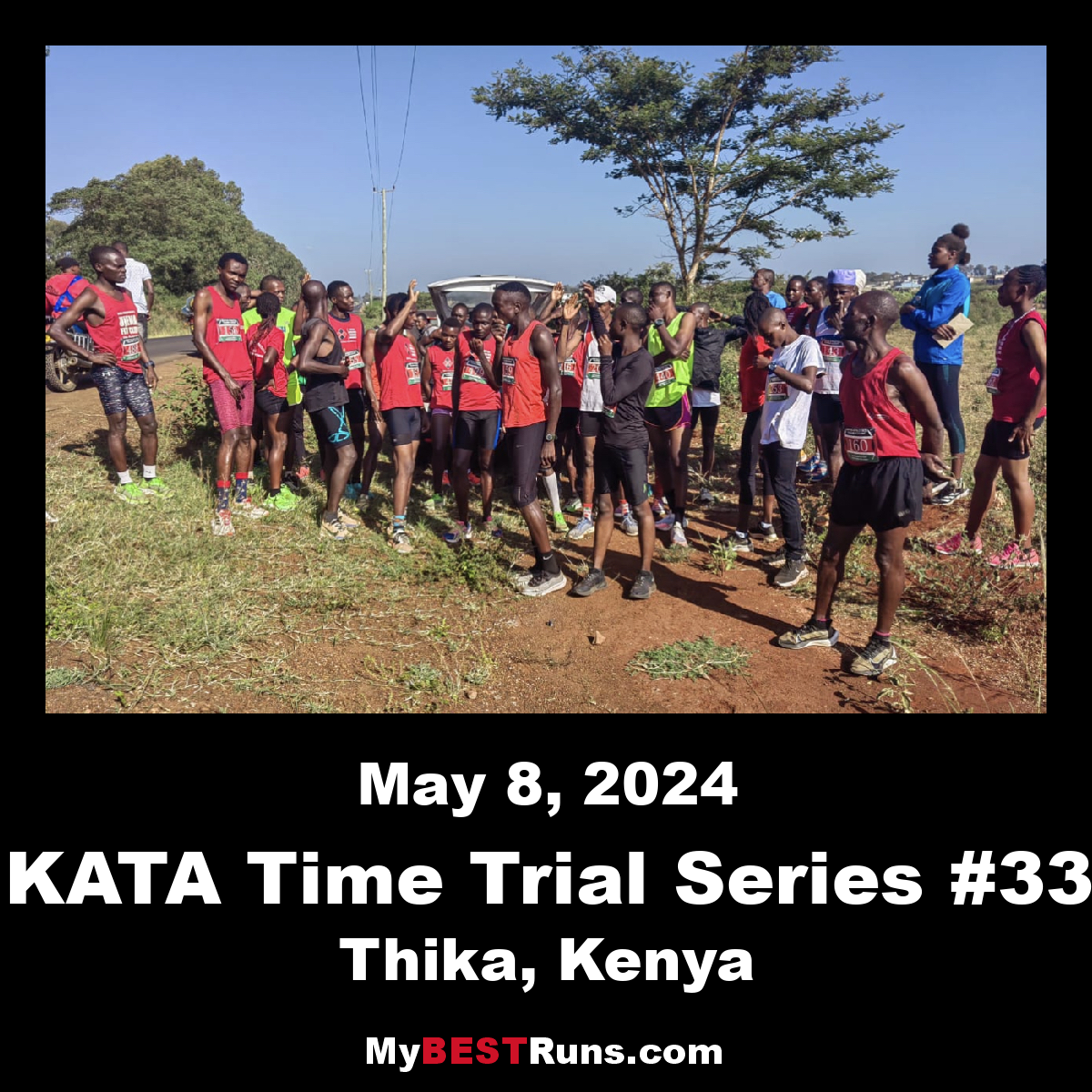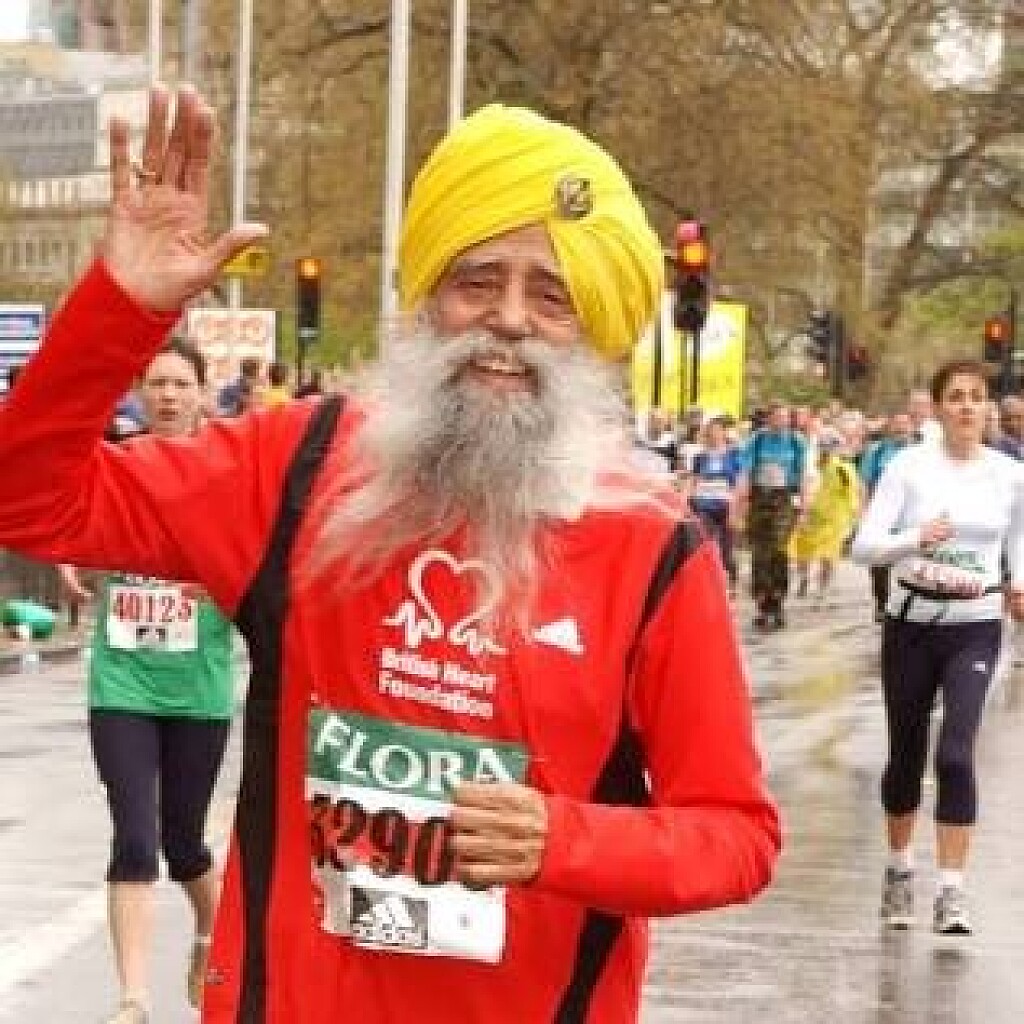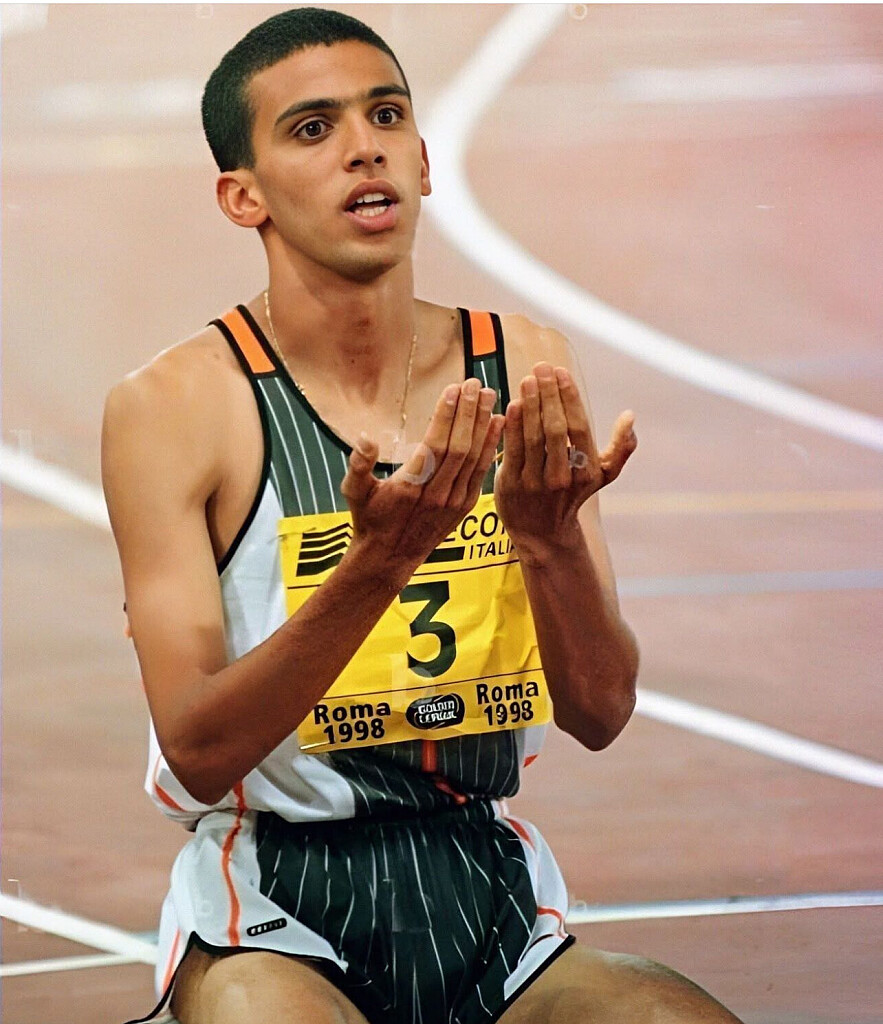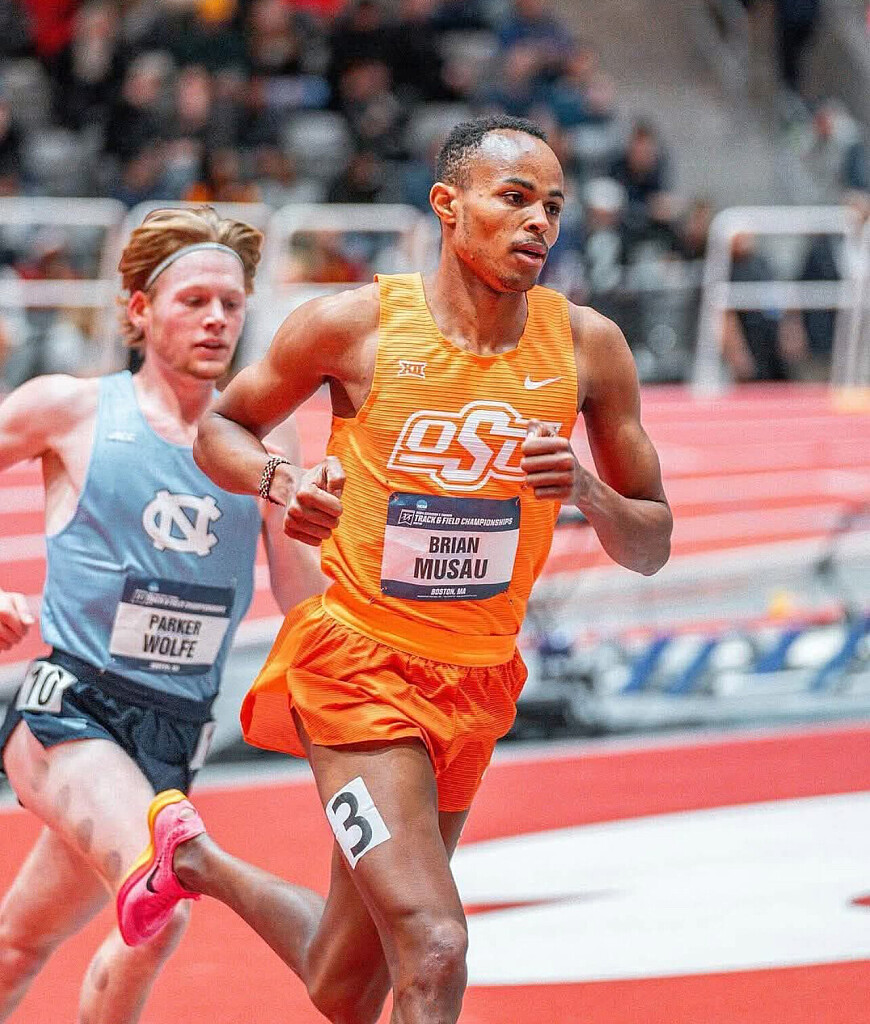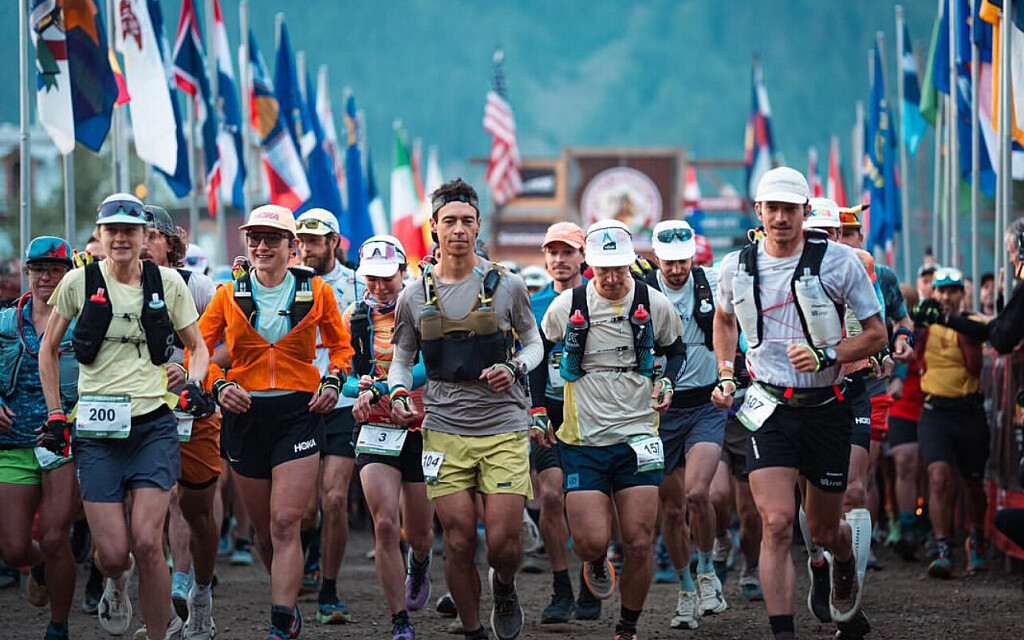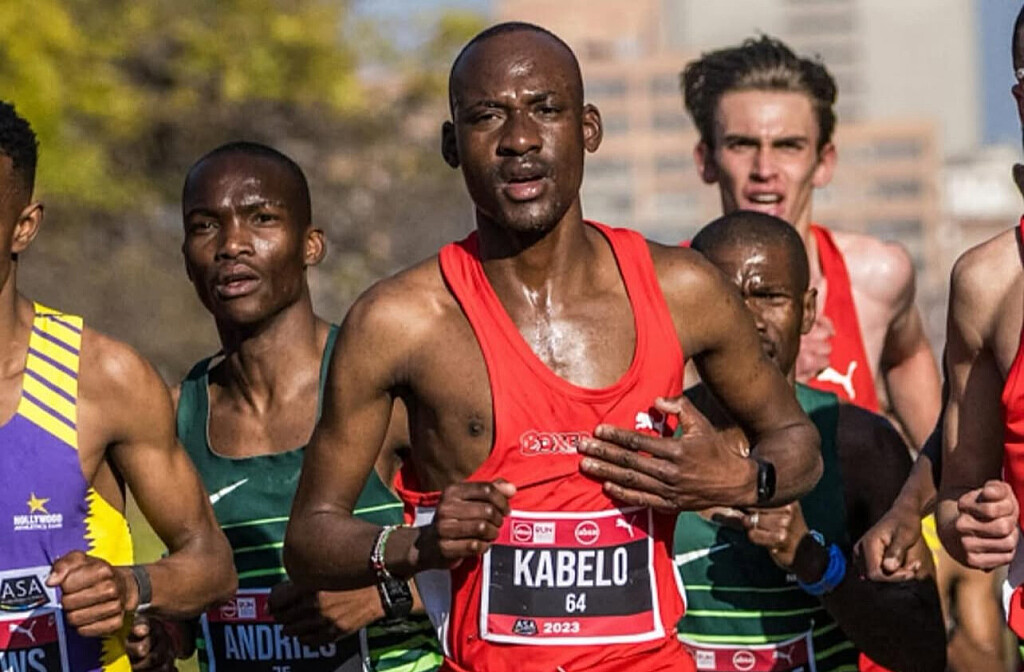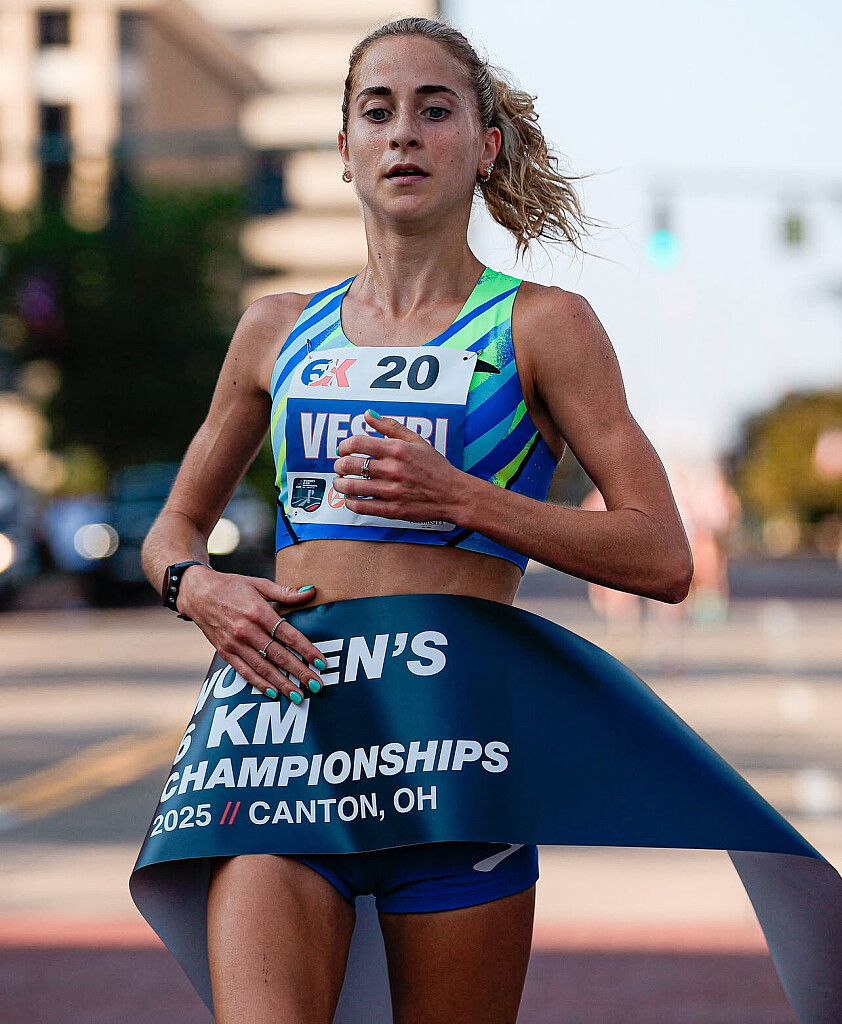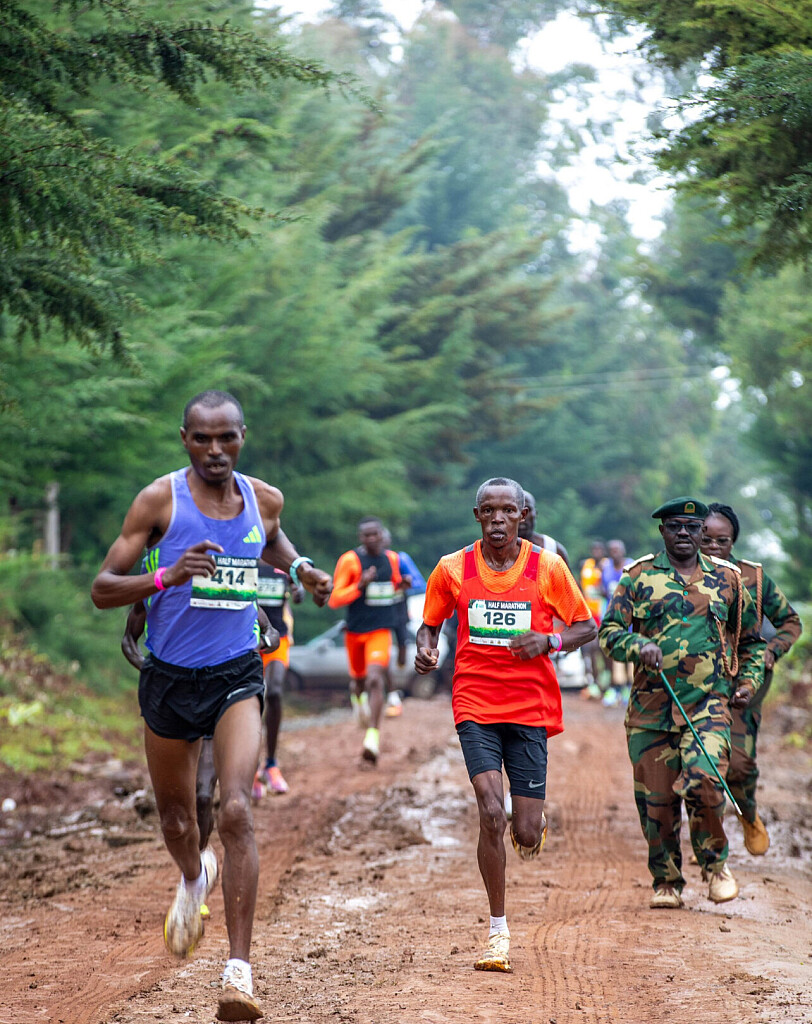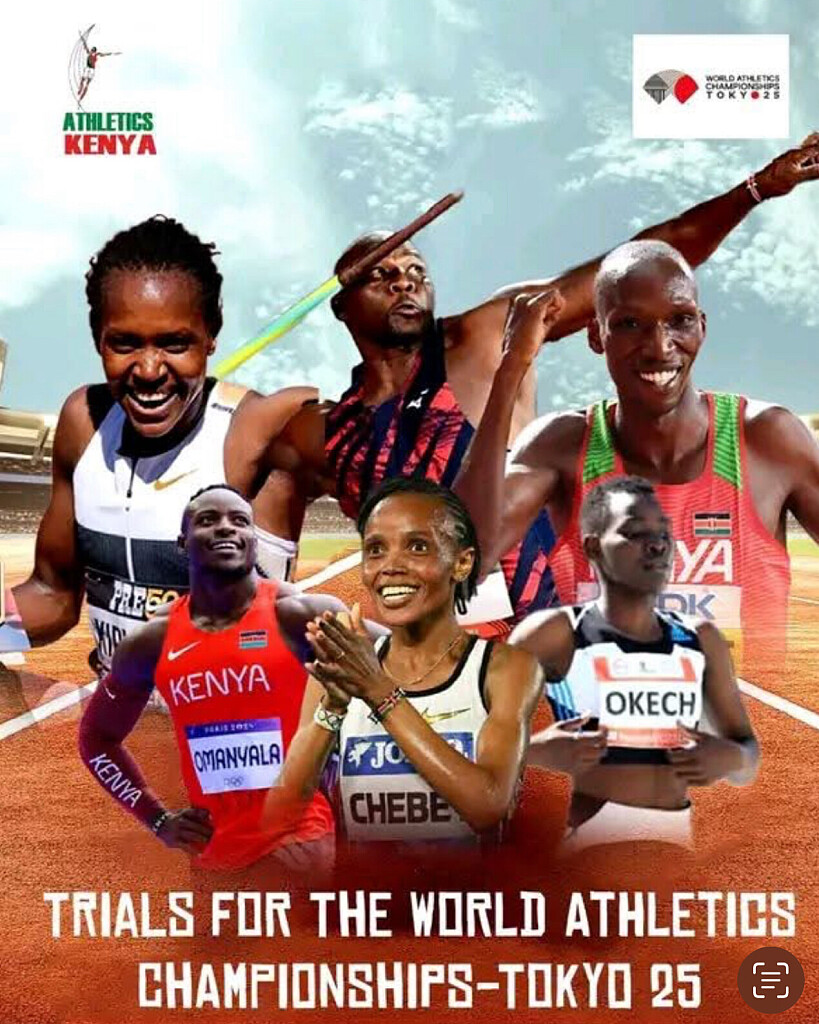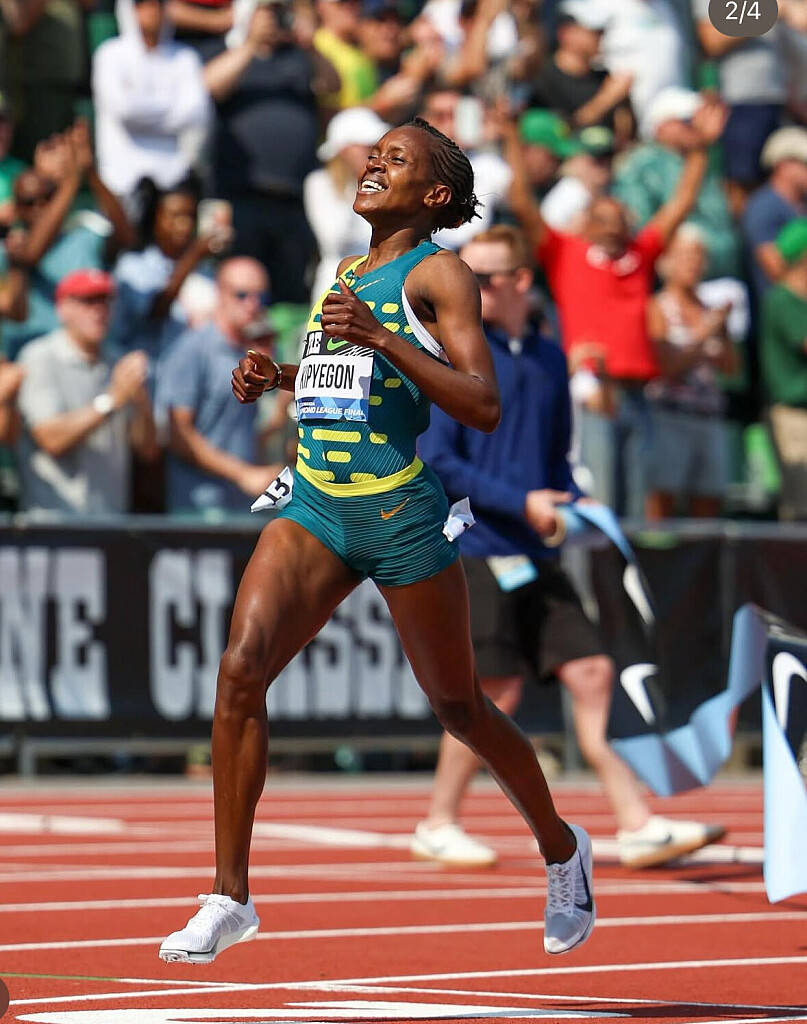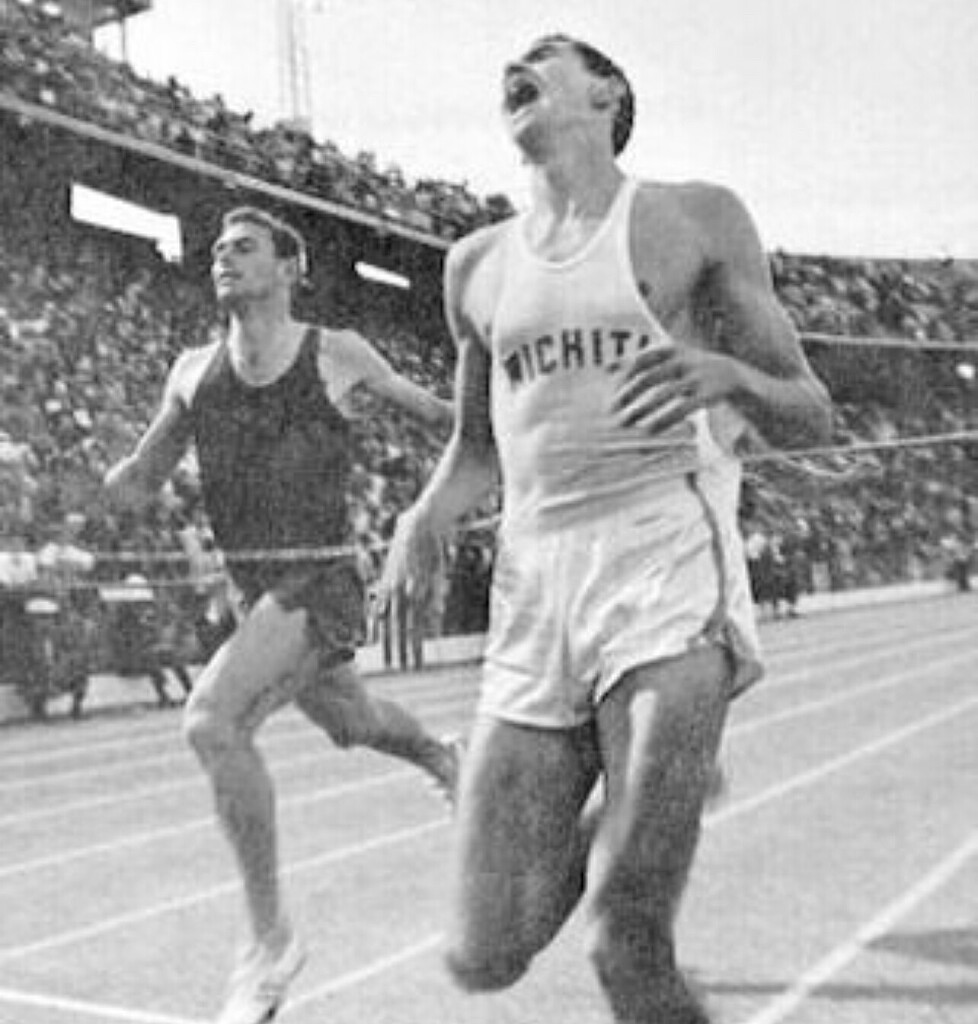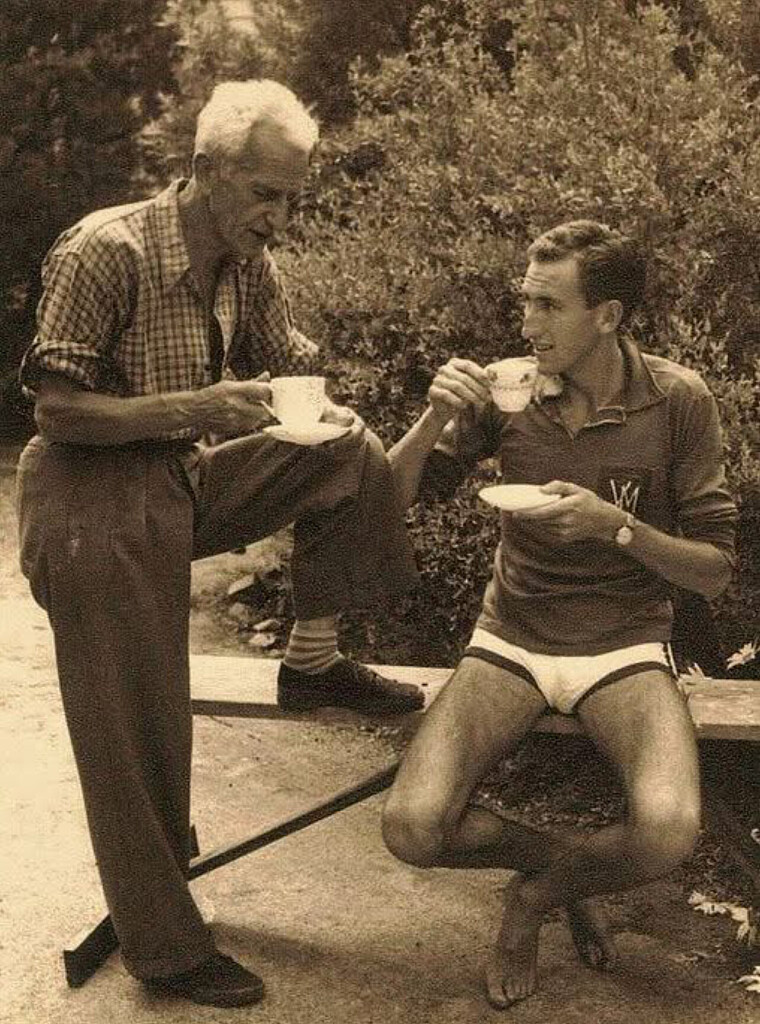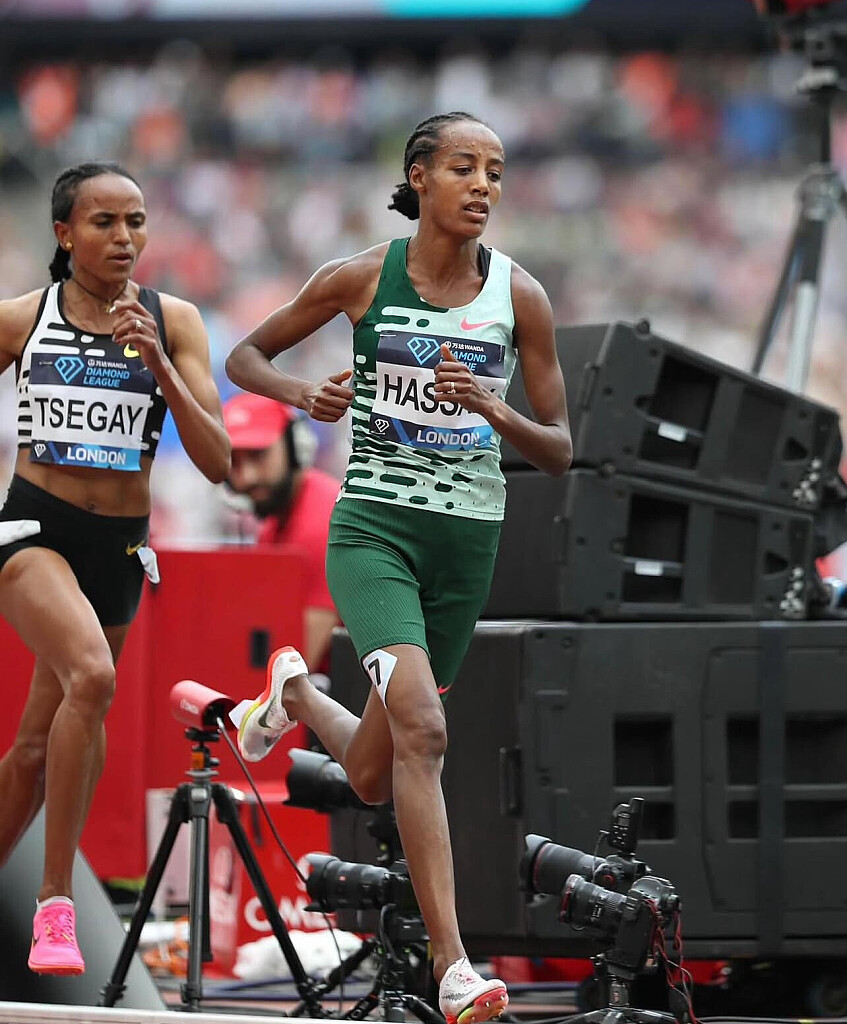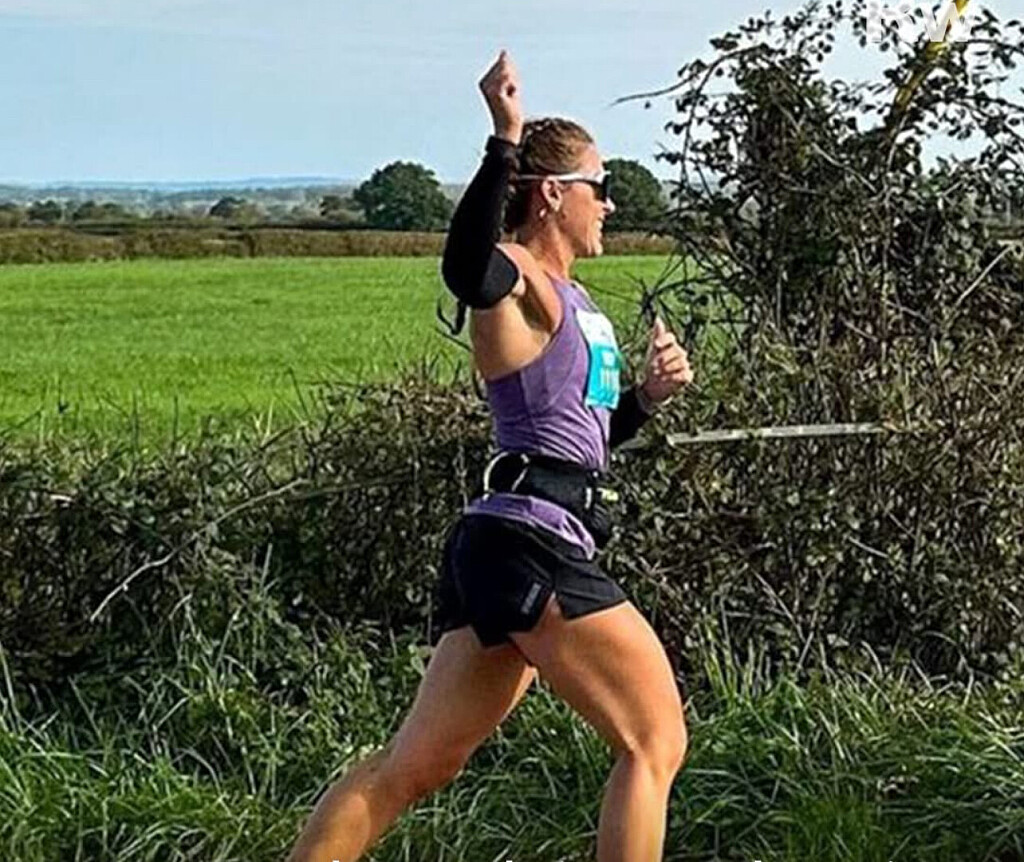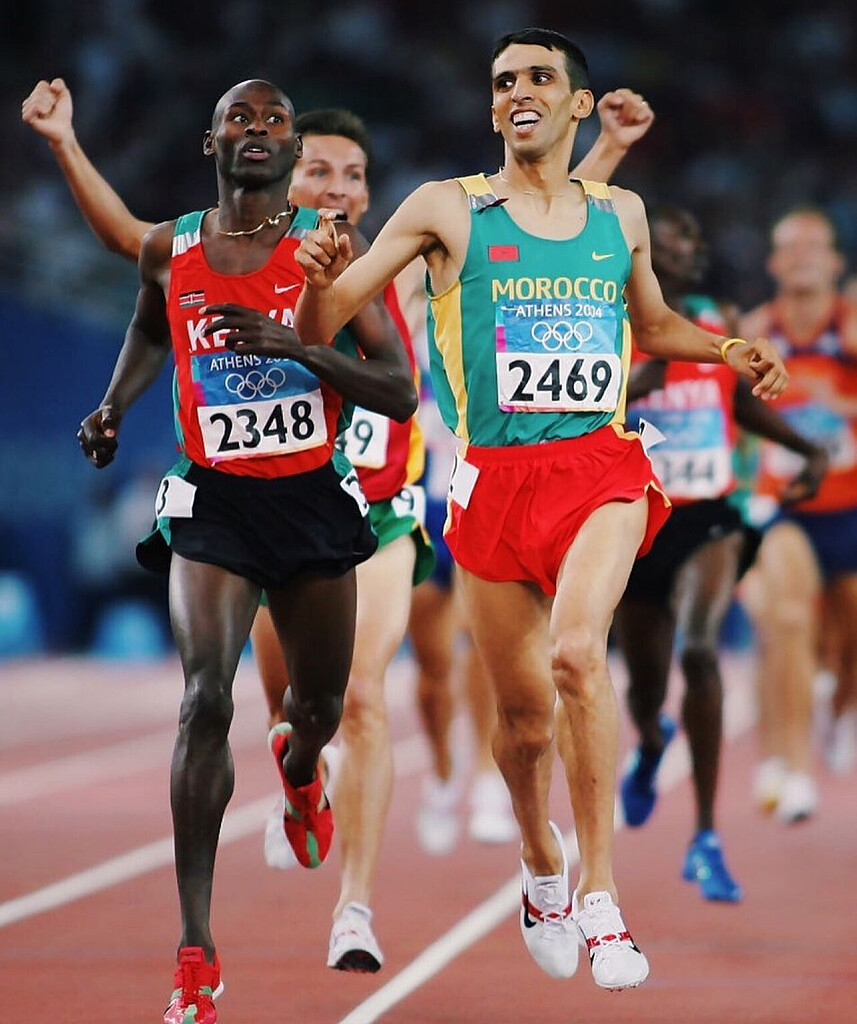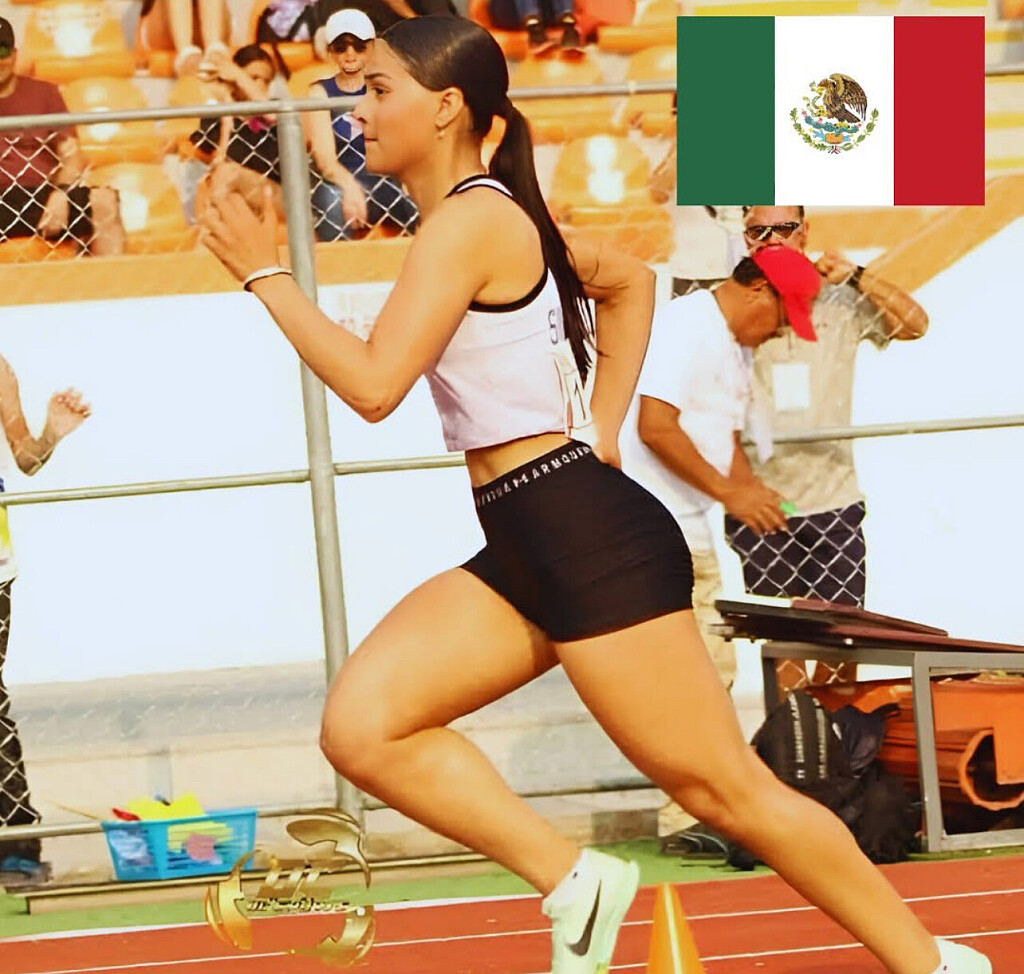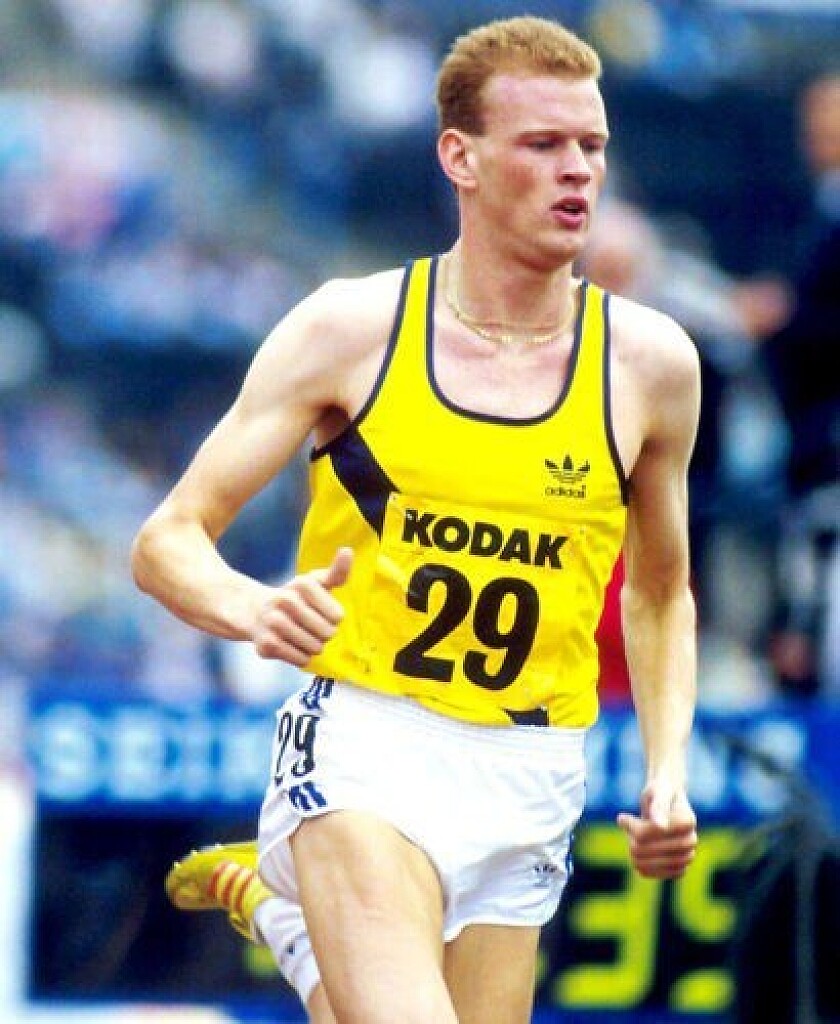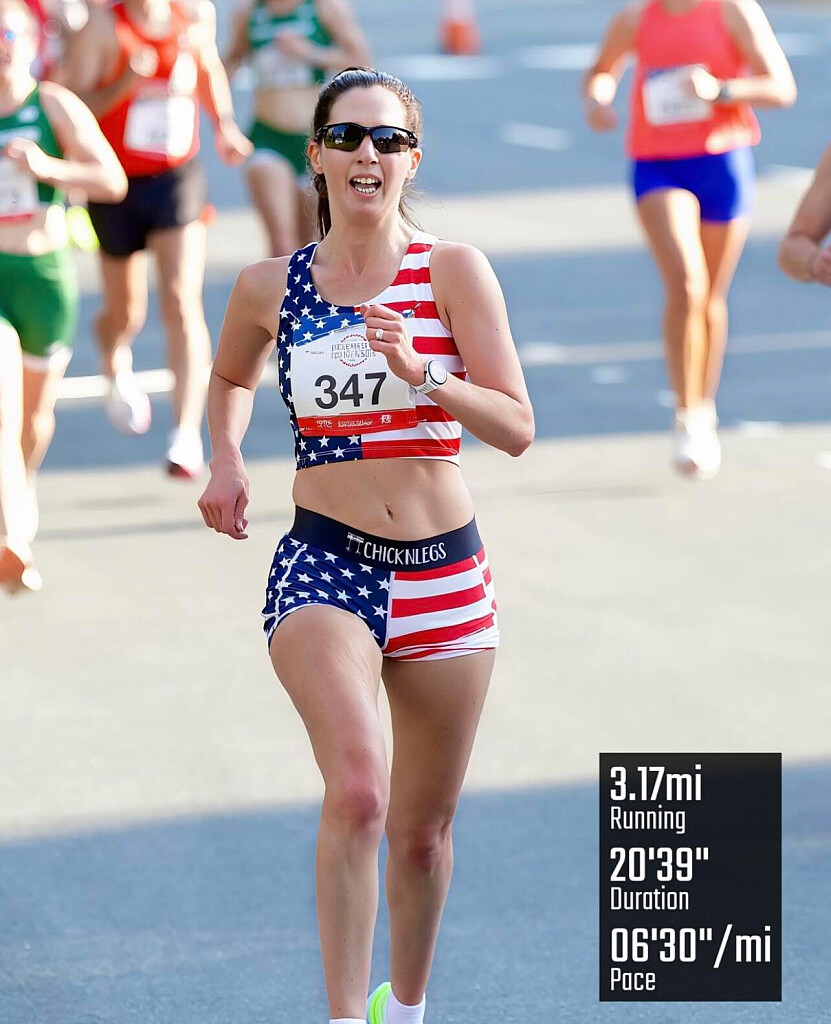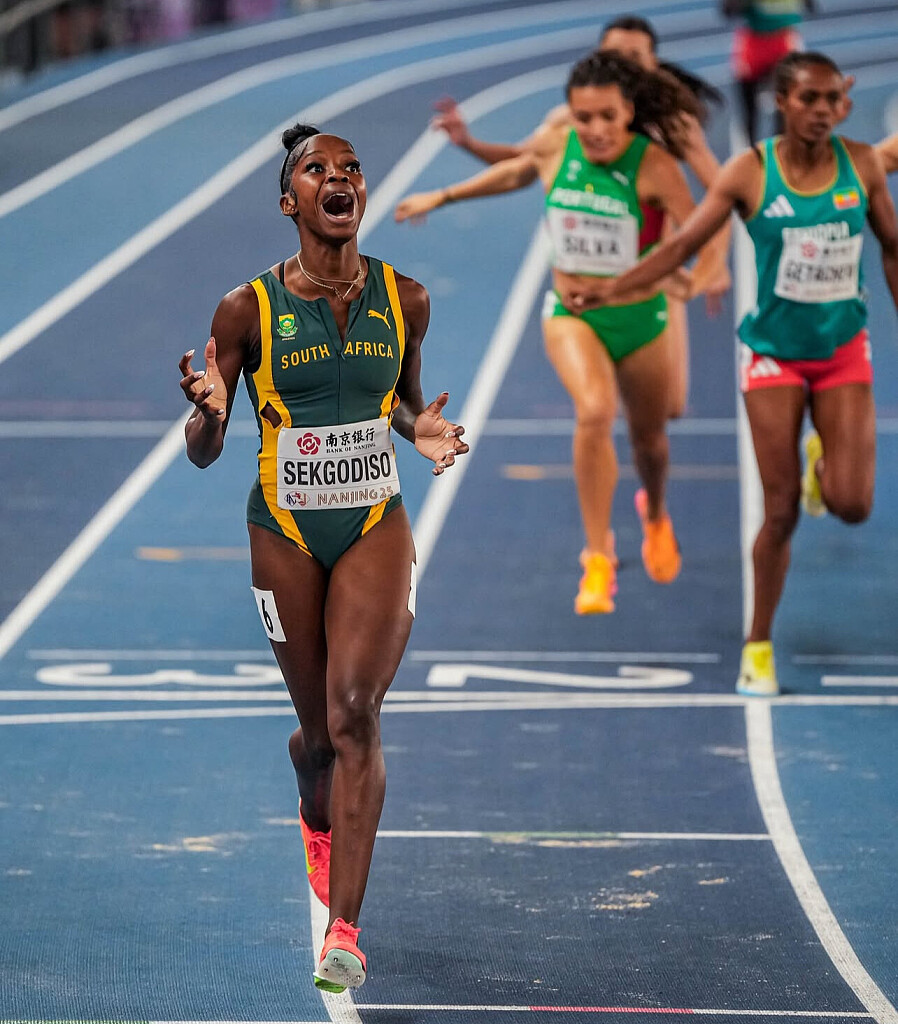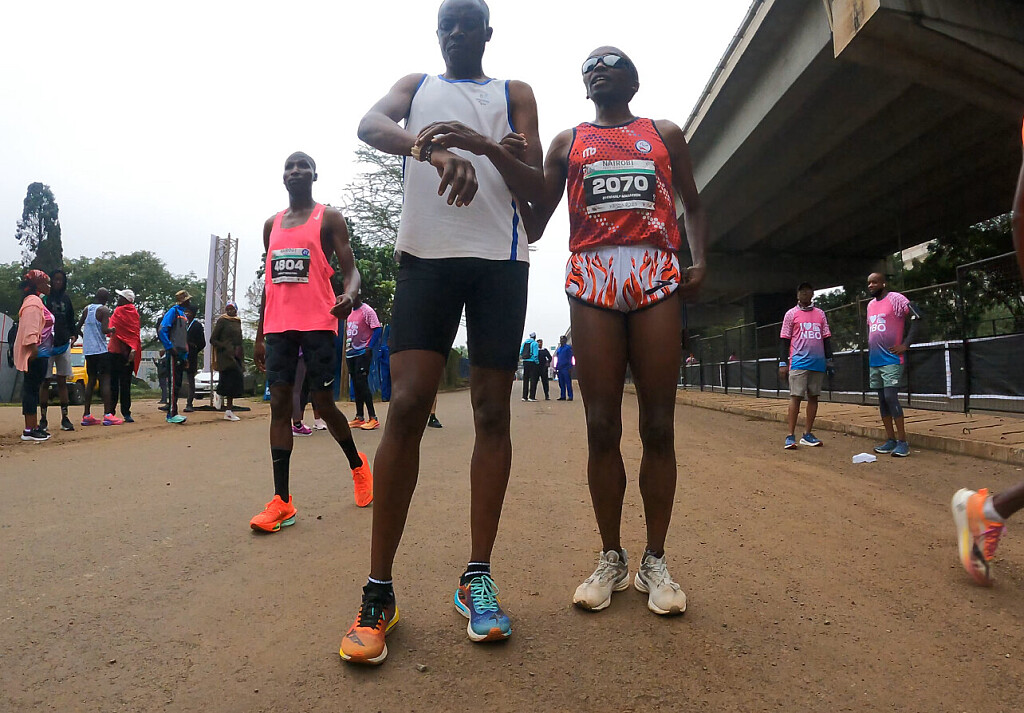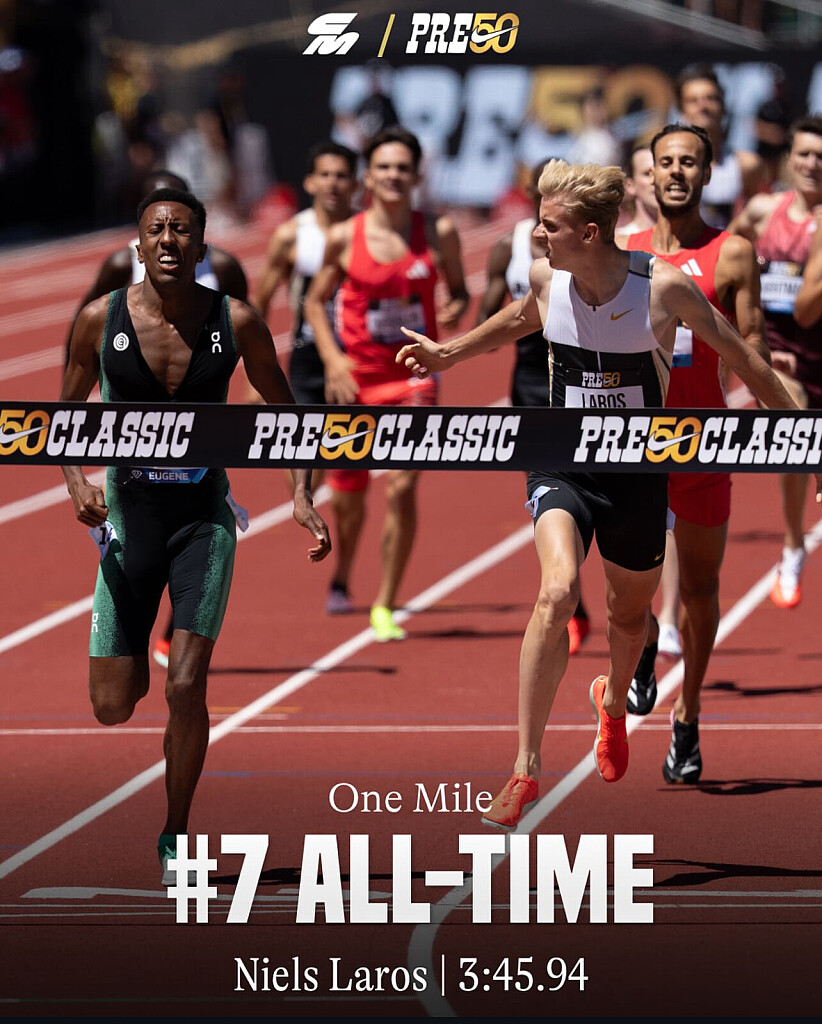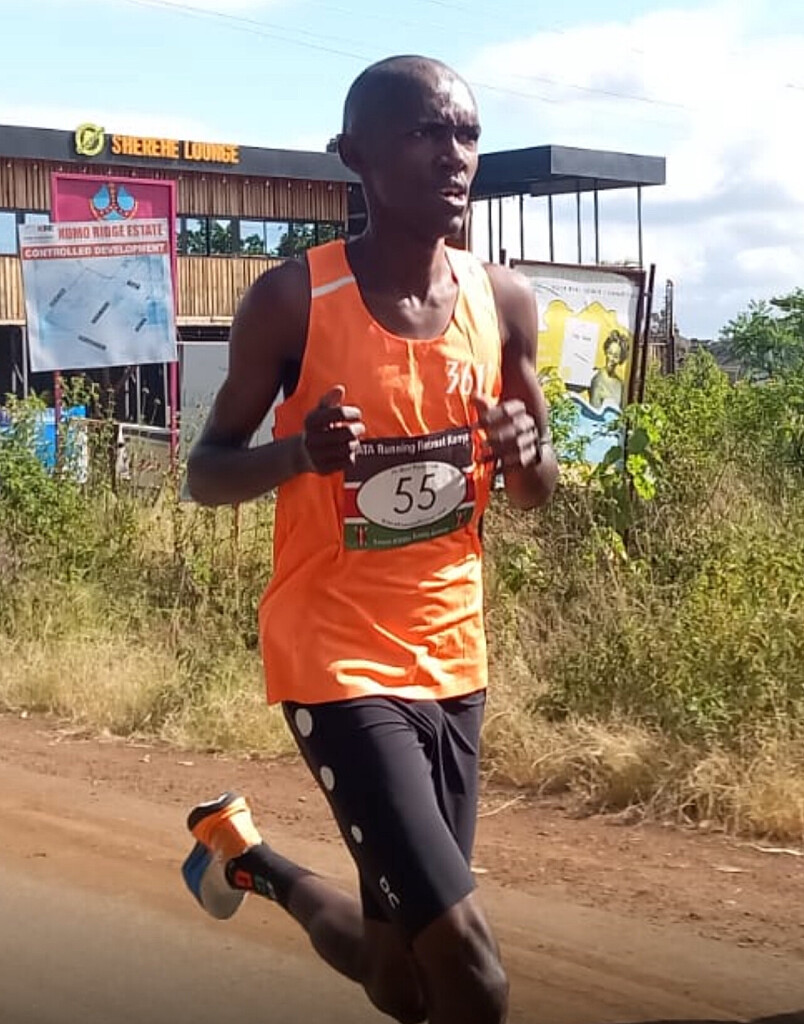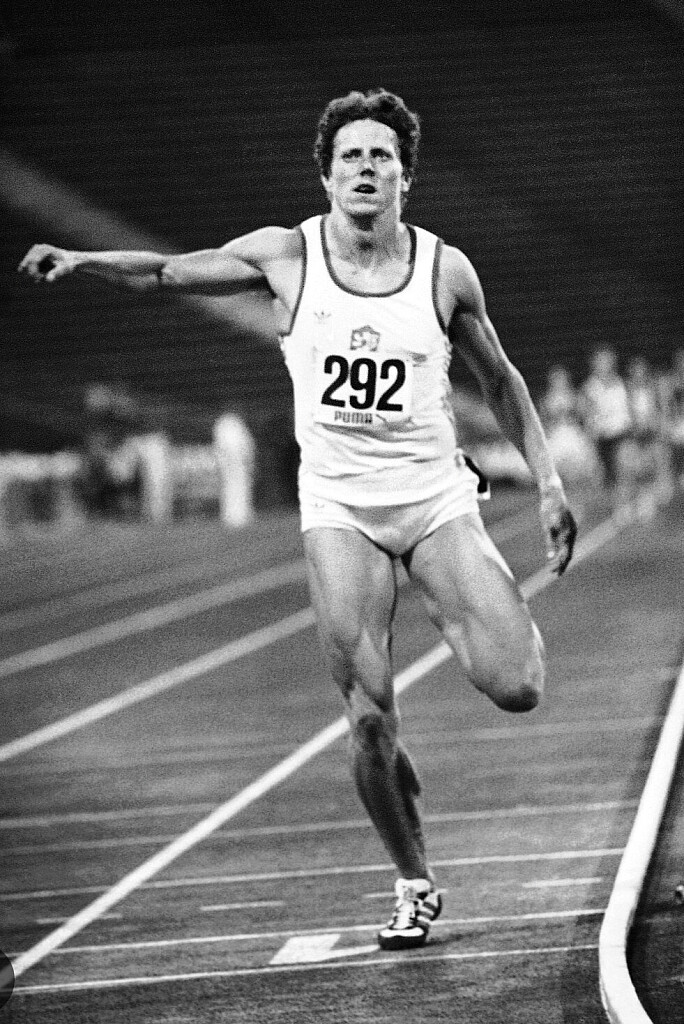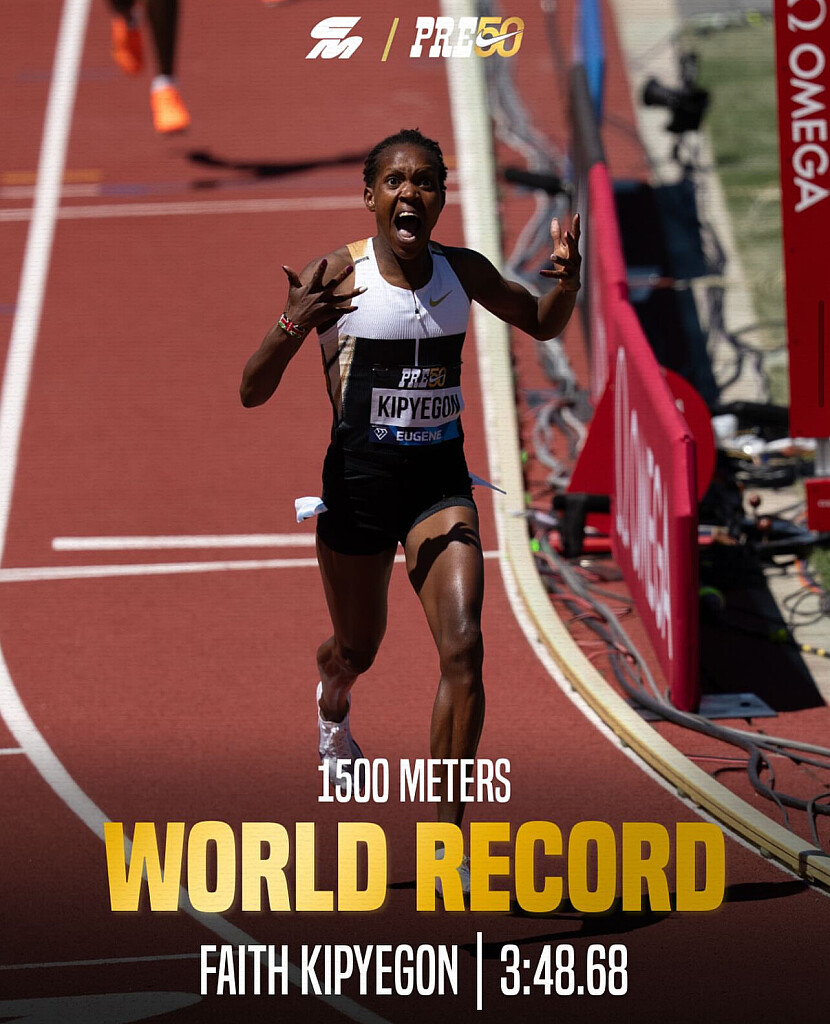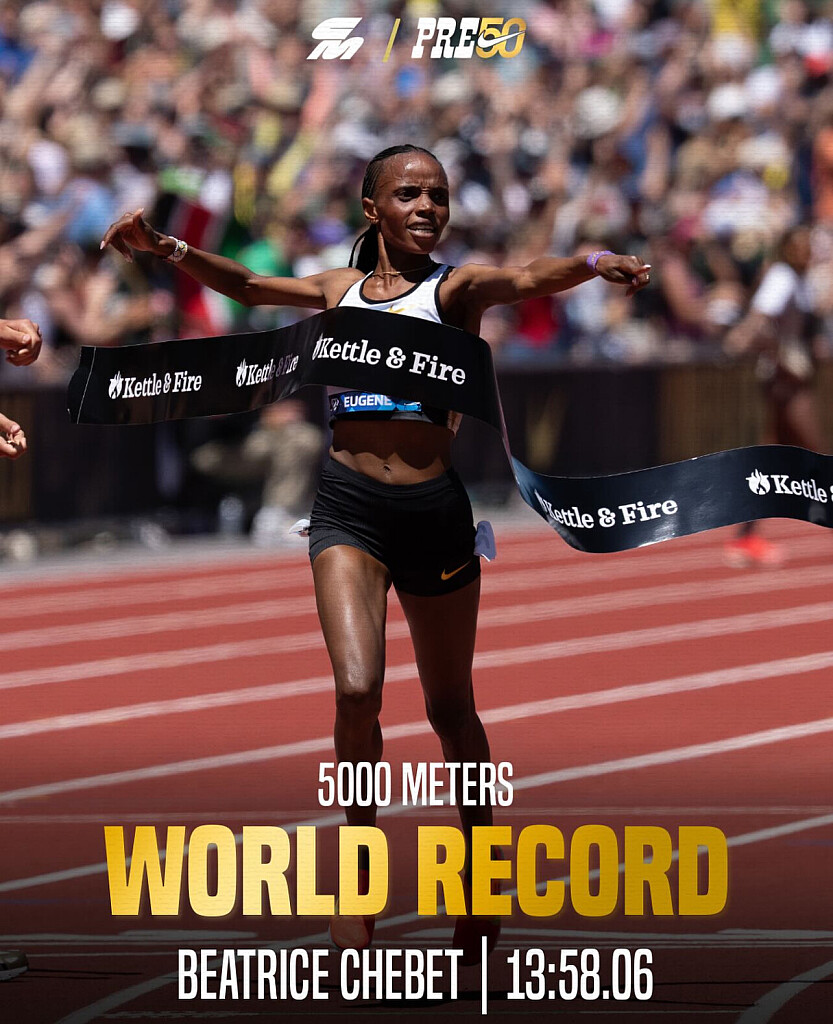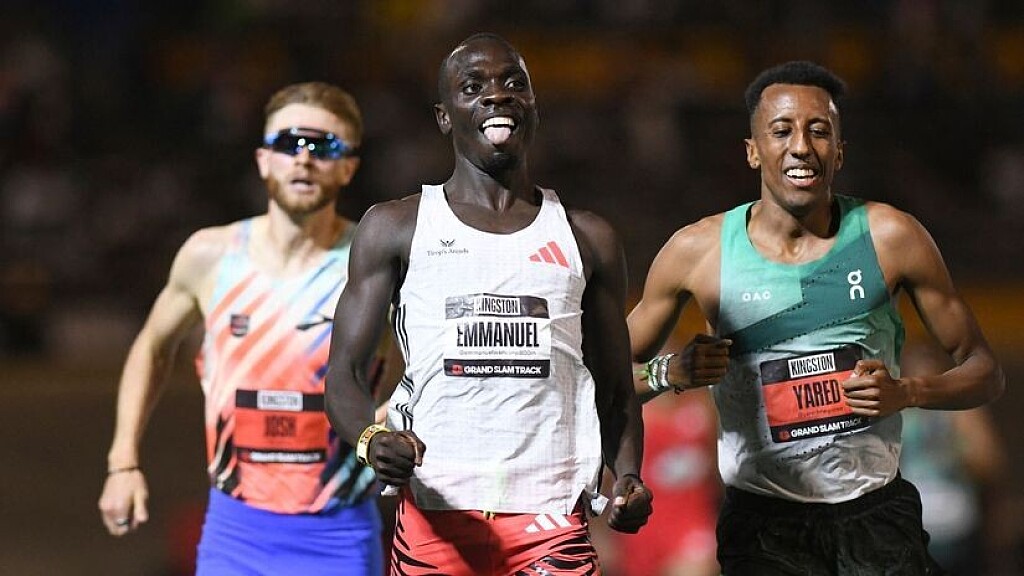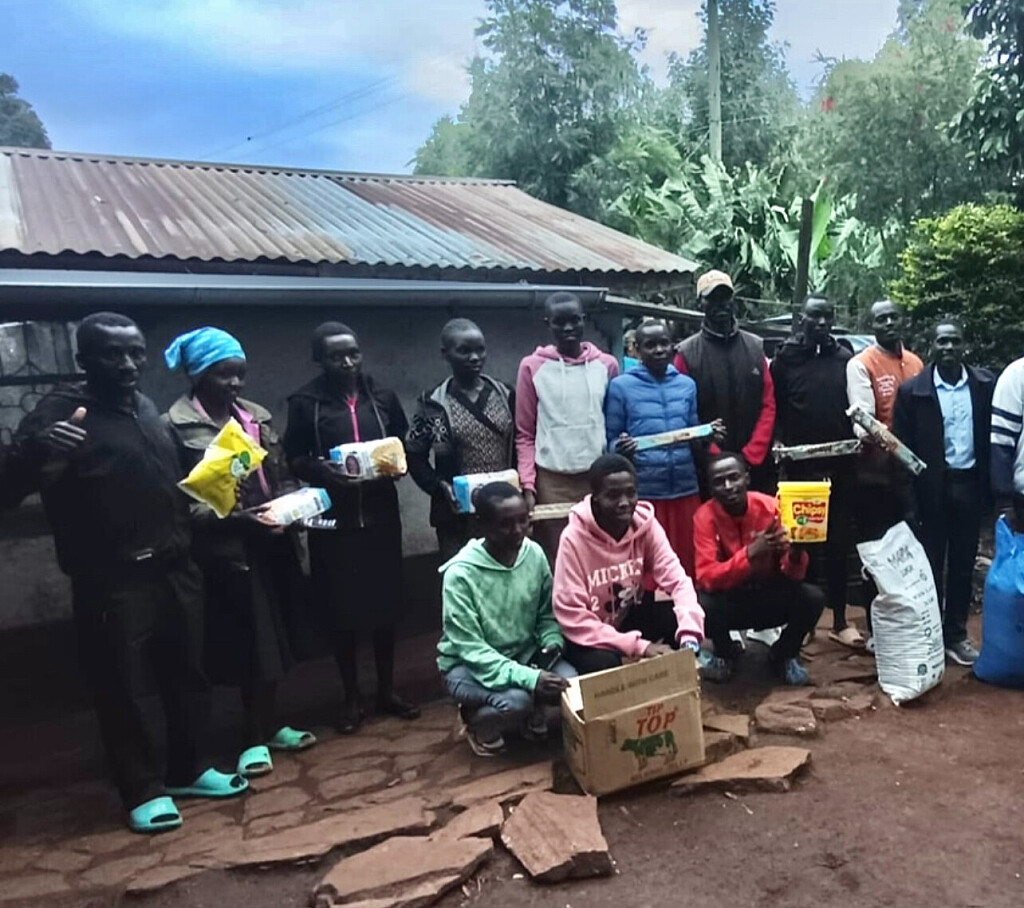Running News Daily
Running News Daily is edited by Bob Anderson. Send your news items to bob@mybestruns.com Advertising opportunities available. Train the Kenyan Way at KATA Kenya and Portugal owned and operated by Bob Anderson. Be sure to catch our movie A Long Run the movie KATA Running Camps and KATA Potato Farms - 31 now open in Kenya! https://kata.ke/
Index to Daily Posts · Sign Up For Updates · Run The World Feed
Doreen Waka Is Sprinting Toward History—If Kenya Will Let Her
At the 2025 Athletics Kenya Trials held at Nairobi’s Ulinzi Sports Complex, Doreen Waka blasted out of the blocks and powered through a stiff -2.0 m/s headwind, crossing the finish line in 12.02 seconds to win the women’s 100m final. The performance not only secured her a gold medal but also earned her a coveted spot on Team Kenya for the upcoming World Championships in Tokyo.
She defeated a talented field, including Loice Nyanchoka Morara (12.09), South Sudan’s Lucia William Moris (12.10), and Delisha Atyang (12.14), while veterans like Monica Safania and Eunice Kadogo did not start. But for Waka, the win was about more than medals. It marked a defining moment in a career built on resilience, sacrifice, and an unshakable belief in her sprinting potential.
Running Barefoot, Dreaming Without Limits

When Doreen takes to the track, what you see is explosive speed. What you don’t see are the barefoot years spent training on gravel roads, the financial struggles, or the countless setbacks that nearly derailed her dream.
Born on November 13, 1994, in Kiambu County, Doreen discovered her athletic talent in primary school. She ran the 400m in Standard Four but didn’t qualify for competition—she was too young. A perceptive teacher, however, encouraged her to shift focus to the 100m and 200m, a piece of advice that changed her life.
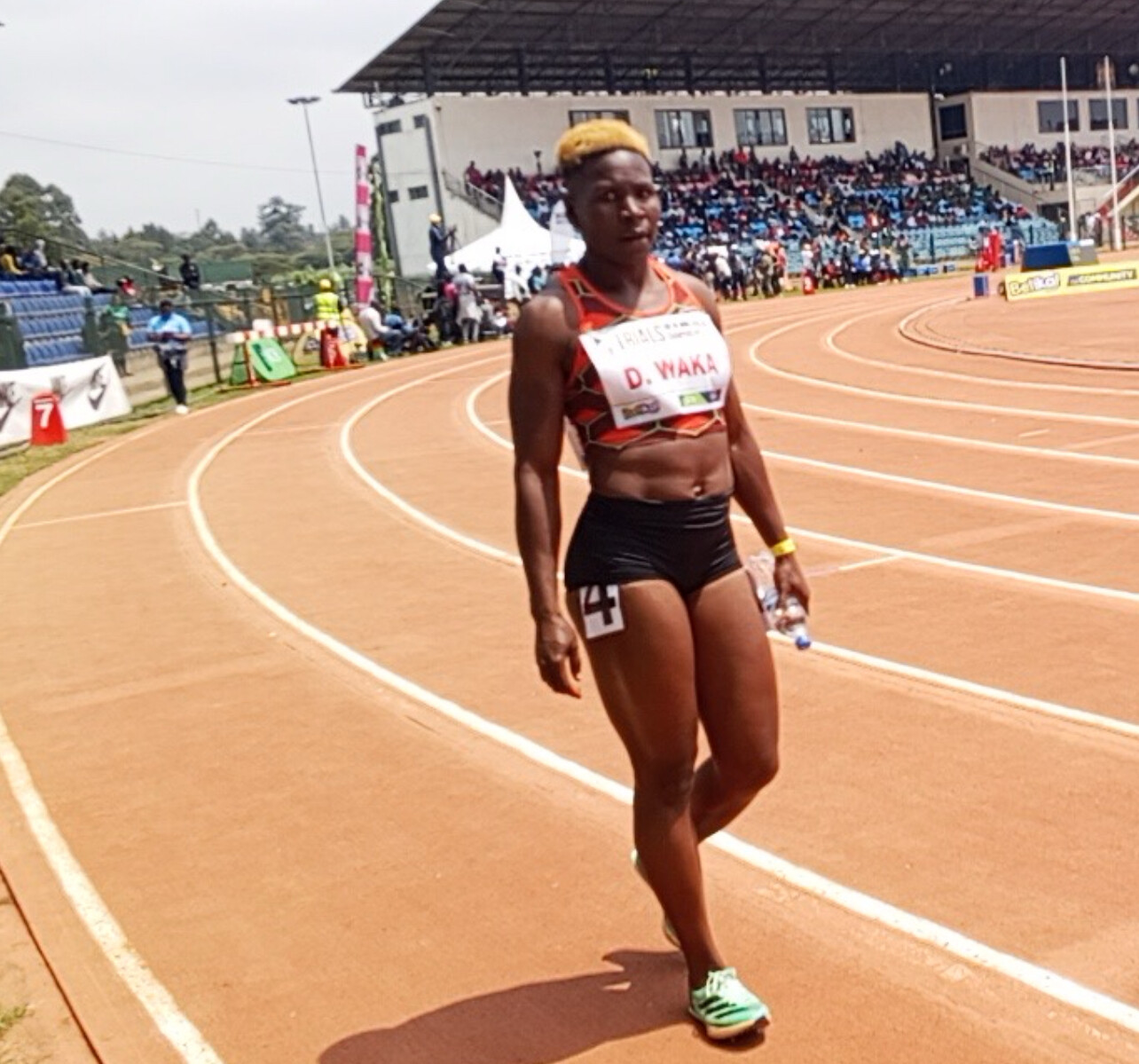
By Class Five, she had qualified for the national primary school championships in Nyahururu, placing 4th in the 100m and 3rd in the 200m. A year later, she won silver in the 100m at an East African schools meet in Kampala, Uganda.
Despite early success, life at home was difficult. Her family lacked the resources to support her athletics career. After finishing Class Eight, a well-wisher helped her join Brokhurst Senior School in Machakos County, where she again reached the national stage in Form Three. But in Form Four, she was barred from sports in order to focus on final exams—just when she needed exposure the most.
A Coach, a Believer, a Lifeline
In 2017, everything changed. Doreen met sprinter Kalewi Awange, who introduced her to Coach Julius Migwi (often called Coach Julious). At the time, she was living in Githurai, Nairobi, with her mother.
“When I told my mom I wanted to train, she hesitated,” Doreen recalls. “Coach Migwi had to come home and explain everything. Eventually, she gave me her blessing: ‘You’re the one who will help me.’”
Coach Julious remembers their first meeting clearly.
“She had no shoes. No passport. No real support. We took her in like family,” he says. “I’ve been acting as her parent ever since.”
Since then, Coach Julious has supported her with food, rent, transport, and training costs—often from his own pocket. Despite the challenges, Doreen has never wavered. Most days, she trains without proper spikes or access to a gym, using rough murram fields instead of tracks.
“If she had the facilities athletes in Botswana or South Africa have,” Julius says, “she’d already be running 10.9.”
A Boost from KATA—and a Call to Bob Anderson
Though resources remain limited, Doreen has received small but meaningful support from the Kenya Athletics Training Academy (KATA), founded by Bob Anderson, the American entrepreneur and lifelong runner who created Runner’s World magazine.
“KATA has helped in important ways,” says Julius. “Bob understands athlete development. Now we’re appealing to him directly: please consider supporting Doreen with gear, gym access, and small financial support so she can focus fully on her training.”
Doreen echoes the plea:
“I’m not looking for a shortcut. Just a chance. Bob, give me one international race, one opportunity—and I will make you and Kenya proud.”
Denied, But Never Defeated
Doreen’s path has been lined with near-misses and painful exclusions. In 2019, she qualified for the World Relays during trials in Iten—but couldn’t travel. She didn’t have a passport.
Later that year, during the COVID-19 lockdowns, she trained inside the grounds of Kamiti Prison, staying with a friend near the facility. Her perseverance finally paid off in 2021, when she represented Kenya in the 4x200m relay at the World Relays in Poland. She returned home and won the national 100m title.
Yet again in 2023, after qualifying for the African Championships in Ghana, she was left off the final team list.
“It didn’t kill my spirit,” she says. “This year I qualified again. But they didn’t take a women’s 4x100m team.”
A Voice for the Overlooked
Now 29, Doreen Waka is more than just a sprinter—she’s a voice for the many under-supported female sprinters across Kenya.
“Athletics Kenya should not conclude that Kenyan women can’t sprint. We just need the opportunity.”
Coach Julious adds:
“She’s already inspiring others. Hurdler Gladys Ngure, who ran 14.05 at nationals, joined our camp because of Doreen. These girls are training in KSh 50 gyms. Imagine what they could do with real support.”
A Camp Like No Other
In a bold move, Coach Julius recently established a KATA Running Camp and KATA Potato Farm, part of a larger initiative spearheaded by Bob Anderson, who has now launched 25 KATA camps across Kenya since May 25.
“I think my camp is the only running camp that exclusively trains sprinters in all of Kenya,” says Julius. "Thanks, Bob, for listening and helping Doreen go after her goals.”
This unique camp not only nurtures sprinters like Doreen but also provides food and economic support through potato farming, helping athletes stay focused on training while building a more stable future.
The Goal: Sub-11 and a Global Stage
Doreen Waka’s goal is clear: run 10.8 or 10.9 and place Kenyan women’s sprinting on the global map. With the right shoes, coaching, nutrition, and gym access, she believes it’s within reach.
“I believe in myself. I just need one solid chance.”
And with people like Coach Julius KATA, and Bob Anderson behind her, that chance may finally be coming.
Doreen Waka At a Glance
• Born: November 13, 1994 – Kiambu County, Kenya
• 2024 Trials: 1st in 100m (12.02s, -2.0 m/s headwind)
• International Debut: 2021 World Relays, Poland (4x200m)
• Coach: Julius Migwi
• Goal: Sub-11 in 100m and a global podium finish
• Camp: KATA Running Camp for Sprinters – the only sprint-exclusive KATA camp in Kenya
(07/22/2025) ⚡AMPby Robert Kibet
From Karate to 27:00: Zachariah Kirika’s Rise from Village Fighter to Road Racing Star
On a misty July morning in Nairobi, as thousands of runners pounded the city’s tarmac in the 10km race at the Nairobi City Marathon, one name quietly cut through the noise — Zachariah Kirika, 24, who stormed to a third-place finish in 27:00 flat.
But for Kirika, this wasn’t just a race. It was the culmination of years marked by struggle, sacrifice, and a relentless pursuit of purpose — a journey that began not on the running track, but in a quiet Kenyan village and later, in the disciplined world of karate.
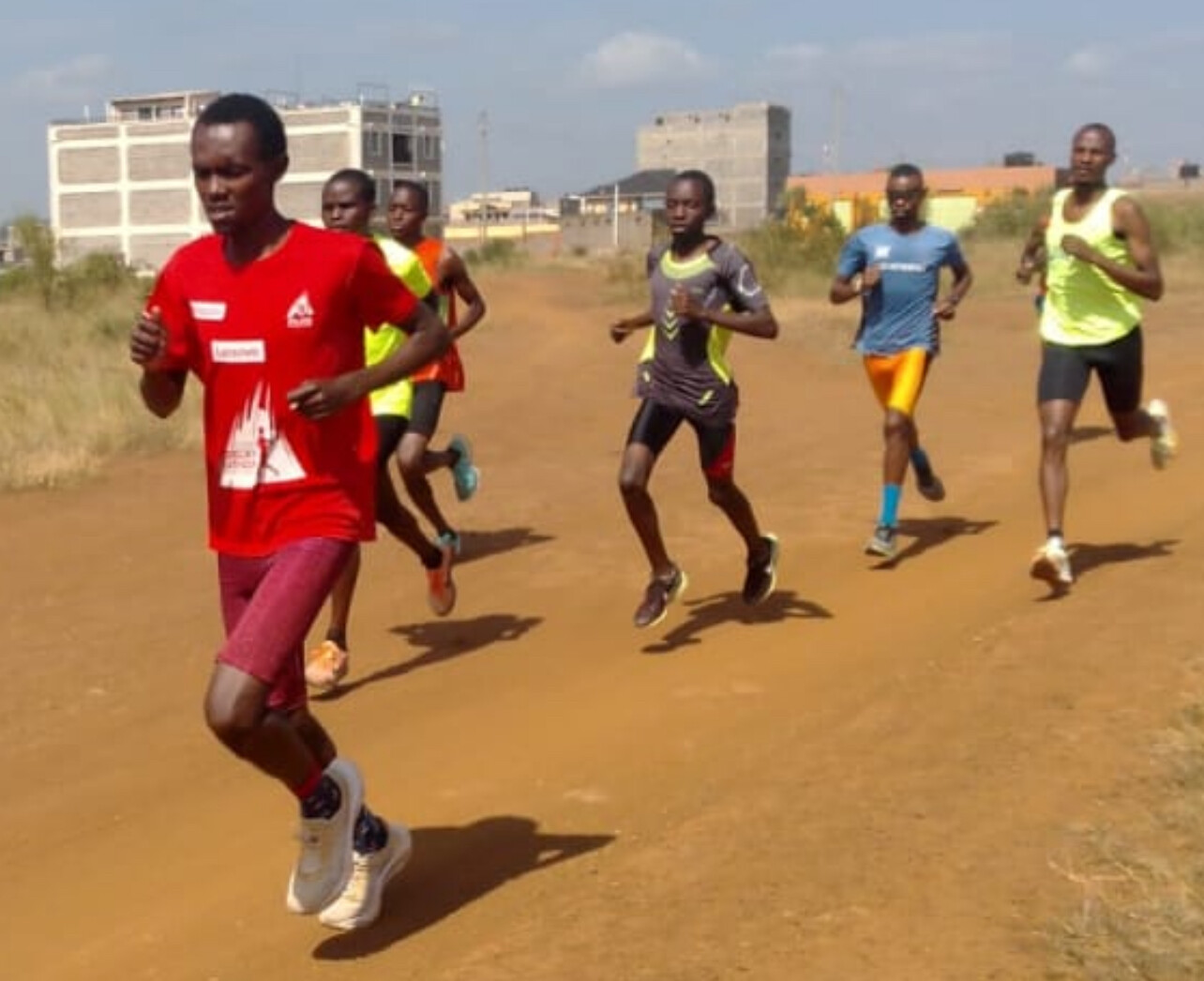
“I was born in Muthara village, a quiet place in Murang’a County,” Kirika says, now seated at the Kenya Athletics Training Academy (KATA) in Thika, where he trains. “We didn’t have much, but my parents gave me everything they could.”
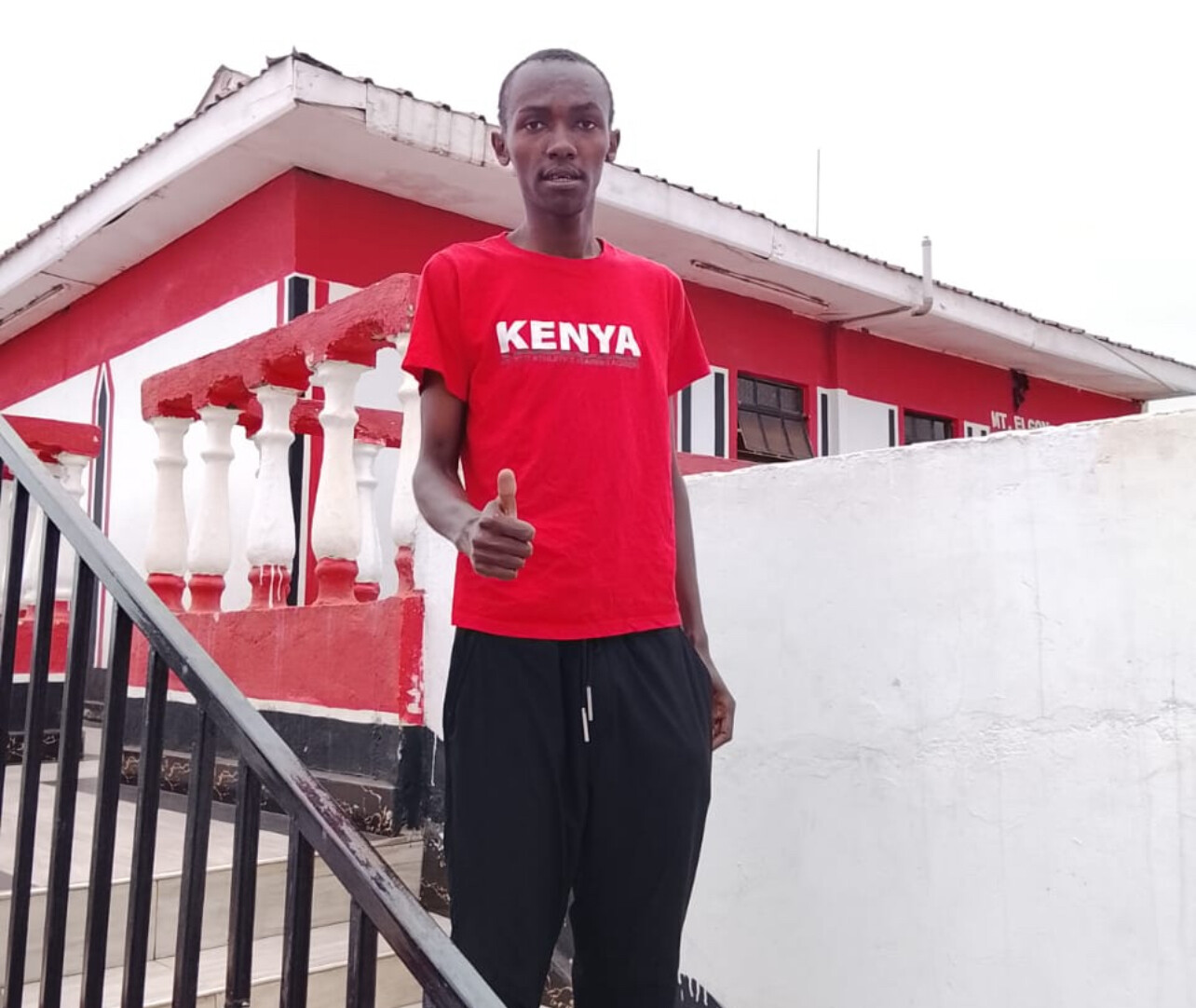
Karate Roots and Early Responsibility
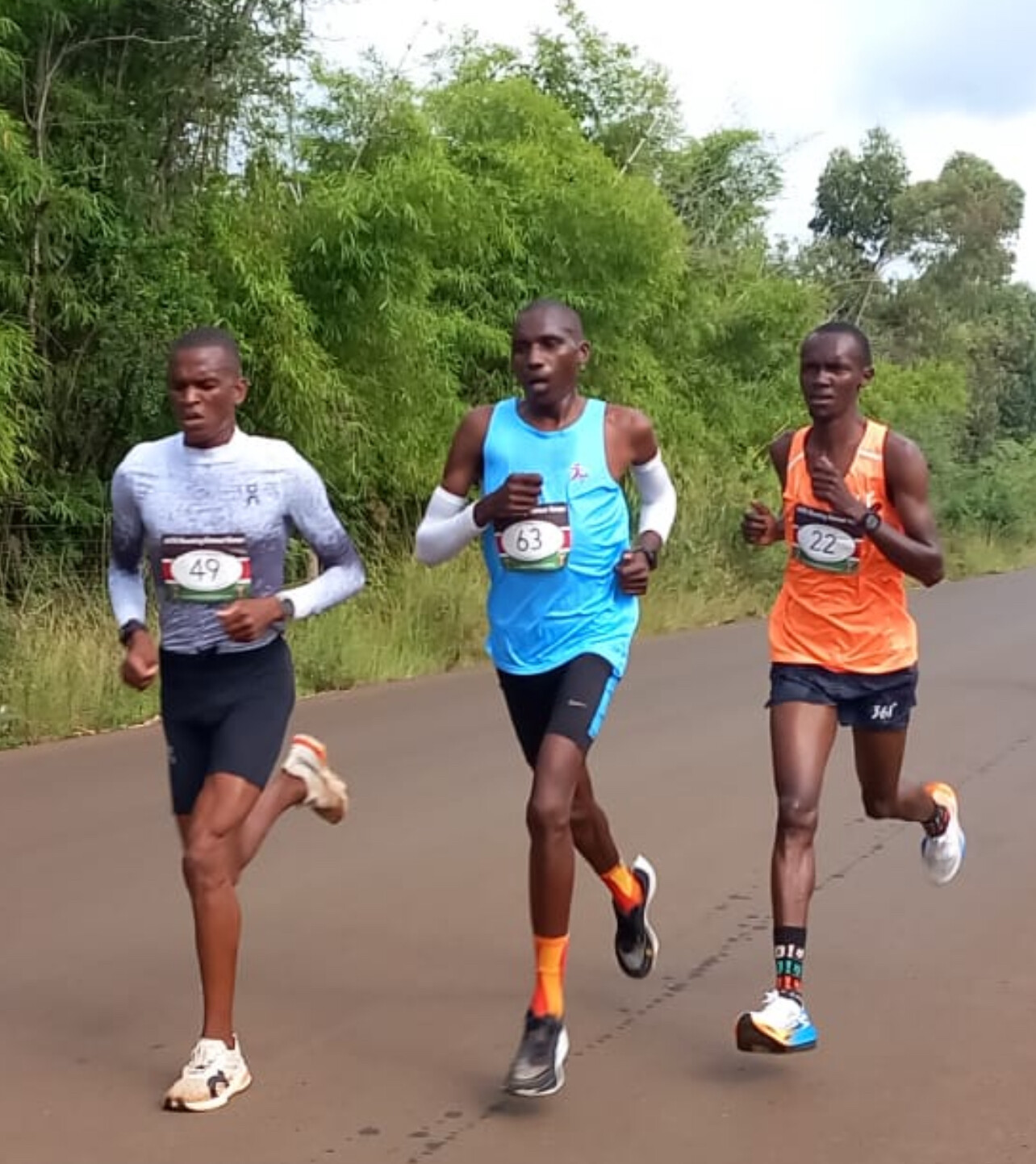
As the eldest child in a modest family — his father a carpenter and his mother a homemaker — Kirika learned discipline early. When he wasn’t helping on the farm or tending goats, he was dreaming beyond the hills of Murang’a.
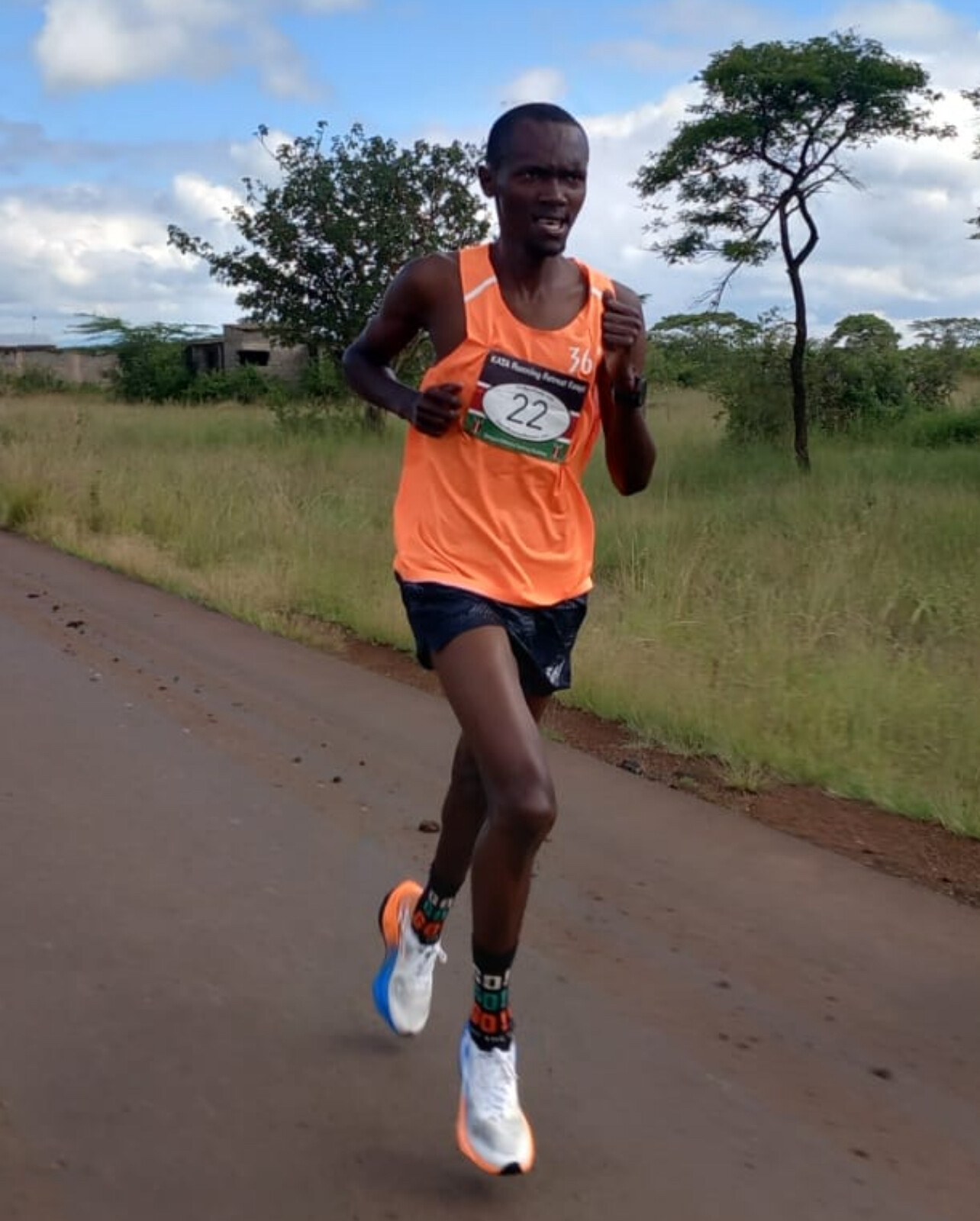
That dream took shape through karate, of all things.
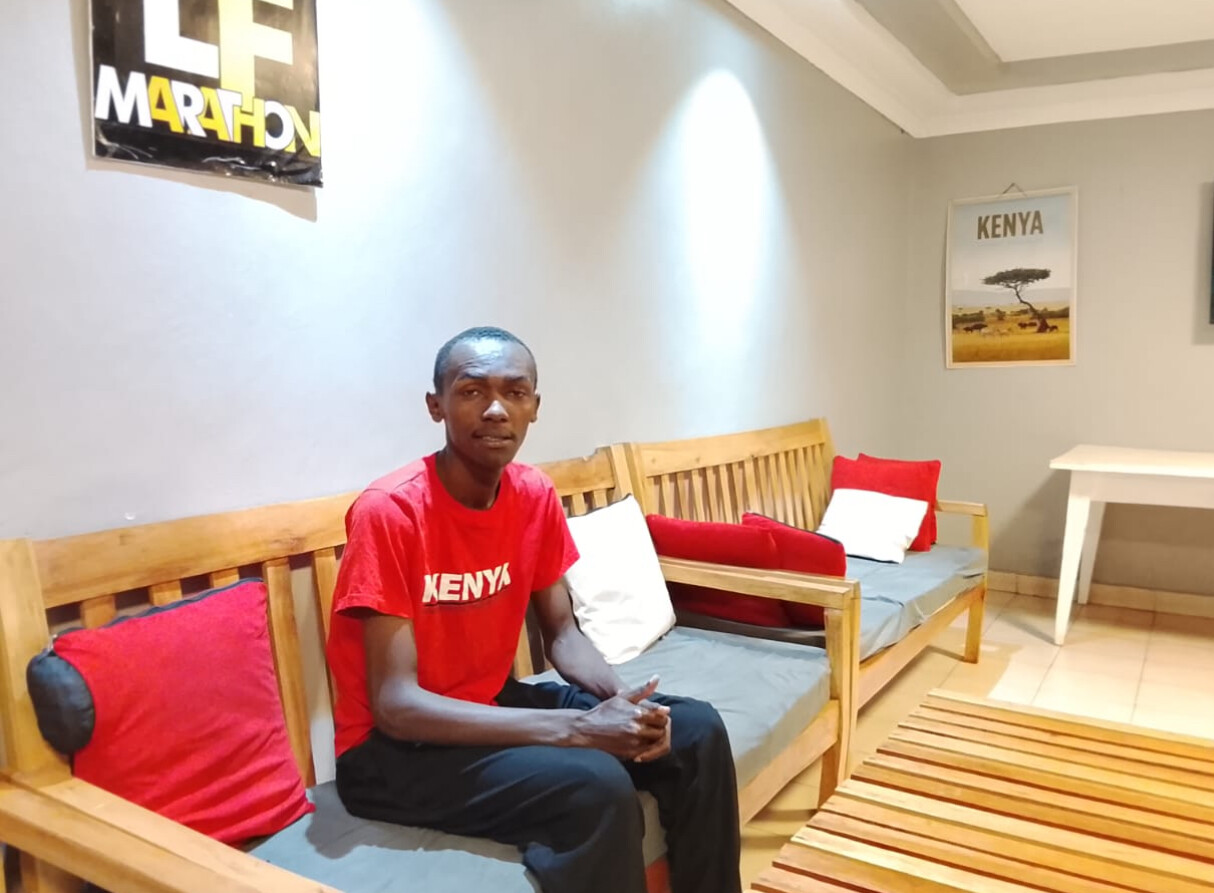
“At around 13, I started following a group of boys training in Maraba. They had no dojo, no gear — just heart. I joined them, and I trained every day, barefoot sometimes. Karate taught me control, focus, and resilience.”
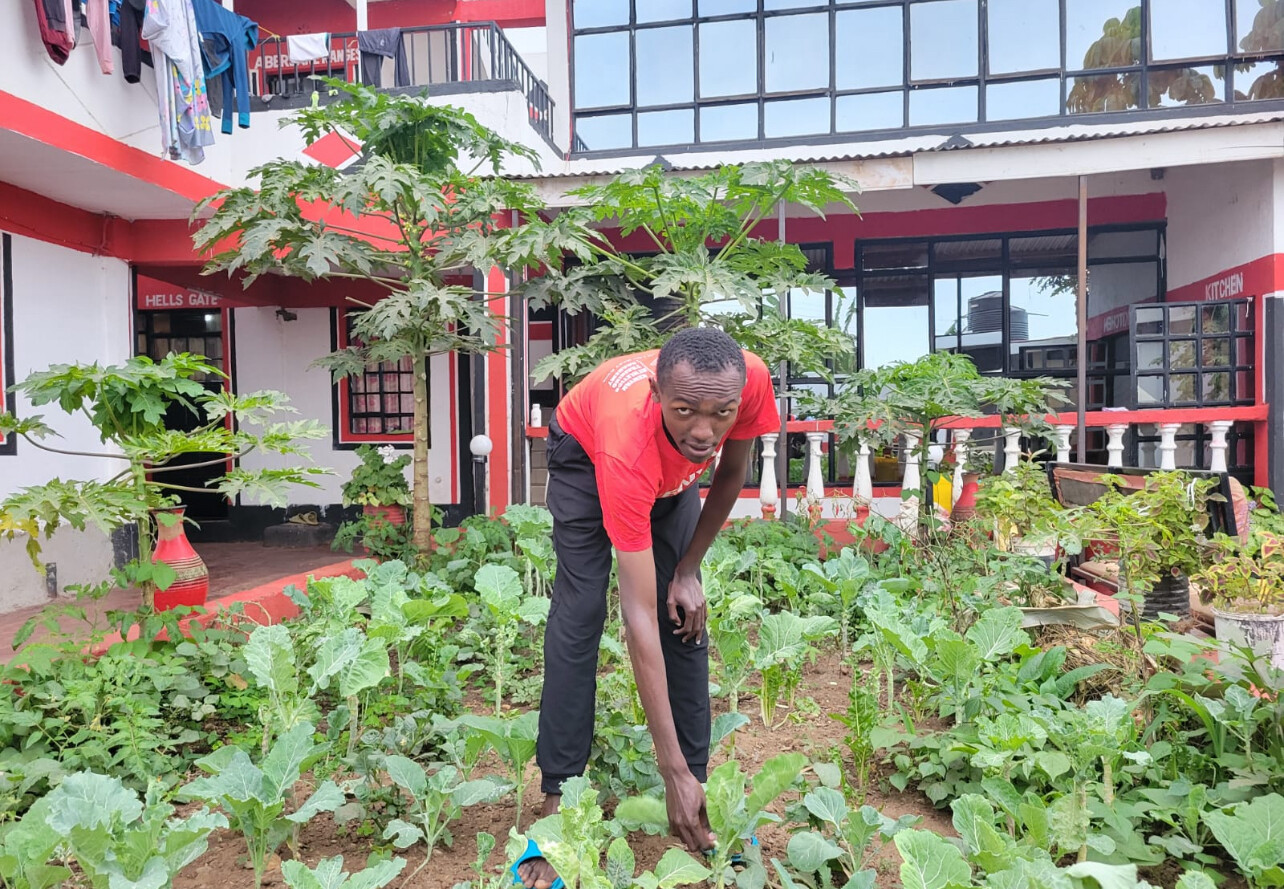
He carried that mindset through high school, juggling academics, martial arts, and odd jobs to support his family. By 2020, after finishing school, college wasn’t an option. He needed something more — something that could change his life.
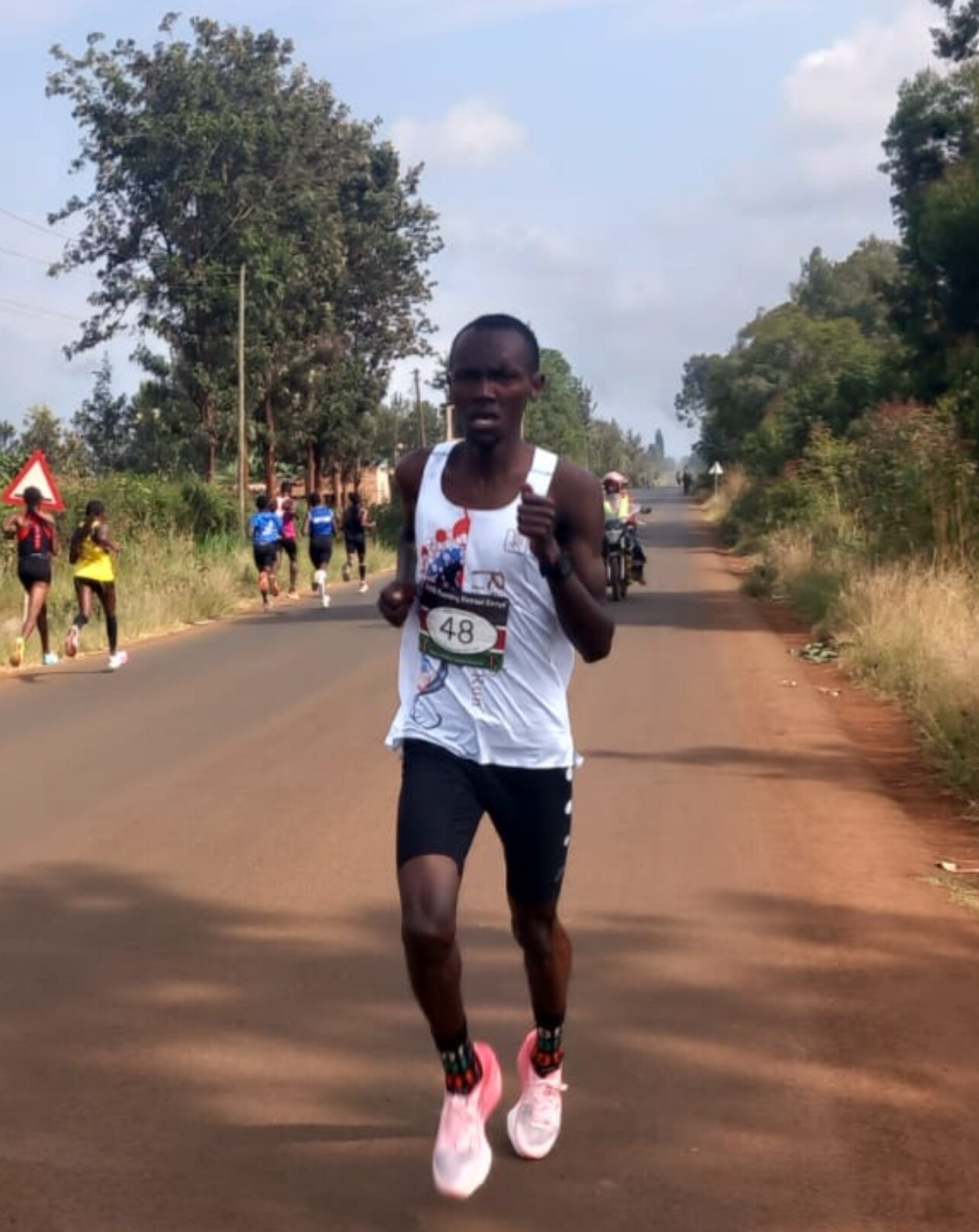
A New Path: Running
Initially, running was just fitness for karate. But a spontaneous entry into a local 5K fun run changed everything.
“I finished in the top 10 and people started telling me, ‘You have potential.’ That was the first time I saw a new path.”
The transition wasn’t easy. Kirika trained alone, without coaching or proper nutrition. But then came a life-changing opportunity: a spot at KATA, the training academy founded by American running pioneer Bob Anderson.
“KATA gave me structure, food, housing — but most importantly, belief.”
At KATA, Kirika began serious training under experienced coaches. He swapped kata routines for hill repeats, and sparring for speedwork. It wasn’t long before his times began to drop.
Nairobi Breakthrough
By early 2025, he had built momentum through smaller races, gaining confidence and sharpening his speed. But the Nairobi City Marathon 10K would be his biggest test yet.
“I was nervous, but I kept telling myself — just hold on.”
He did more than that. He surged with the lead pack, stayed composed through the rolling course, and finished third overall in 27:00, his first official sub-28 performance.
“That race changed everything,” he says. “It proved that you don’t need fancy gear or a big name to compete. You just need heart, and a team that believes in you.”
What Comes Next
Kirika now has his sights set on the half marathon, and eventually, the full 42.2 km. The KATA team is already working with him on long-run preparation, nutrition, and mental strategy for the next phase of his career.
“I know this is just the beginning,” he says with a quiet fire. “There’s still a long way to go.”
Still humble, still grounded, Kirika hasn’t forgotten his roots.
“Tell my parents I’m doing something meaningful. Tell them thank you. And tell them I haven’t forgotten where I came from.”
A Star on the Rise
As the sun sets over Thika’s training trails, Zachariah Kirika laces up his shoes. Behind him lies the path of a barefoot boy who once threw punches in dusty lanes. Ahead of him lies a road filled with potential, podiums, and purpose.
In a country bursting with undiscovered talent, Kirika’s story is a powerful reminder: with discipline, support, and belief, even the most unlikely runners can rise to greatness.
All photos were taken in and around KATA in Thika where Kirika lives, eat, train and works around the place. The racing photos were taken at KATA's monthly time trial.
(07/22/2025) ⚡AMPby Robert Kibet
Medina Eisa Triumphs in London with 14:30.57 Finish in the Women’s 5000m
On a charged evening in London, Ethiopia’s Medina Eisa delivered a masterclass in finishing speed, surging down the final stretch to win the women’s 5000 meters in a blazing time of 14:30.57.
The 19-year-old phenom held her composure as the field tightened in the closing laps, then made a decisive move with 200 meters to go—leaving no doubt about who owned the night. It was a hard-fought victory, with fellow Ethiopian Fantaye Belayneh pressing closely behind to take second in 14:30.90, while Australia’s Rose Davies closed strong for third in 14:31.45.
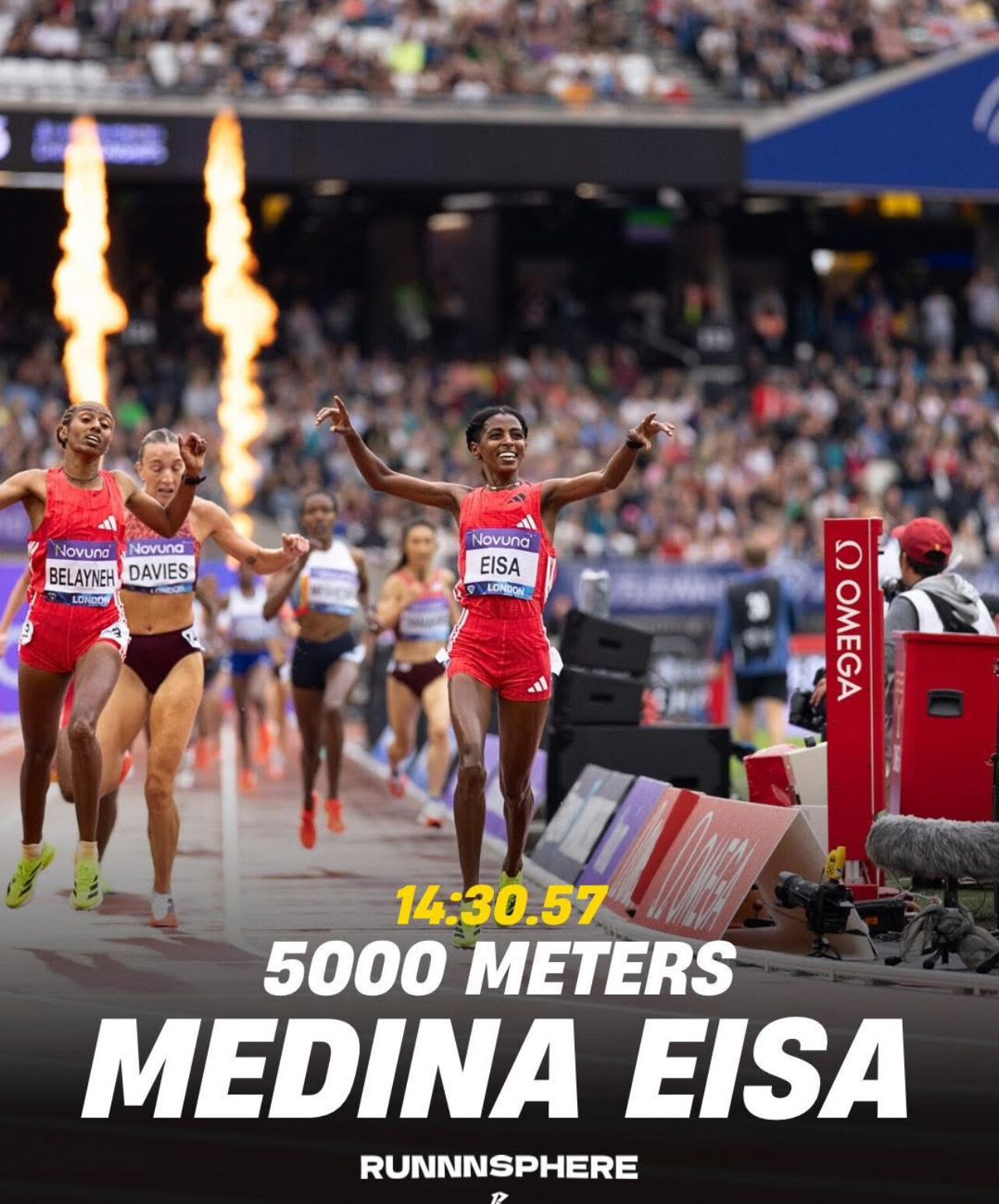
With this performance, Eisa not only claimed a major Diamond League victory but also cemented her status as one of the brightest young stars in distance running. Her time ranks among the fastest in the world this season and signals her as a major contender heading into next year’s global championships.
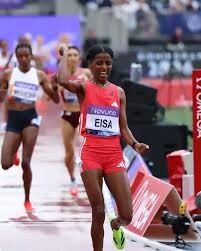
Top 3 – Women’s 5000m (London 2025)

Medina Eisa (ETH) — 14:30.57

Fantaye Belayneh (ETH) — 14:30.90
Rose Davies (AUS) — 14:31.45
For Eisa, this victory wasn’t just about the clock—it was about control, confidence, and kicking power. As the lights dimmed over the London Stadium, one thing became clear: the future of the 5000m is blazing brightly in Ethiopian colors.
(07/21/2025) ⚡AMPby Boris Baron
This Isn’t a Story About a Runner — It’s About a Man Who Walked the World
In a world where we celebrate marathons, ultramarathons, and world records, one man has quietly redefined the limits of human endurance—not with speed, but with sheer, relentless determination.
Karl Bushby, a British former paratrooper, has spent the past 27 years walking an unbroken path around the globe. His feat isn’t measured in finish lines or medals, but in every step he’s taken without shortcuts, without flying, and without giving up. This is not a story about a runner—it’s the story of a man who set out to walk the world and never looked back.
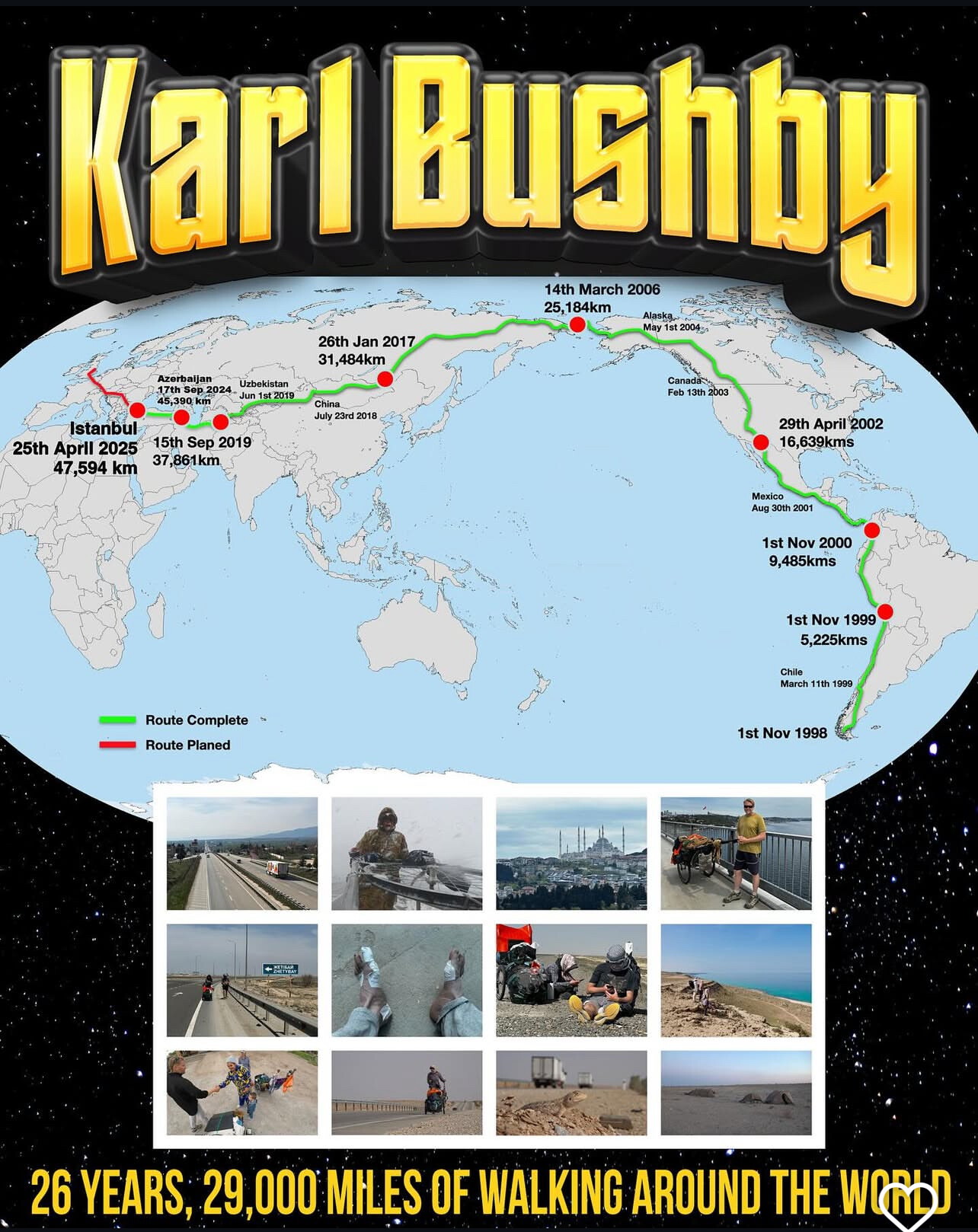
In 1998, Karl left Punta Arenas, Chile, on foot with one goal: return home to Hull, England under his own power. What began as a wild dream has become one of the greatest adventures in human history—the Goliath Expedition.
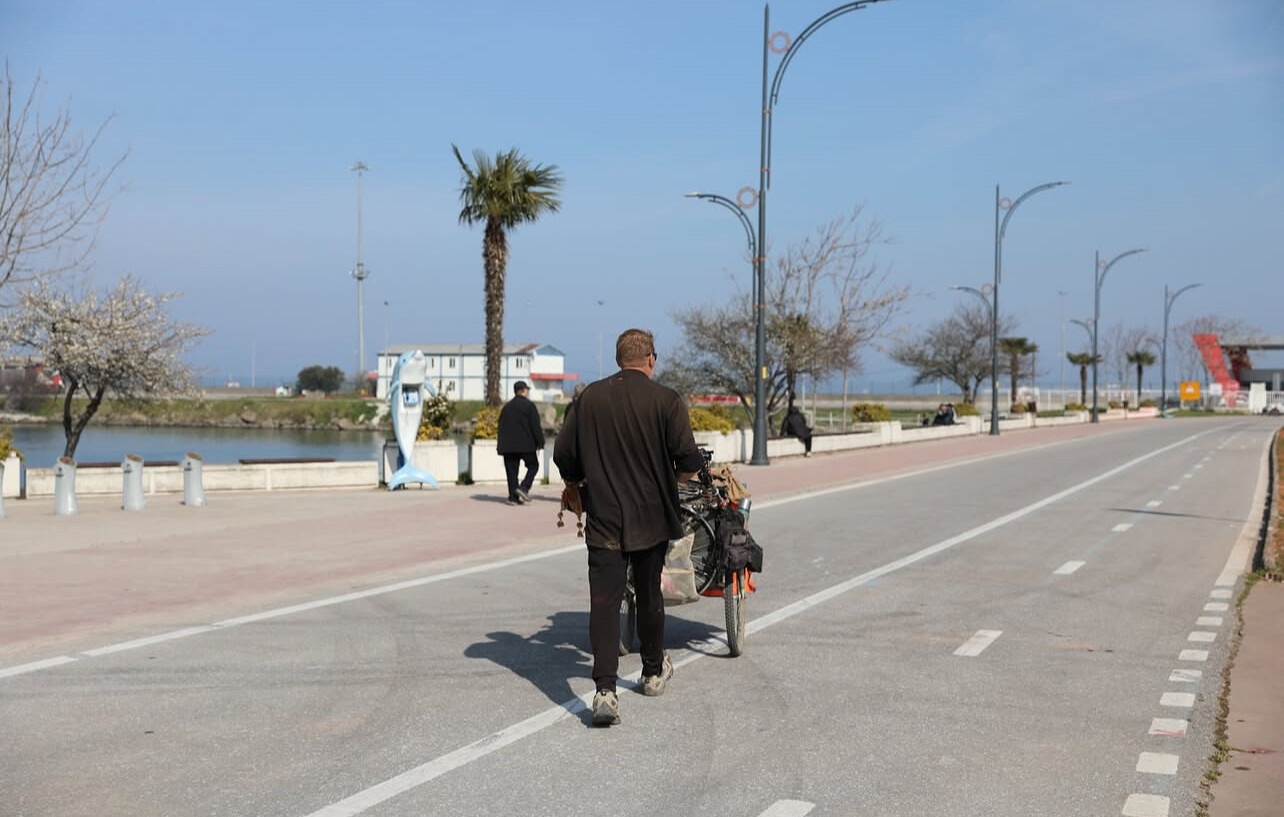
Today, Bushby has walked over 47,000 kilometers (about 29,200 miles) across 25 countries, enduring landscapes and trials that would stop most in their tracks. He has crossed the deadly Darién Gap, walked the frozen Bering Strait from Russia to Alaska, swum the Caspian Sea, and navigated the crushing bureaucracy of closed borders. He’s been detained, deported, threatened, and tested beyond reason.
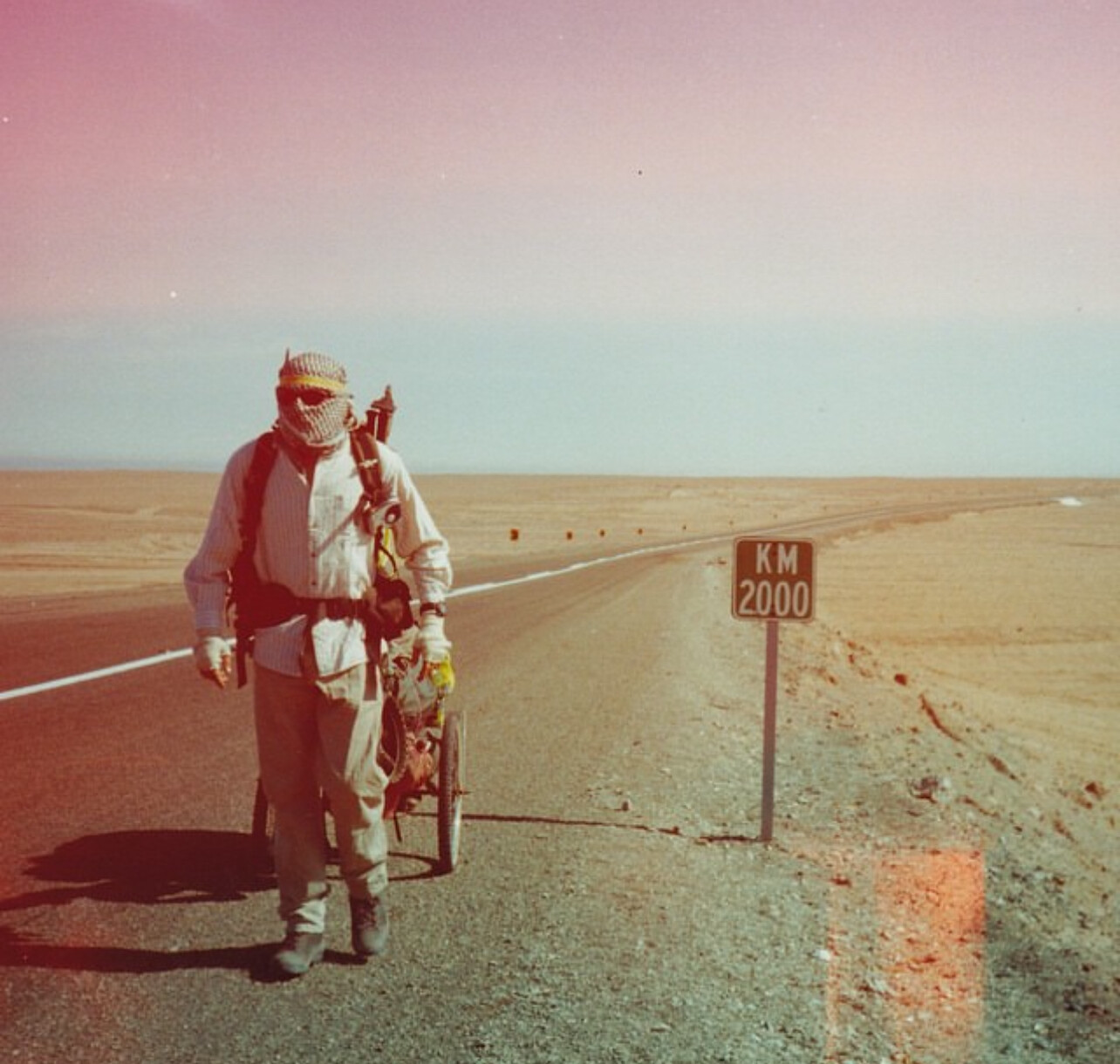
Through every setback—political, physical, or personal—Karl has honored a simple promise: never fly, never quit, never cheat.

As he approaches the final leg of his odyssey with a projected finish in 2026, Karl Bushby stands as a modern icon of perseverance. His footsteps are a tribute to human resilience, curiosity, and the belief that the world is still worth exploring—one step at a time.
(07/21/2025) ⚡AMPby Boris Baron
Sinclaire Johnson Breaks American Mile Record with 4:16.32 at London Diamond League
London, July 19, 2025 – In a race that lit up the track with historic speed, Sinclaire Johnson delivered a breakthrough performance, setting a new American and North American record in the mile with a time of 4:16.32 at the London Diamond League.
Johnson finished fourth overall in a blazing-fast women’s mile, one of the deepest in history, but her mark carved out a place in the record books. She broke the previous American record of 4:16.35 set by Nikki Hiltz in 2023—improving it by just three hundredths of a second.
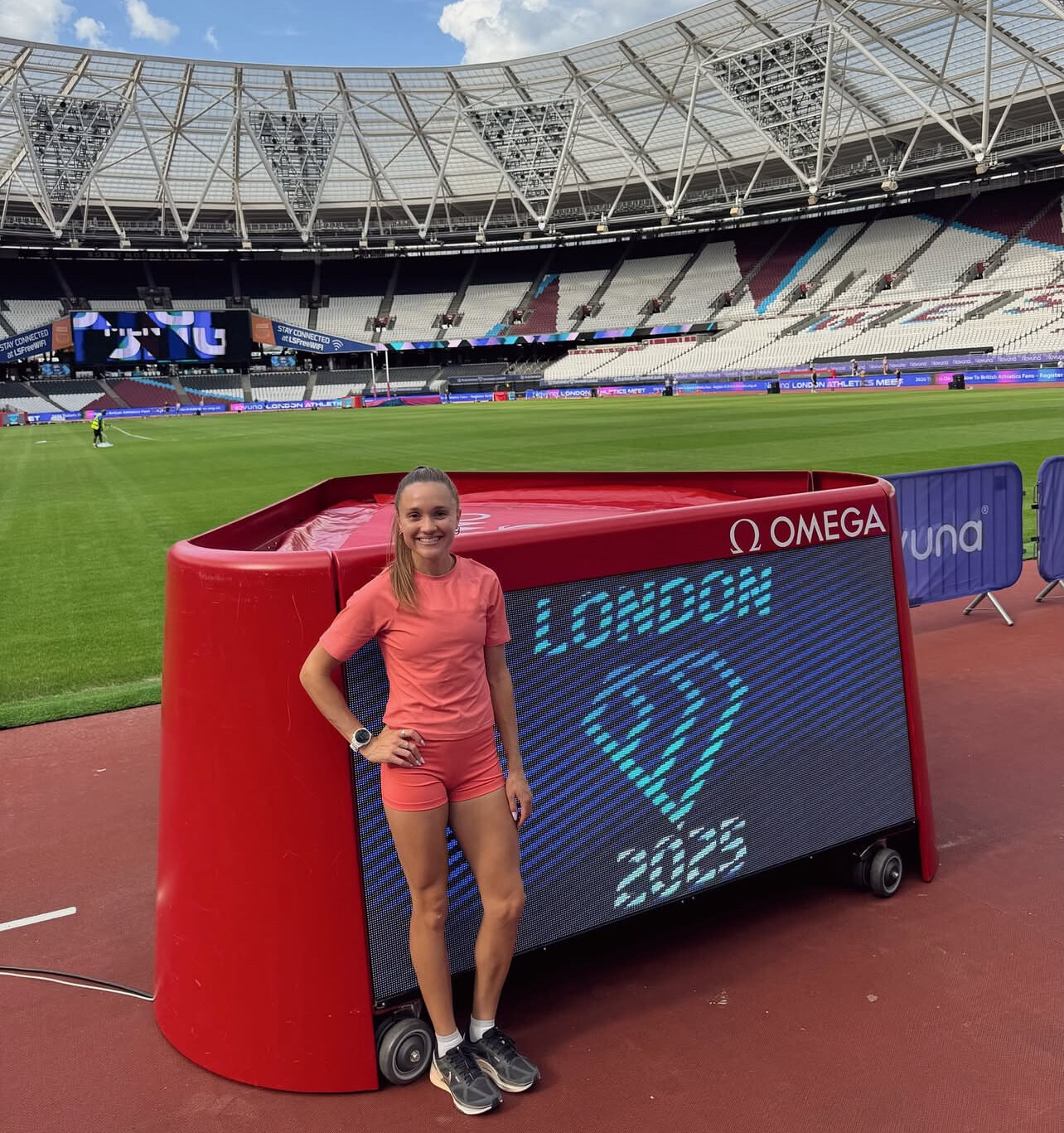
“It was a race where everything clicked,” Johnson said afterward. “I knew the field would be fast, and I just focused on hanging on and staying composed.”
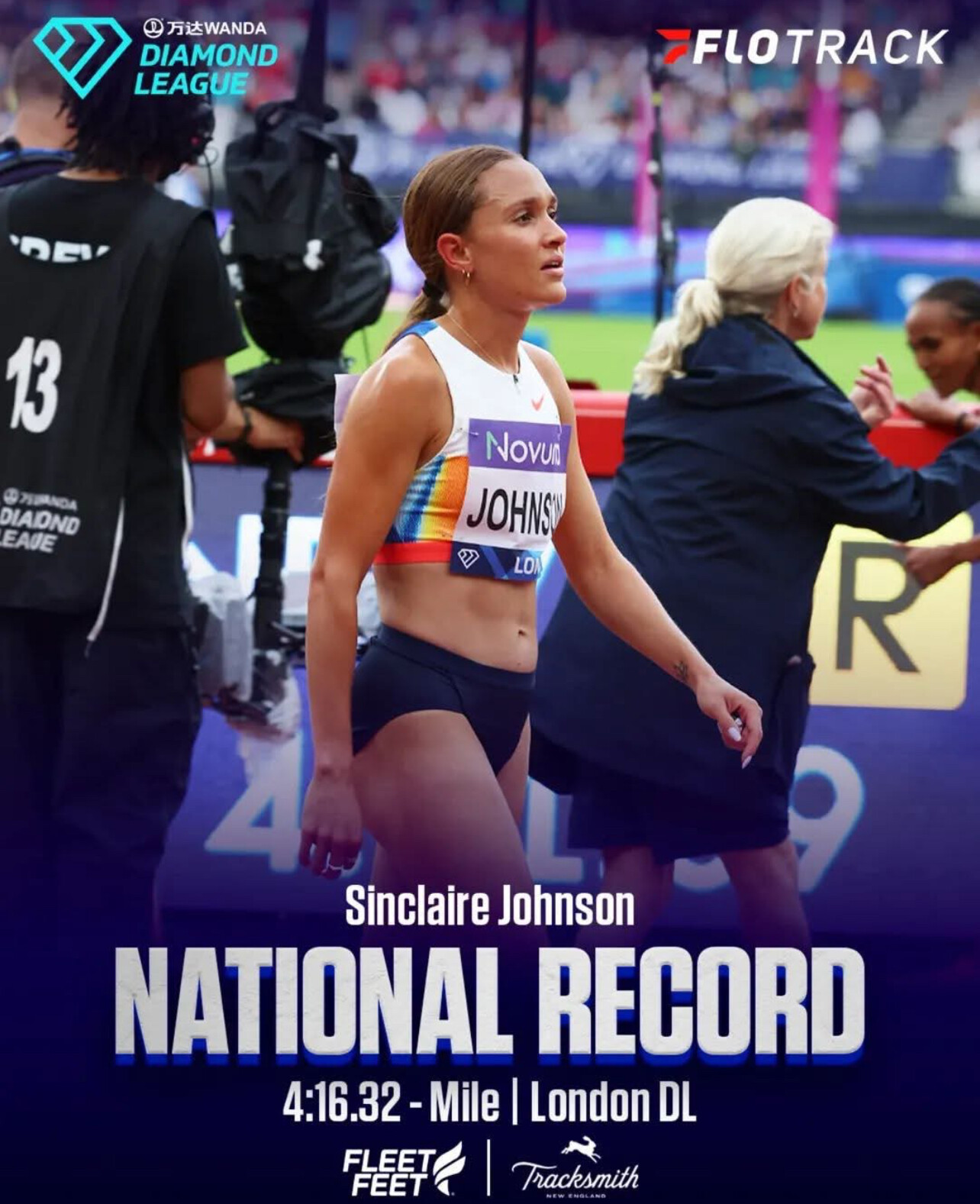
The field was stacked with some of the world’s most elite, and the pace was relentless from the gun. While the win went to Faith Kipyegon, who once again demonstrated why she’s one of the greatest milers of all time, Johnson’s run signaled that American middle-distance running is thriving on the global stage.
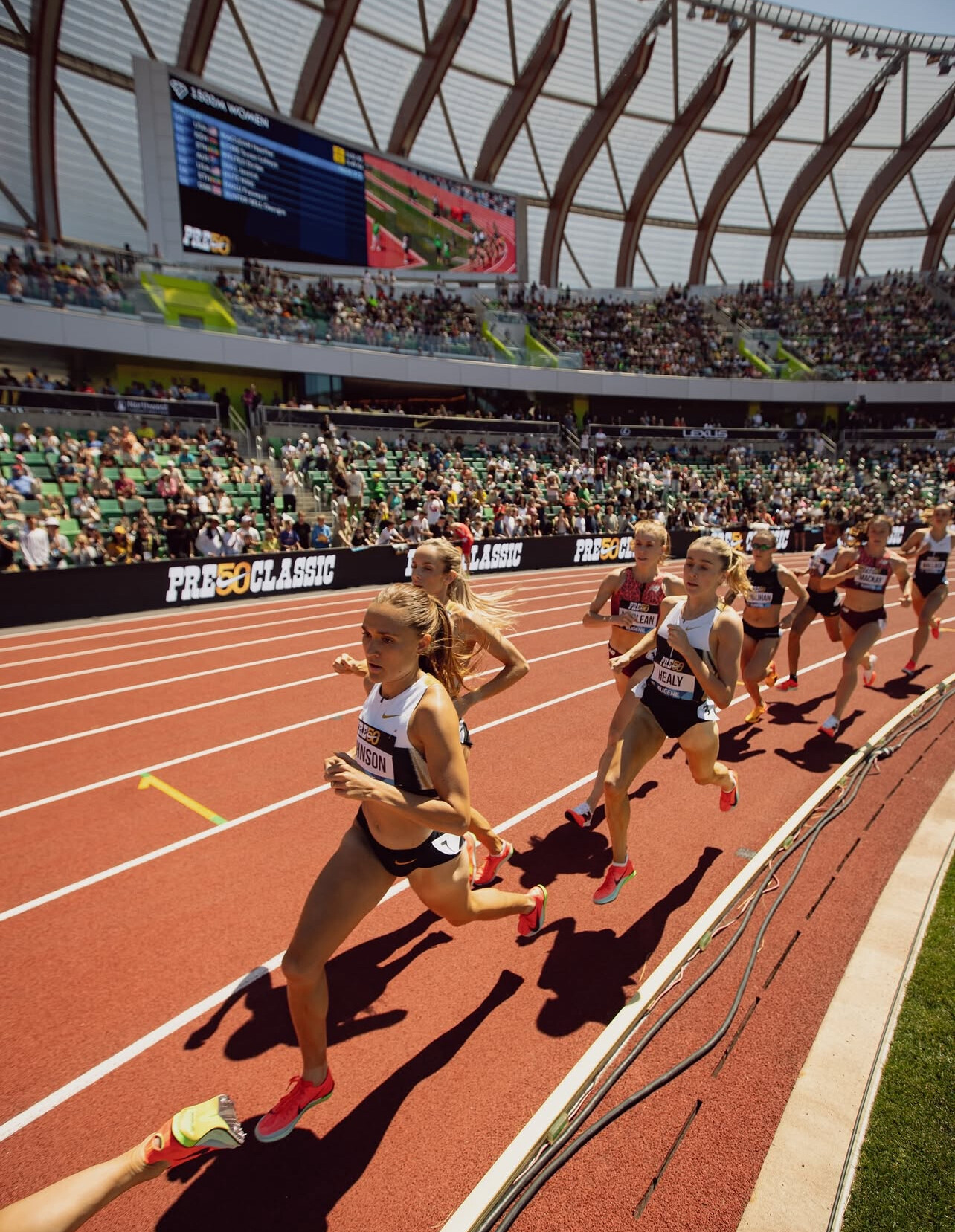
This wasn’t just a personal best—it was a statement.
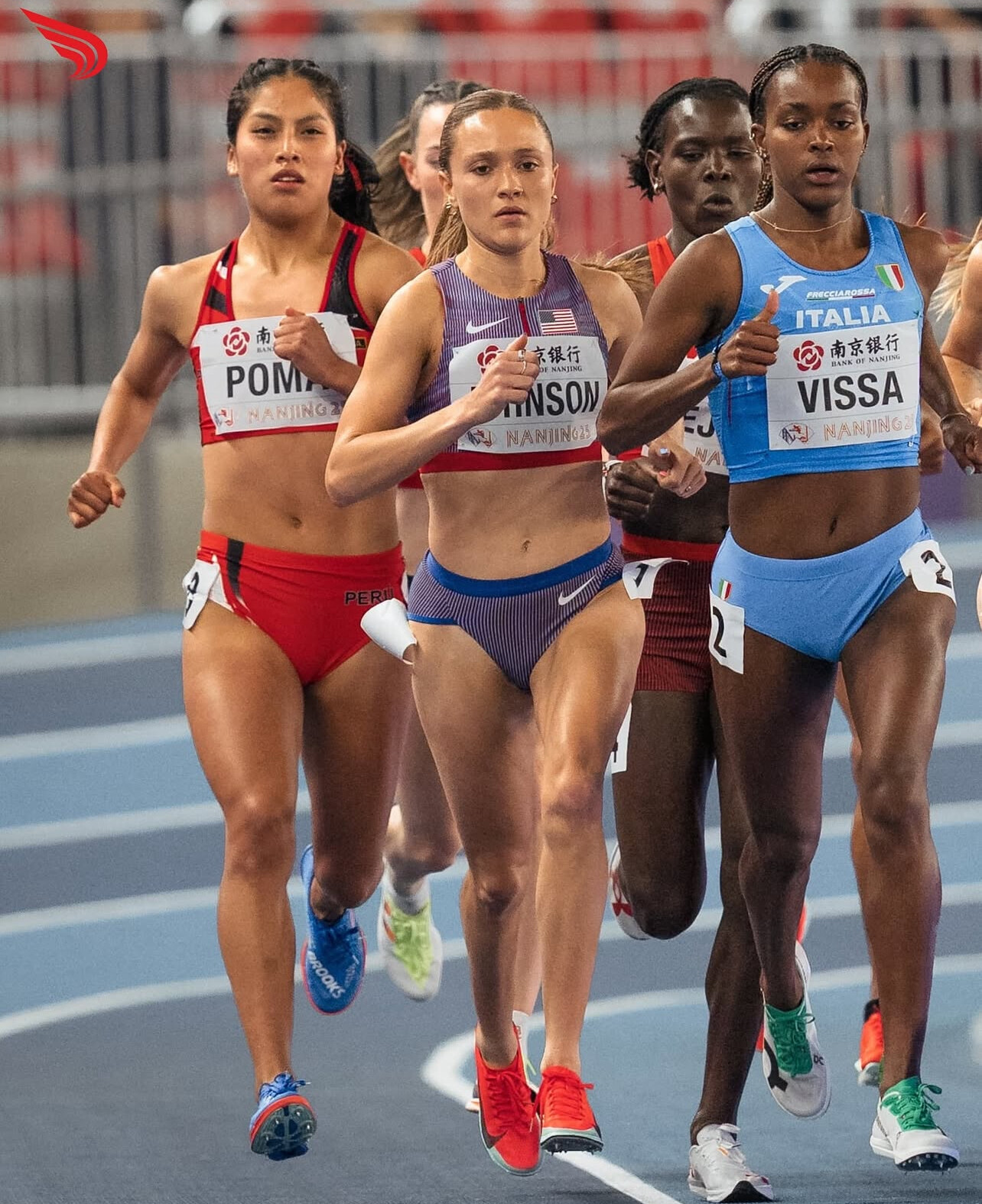
A Career on the Rise
Johnson, 26, has long been considered a top-tier talent in the 1500m and mile, but this performance confirms she’s entering her prime. She previously won the 2022 U.S. Outdoor 1500m title and has represented Team USA at multiple World Championships, but this is her first American record.
With the World Championships in Tokyo less than a month away, this performance couldn’t have come at a better time. Johnson now heads into the final stretch of the season as the fastest North American miler in history and a legitimate contender for a podium finish in Tokyo.
(07/20/2025) ⚡AMPby Boris Baron
Is the King Really Back? Jakob Ingebrigtsen Sends a Silent Shockwave with One Reel
Just when the doubters were growing bold, Jakob Ingebrigtsen dropped a bombshell—without saying a word.
After months of uncertainty, Achilles rehab, and a string of absences from marquee meets like Oslo and the Prefontaine Classic, the Olympic champion and world record holder resurfaced not with a headline but with a treadmill video on Instagram. The caption? Just five words:
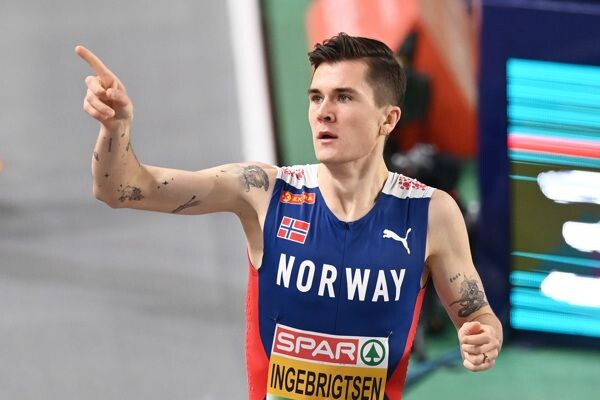
“Normal service has resumed ??.”
That was it. No interview. No press release. Just a smooth stride at full clip—and it was enough to send shockwaves through the sport.
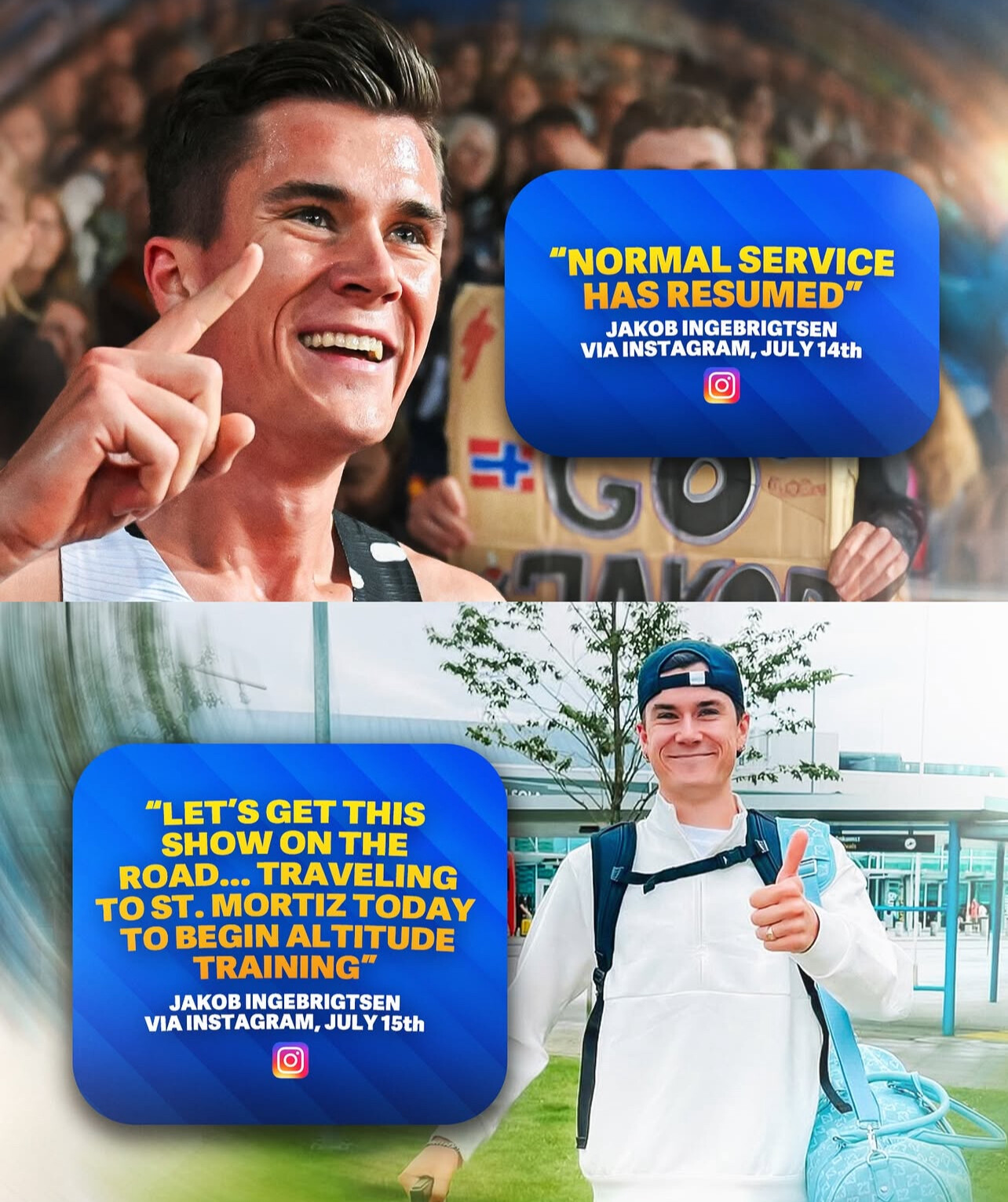
Jakob, still only 23, hasn’t raced since winning the European Cross Country Championships last December. In May, he confirmed his withdrawal from the London Diamond League on July 20 due to lingering Achilles irritation. But now, with the 2025 World Championships in Tokyo looming, fans and rivals alike are decoding every frame of that 12-second clip. Was this just training? Or a warning shot?
The Comeback Equation

Jakob’s resume needs no embellishment:
Olympic 1500m champion (Tokyo 2021)
World 5000m champion (Paris 2023)
European record holder in the 1500m, mile, 3000m, and 5000m
World record holder in the 2000m and two miles
But since that shock defeat to Josh Kerr at the 2023 World Championships in Budapest—a tactical masterclass that broke Ingebrigtsen’s golden streak—Jakob has been unusually quiet. Injuries kept him from defending titles on the Diamond League circuit, while rivals like Kerr, Jake Wightman, and Yared Nuguse have stepped into the spotlight.
Now, that silence might be over.
Warning to Rivals?
The timing couldn’t be more dramatic. With Tokyo less than six weeks away, the treadmill reel could mark the start of Jakob’s final prep—if not for London, then for the Worlds. His message may have been short, but the implications are massive: he’s back in motion, the rhythm looks good, and if he toes the line in Tokyo, the narrative resets.
Rivals like Kerr, who’s coming off a strong win at the 2025 Bislett Games, won’t be underestimating him. Their rematch—if it happens—could be one of the defining moments of the championships.
Crown or Collision Course?
Is Jakob ready to reclaim his throne, or is he walking into the fiercest middle-distance rivalry we’ve seen in years? The answer is still unwritten—but one thing is clear:
Jakob Ingebrigtsen is not done. Not even close.
And now, the track world holds its breath.
(07/20/2025) ⚡AMP
by Boris Baron
5th Annual Kenya’s Double Road Race 15K Set for September 20, 2025, at KATA Thika
The 5th Annual Kenya Double Road Race 15K will be held on September 20, 2025, at the Kenyan Athletics Training Academy (KATA) in Thika, Kenya. The event ins a two stage race. First is the 10k leg then a break, followed by a 5K leg. Legs are added together for scoring. A format designed to challenge runners of all levels. Do then double! The start, finish, and halftime break will be based near the KATA campus. The second leg starts one hour and 45 minutes after the start of the first leg.
Double Racing was created by Bob Anderson, founder of Runner’s World magazine, in 2010. From October 2010 to October 2012, seven small Double races were held in Mexico under the name Bob Anderson 15K Challenge. The format evolved, and in December 2012, the first official Double Road Race was held in Pleasanton, California, with nearly 1,400 participants. The signature race was the Double 15K — 10K followed by 5K, separated by a 1 hour and 45-minute recovery break known as the Restart.
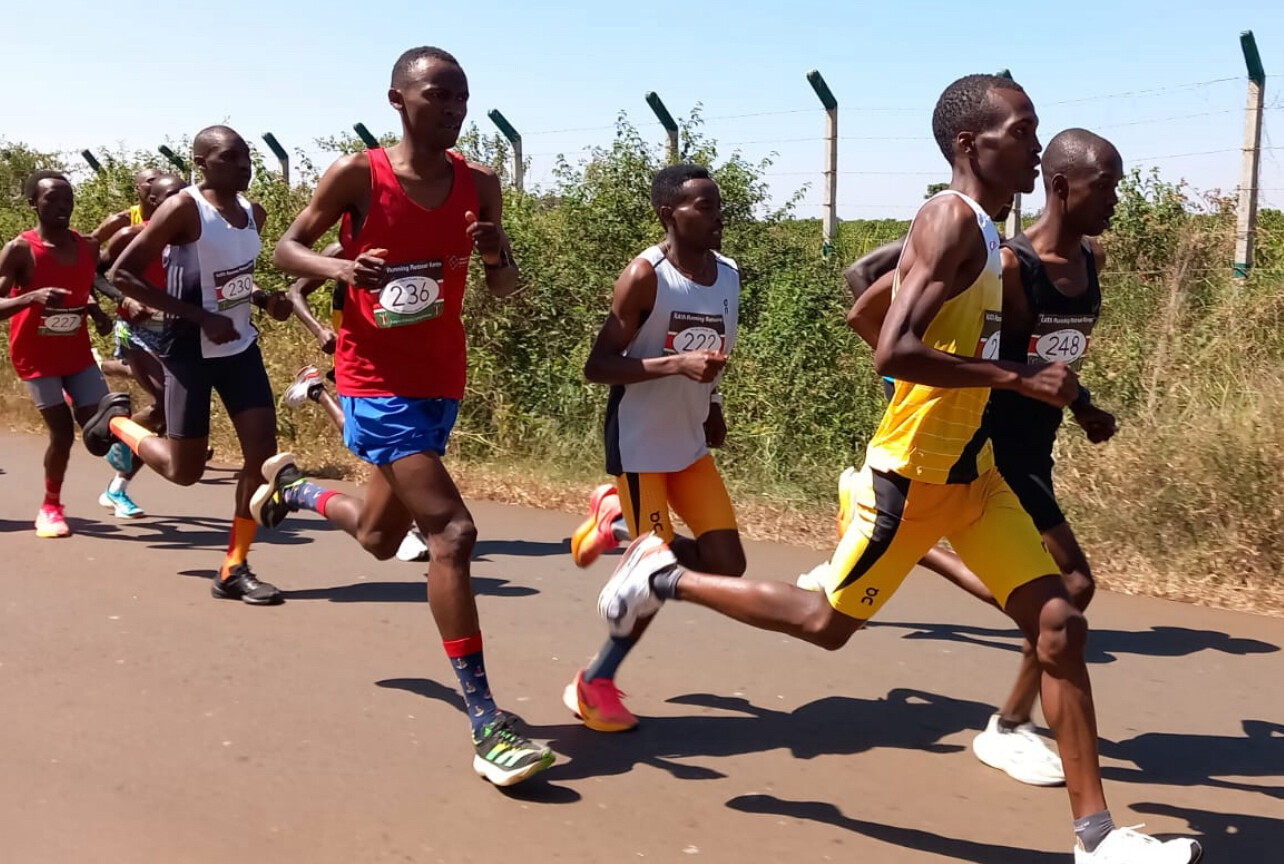
“Double Racing is doable for runners at all levels,” says Bob Anderson. “It’s a new challenge for many, while others have done many already.”
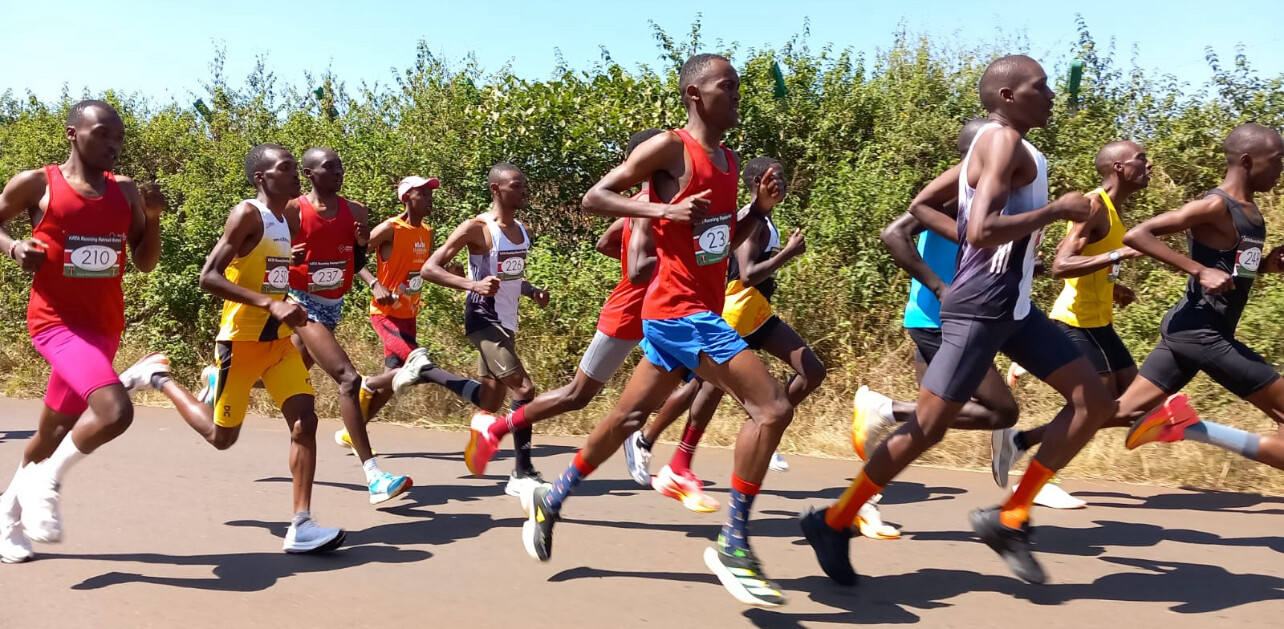
Anderson staged two Double races in Kenya previously — in Thika (2014) and Nyahururu (2015) — both were Double 21Ks (10 miles + break + 5K). These visits inspired the creation of KATA Thika, which officially opened in September 2021, and hosted the first Double 15K in Africa on September 4, 2021. Donikal Komon won that race in 44:42 — the fastest ever run in Africa at that time.
In 2022, Joseph Njoroge shaved two seconds off that mark. But it was in 2024 when history was made.
A New World Record in 2024
At the 4th Annual KATA Double Road Race 15K held on September 14, 2024, Shadrack Kenduiywo, 24, smashed the world record by clocking 42:34, eclipsing the long-standing record of 43:11 held by Julius Koskei since 2015. Kenduiywo ran 28:33 for the 10K leg and 14:01 for the 5K.
“This was my first Double race, and I was happy. I knew the record was in sight,” he said. “During the break, I relaxed, drank water, ate fruit, and did a 20-minute warmup.”
Despite warm conditions (21°C), his performance was unstoppable. He led from the second kilometer, clocking 2:52, 2:50, 2:57… all the way to a 2:50 final kilometer. His 5K splits were 2:47, 2:48, 2:51, 2:47, and 2:44.
Kenduiywo’s personal bests at the time included:
• Half marathon: 61:24 (Padova, Italy)
• 25K: 1:15 (Berlin)
• 8K: 23:43
• 5K: 13:55 (Udeni)
He promises he’ll run even faster next time.
2024 Podium Highlights
Top Men
1. Shadrack Kenduiywo – 42:34 (28:33 + 14:01)
2. Martin Mumo – 43:18
3. Zachariah Kirika – 43:37
4. Collins Kiplagat – 44:39
5. John Njuguna – 45:11
Top Women
1. Alice Koigi – 50:00
2. Monica Wanjiku – 51:30
3. Susan Njuu – 53:07
Men Masters
1. Charles Ndirangu, 64 – 56:21
2. David Mwangi, 70 – 64:49
3. Joseph Kiraio, 72 – 73:40
Women Masters
1. Julia Njari, 47 – 60:43
2. Sheila Mbaku, 54 – 62:30
The event also included Bob Anderson’s Kids Mile (won by 12-year-old Benjamin Ndaro in 4:54), and a 5K youth race won by Denis Chege, 16, in 17:48.
With over 120 Double 15K races held globally and a new world record established at KATA Thika, the 5th edition promises to be the most exciting yet.
Click here to see top time lists and age group records:
https://www.doubleroadrace.com/records
Join us September 20, 2025, in Thika, Kenya, and experience Double Racing at its best.
(07/19/2025) ⚡AMPby Boris Baron
KATA Double Road Race 15K
5th Annual KATA Double Road Race 15K Set for September 20, 2025, at KATA Thika The 5th Annual KATA Double Road Race 15K will be held on September 20, 2025, at the Kenyan Athletics Training Academy (KATA) in Thika, Kenya. The event includes a 10K leg, a break, followed by a 5K leg — a format designed to challenge runners...
more...Jessica Hull Shatters Her Own Mile Record in London — Again Proving She’s World-Class
LONDON, July 20, 2025 — Just when you think she’s peaked, Jessica Hull finds another gear.
At the London Diamond League, the Australian middle-distance star delivered another brilliant performance, clocking 4:13.68 to finish second behind Ethiopian legend Gudaf Tsegay in the women’s mile. In doing so, Hull broke her own Australian and Oceanian record, reaffirming her status as one of the world’s premier distance runners.
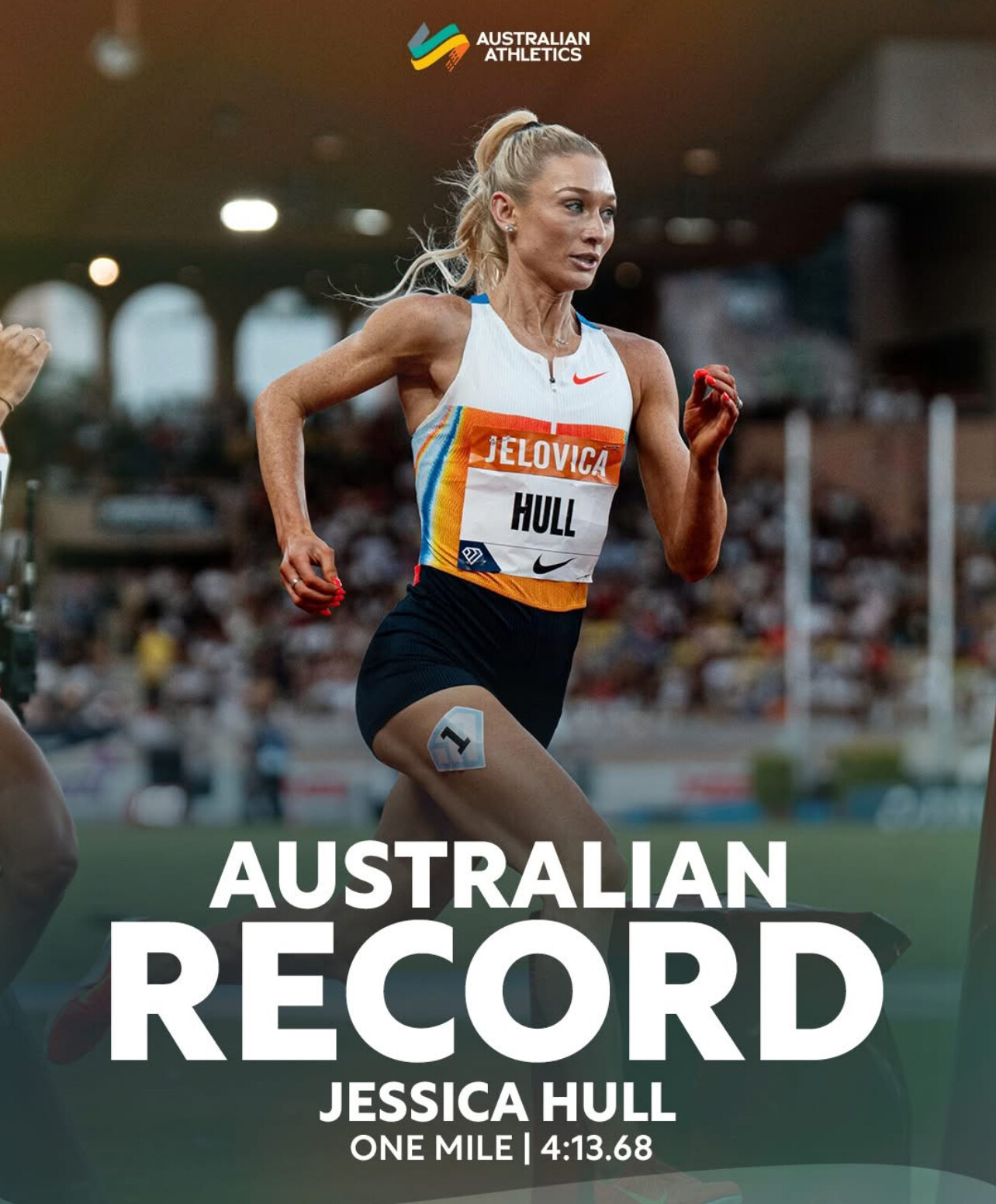
Another Record Falls

Hull had previously lowered the Australian mile record to 4:15.34, and now she’s slashed nearly two seconds off that mark. Her new time of 4:13.68 places her among the fastest women in history over the distance and continues an incredible streak of performances on the global stage.

A Steady Ascent
Born in Albion Park, New South Wales, Hull first gained international recognition at the University of Oregon, where she became a four-time NCAA champion. Since turning professional, she’s:
• Broken national records in the 1500m, 3000m, 5000m, and Mile
• Made finals at multiple global championships
• Become a fixture on the Diamond League circuit
Tactically sharp, mentally tough, and remarkably consistent, Hull has become the face of Australian distance running.
Tokyo Awaits
This latest record could not come at a better time. Hull is peaking just ahead of the 2025 World Athletics Championships in Tokyo, where she will line up among the favorites in the 1500m and possibly the 5000m.
At just 27, she continues to redefine what’s possible—not just for Australians, but for all middle-distance runners worldwide. With the Paris Olympics in the rearview and Tokyo in focus, Jessica Hull is a name we’ll be hearing for years to come.
Follow My Best Runs for more coverage of Jessica Hull and the world’s best distance runners.
#JessicaHull #Australia #WorldAthletics #Tokyo2025 #DiamondLeague #MyBestRuns #MileRecord #Running
(07/19/2025) ⚡AMPby Boris Baron
HISTORIC SEASON FOR PHANUEL KOECH
At just 18 years old, Phanuel Koech has made history—becoming the first Kenyan ever to run under 3:29 for the 1500m twice in a single season.
✅ Paris Diamond League: 3:27.72
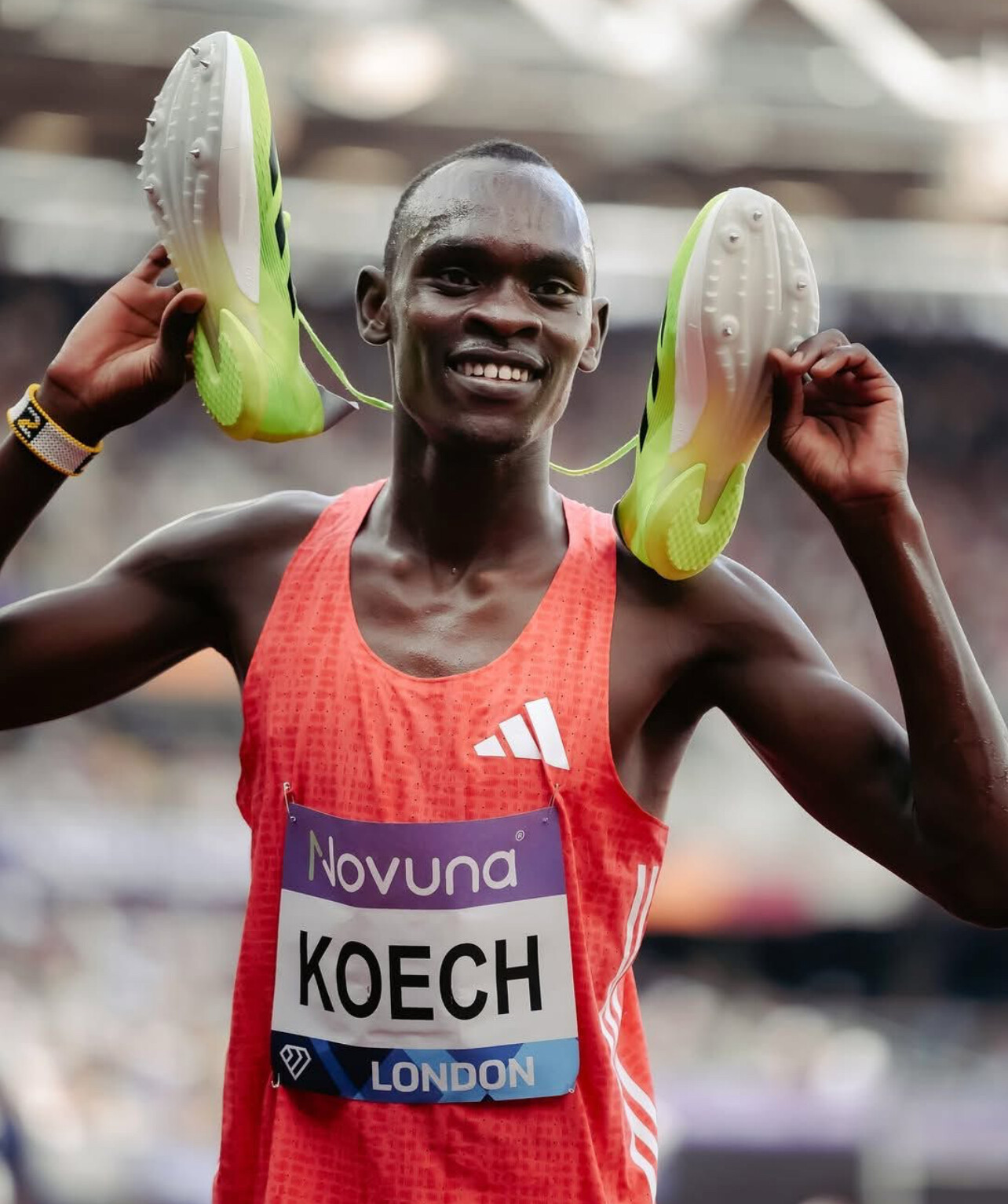
✅ London Diamond League: 3:28.82
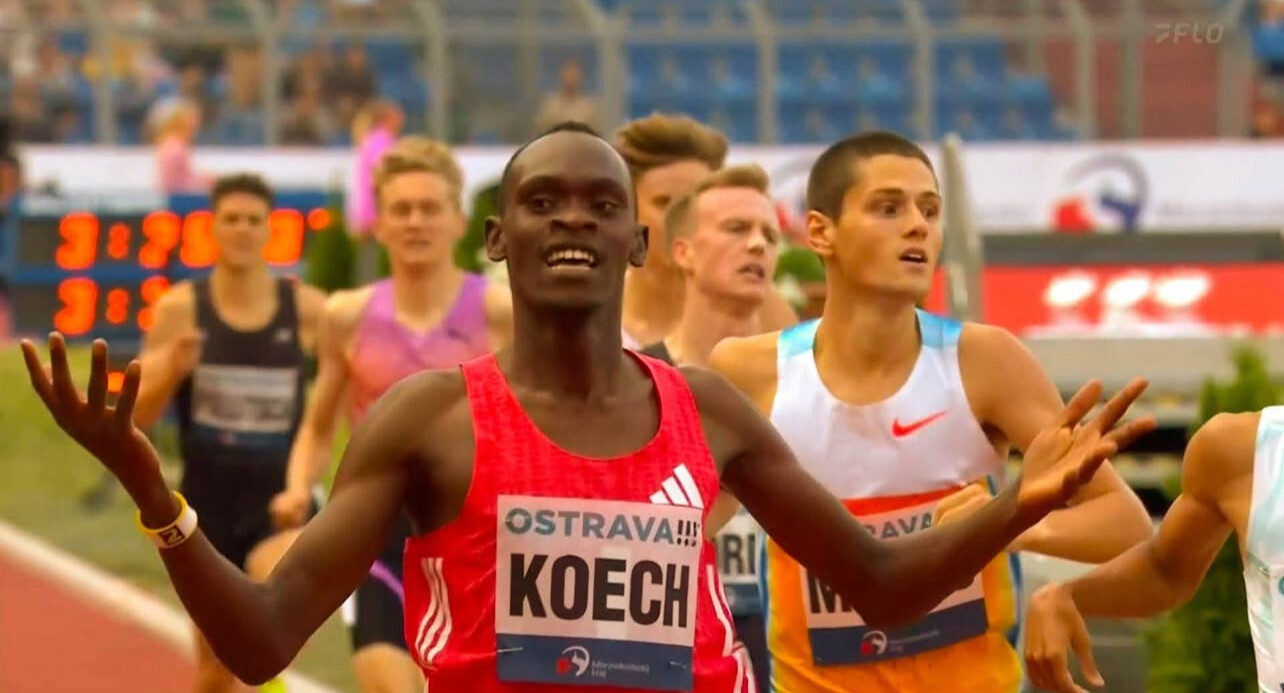
With his 3:27.72 performance in Paris, Koech now ranks as the 4th fastest Kenyan of all time, behind only Bernard Lagat, Asbel Kiprop, and Silas Kiplagat.
He is also the fastest junior (U20) in the history of the 1500m.
Next up:
2025 World Athletics Championships Trials
Sports Complex
July 22, 2025
Kenya’s middle-distance future looks brighter than ever.
(07/19/2025) ⚡AMPby Boris Baron
Powered by Potatoes, Fueled by Passion: Inside the Rise of KATA in Kenya
THIKA, Kenya, July 18, 2025 — About 40 kilometers northeast of Nairobi sits Thika, a town once best known for its factories. But just outside its bustling center, a quiet revolution is taking place—one that’s redefining how running talent is discovered and developed in Kenya.
Welcome to the Kenya Athletics Training Academy (KATA)—a visionary project founded by Runner’s World and My Best Runs creator Bob Anderson (first photo) and powered by a bold and sustainable idea: combine world-class running with community farming. What began in 2019 as a modest base has grown into a thriving network of athletic development across Kenya.
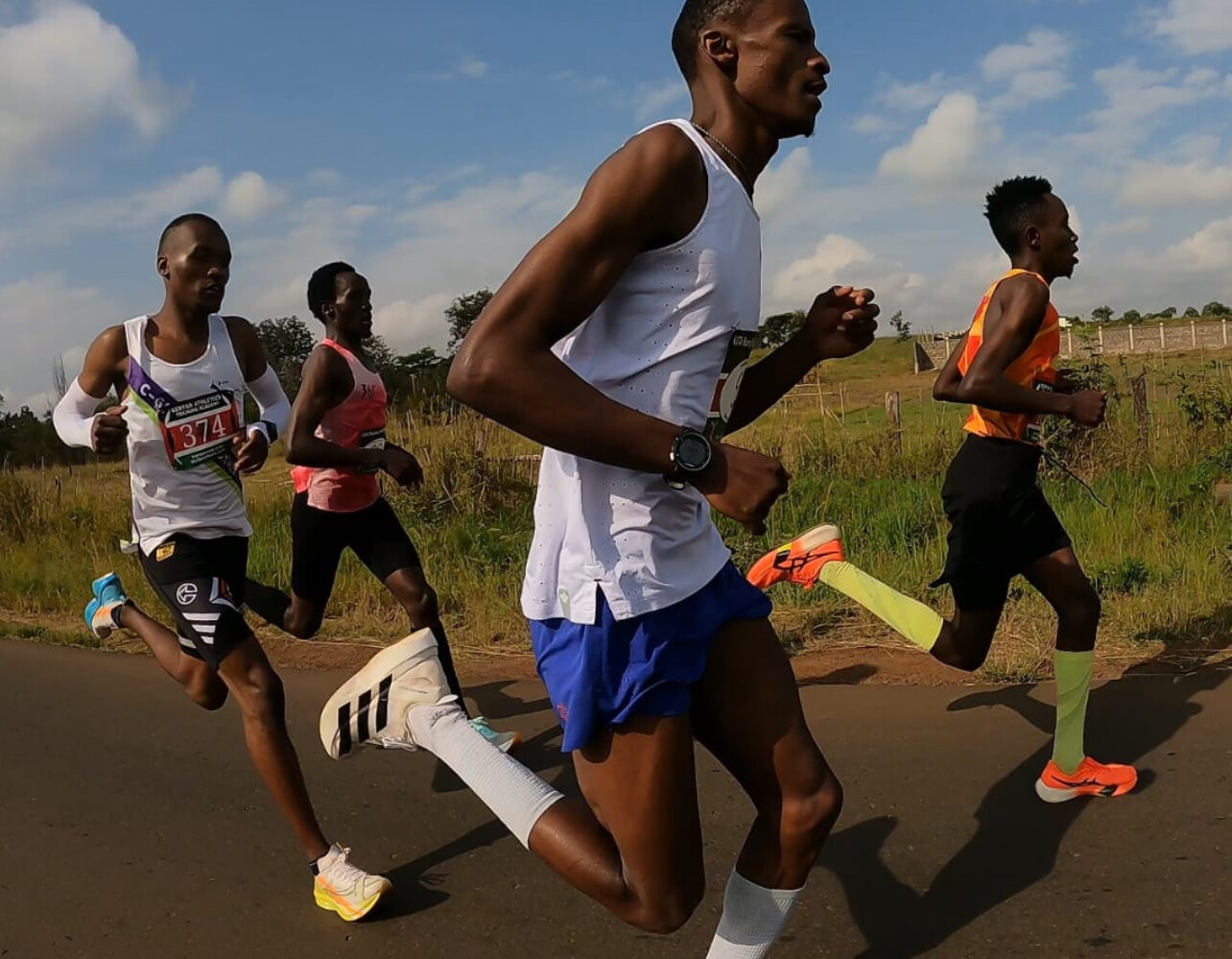
Thika: The KATA Running Retreat
At the heart of it all is the KATA Running Retreat in Thika, where Kenyan athletes live and train full-time, and where guests from around the world come to “train the Kenyan way”. Situated at altitude, the retreat offers structured training, rest, nutrition, and performance monitoring on a measured course.
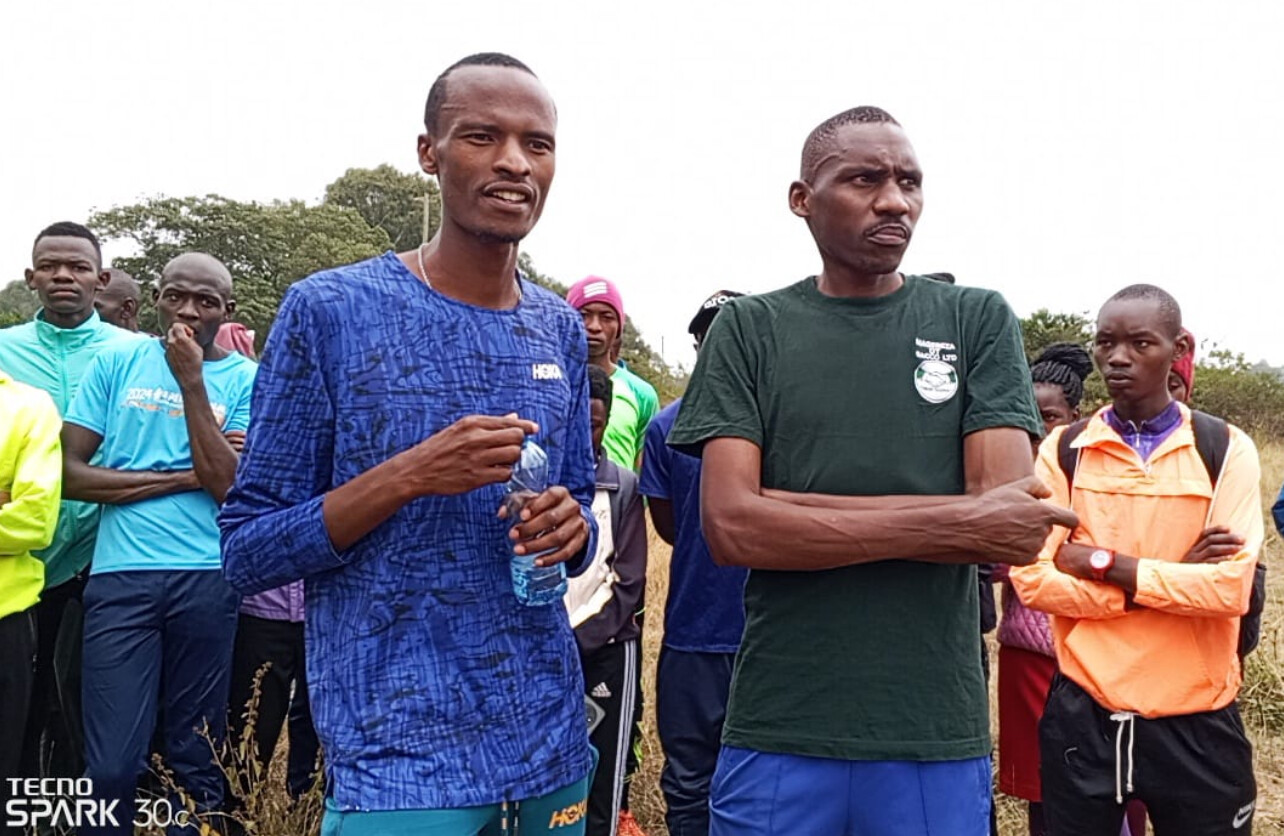
Thika is managed by Christopher Kamande (photo 4), who ensures that the vision is executed with care and discipline.
“We provide a safe space for these athletes,” says Kamande. “They get everything they need—meals, coaching, rest, even digital support for their racing profiles. We treat them like the professionals they’re becoming.”
Athletes’ verified performances are uploaded to My Best Runs by Elam Wangwero (photo 5 when he met Bob and his wife Catherine for the first time in 2014), KATA’s digital lead and longtime collaborator with Anderson. “When someone runs 28 minutes here, the world should know about it,” he says.
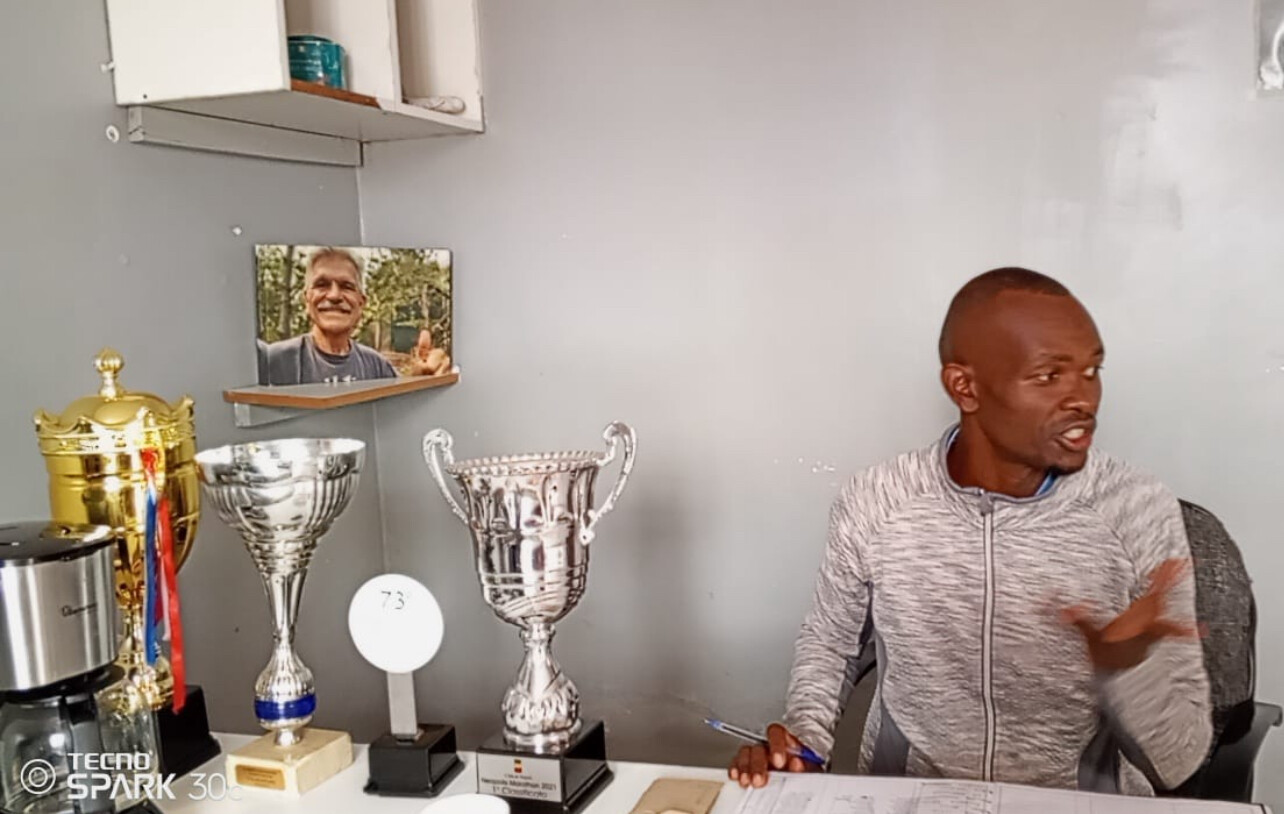
A Model That’s Growing Across Kenya
Since June 2025, the KATA team has launched a new initiative: combining elite training camps with three-acre potato farms to build sustainable, athlete-driven communities. In just six weeks, 30 new KATA Running Camps and KATA Potato Farms have been established across Kenya, with two more set to open by August 1, bringing the total to 32.
“This gives us 32 KATA Camps and Farms,” says Anderson. “It has been exciting to find operators who share the same passion as I. We have an amazing group of operators—all dedicated to our unique project. They all know how important their three-acre potato farm is, because that’s what will power their camp in the long run.”
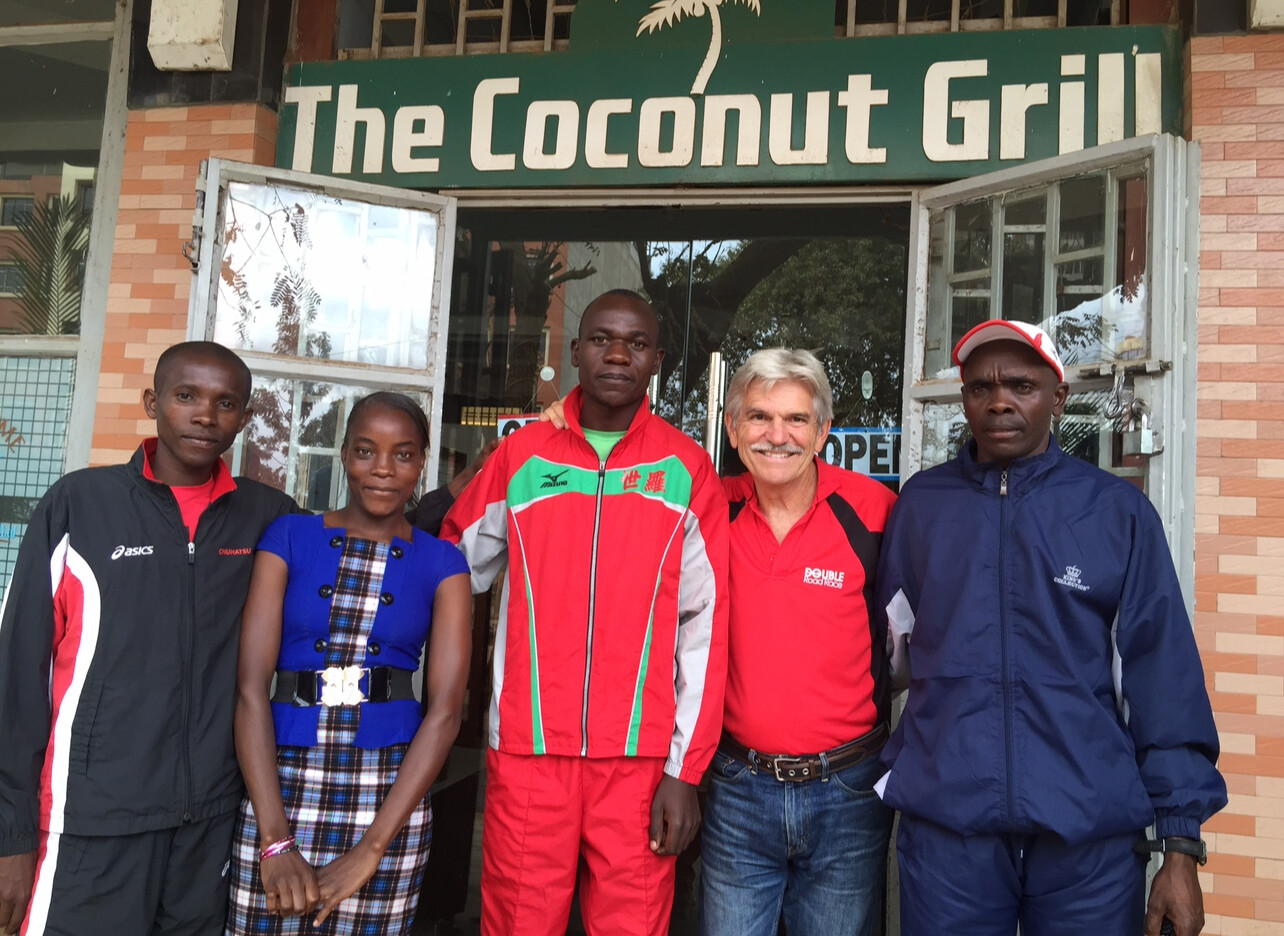
At each location, athletes work 25 hours a week planting, maintaining, and harvesting potatoes. In return, they receive free housing, daily meals, and world-class coaching—a holistic model designed to develop both athletes and communities.
“This model gives athletes a chance not just to run, but to build a life,” says Kamande. “It teaches responsibility, sustainability, and teamwork.”
Time Trials that Open Door's
KATA’s monthly 5K and 10K time trials (phot two) certified and measured, are held on the Thika course and have become a trusted platform for athletes to showcase their ability to race organizers and sponsors worldwide. “Our monthly time trials were started September 2021,” says John KATA’s head coach, “we have seen many amazing performances both from our KATA’s athletes and others.” All runners are invited to come run.
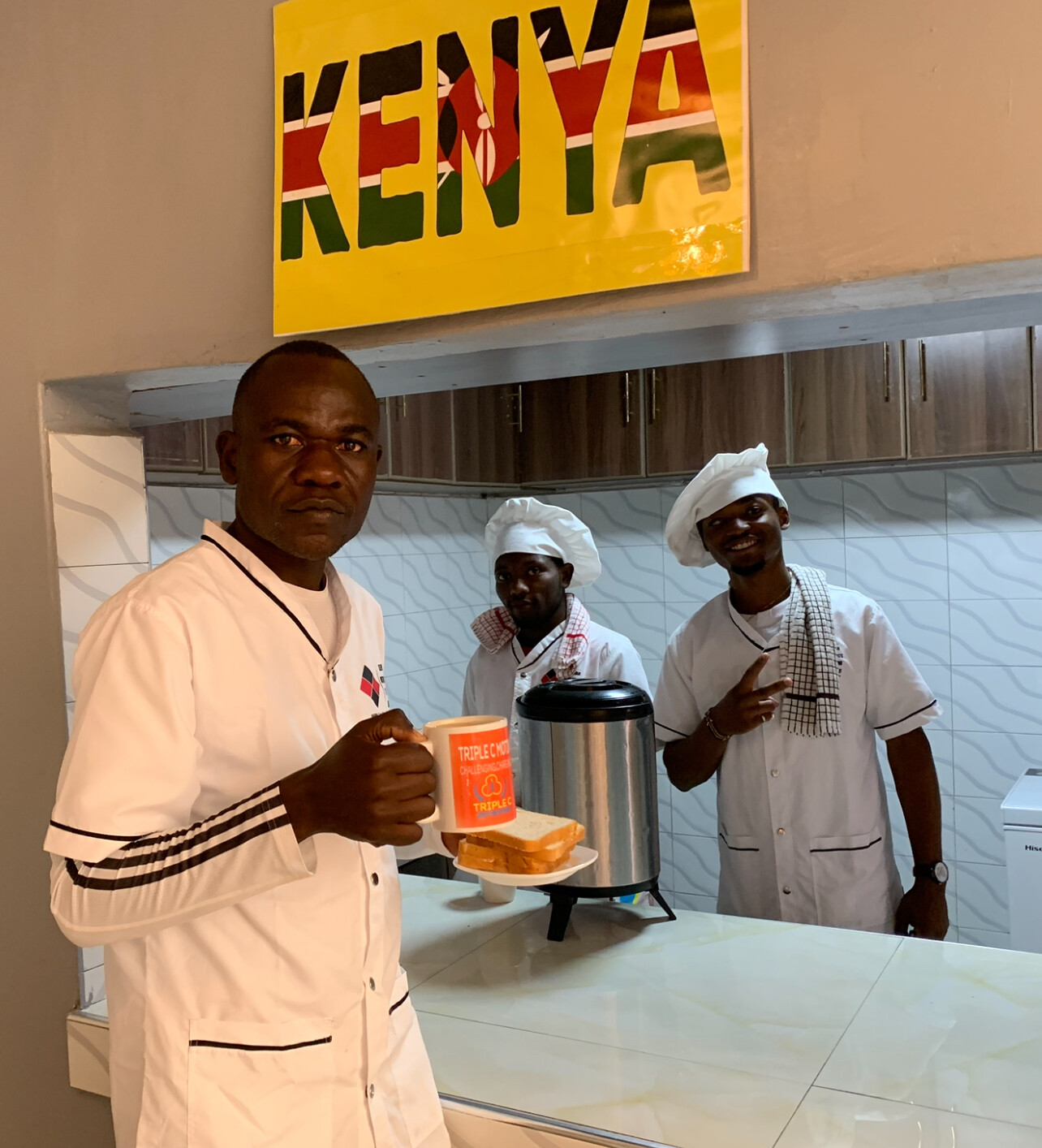
“These time trials are life-changing,” Kamande says. “Many of our runners don’t have agents or the means to travel to big races. So we bring opportunity to them.”
Results are published on My Best Runs, offering a transparent, verified path to the world stage.

From 34 Minutes to 27:47
Before the farming project began, KATA was already changing lives—and Peter Mwaniki Njeru (photo three) is one of its earliest and most powerful success stories.
“When Peter first came to KATA,” recalls Anderson, “he was running around 34 minutes for 10K.” Through structured training, support, and work around the Retreat, Peter steadily improved. In 2024, he stunned the running world by winning the Chicago 10K in 27:47.
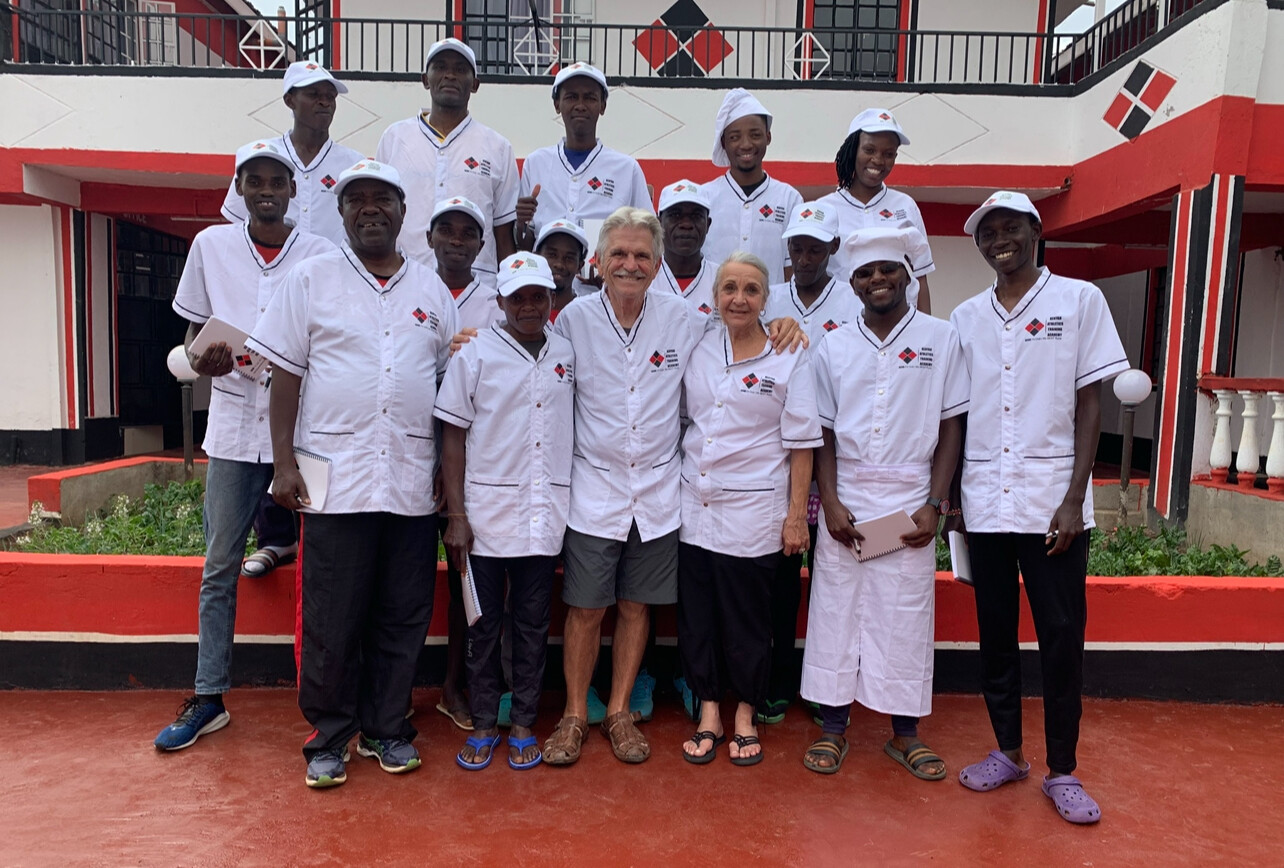
A Legacy Rooted in Vision
At a time when many athletes in Kenya pay to train, live in overcrowded rooms, and struggle for basic support, KATA is different. Everything—lodging, food, coaching, and opportunity—is provided at no cost to the athlete. And now, through potatoes, the project has a path to sustain itself.
One KATA operator summed it up best in a message to Bob Anderson:
“Your unique approach,” wrote Edwin Soi, “blending athletic training with sustainable farming, is clearly making a significant positive impact on the lives of the athletes and the community. It’s a testament to how innovative ideas, when implemented with genuine care, can empower people far beyond their initial scope.”
As the KATA Running Retreat in Thika and now also in Portugal continues to welcome international guests and the KATA Camps and Farms spread across the country, the mission remains clear:
Empower athletes. Build communities. And grow the future—one step, and one potato, at a time.
(07/18/2025) ⚡AMPby Robert Kibet
Delhi Half Marathon Returns for 20th Edition on October 12, 2025
The 2025 edition of the Delhi Half Marathon is set to light up the streets of India’s capital on October 12, with the iconic Jawaharlal Nehru Stadium serving as both the start and finish point. Celebrating its 20th anniversary, the event remains one of Asia’s premier road races, having earned World Athletics Gold Label status and certification from the Association of International Marathons and Distance Races (AIMS).
At Wednesday’s official launch, former Indian men’s hockey captain and current junior team coach PR Sreejesh, a two-time Olympic bronze medallist, helped usher in the milestone edition.

Registration opened July 17 for all race categories—including the Half Marathon, Open 10K, Great Delhi Run, Senior Citizens’ Run, and Champions with Disability—and closes on September 19.
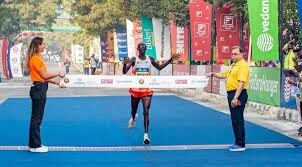
Since its inaugural running in 2005, the Delhi Half Marathon has drawn some of the world’s top distance runners. The 2024 men’s elite title was claimed by Joshua Cheptegei of Uganda, the reigning Olympic 10,000m champion, with a blistering 59:46. On the women’s side, Eilish McColgan of Great Britain took the crown. India’s top finishers were Sawan Barwal and Lili Das, who will likely return with eyes on the national podium.

The course records still stand from a memorable 2020 edition: Amedework Walelegn of Ethiopia set the men’s mark at 58:53, while Yalemzerf Yehualaw, also from Ethiopia, holds the women’s record with 1:04:46.
Even marathon legend Eliud Kipchoge is part of the event’s rich history—he won the men’s elite race back in 2016.
With world-class athletes, enthusiastic local support, and a flat, fast course, the Delhi Half Marathon continues to be a must-run event for elites and amateurs alike.
(07/17/2025) ⚡AMPby Boris Baron
Vedanta Delhi Half Marathon
The Airtel Delhi Half Marathon is a haven for runners, creating an experience, that our citizens had never envisaged. The streets of Delhi converted to a world-class running track. Clean, sanitized road for 21.09 kms, exhaustive medical support system on the route, timing chip for runners, qualified personnel to ensure smooth conduct of the event across departments. The race...
more...Sifan Hassan Withdraws from London Diamond League 2025, Leaving a Void in the Distance Lineup
Alright, track and field fans—buckle up, because the London Diamond League 2025 is nearly here, and while anticipation is high, one major name has just dropped out, shaking up the event’s buzz.
The eleventh stop on this year’s Diamond League circuit, London has long been a fan-favorite meet. With global sprint star Noah Lyles set to light up the straightaway, Femke Bol ready to command the hurdles, and a stacked roster of middle-distance talent, expectations were sky-high. But one race—the women’s mile—was drawing extra attention for a reason: it was supposed to feature Sifan Hassan, one of the sport’s most versatile and dominant athletes.
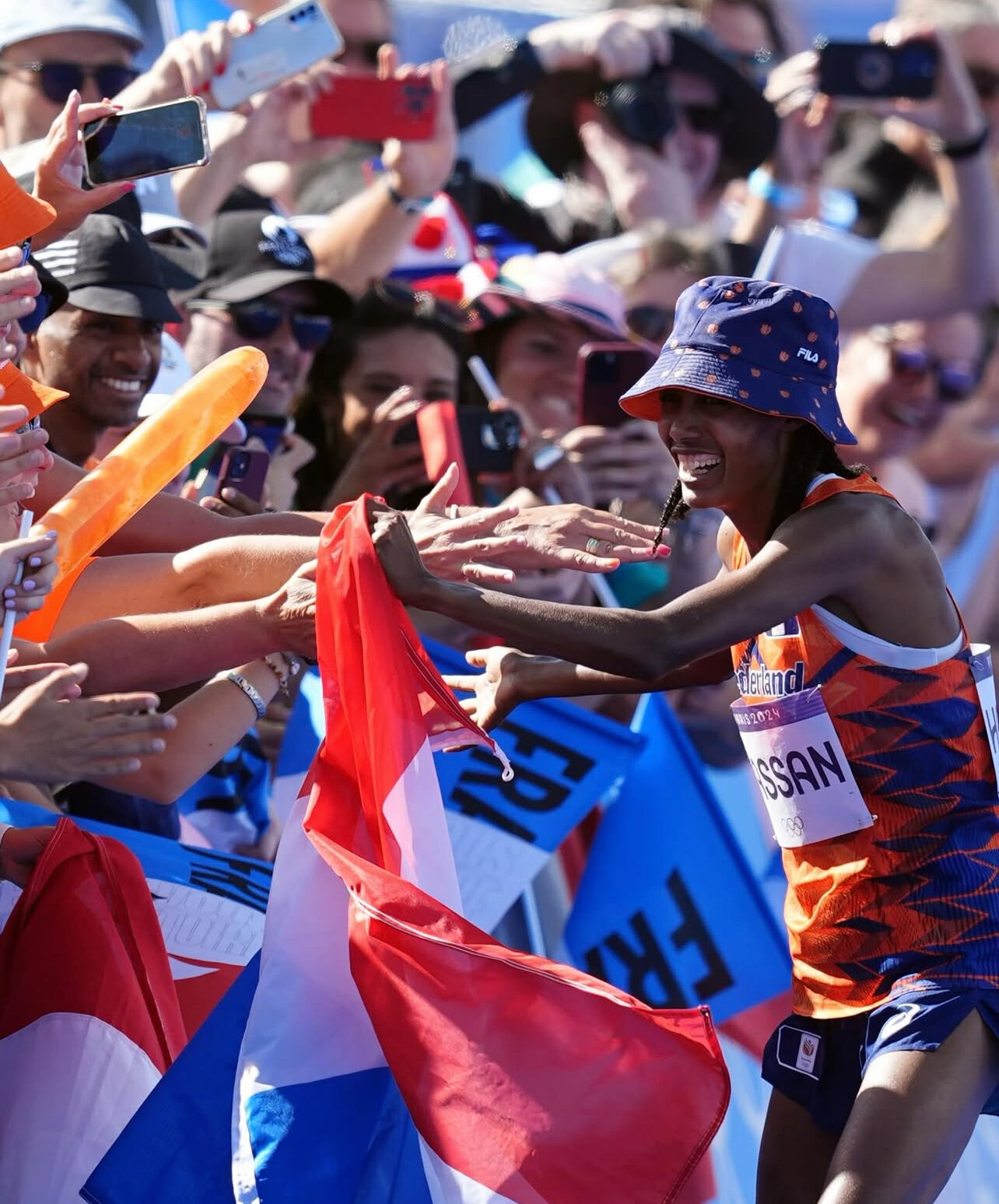
A Stunning Turn of Events
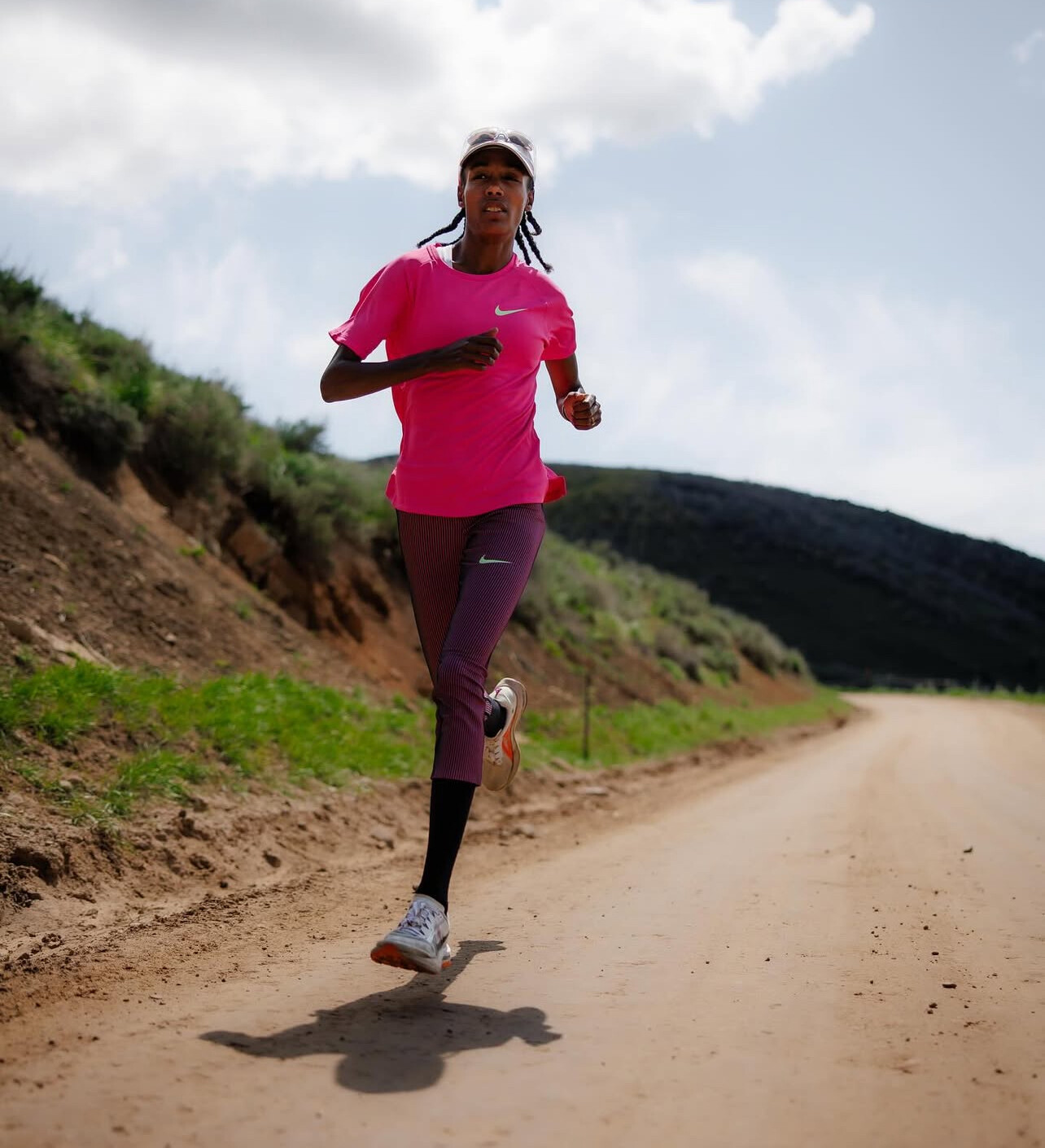
In a surprise Instagram post that landed just days before the event, the Olympic marathon championannounced her withdrawal. “I was really looking forward to racing at the @londonathleticsmeet,” Hassan wrote, “but I haven’t been feeling my best last week with my body not responding as well as I wanted. I love this meet and I feel really bad towards the organisers and my fans. But after talking with my team, we decided it’s smarter to skip it, stay focused and keep preparing for what’s next this season!”

The words hit hard. Hassan’s disappointment was palpable—and shared by fans worldwide.
A Legend in Her Prime
Hassan is no ordinary athlete. The Dutch superstar is known for doing the impossible—winning gold in the 5,000m and 10,000m and bronze in the 1,500m at the 2020 Tokyo Olympics, and later making headlines with her 2:13:44 marathon win in Chicago in 2023. She returned to the London Marathon earlier this year, building momentum that had fans itching to see her take to the track again.
Her absence from London robs the meet of a major draw, especially in the women’s mile, which was set to be one of the headline events of the weekend.
What Happens Now?
With Hassan out, the field remains strong—but no doubt the spotlight dims just a bit. The question becomes: Who will rise in her absence? Can the other middle-distance stars deliver a race worthy of her legacy? Will new names break through and capitalize on the opportunity?
The London Diamond League still promises firepower across multiple events, with top-tier battles lined up in the sprints, hurdles, and field events. But there’s no denying that the loss of one of track’s most beloved icons changes the emotional tone of the weekend.
Still, Hassan’s decision serves as a reminder: even the best need to listen to their bodies. And with her eyes still firmly set on the remainder of the season—and perhaps another Olympic run—fans will be watching and waiting for her next move.
Stay with My Best Runs for complete coverage of the London Diamond League and all the latest from the global distance running scene.
(07/17/2025) ⚡AMPby Boris Baron
UPDATE: Ruth Chepngetich’s Marathon World Record Not Affected by Suspension
Although the Kenyan marathon star has been provisionally suspended after testing positive for hydrochlorothiazide—a banned diuretic used as a masking agent—Ruth Chepngetich’s world record set at the 2024 Chicago Marathon remains valid.
Key facts:
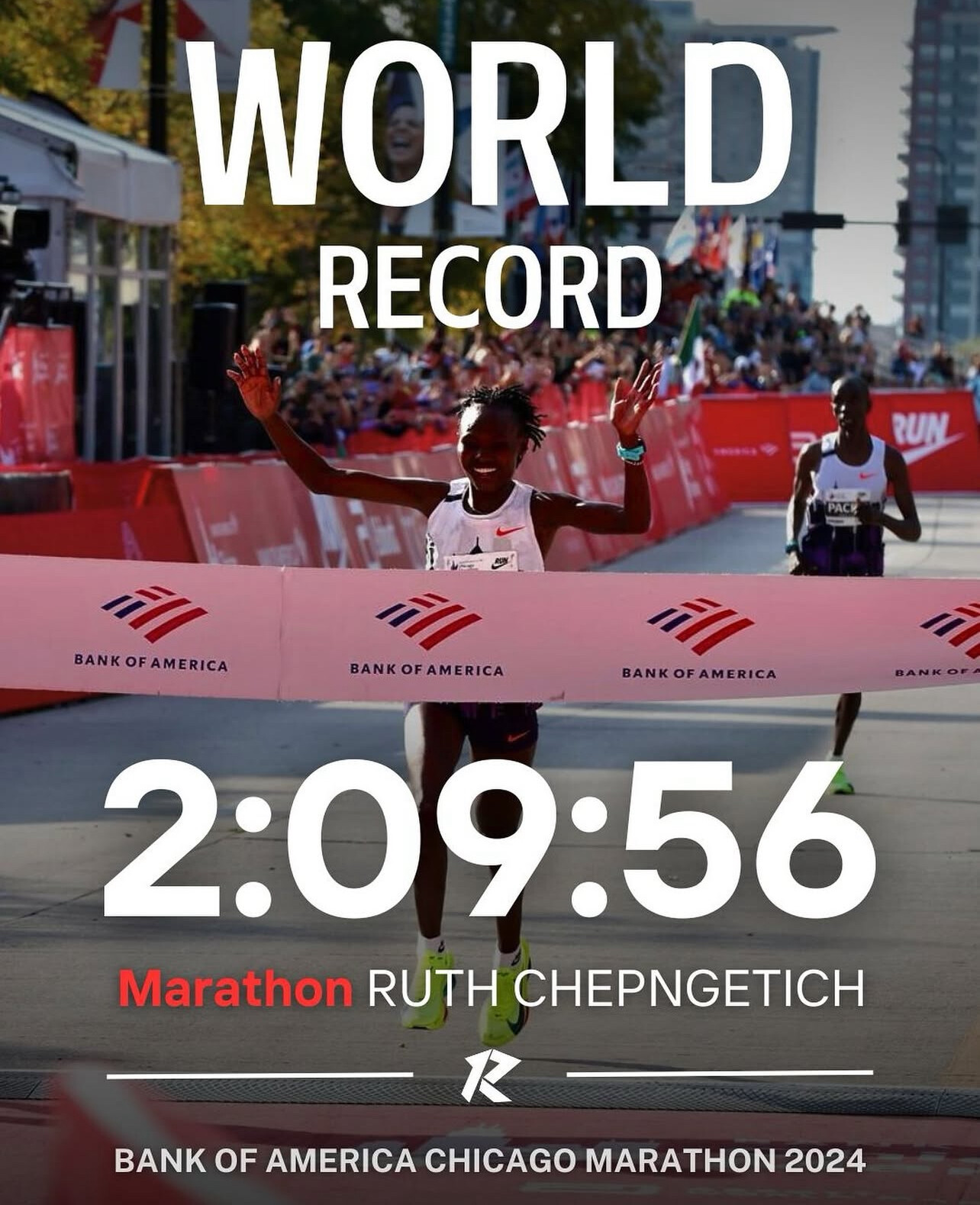
• ✅ The sample that led to her suspension was collected on March 14, 2025, several months after her record-breaking 2:09:56 performance in Chicago on October 13, 2024.
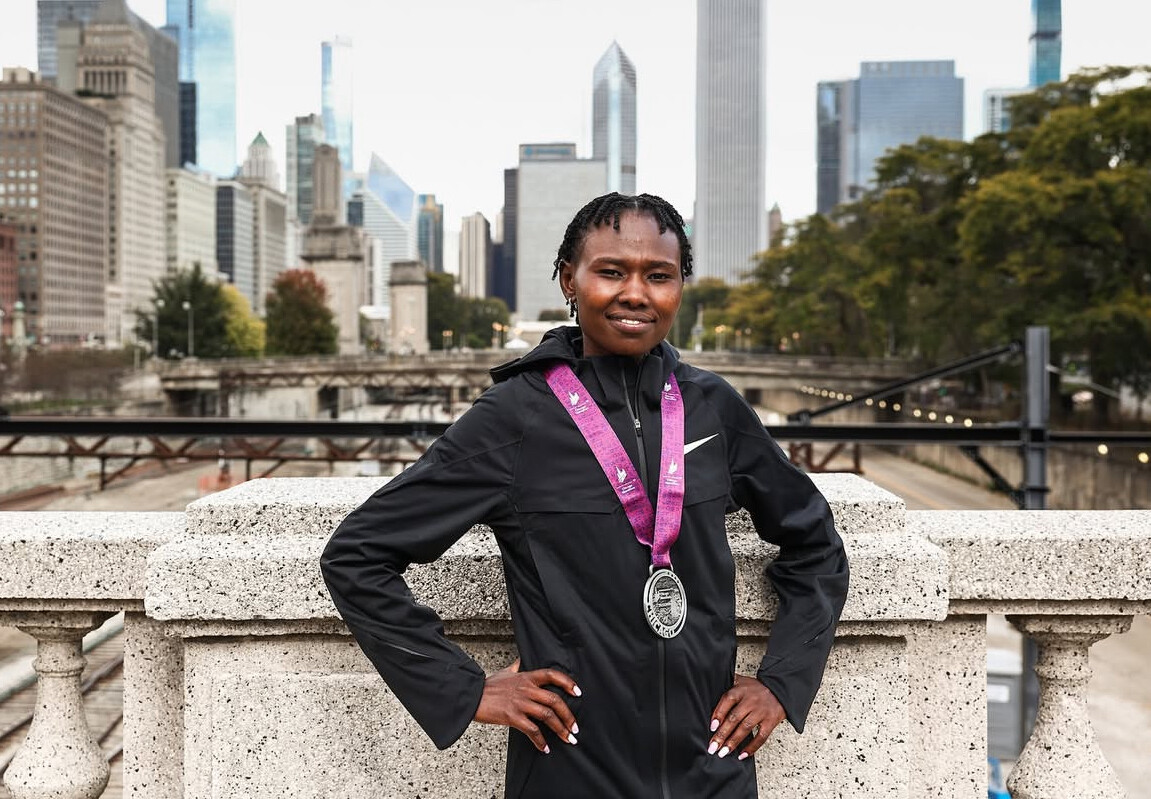
• ✅ Chepngetich is presumed innocent until proven guilty. The Athletics Integrity Unit (AIU) has initiated a disciplinary process, but no final ruling has been made.
At this time, World Athletics has not disqualified any of her past results, including her marathon world record.
The investigation is ongoing. Chepngetich voluntarily suspended herself in April, and the AIU issued a formal provisional suspension on July 17, 2025. Until the case is resolved, she remains barred from competition.
My Best Runs will continue to monitor developments and provide updates as new details emerge.
(07/17/2025) ⚡AMPby Boris Baron
Marathon Legend Patrick Ivuti Joins KATA as Operator of New Running Camp and Potato Farm project in Kenya
KATA (Kenyan Athletics Training Academy) continues its rapid expansion with the launch of its 22nd KATA Running Camp and Potato Farm, and the newest addition brings serious star power. Marathon great Patrick Mutuku Ivuti—a former Chicago, Honolulu, and Prague Marathon champion—has officially joined the KATA team as the operator of the new Tala-based camp/farm.
“We are excited to have Patrick Ivuti join our KATA team of operators for our KATA Running Camp and KATA Potato Farm project,” said Bob Anderson, KATA founder and managing director. “This is our 22nd camp and after a 30-minute video call and many text messages, it was clear we needed to add Patrick to our team. He brings spirit, experience, and heart. His camp/farm will be based in Tala.”
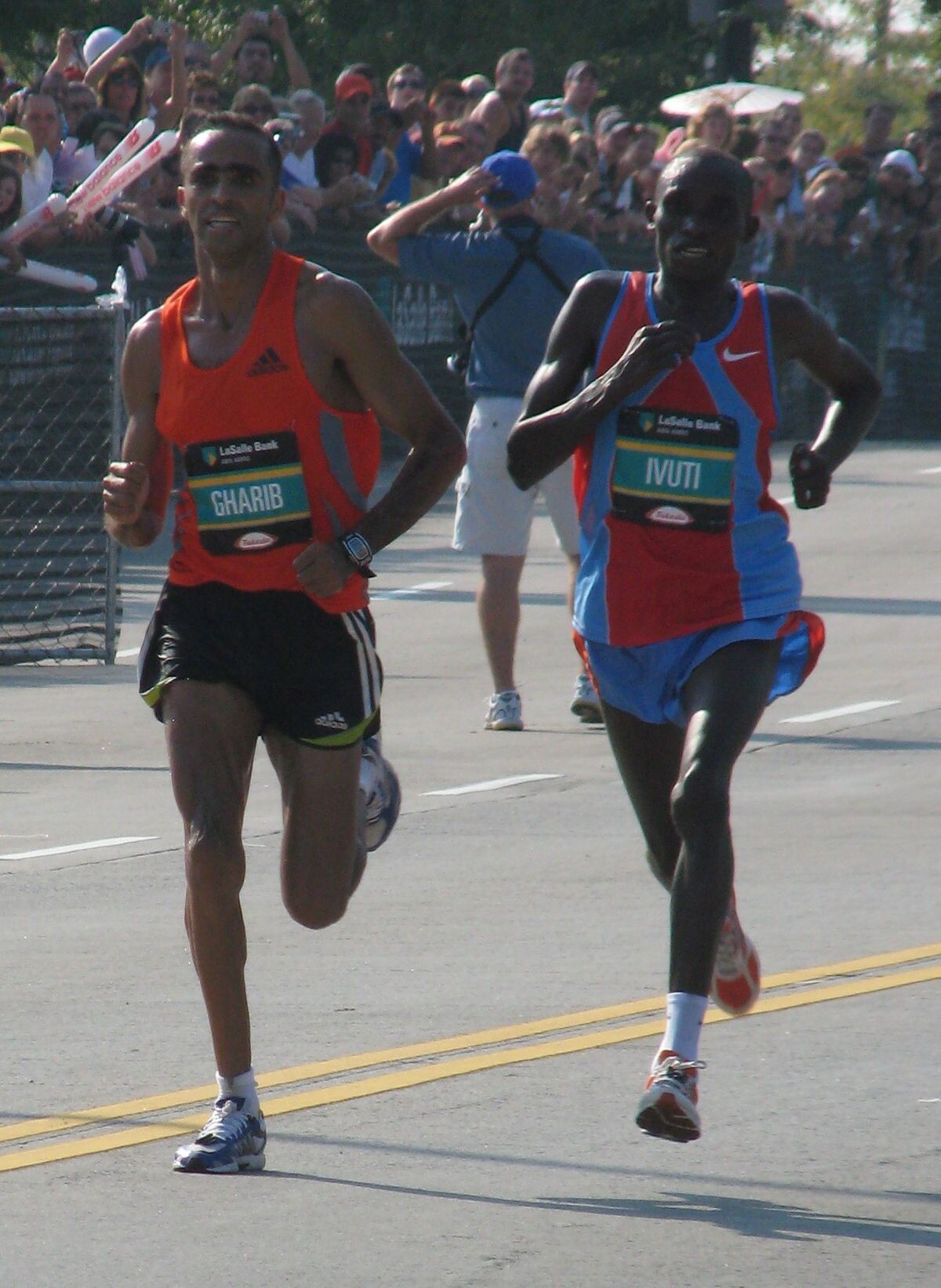
Ivuti’s love for the sport and passion for nurturing talent was evident from the first conversation. “Patrick just loved the idea of this unique project,” said Anderson. “He told me he had to join the KATA movement—not just to help athletes reach their potential, but to be part of something bigger.”
From World-Class Athlete to Ground-Level Mentor

Ivuti, born June 30, 1978, is one of Kenya’s most decorated distance runners. A two-time silver medalist at the IAAF World Cross Country Championships, he made his marathon debut in 2005 and claimed his first major win at the 2007 Chicago Marathon—a race he won by just 0.05 seconds in one of the closest finishes in marathon history.
He went on to win the Honolulu Marathon in both 2008 and 2009, and also took top honors at the 2009 Prague Marathon. With a personal best of 2:07:46, Ivuti competed at the highest level of global marathoning for over a decade.
Now, he’s bringing that same competitive spirit and wisdom to Tala, where his role goes far beyond coaching.
The KATA Model: Running + Farming = Sustainable Impact
Each KATA camp follows a sustainable model: athletes train daily and also work 25 hours per week on three acres of potato farmland, creating a source of income and life skills beyond sport.
Ivuti immediately connected with the KATA vision. “It’s a beautiful concept,” he shared. “This project gives young athletes the tools to succeed in racing and in life. That’s why I had to be part of it.”
A Growing Movement with Global Vision
The KATA program, launched by Bob Anderson—founder of Runner’s World magazine and My Best Runs—has grown quickly, with 22 running camps across Kenya, plus two international retreats in Thika, Kenya, and Monforte da Beira, Portugal.
“This is more than just athletics,” Anderson said. “It’s about creating long-term solutions and opportunities and not just for our athletes but for the communities. Patrick is the perfect person to help lead that mission in Tala.”
Stay tuned to My Best Runs for updates on KATA’s progress, new camp openings, and the inspiring athletes rising through this one-of-a-kind program.
(07/17/2025) ⚡AMP
by Boris Baron
Patrick Ivuti
KATA Athlete Lawi Ngetich Wins Gold at CAA U18 Championships, Earns U.S. Scholarship Opportunity
Rising middle-distance star Lawi Ngetich, who trains at one of the KATA Running Camps in Kenya operated by coach Newton Cheruiyot located in Bararget Milimet, has claimed gold in the 1500m at the 2025 Confederation of African Athletics (CAA) Under-18 Championships in Nigeria.
Ngetich showcased his exceptional talent in both the 1500m and 800m, with his 1500m performance earning him top honors at the MKO Abiola Sports Arena in Abeokuta. His win not only brought pride to Kenya and the KATA program but also caught the attention of international scouts.
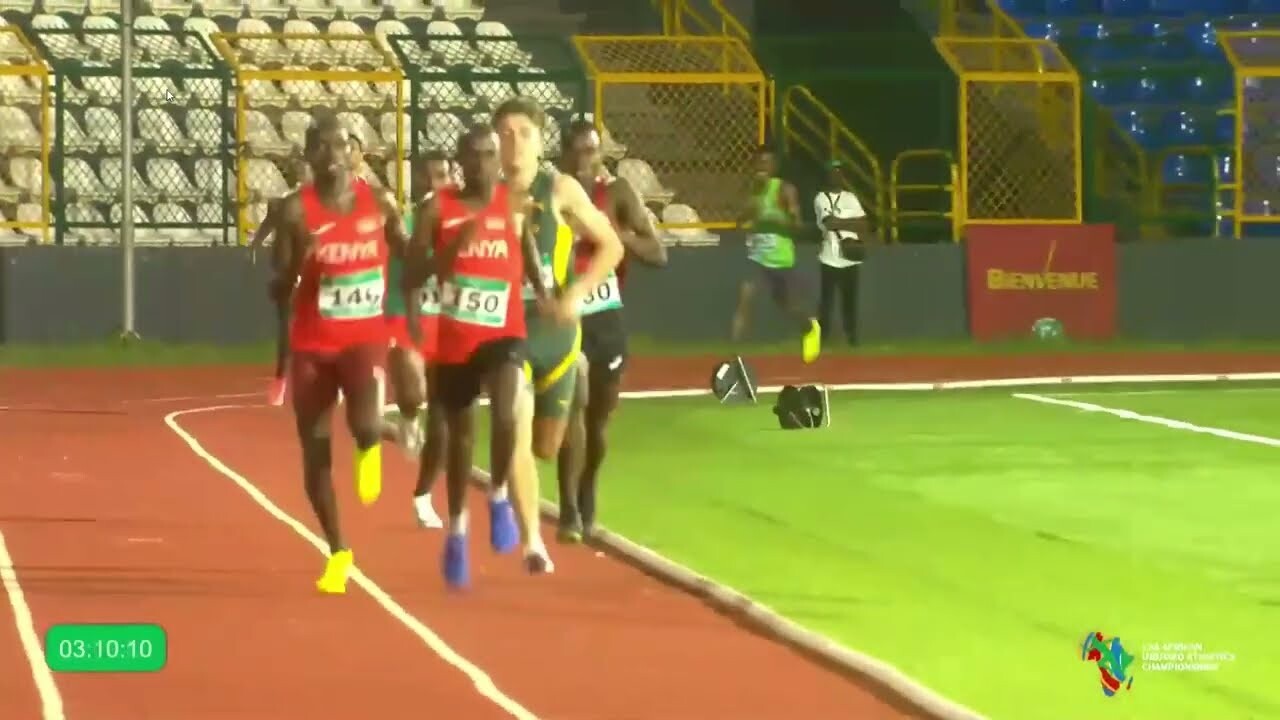
As a result of his standout performance, Ngetich has secured an opportunity to study and train in the United States on a scholarship, marking a major step forward in his athletic and academic journey.
“This is a huge moment for Lawi and our camp,” said Coach Newton Cheruiyot. “He’s worked hard and shown dedication every day. We’re proud of what he’s accomplished and excited for what’s next.”
This achievement reinforces the mission of KATA Camps to develop young talent by providing structured training, mentorship, and life-changing opportunities for the next generation of champions.
Follow My Best Runs for more updates on rising stars and inspiring stories from the global running community.
(07/17/2025) ⚡AMP
by Boris Baron
BREAKING: Ruth Chepngetich Provisionally Suspended After Positive Test for Banned Substance
Marathon world record holder Ruth Chepngetich has been provisionally suspended by the Athletics Integrity Unit (AIU) after testing positive for hydrochlorothiazide, a banned diuretic often used as a masking agent.
Chepngetich stunned the world on October 13, 2024, when she clocked a jaw-dropping 2:09:56 at the Chicago Marathon—becoming the first woman to run under 2 hours and 10 minutes. Her performance not only set a new world record but also marked a historic milestone in women’s distance running.
Now, that performance is under serious scrutiny.
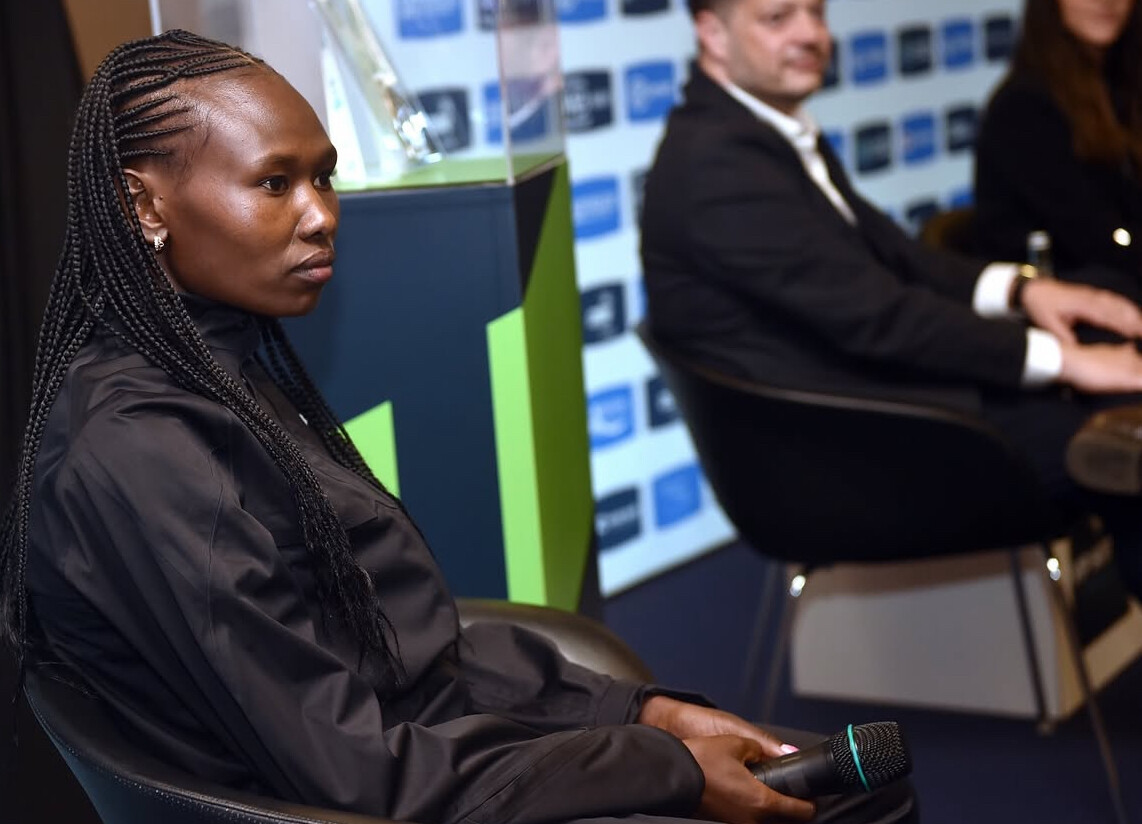
According to the AIU, the Kenyan athlete’s positive test came from a sample collected on March 14, 2025. She was notified of the result in April and chose to voluntarily suspend herself on April 19, pending further investigation. The AIU formally charged her this week and imposed a provisional suspension effective immediately.
Hydrochlorothiazide is classified under WADA’s list of banned substances, not because it enhances performance directly, but because it can potentially mask the use of other performance-enhancing drugs.
Why are we learning about this now?
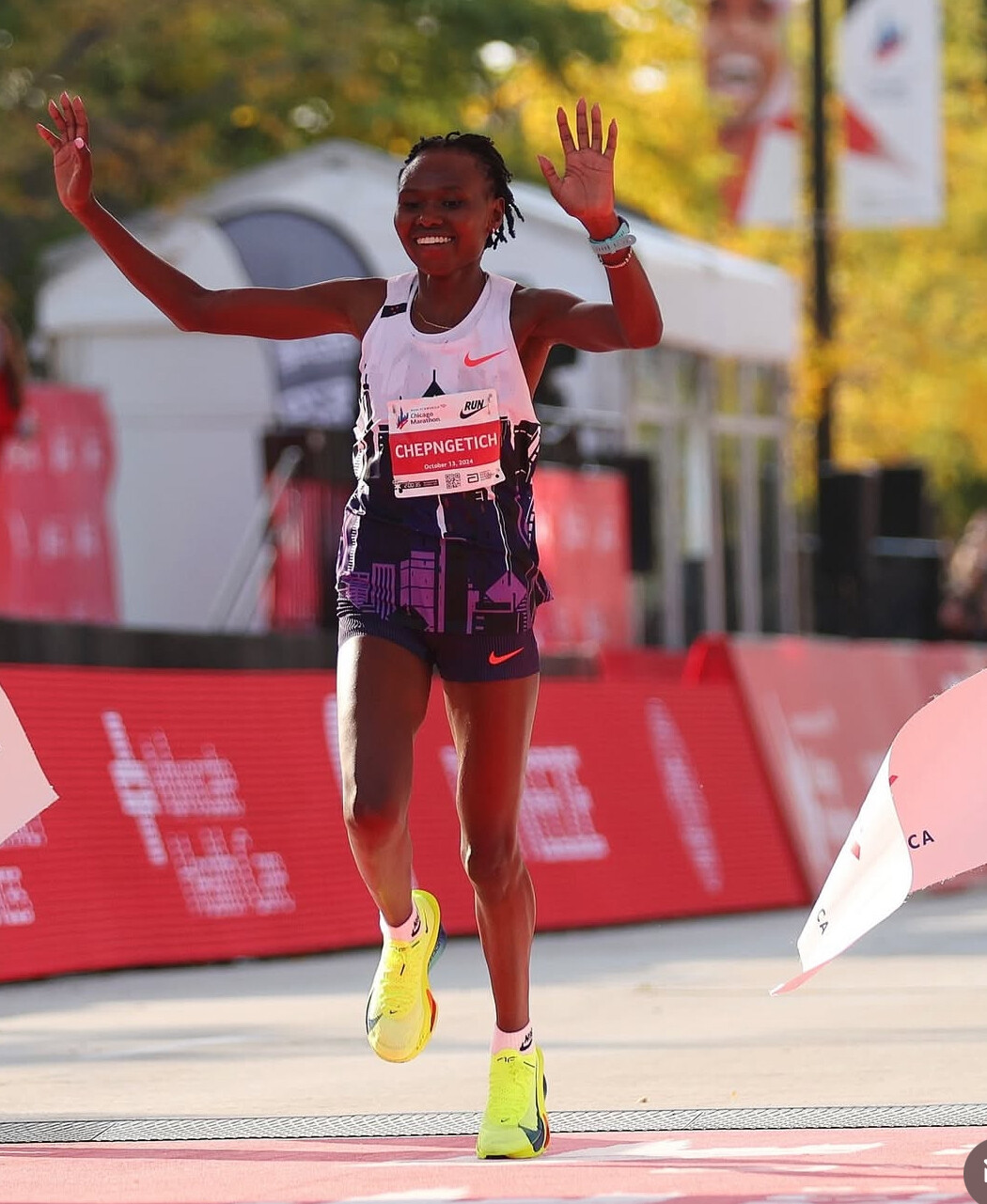
While Chepngetich was informed of the result and voluntarily suspended herself back in April, the AIU typically delays public announcements until formal charges are filed and due process is underway. That happened on July 17, triggering the widespread media coverage now surfacing.
Will her world record be annulled?
That remains to be seen. The AIU has not disqualified any of her past results yet, including the 2:09:56 mark from Chicago. However, if it’s determined that a banned substance or its masking agent was in her system during the time of the record-setting performance—or that it was part of a pattern of use—World Athletics may strip her of the title.
Until a ruling is made, Chepngetich remains provisionally suspended, and her world record is still recognized.
This case adds to the growing concerns surrounding transparency and anti-doping protocols in elite distance running. For now, the running world awaits the outcome of the disciplinary proceedings.
Follow My Best Runs for the latest updates on this developing story and other breaking news from the world of road racing and track & field.
(07/17/2025) ⚡AMPby Boris Baron
Kirika, Wambui, Wanjiku, and Mwaniki Deliver Breakout Performances at 47th KATA Time Trial in Thika
Thika, Kenya, July 16, 2025 — The KATA Time Trial series continues to thrive as the 47th edition unfolded Wednesday morning at KATA’s flagship training center in Thika. A total of 37 athletes—28 men and 9 women—lined up to test their fitness over the 5km and 10km distances. The event showcased rising stars, personal breakthroughs, and a glimpse of what’s coming as KATA prepares to expand its time trial series across all 22 of its Kenyan locations.
Zachary Kirika, 24, headlined the men’s 5km with a dominant performance from the gun. He clocked a personal best of 14:04, lowering his previous time by over 35 seconds while running smooth and composed throughout. He now ranks among the top KATA 5km performers in 2025.
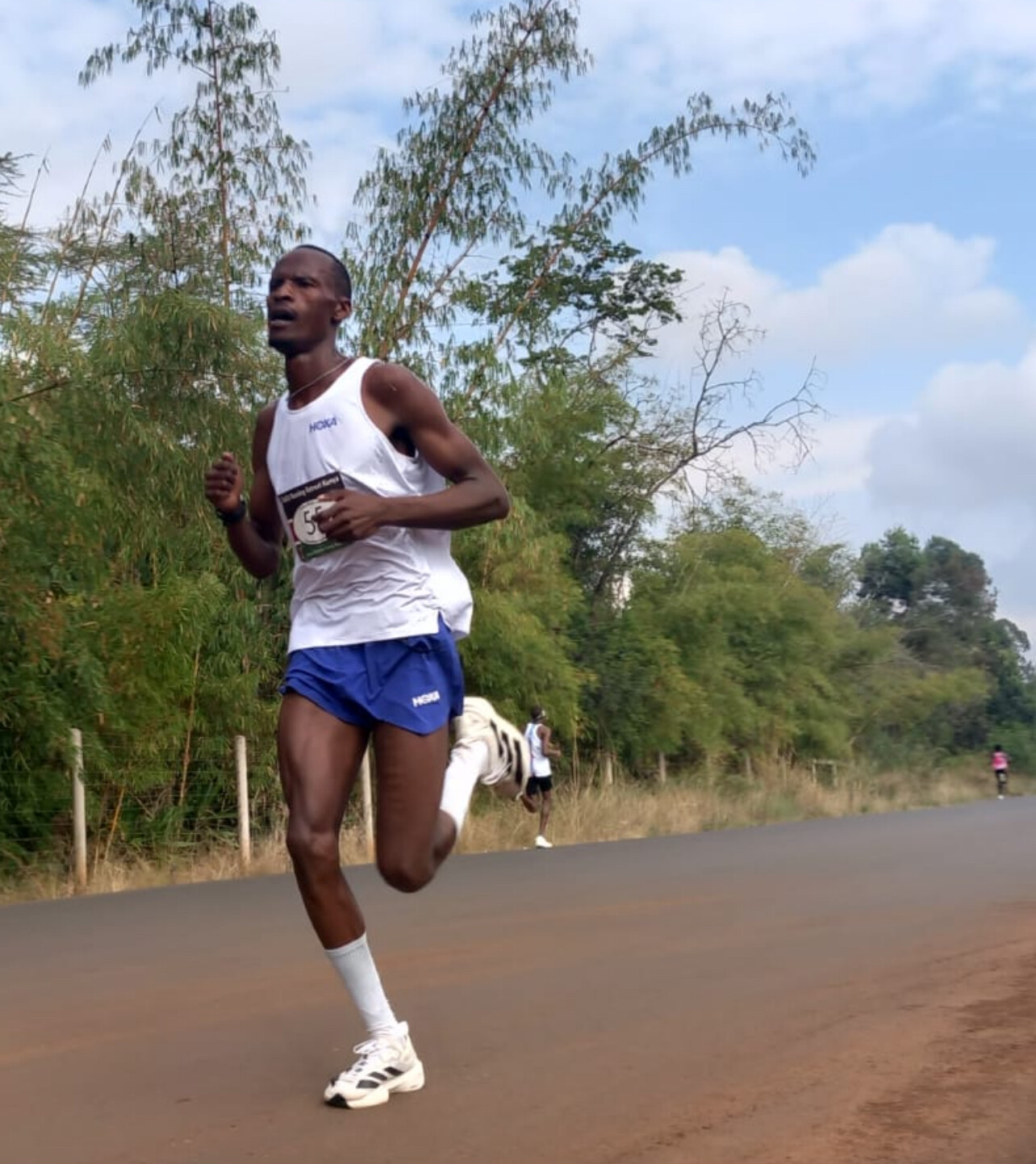
Also making headlines was Justus Nyamai, a 17-year-old with enormous potential. He finished 3rd in 15:40, also a personal best, signaling his steady rise through the KATA ranks.
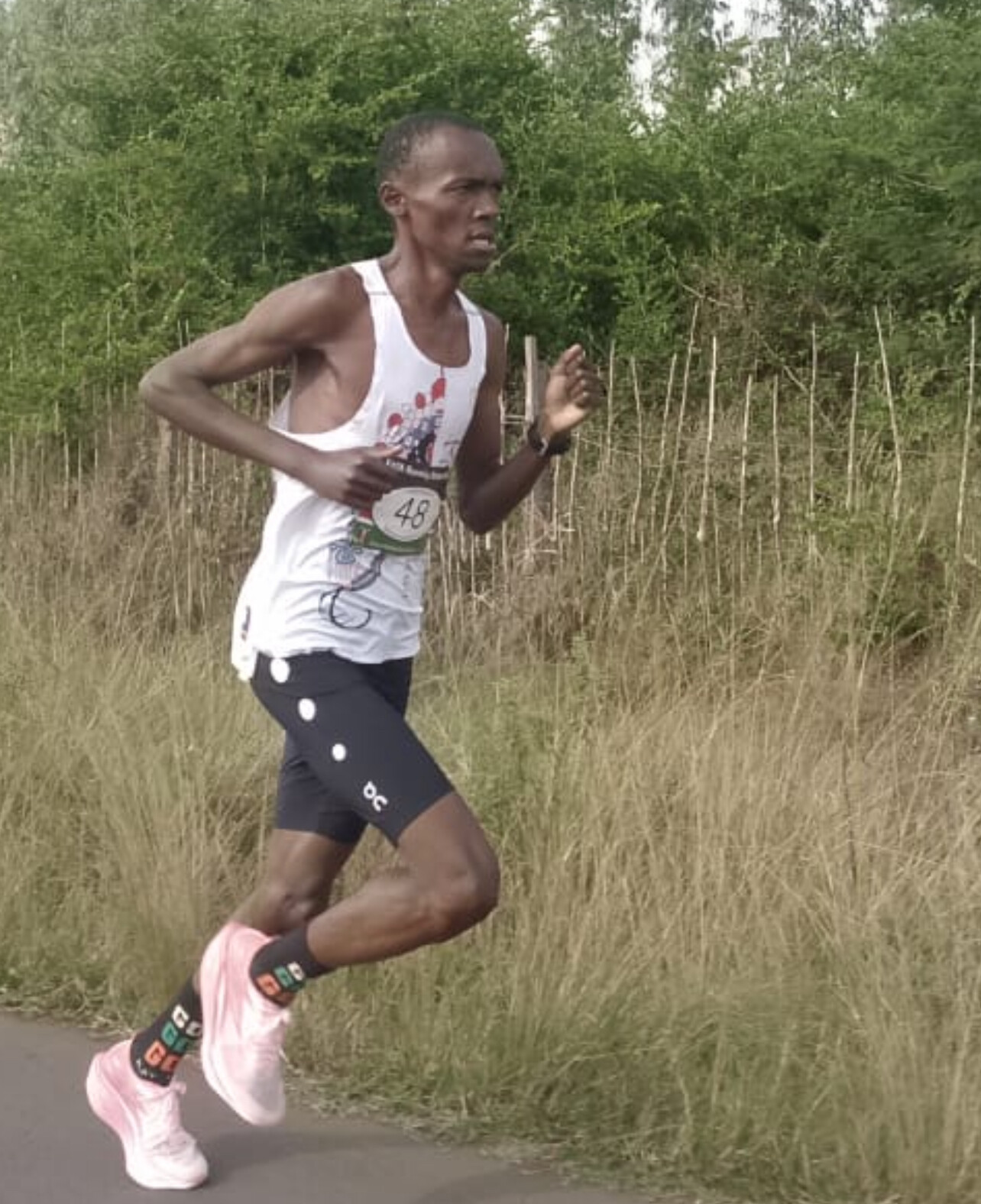
In the women’s 5km, 15-year-old Ann Wanjiku led from the front and took the win in 19:44, pacing herself smartly to secure another strong finish for the young talent.
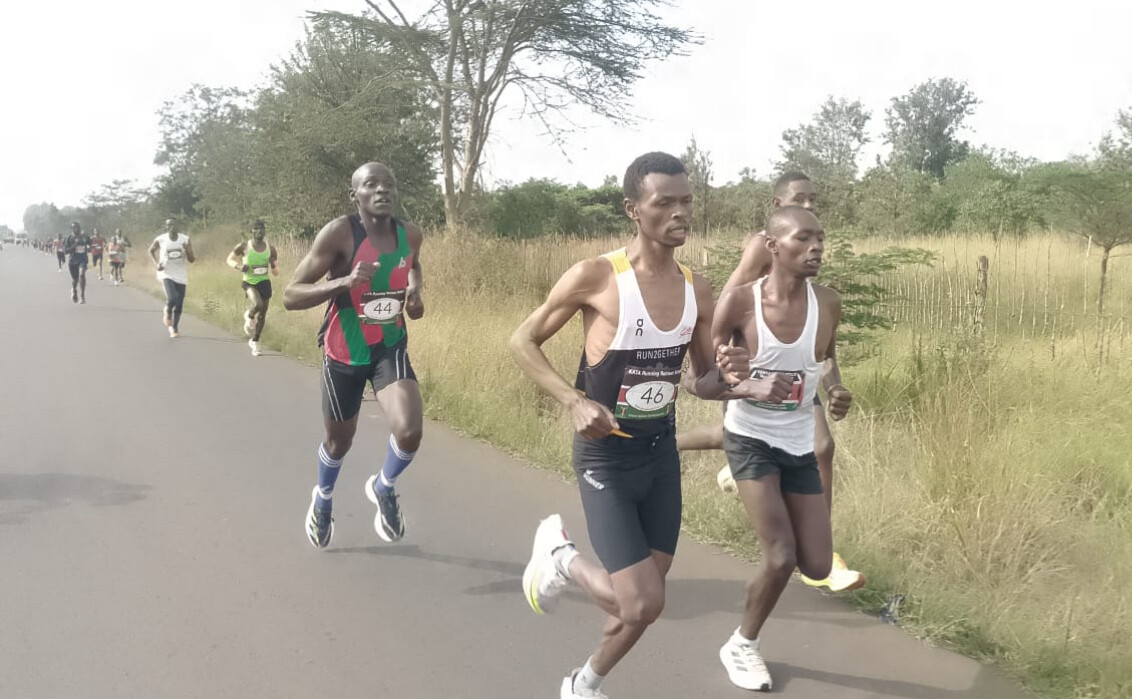
The men’s 10km produced a competitive front pack, but it was Peter Mwaniki, 27, who came out on top with an impressive 29:15 finish. He was closely followed by Stephen Ngigi in 29:39, as both athletes pushed each other through the final kilometers.
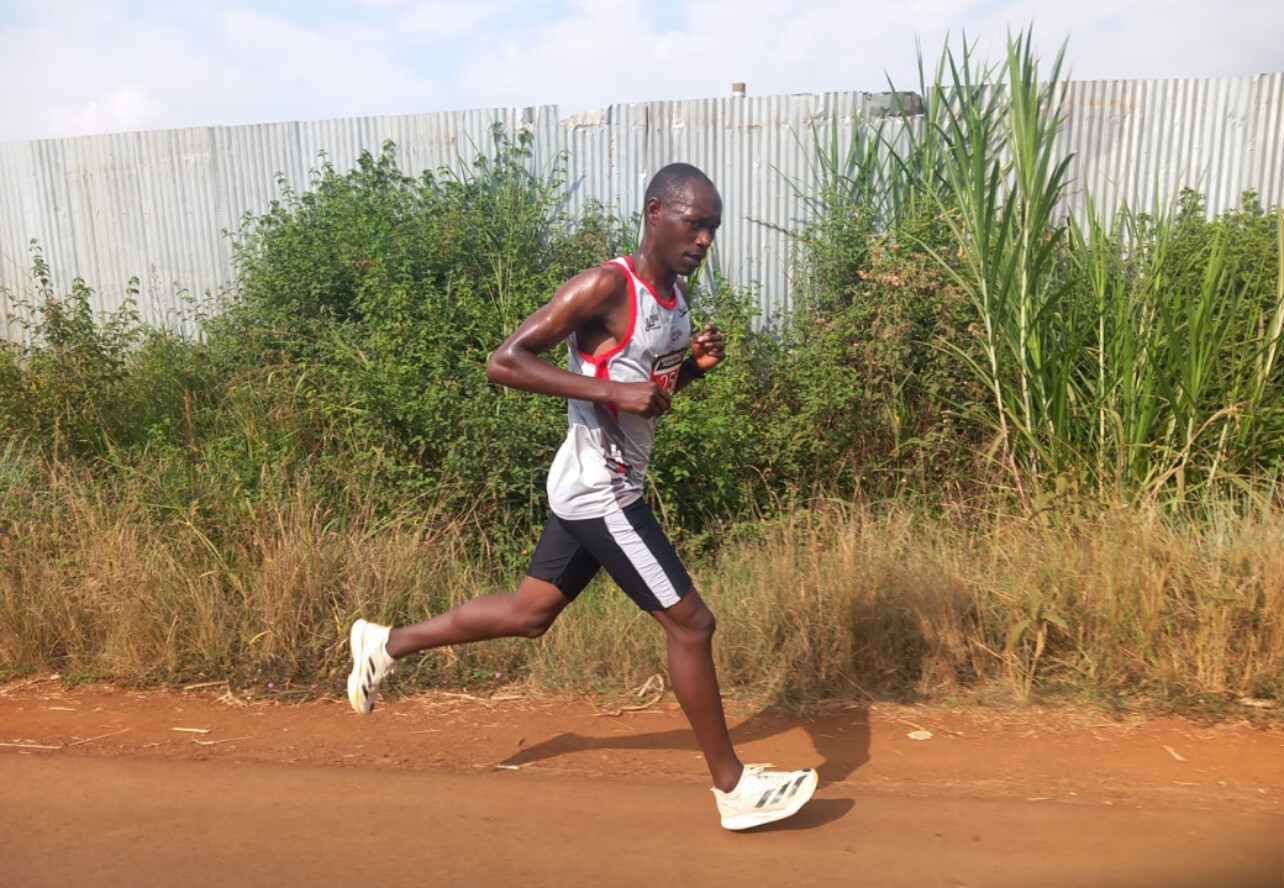
The women’s 10km brought an emotional highlight. Lois Wambui, 25, returned to racing after battling injuries for months. She clocked a personal best of 34:16, trimming more than 30 seconds off her previous best. Her performance signaled that she is back and ready to chase podiums again.
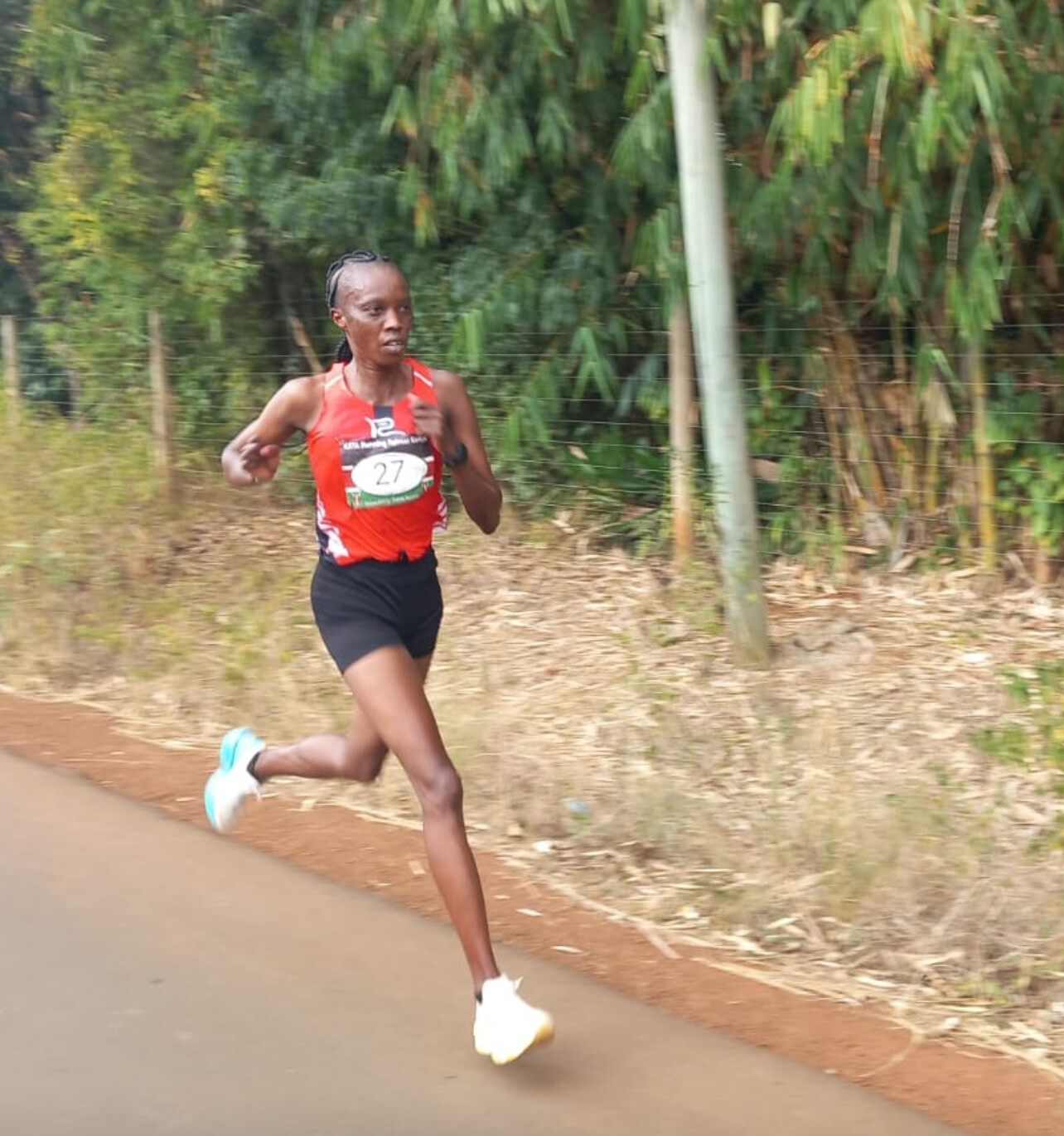
Full Results – 47th KATA Time Trial (July 16, 2025)
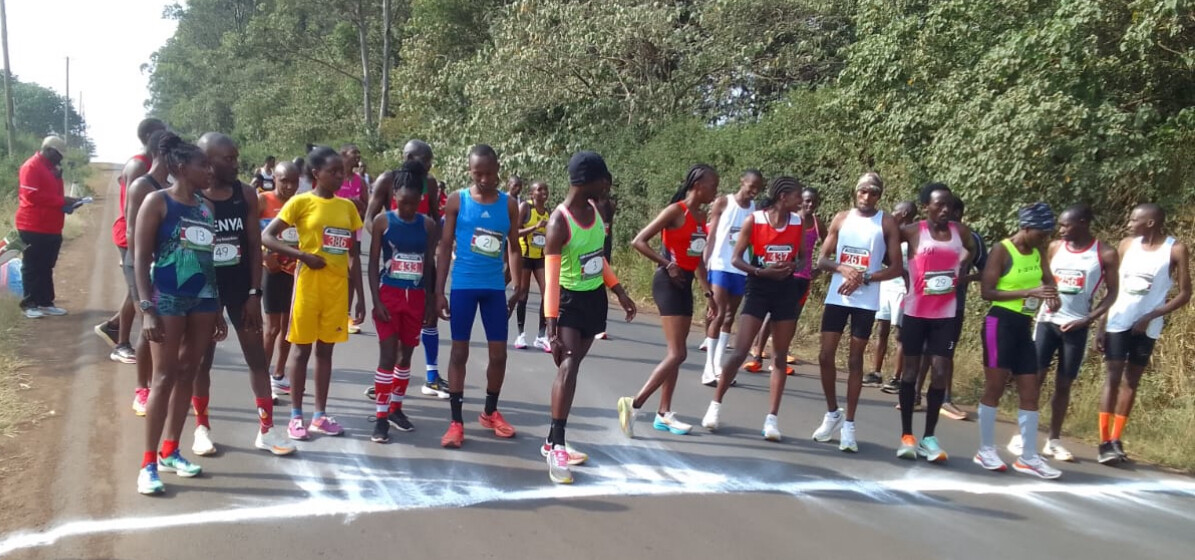
5km – Men
1. Zachary Kirika (24) – Bib 399 – 14:04
2. Kelvin Lagui (23) – Bib 167 – 15:33
3. Justus Nyamai (17) – Bib 431 – 15:40
4. Godfrey Kahora (19) – Bib 149 – 15:41
5. Ishmael Mburu (29) – Bib 003 – 15:54
6. Christopher Kimani (20) – Bib 021 – 16:07
7. Collins Mutungi (18) – Bib 022 – 17:07
8. Eric Mwaura (18) – Bib 223 – 17:14
9. Brandon Mutungi (17) – Bib 409 – 18:11
10. Kelvin Muchiri (18) – Bib 018 – 18:45
11. Frederick Maina (17) – Bib 060 – 20:21
5km – Women
1. Ann Wanjiku (15) – Bib 433 – 19:44
2. Tabitha Wanjiru (15) – Bib 386 – 23:18
10km – Men
1. Peter Mwaniki (27) – Bib 055 – 29:15
2. Stephen Ngigi (22) – Bib 374 – 29:39
3. Kelvin Kemoi (23) – Bib 261 – 30:11
4. Boniface Mungai (29) – Bib 029 – 30:17
5. John Njuguna (29) – Bib 046 – 30:25
6. Charles Ndirangu (24) – Bib 044 – 30:46
7. Peter Wanyoike (29) – Bib 039 – 30:50
8. John Chege (19) – Bib 257 – 30:51
9. Joel Maina (40) – Bib 057 – 31:24
10. James Muriithi (31) – Bib 256 – 31:34
11. Joseph Karanja (44) – Bib 206 – 32:29
12. Joseph Wanjiru (39) – Bib 464 – 32:44
13. Johnson Kaberia (28) – Bib 066 – 33:09
14. Vincent Kiprotich (23) – Bib 419 – 33:46
15. Joseph Nyota (20) – Bib 001 – 34:40
16. Simon Ngeresa (26) – Bib 049 – 34:46
17. Charles Ndirangu (64) – Bib 020 – 38:24
10km – Women
1. Lois Wambui (25) – Bib 056 – 34:16
2. Susan Njuu (37) – Bib 027 – 34:29
3. Virginia Wanjiru (24) – Bib 032 – 34:47
4. Karen Chepkemoi (23) – Bib 437 – 37:11
5. Ruth Maina (22) – Bib 397 – 37:20
6. Jane Wanjiru (43) – Bib 013 – 38:29
7. Lucy Muritu (41) – Bib 053 – 44:16
What’s Next for KATA Time Trials
The next KATA Time Trial is scheduled for August 13, 2025, in Thika, and it will mark the official launch of a nationwide expansion. Beginning in August, all 21 other KATA Running Camps and Potato Farms across Kenya will start hosting official KATA Time Trials.
• The Thika location will continue to host trials monthly.
• The other 21 locations will host a time trial every other month, giving their athletes a chance to race at Thika in between.
This expansion brings the total to 22 official KATA Time Trial venues, offering over 300 athletesregular, structured opportunities to race. Importantly, KATA Time Trials are open to all athletes, not just Kenyans.
5th Annual Kenya Double Road Race – September 20
Another marquee event is on the horizon: the 5th Annual Kenya Double Road Race, scheduled for Saturday, September 20, 2025, in Thika.
This unique Double Racing format includes a 10K leg, followed by a break, and then a 5K leg. The combined time determines the final standings.
• Entry fee: 600 KES
• Optional t-shirt: 600 KES additional
• Prize purse: At least 100,000 KES
At last year’s event, Shadrack Kenduiywa set a world record for the Double format, clocking 42:34 combined. He ran 28:33 for the 10K, then came back 1 hour and 45 minutes later to run 14:01 for the 5K.
(07/16/2025) ⚡AMPby Boris Baron
KATA Time Trial Series
Welcome to the KATA Monthly Time Trial Held at the Kenyan Athletics Training Academy in Thika, Kenya, the KATA Monthly Time Trial is a unique and inclusive event designed to support runners of all levels in achieving their goals and showcasing their fitness. This event offers both 10K and 5K distances on an accurate, certified course, providing participants with...
more...The world’s oldest marathon runner, Fauja Singh, who was still competing after turning 100, died in a hit-and-run on Monday. He was 114.
“Can you imagine living this long and dying in this fashion?” said Bob Anderson, founder of My Best Runs. “I’m deeply saddened by the tragic loss Shri Fauja Singh ji. He was the embodiment of endurance and spirit.”
The Turbaned Tornado Who Defied Time

Born on April 1, 1911, in Beas Pind, Punjab, Fauja Singh didn’t learn to walk until he was five due to childhood weakness. No one could have predicted he would go on to become one of the most iconic figures in distance running history.
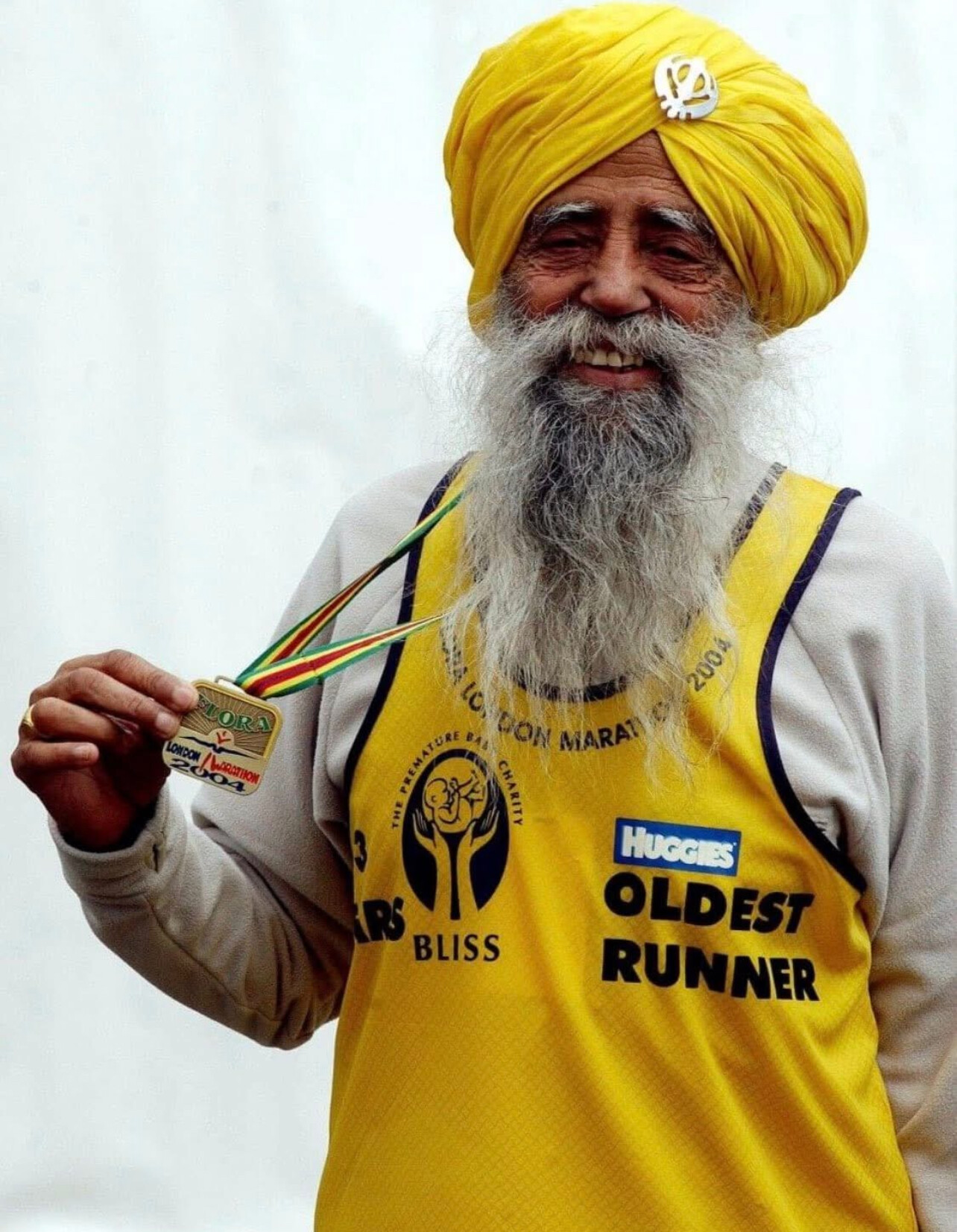
He took up running in his late 80s to cope with the grief of losing his wife and son. What began as a form of healing turned into a second life as a marathoner. At age 89, Singh ran his first marathon—the 2000 London Marathon—finishing in 6 hours and 54 minutes.

A Record-Breaking Journey
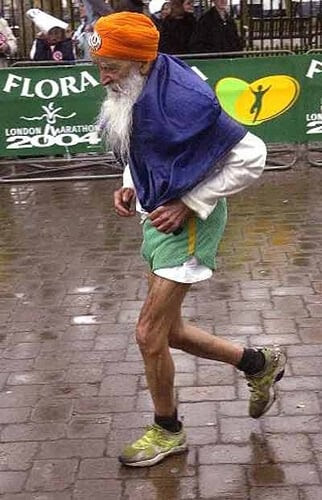
Over the next decade, Singh became a global sensation:
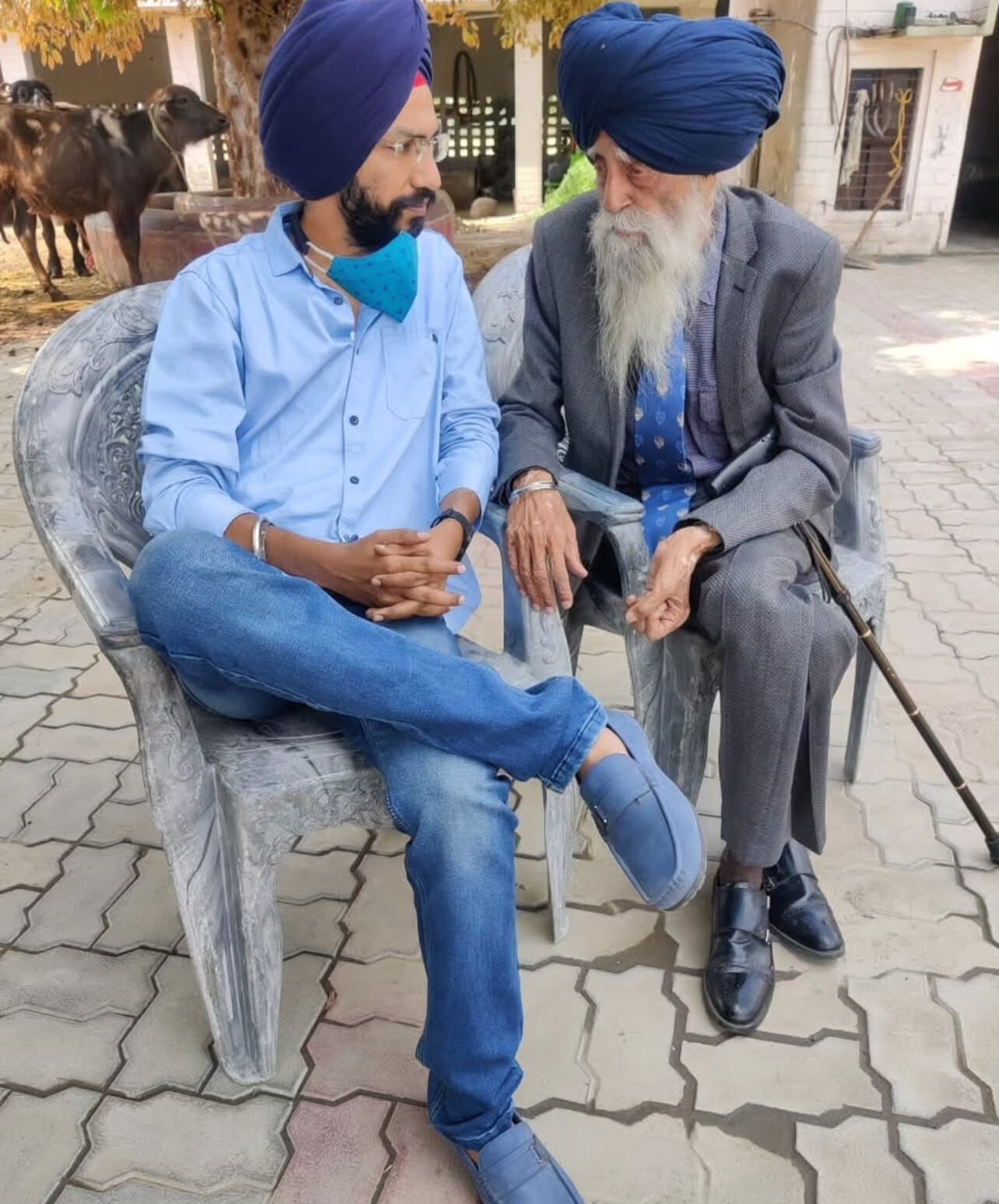
• He set multiple age-group world records from 100m to the marathon in the 90+ and 100+ categories.
• In 2011, at age 100, he became the first centenarian to complete a marathon (Toronto Waterfront) in 8 hours 11 minutes.
• He carried the Olympic torch in both the 2004 Athens and 2012 London Games.
• Singh completed his final race—a 10K in Hong Kong—in 2013 at the age of 101.
Though Guinness did not certify his 100+ age records due to lack of birth documentation, the running world recognized him for what he was: the oldest marathoner to ever cross the finish line.
A Global Inspiration
Fauja Singh became more than a runner—he became a symbol. With his flowing white beard, bright smile, and signature turban, he challenged perceptions of aging and inspired generations.
“He was a powerhouse of positivity,” Anderson said. “He showed the world what’s possible, regardless of age.”
Not just admired by runners, Singh was revered across cultures and nations. Tributes have poured in from athletes, politicians, and fans across the globe.
A Tragic End
On July 14, 2025, Fauja Singh was struck and killed by a speeding vehicle in his hometown of Jalandhar, Punjab, while on his way to his evening walk. He was 114 years old.
The hit-and-run incident occurred just 400 meters from his home. Despite being rushed to the hospital, he succumbed to his injuries hours later.
Local authorities are actively investigating the incident, but no arrest has been made at the time of publication.
A Final Salute
Fauja Singh lived every one of his 114 years with purpose. He ran with passion, smiled through hardship, and inspired millions.
“This was the only way death could conquer him—doing what he loved the most,” said Bob Anderson. “We salute him. May his soul rest in peace."
Fauja Singh will not be remembered for the way he died, but for the way he lived—and ran.
"I just can not believe he is gone," says Bob " but his spirt will live forever."
(07/15/2025) ⚡AMPby Boris Baron
“I Could Have Run 3:24” — Hicham El Guerrouj Reflects on His Still-Unbroken 1500m World Record from July 14, 1998
On July 14, 1998, Moroccan middle-distance legend Hicham El Guerrouj delivered one of the most iconic performances in track and field history, running a stunning 3:26.00 in the 1500m at the Golden Gala meet in Rome—a world record that still stands 27 years later.
But according to El Guerrouj himself, that time could have been even faster with today’s advancements.
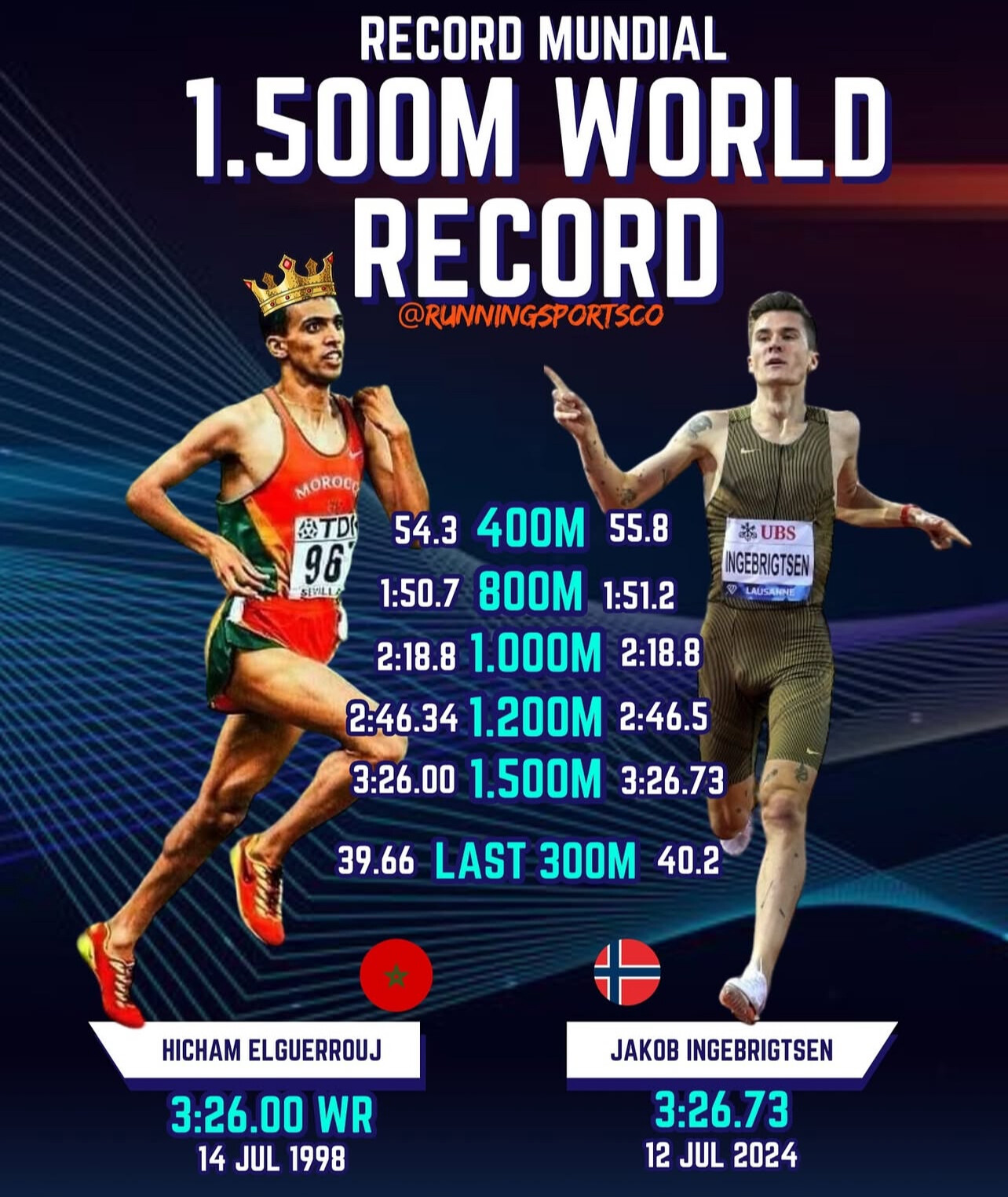
“With today’s technology—carbon-plated shoes, wavelight pacing, and modern training science—I could have run 3:24,” he recently told reporters.
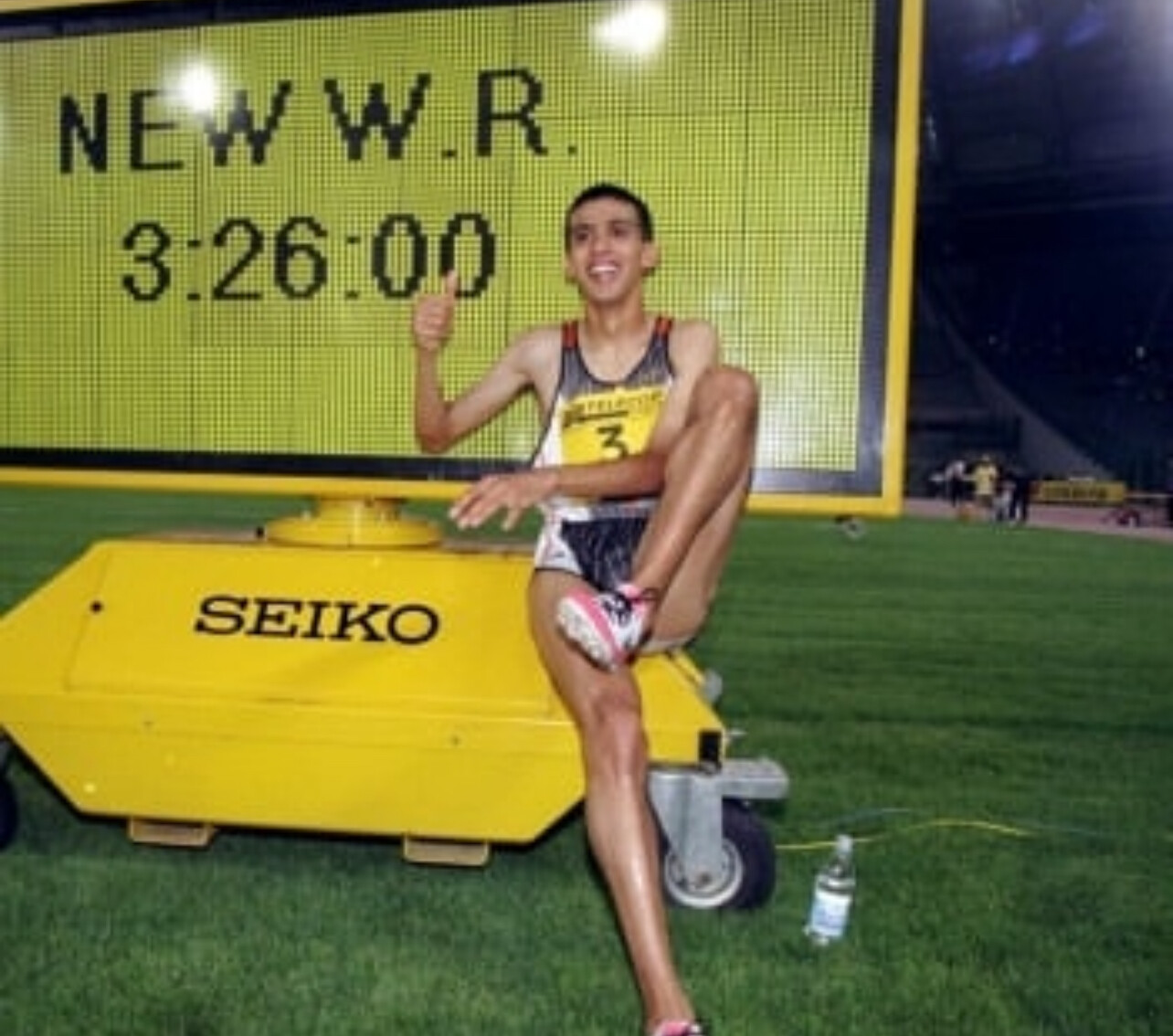
That bold claim holds weight when you look at the splits from that historic night. El Guerrouj covered the final 400m in 53.03 seconds and blazed through the last 300m in 39.66 seconds—numbers that rival top 800m finishes.
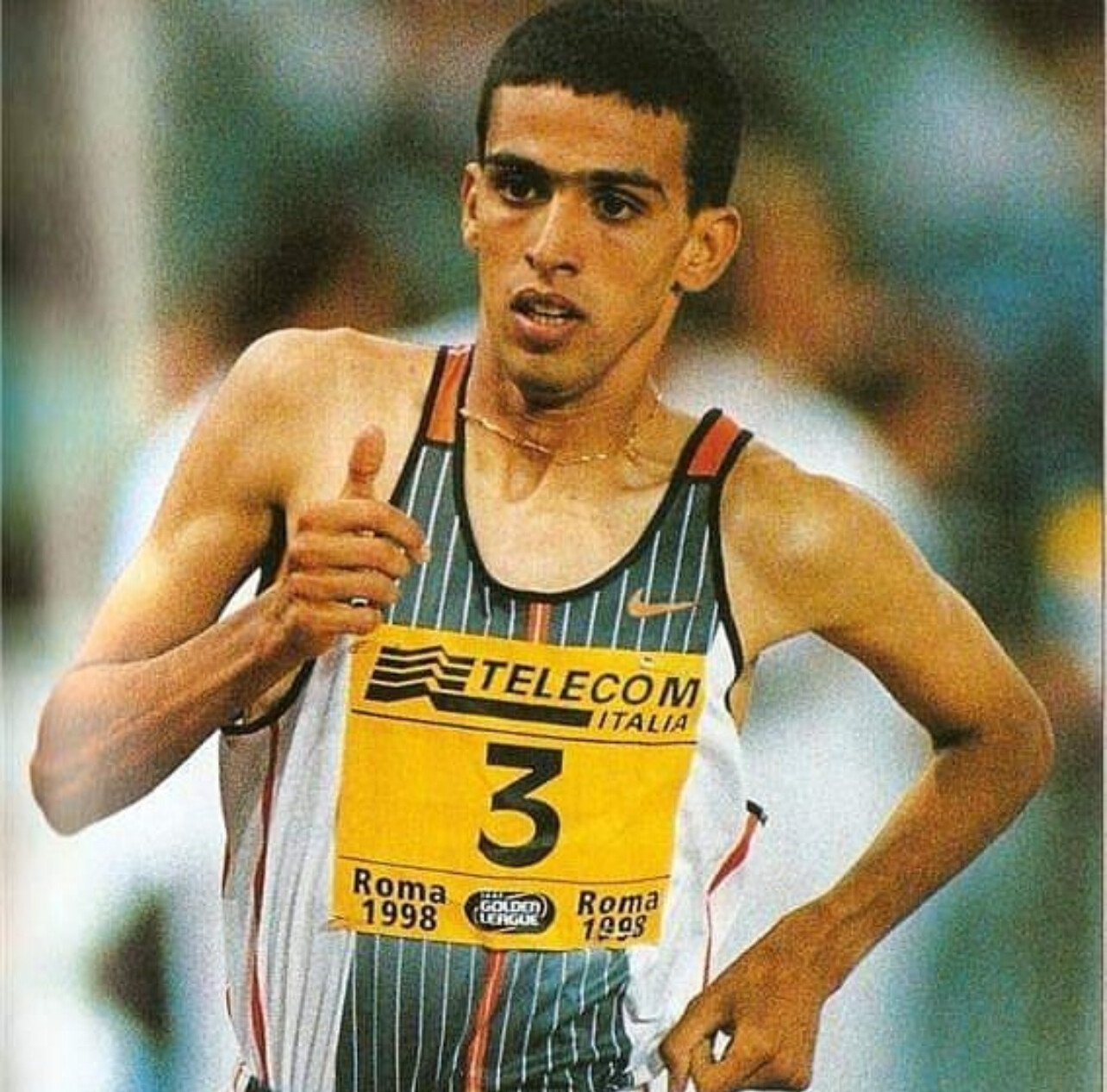
What makes this feat even more remarkable is that it was accomplished in an era before super spikes, pacer lights, and the finely tuned sports science that athletes now rely on. His performance was built on years of focused training, tactical brilliance, and unmatched closing speed.

His time of 3:26.00 remains not only the fastest ever run over 1500m, but also the longest-standing men’s world record in any Olympic track distance between 800m and 10,000m.
With today’s stars like Jakob Ingebrigtsen inching closer to the mark, the debate continues: how much faster would El Guerrouj have gone in 2025 conditions?
For now, the record stands—and so does the legend of Hicham El Guerrouj.
(07/14/2025) ⚡AMPby Boris Baron
Brian Musau Breaks 13-Minute Barrier in the 5,000m—Becomes Third Collegian Ever to Do So
In a performance that sent shockwaves through collegiate distance running, Brian Musau of Oklahoma State University clocked a stunning 12:59.82 at the 2025 Sunset Tour in Los Angeles on July 12, becoming only the third college athlete in history to dip under the 13-minute barrier for 5,000 meters.
The 22-year-old Kenyan star, who is also the 2025 NCAA 5,000m champion, executed a perfectly timed race against a world-class field, showcasing both tactical savvy and extraordinary finishing strength. His mark makes him the fastest collegian in the world this year and moves him into rarefied territory alongside two legendary names: Henry Rono of Washington State (13:08.4 in 1978) and Salah Hissou of Morocco (12:58.13 in 1996, while studying in France), both of whom were collegians when breaking 13 minutes.
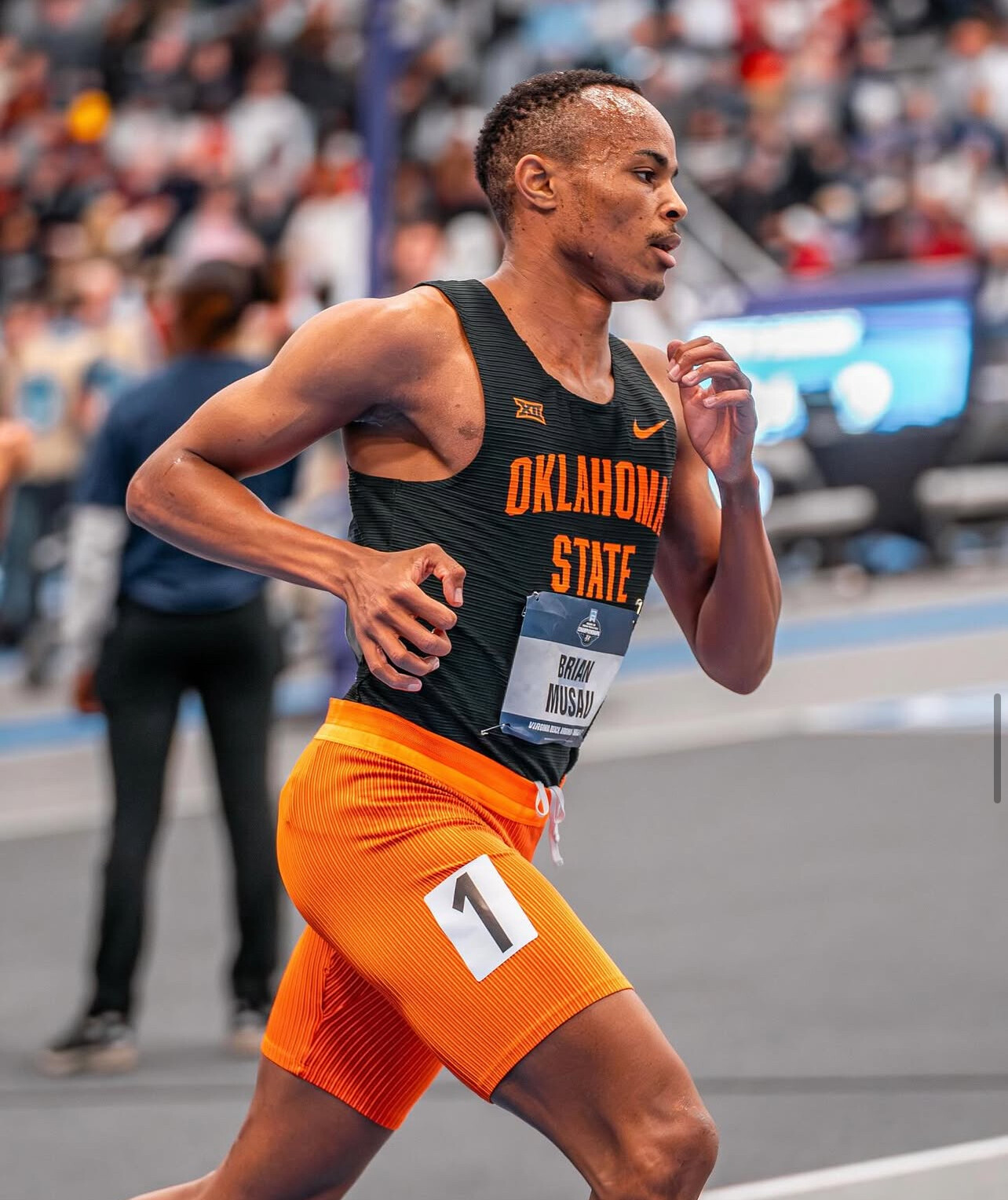
Musau’s performance also makes him just the third Kenyan to go sub-13 in the 5,000m this season, joining elite countrymen Jacob Krop and Nicholas Kimeli, both ranked among the top 10 in the world. It’s a statement not just about Musau’s individual brilliance but also about Kenya’s enduring depth in distance running.
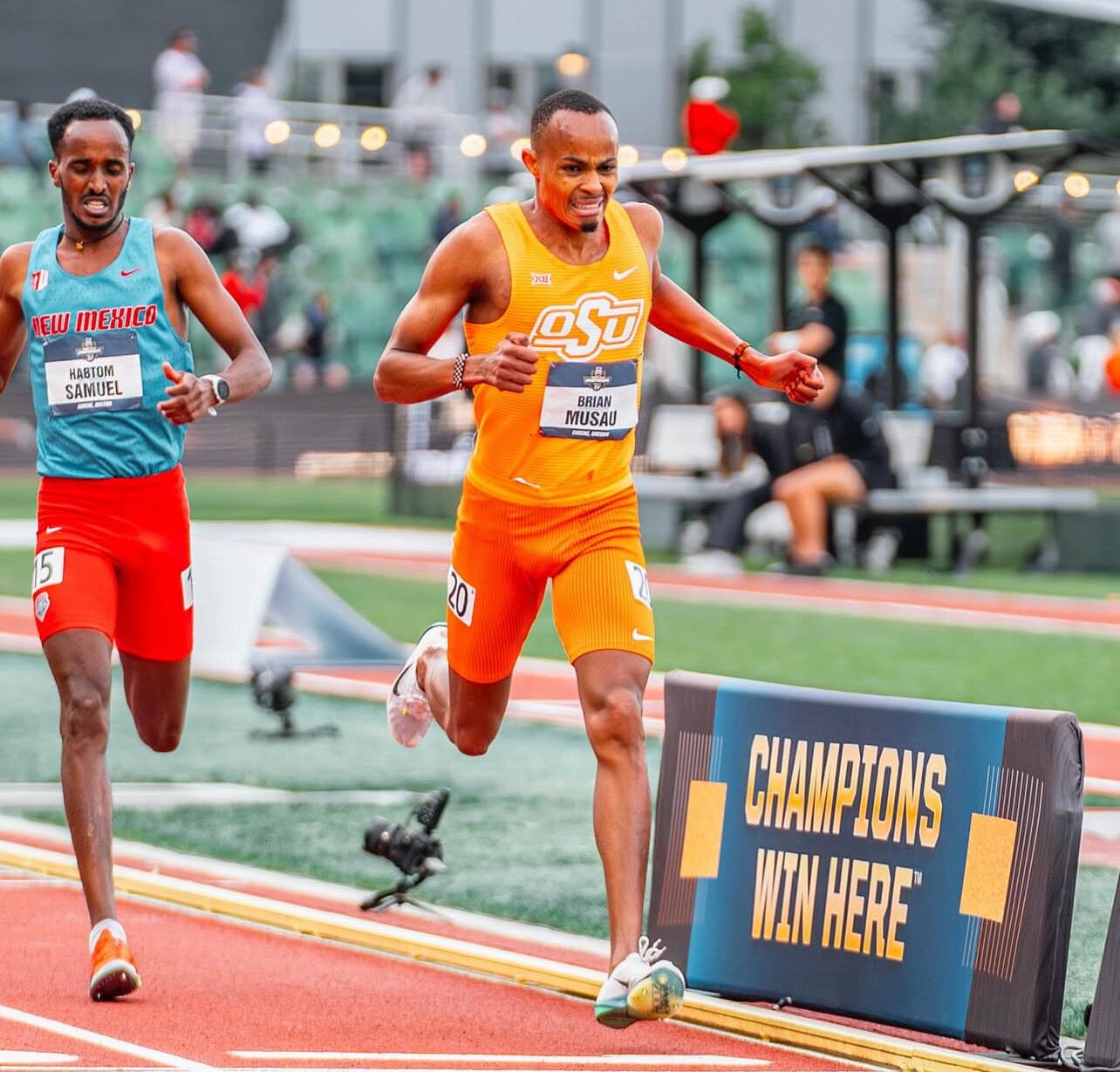
His coach at Oklahoma State, Dave Smith, called the race “a culmination of three years of hard work, patience, and belief.”
As a result of his historic run, Musau has now been invited to the 2025 Kenyan World Championships Trials, to be held July 22 at Nairobi’s Ulinzi Sports Complex—a high-stakes meet where Kenya’s team for the World Athletics Championships will be selected.
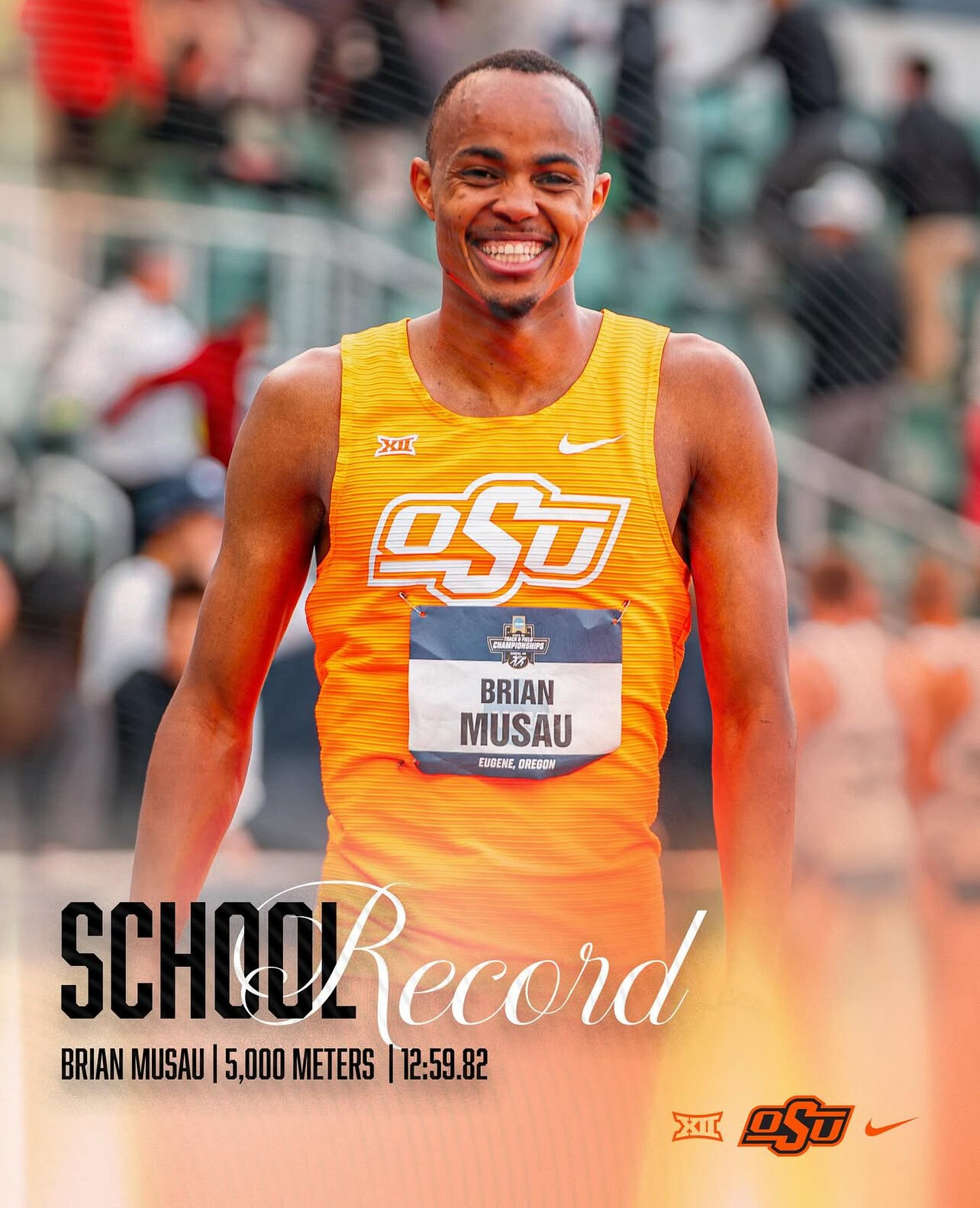
Musau is also a proud member of Townhall Athletics, the growing development and management group guiding several top Kenyan talents.
“This is only the beginning,” Musau told reporters after the race. “My dream is to represent Kenya on the world stage—and now I have that opportunity.”
(07/14/2025) ⚡AMPby Boris Baron
Ludo Pommeret and Katie Schide Dominate a Gritty 2025 Hardrock 100
The 2025 Hardrock 100 delivered everything the ultra-trail world expects from one of the sport’s most iconic races—grit, altitude, heartbreak, and triumph. At the heart of it all, France’s Ludovic “Ludo” Pommeret successfully defended his title, while American ultra star Katie Schide shattered the women’s course record.
Pommeret Goes Back-to-Back
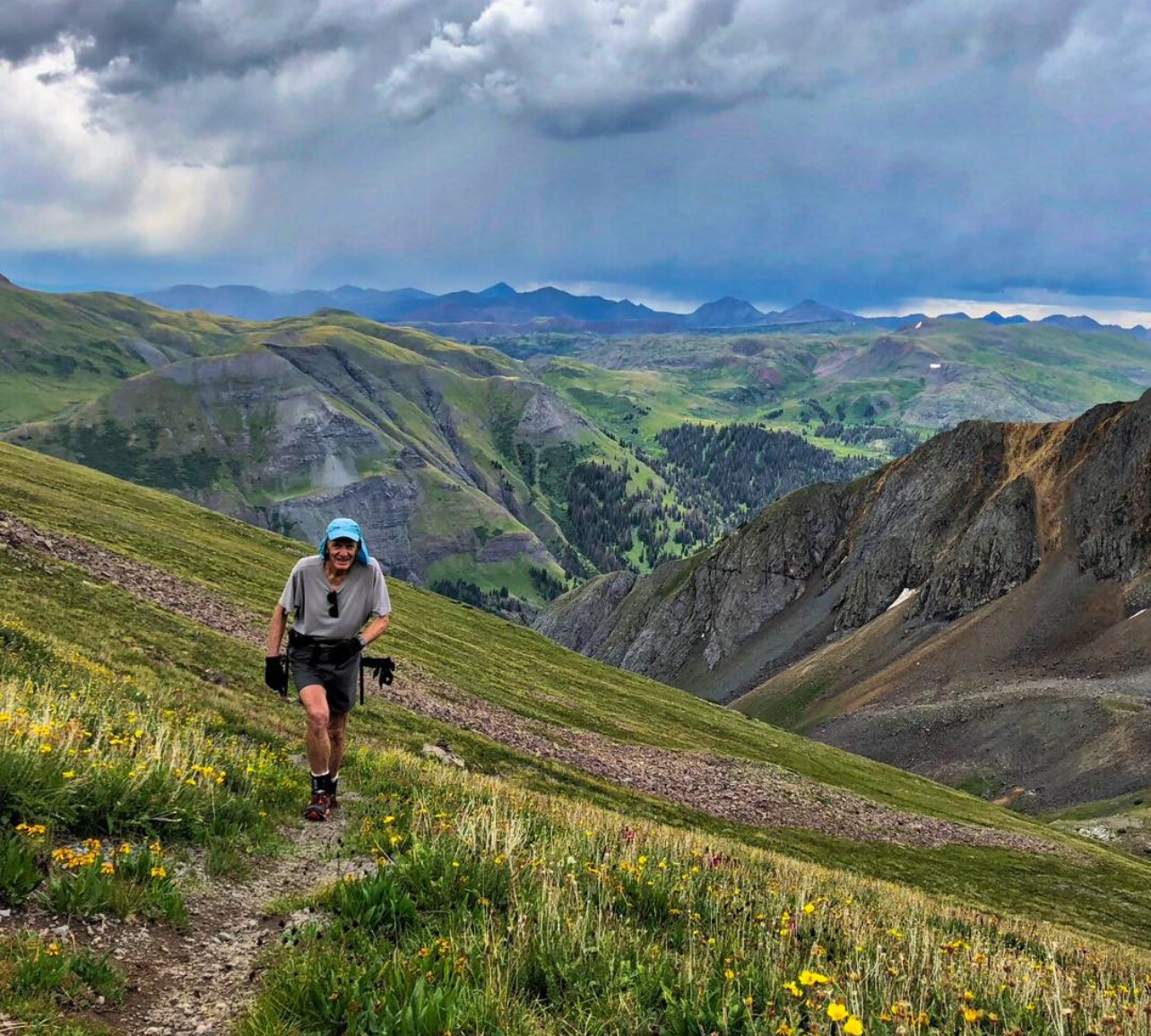
For the second year in a row, the 49-year-old Pommeret conquered the brutal 102.5-mile loop through Colorado’s San Juan Mountains, finishing in 22:21:55—the fifth-fastest time in race history. Battling thin air, smoky conditions from nearby wildfires, and rugged terrain with over 33,000 feet of elevation gain, Pommeret executed a masterclass in pacing.

Starting conservatively on the climbs, he surged on the descents, aided by elite pacers Jim Walmsleyand Vincent Bouillard. By dawn, he had extended his lead and cruised into Silverton well under the 48-hour cutoff, earning another coveted kiss of the Hardrock finish-line rock.
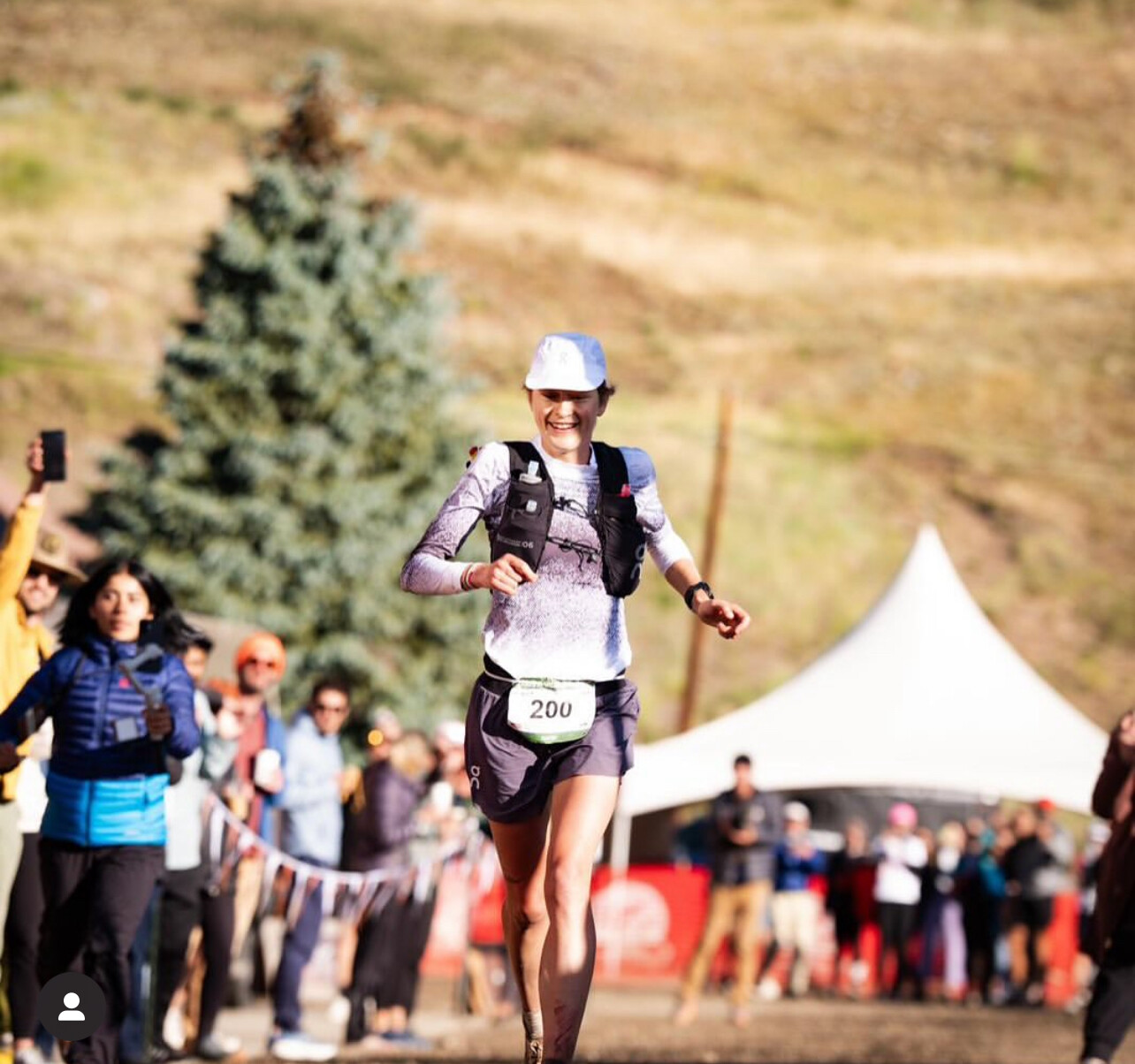
The men’s podium was a French sweep: Mathieu Blanchard placed second in 23:44, followed by Germain Grangier in 24:04.
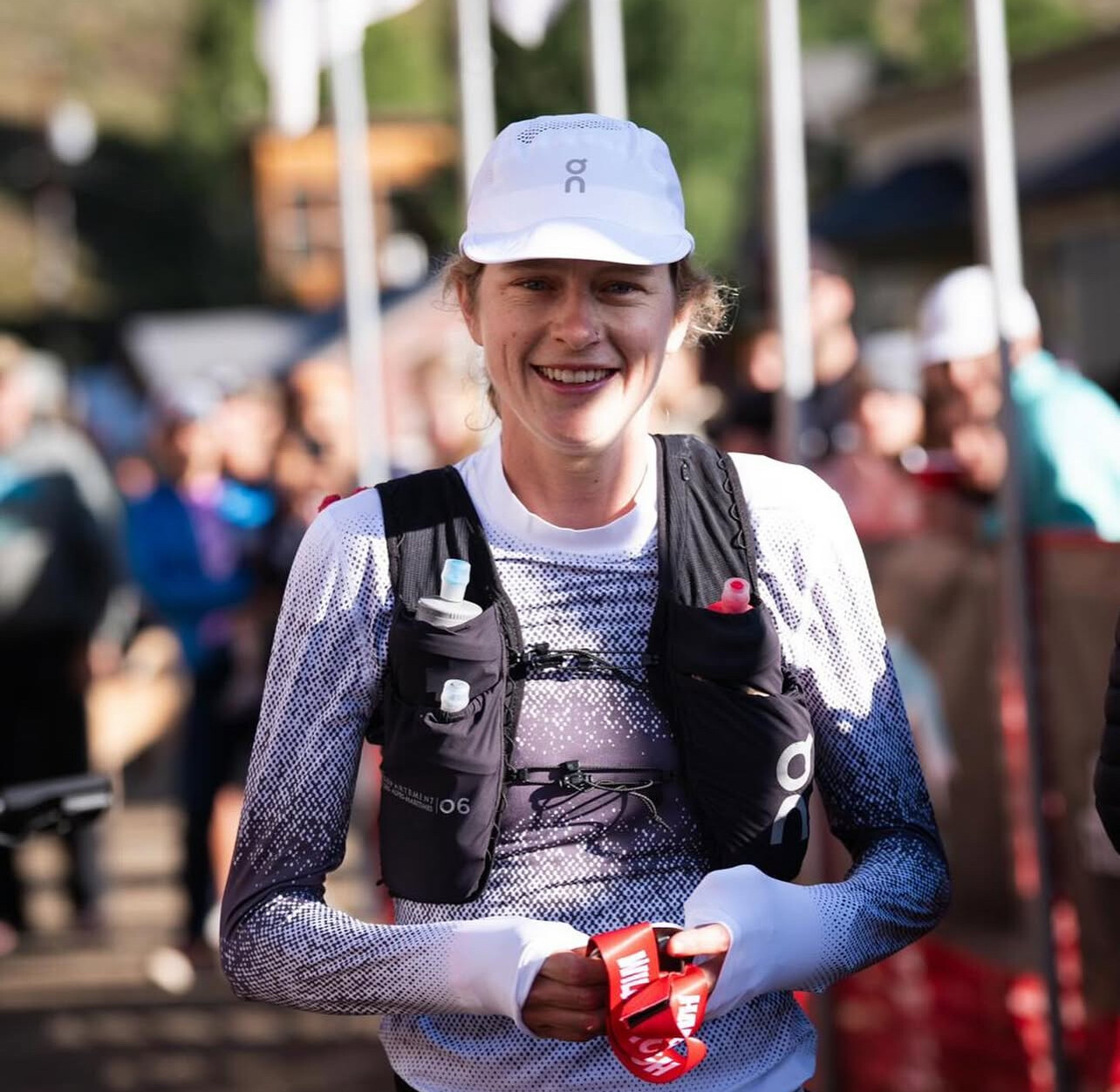
“I was worried about the smoke early on,” Pommeret said afterward, “but the final miles were magic. I even walked the last climb to take it all in.”
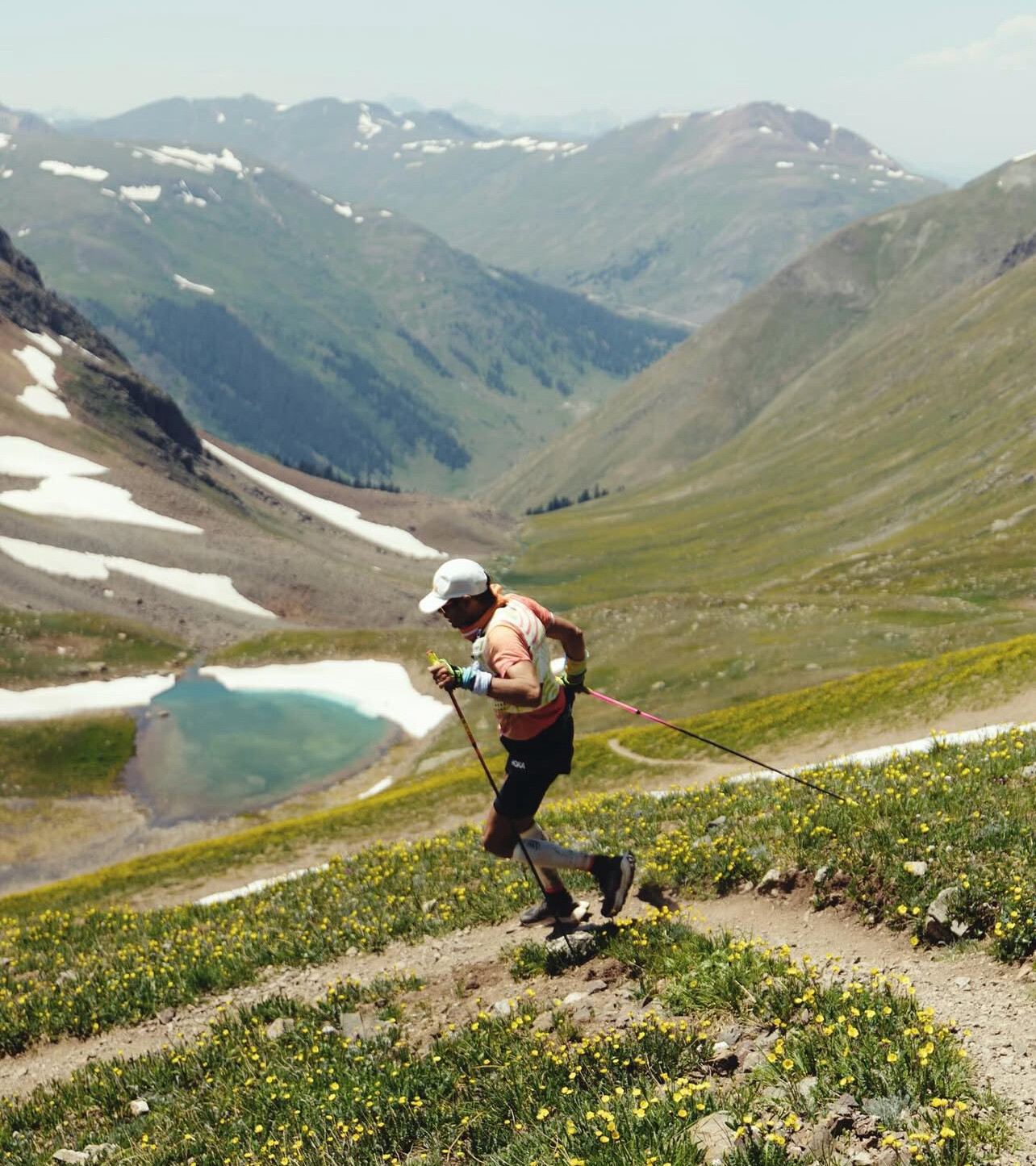
Schide Smashes Course Record
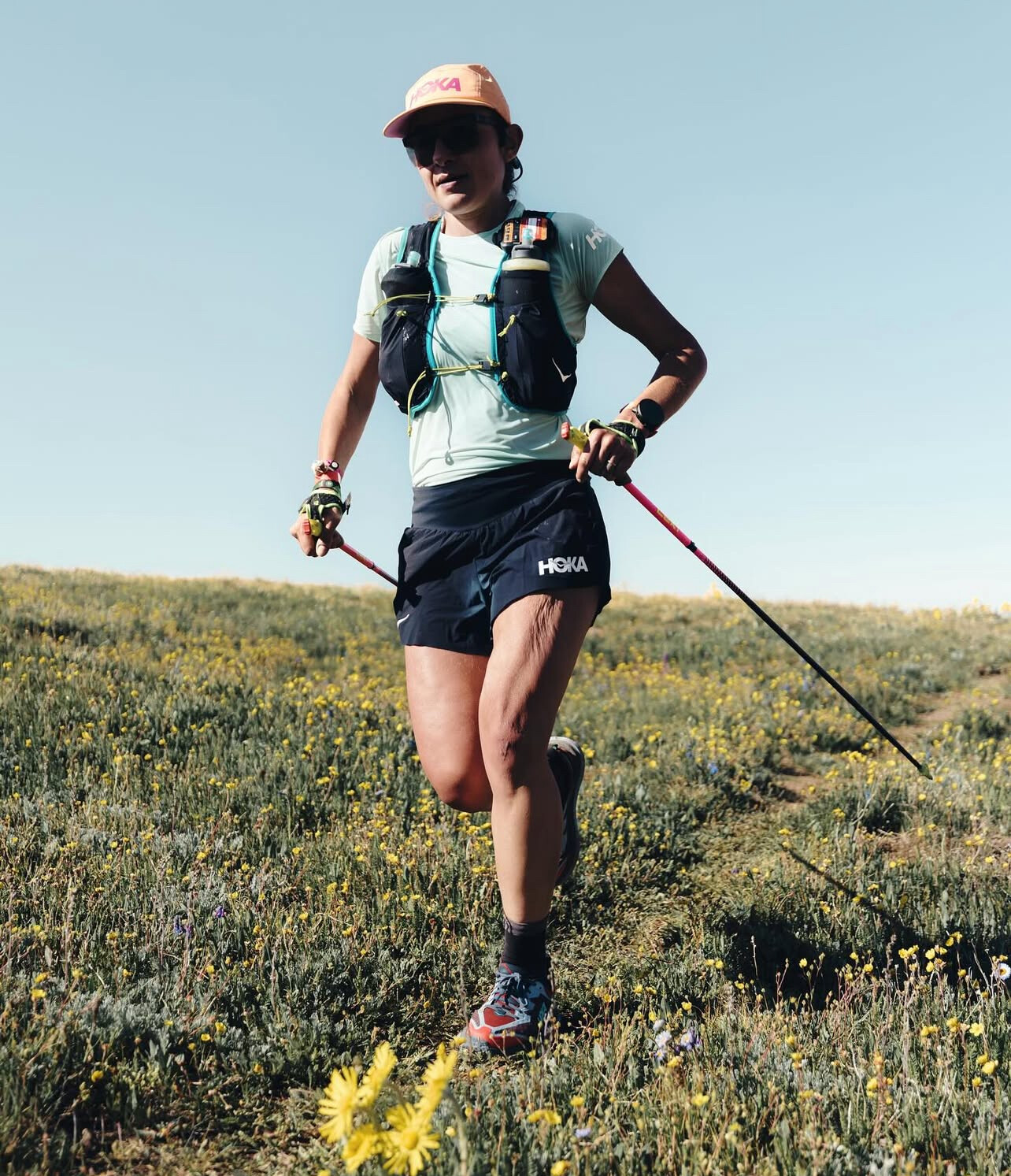
In the women’s race, Katie Schide delivered one of the most commanding performances in Hardrock history, crossing the finish in 25:50—the fastest counterclockwise time ever on this course. Her effort redefined what’s possible on one of the toughest 100-milers in the world, solidifying her place among the sport’s elite.
A Somber Note
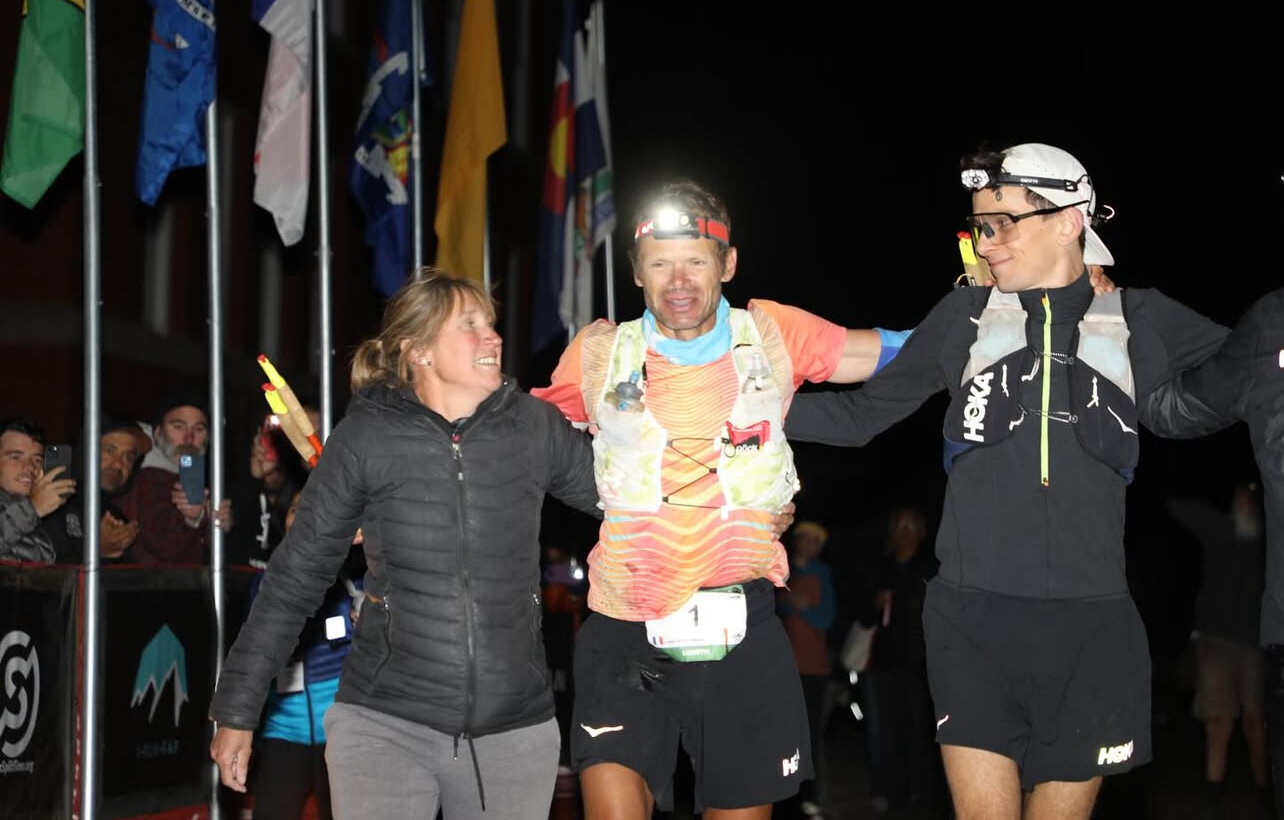
The celebration was tempered by tragedy. One of the 146 starters, 60-year-old Elaine Stypula, passed away early in the race. The trail community paused to honor her memory, a reminder of both the beauty and the inherent risk of this extreme pursuit.
Why This Race Matters
• Age is just a number: At nearly 50, Pommeret continues to perform at the highest level, adding another major title to a résumé that includes victories at UTMB (2016) and Diagonale des Fous (2021).
• Trail’s toughest test: With extreme elevation, altitude averaging over 11,000 feet, and no room for error, Hardrock remains a crucible for the toughest athletes on Earth.
• Global competition: With a French men’s podium and an American record-breaker, the international caliber of this year’s race underscored its global significance.
2025 Hardrock 100 Key Results
|
Category |
Winner |
Time |
|
Men’s Champion |
Ludovic Pommeret |
22:21:55 |
|
Women’s Champion |
Katie Schide |
25:50 (course record) |
|
Men’s 2nd |
Mathieu Blanchard |
23:44 |
|
Men’s 3rd |
Germain Grangier |
24:04 |
|
|
|
|
With record-breaking performances and powerful moments of perseverance, the 2025 Hardrock 100 once again proved why it’s one of the most respected races in the world of ultrarunning.
(07/13/2025) ⚡AMPby Boris Baron
Hardrock 100
100-mile run with 33,050 feet of climb and 33,050 feet of descent for a total elevation change of 66,100 feet with an average elevation of 11,186 feet - low point 7,680 feet (Ouray) and high point 14,048 feet (Handies Peak). The run starts and ends in Silverton, Colorado and travels through the towns of Telluride, Ouray, and the ghost town...
more...Kabelo Mulaudzi Dominates Again in Durban, Falls Just Short of South African 10K Record
South Africa’s Kabelo Mulaudzi lived up to his nickname “Mr. Podium” on Sunday with a commanding win at the Absa Run Your City 10km in Durban, securing back-to-back victories at the event and solidifying his place as one of the country’s premier road runners.
The 28-year-old Boxer Running Club athlete crossed the finish line in a blazing 27:41, just three seconds shy of the South African national 10K record (27:38) set by Adrian Wildschutt earlier this year. Despite narrowly missing the mark, Mulaudzi walked away with a R30,000 winner’s prize and an R80,000 time bonus for finishing under 27:45, bringing his total payday to R110,000—approximately $6,000 USD.
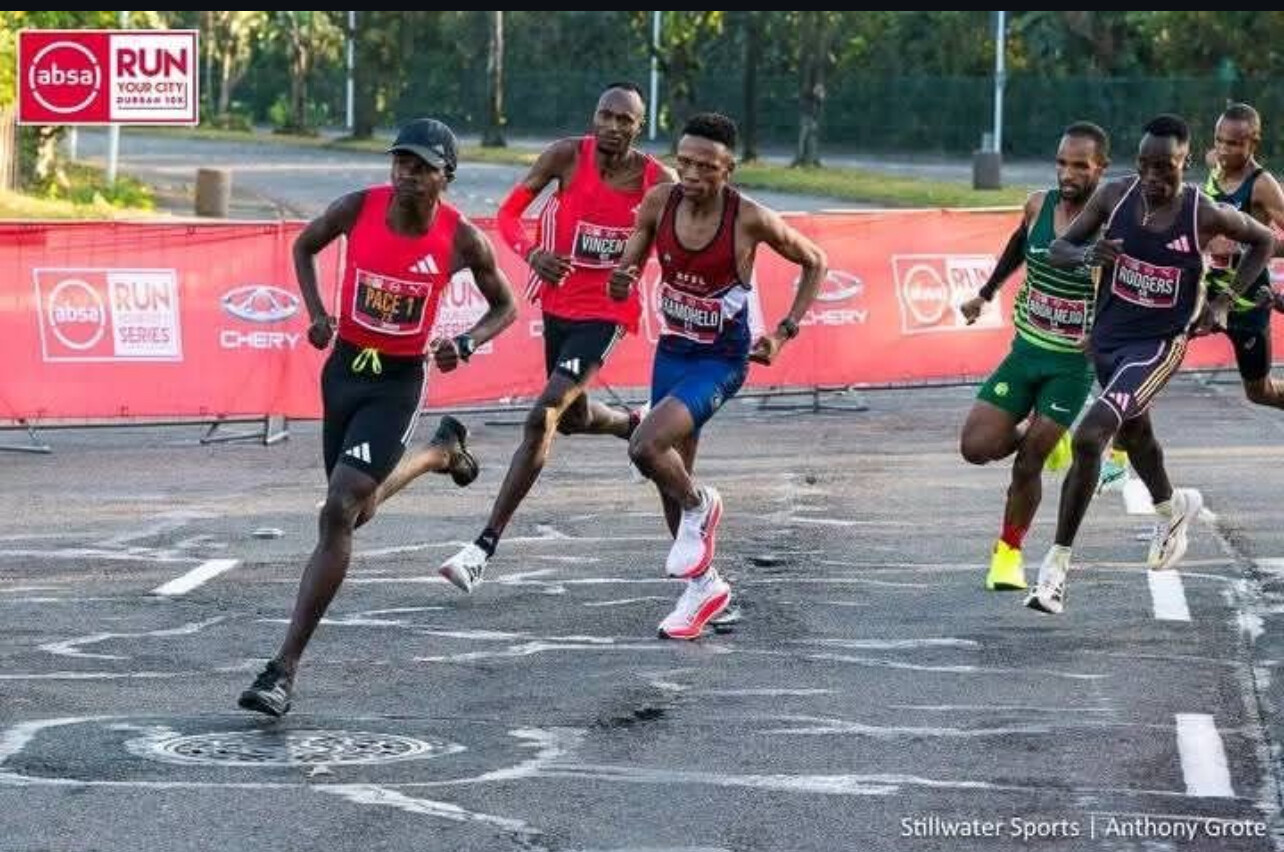
The female race
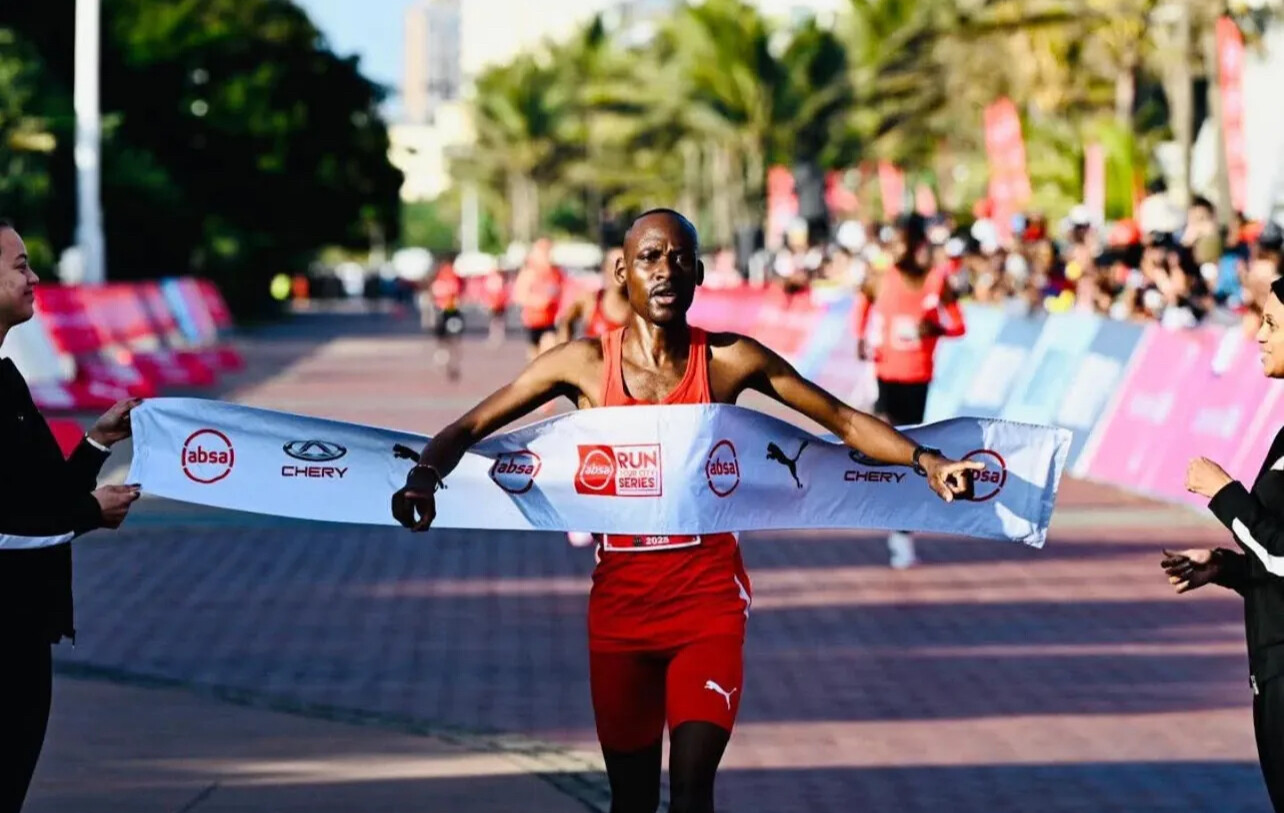
In the women’s race, Glenrose Xaba delivered a standout performance to take the win in 31:57, dominating the field and finishing well ahead of her closest rivals. The South African distance star, representing Boxer Athletics Club, showed poise and strength throughout the race, navigating the humid conditions and technical course with control. Xaba’s victory reaffirms her status as one of the country’s top road runners, and she earned R30,000 (approximately $1,650 USD) for her efforts. With her sights set on further success this season, Xaba looks poised for more strong showings on the national circuit.
Podium Finishers and Record Chases
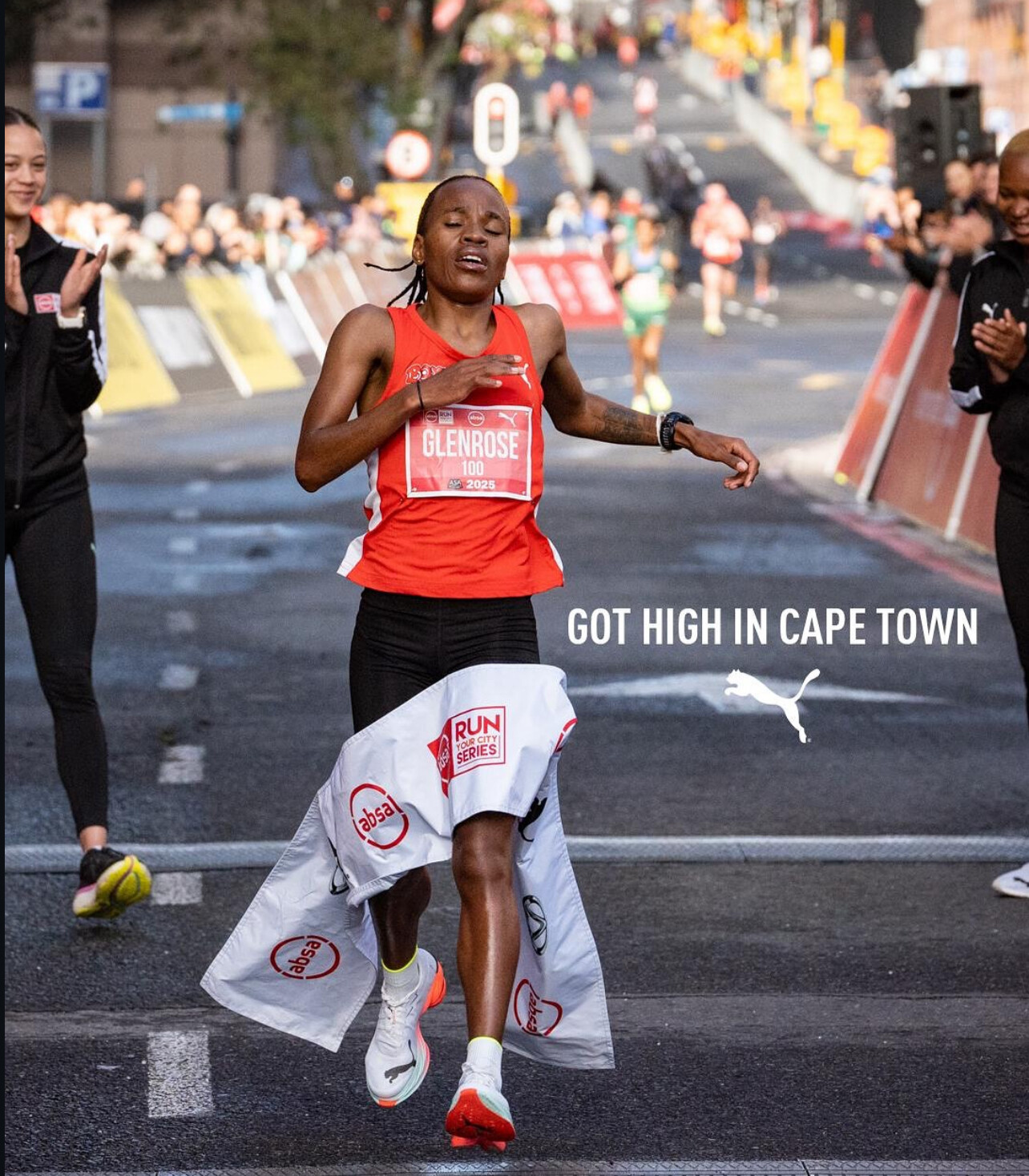
Mulaudzi led a competitive field through Durban’s beachfront course, holding off Lesotho’s Kamohelo Mofolo, who finished second in a national record time of 27:47. Pre-race favorite Vincent Kipkorir of Kenya was close behind, rounding out the podium in 27:48.
While Mulaudzi had his sights set on Wildschutt’s national record, course changes and pacing in the early kilometers may have held him back.
“Durban is my favorite course, and had we gone out faster in the first 5K, I believe I could have broken the record,” Mulaudzi said. “I wasn’t desperate—I just truly believed I had it in me.”
Personal Best and National Momentum
The victory marked a personal best for Mulaudzi, who has now won six races in the Run Your City 10km series since 2023, all while clocking consistent sub-28-minute performances. After battling injuries last season, the Alexandra-based runner has returned with renewed form and focus.
“Last year was tough with injuries, but I’ve bounced back strongly,” he said. “I need to improve my finishing, but this is one of my fastest races yet.”
He credited his coach, Richard Meyer, with guiding his resurgence through carefully structured training and race planning.
Rivalries and Respect
The race also deepened Mulaudzi’s friendly rivalry with Mofolo.
“Our rivalry began in Tshwane when he beat me, but I’ve now managed to beat him twice in a row,” Mulaudzi noted with a grin. “I’m happy for him setting a national record. He pushed me today.”
With momentum clearly on his side, Mulaudzi is targeting a clean sweep of the Absa series. His upcoming schedule includes the Central Gauteng Athletics Provincial 10km Championships, followed by the Run Your City 10km and the Durban Hollywood 10km in Tshwane this August.
“My goal is to win the remaining Absa races and stay healthy and injury-free,” he said.
If his current form holds, it may only be a matter of time before “Mr. Podium” becomes “Mr. Record” as well.
(07/13/2025) ⚡AMPby Boris Baron
Amanda Vestri Claims First U.S. Title with Commanding Win at USATF 6 km Championships
Amanda Vestri earned her first national title in dominant fashion on Saturday morning in Canton, Ohio taking a wire-to-wire victory at the USATF 6 km Championships in Canton, Ohio. The event, part of the Women’s 6K Festival, drew some of the top distance talent in the country, but no one could match Vestri’s front-running strength on a challenging, technical course.
Vestri, who finished second at this race in 2023, wasted no time establishing control. Racing in humid conditions with temperatures nearing 80°F, she charged to the front from the gun, pulling a pack of seven through the first mile in 4:53. As the course shifted onto an uneven stretch of brick road, she surged again—clocking another 4:53 for the second mile—and began to break away from the field.
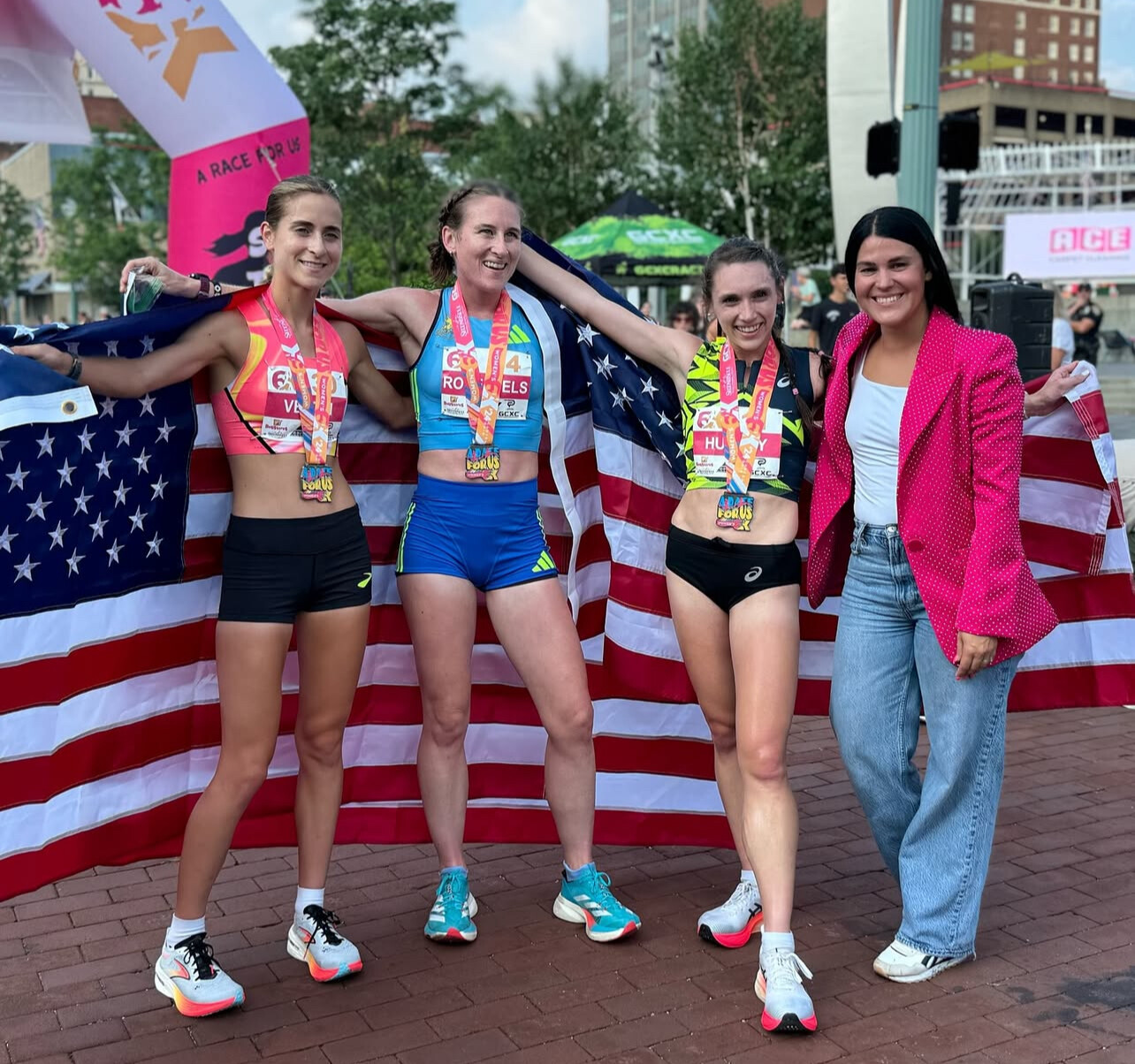
By the time the race reached its longest climb, Vestri’s lead had grown to three seconds over a chase pack that included Annie Frisbie, Fiona O’Keeffe, Molly Born, and Edna Kurgat. Cresting the hill with authority, she extended the gap to seven seconds by the 5K mark—a margin she maintained all the way to the finish line at Centennial Plaza.
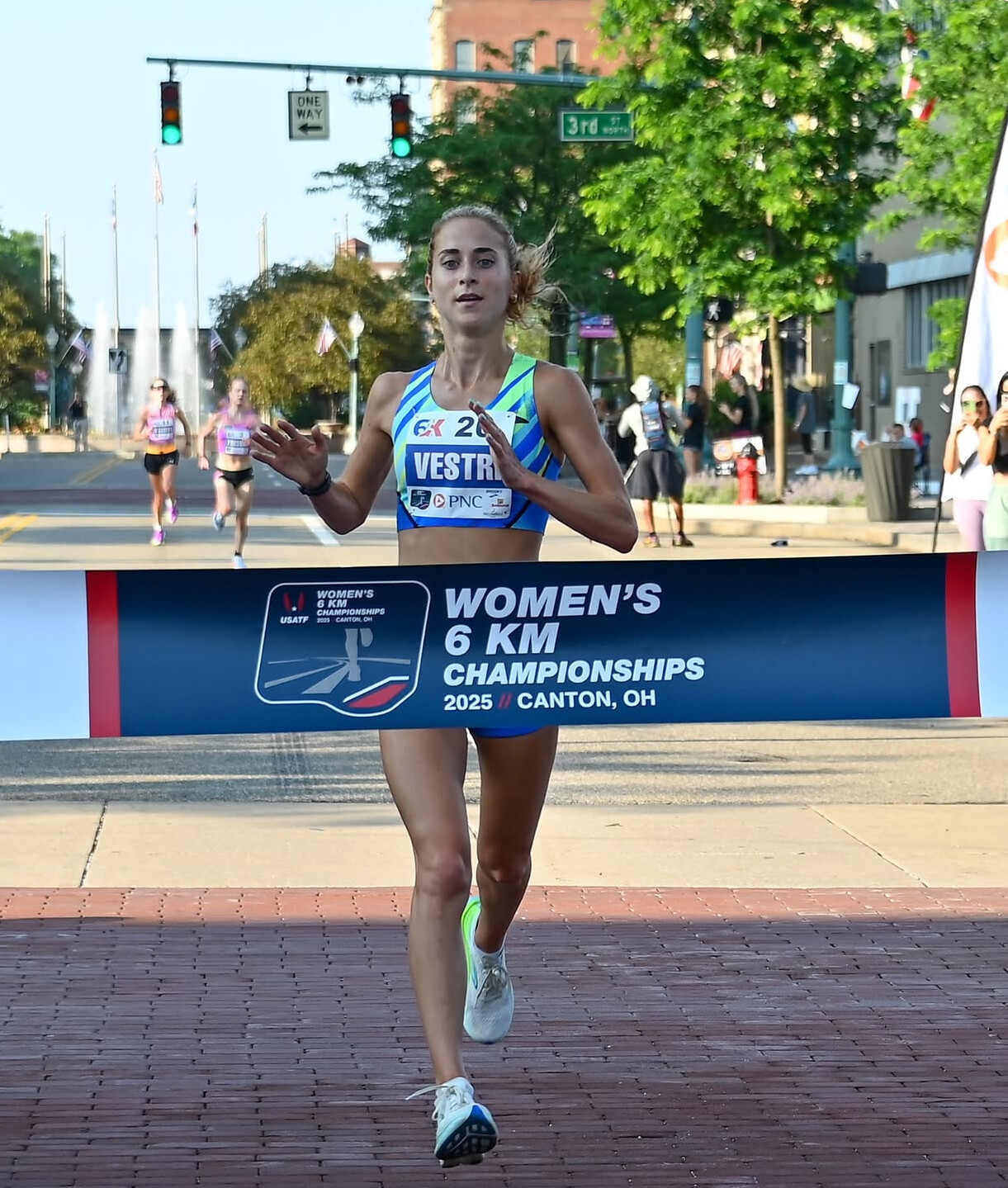
“I just kind of wanted to take it from the gun,” said Vestri after the race. “In these shorter races, I’m not really keen to just sit and run 5:15, 5:20. So, I just wanted to take it out. That’s the best way I run.”
Her aggressive strategy paid off, earning her the national title, $6,000 in prize money, and a move into second place in the USATF Running Circuit standings.

Fierce Finish for Second
The battle for second place came down to the final meters. Annie Frisbie and Olympic 10,000m runner Fiona O’Keeffe ran shoulder-to-shoulder for nearly the entire race before Frisbie edged ahead over the last 400 meters, stopping the clock in 18:36. O’Keeffe finished just two seconds back in 18:38 to round out the podium.
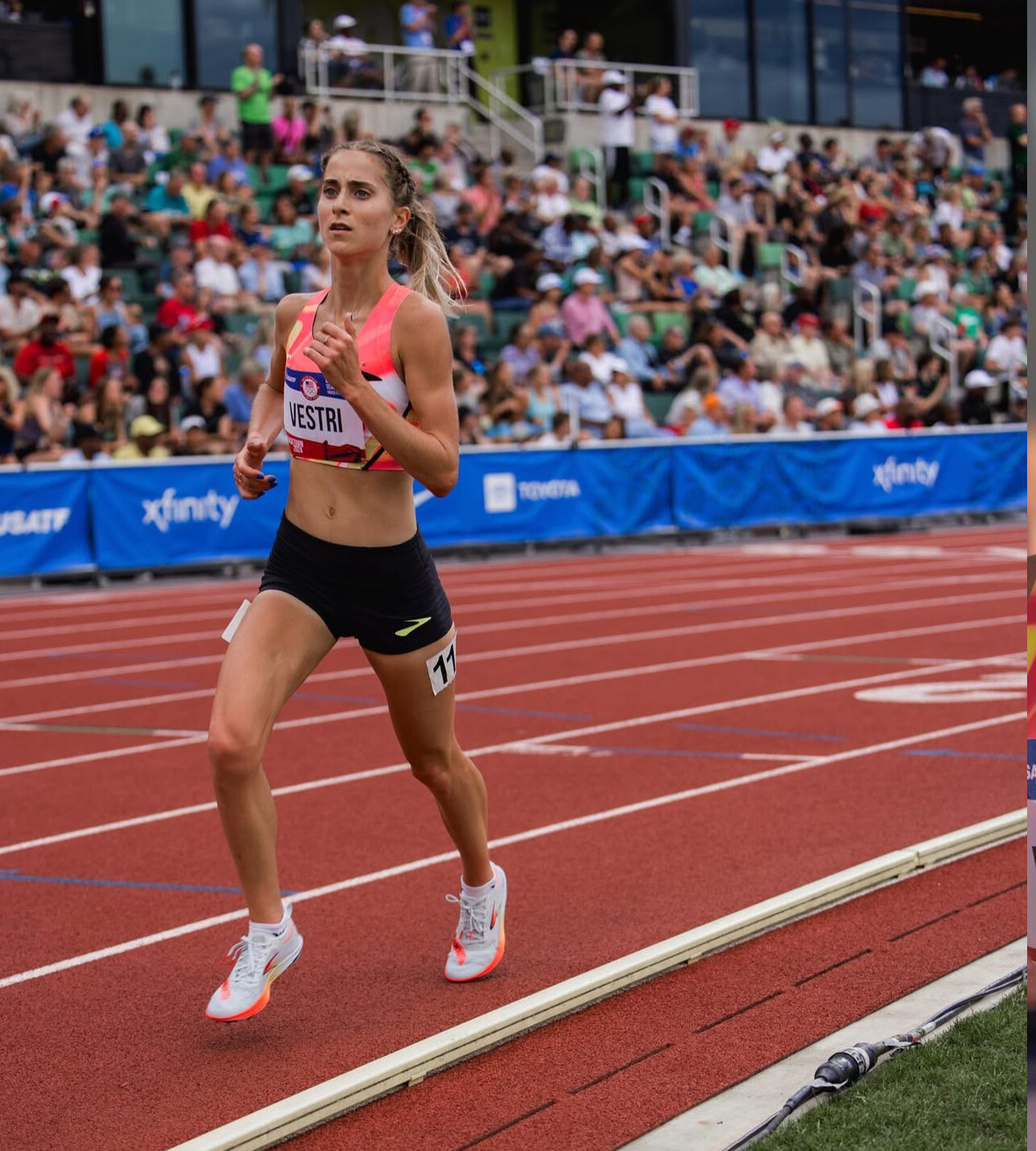
What’s Next
Vestri now shifts her focus to the track, where she’s scheduled to compete in both the 5,000m and 10,000m at the upcoming USATF Outdoor Championships in Eugene, Oregon later this month.
The USATF Running Circuit continues with just two events remaining:
• USATF 20 km Championships in New Haven on September 1
• USATF Marathon Championships in Sacramento on December 7
With momentum clearly on her side, Amanda Vestri will be a name to watch—on the roads and the track—for the rest of 2025.
(07/13/2025) ⚡AMPby Boris Baron
Jakob Ingebrigtsen Returns to Altitude Training in St. Moritz Following Injury and Personal Turmoil
Olympic champion Jakob Ingebrigtsen is heading back to the mountains of St. Moritz to resume altitude training after a difficult first half of the 2025 season marked by injury and family challenges. The 23-year-old Norwegian has been recovering from a strained Achilles tendon that derailed his early outdoor campaign and forced him to miss several key meets.
Recovery First
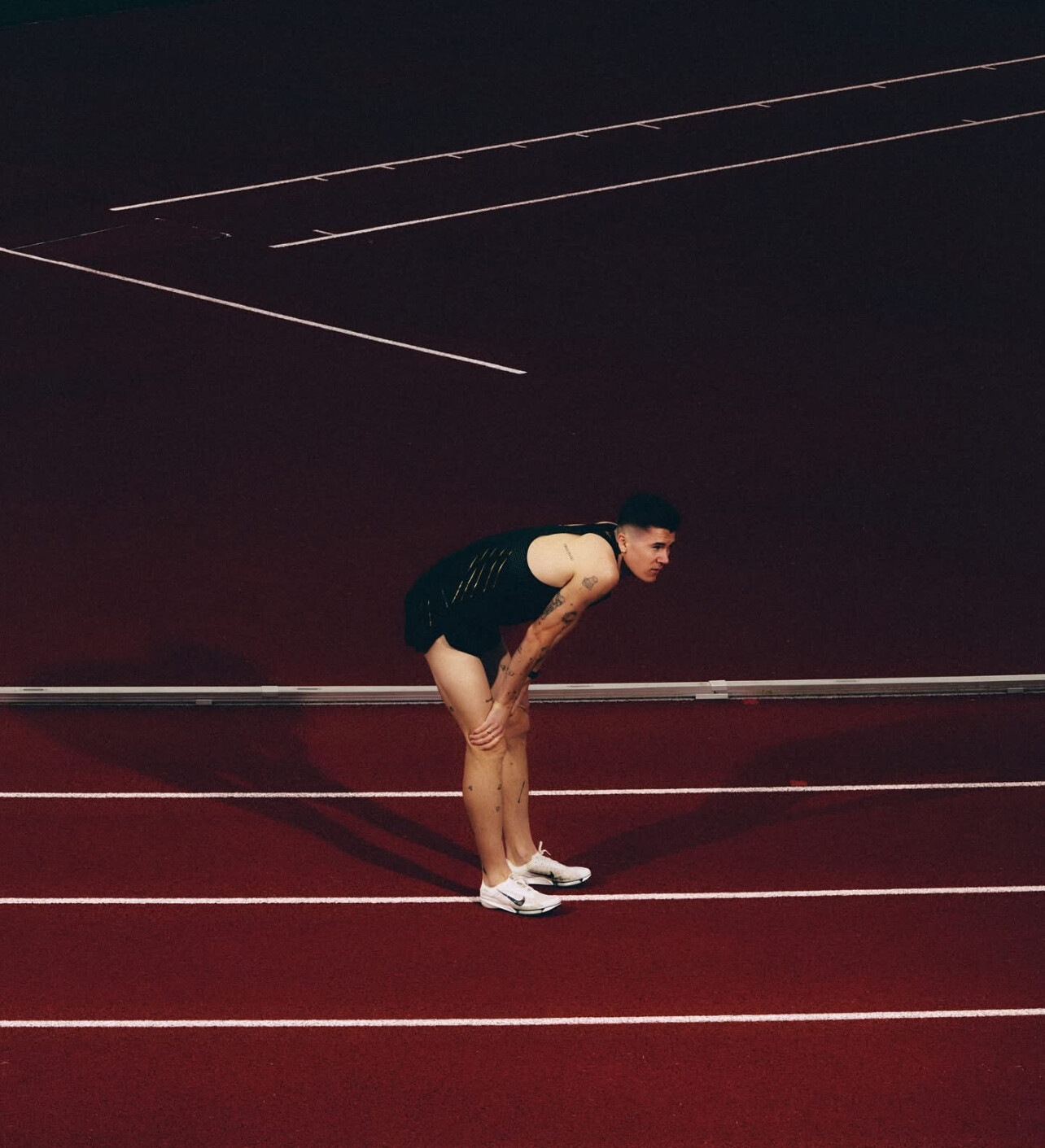
Ingebrigtsen initially planned to train at altitude in Sierra Nevada in the spring, but his Achilles issue required a change of course. He instead remained home to focus on recovery, missing high-profile events in Oslo, Ostrava, the Pre Classic, and the London Diamond League.

In a recent update shared on social media, Jakob acknowledged the long road back but said he was grateful for the time spent with his young daughter and dogs. “At least I had the best company,” he wrote, sharing photos from a forest outing. His message suggests a turning point in his recovery, both physically and emotionally.
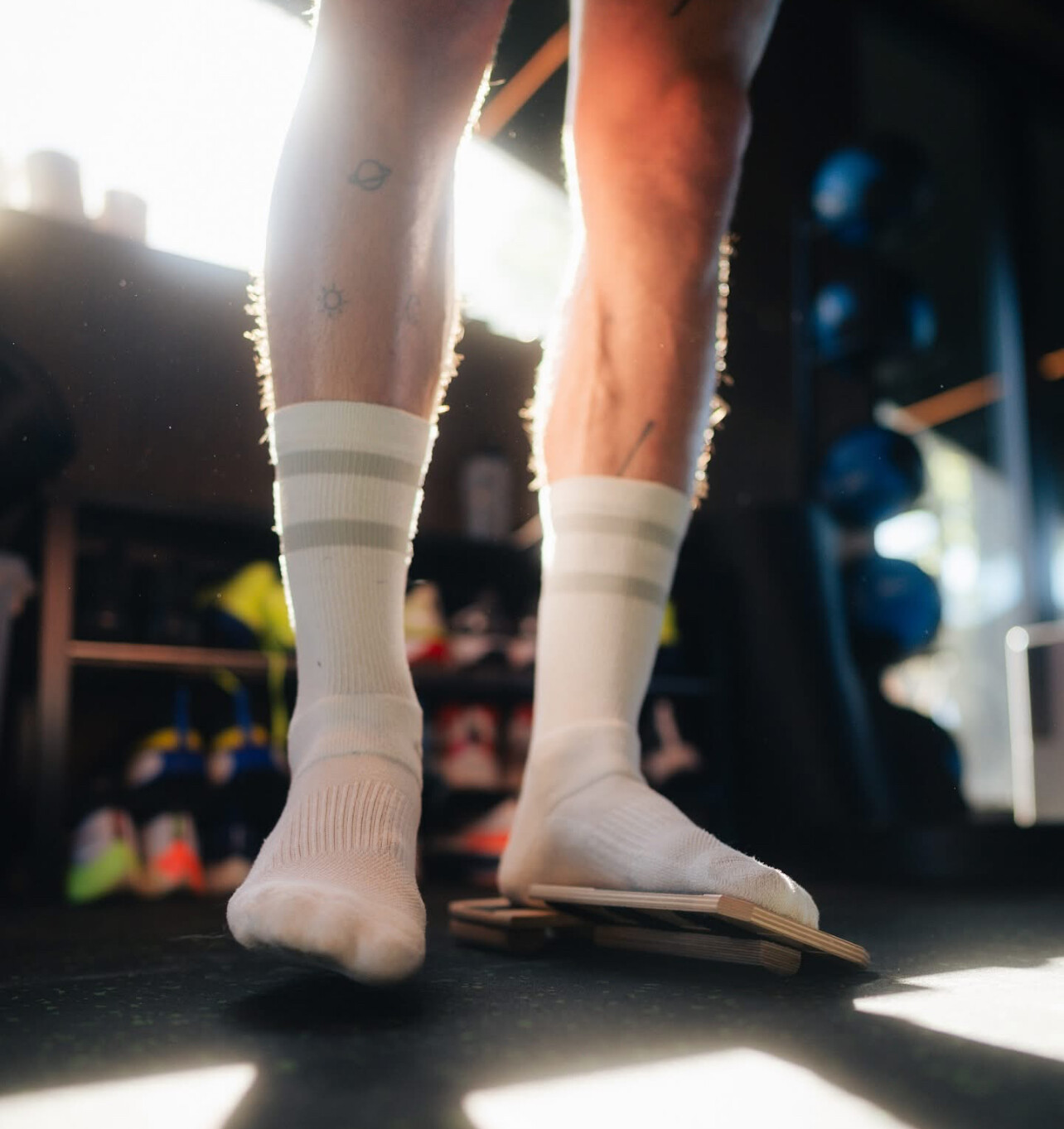
Altitude Training in St. Moritz
Coach Filip Ingebrigtsen has confirmed that Jakob will now join Norway’s altitude group in St. Moritz for a three- to four-week training block. The plan is to carefully build back fitness without rushing into competition. If all goes well, Jakob could return to racing in mid-August, with the Silesia Diamond League meeting in Poland emerging as a likely target.

While his return has been delayed, confidence remains high. Ingebrigtsen’s indoor season earlier this year was exceptional—he broke the world indoor records for both the 1500m and mile. In June, shortly before his Achilles flare-up, he set a new European 1500m record of 3:27.95 and clocked 7:54.10 in the two-mile, a world best.
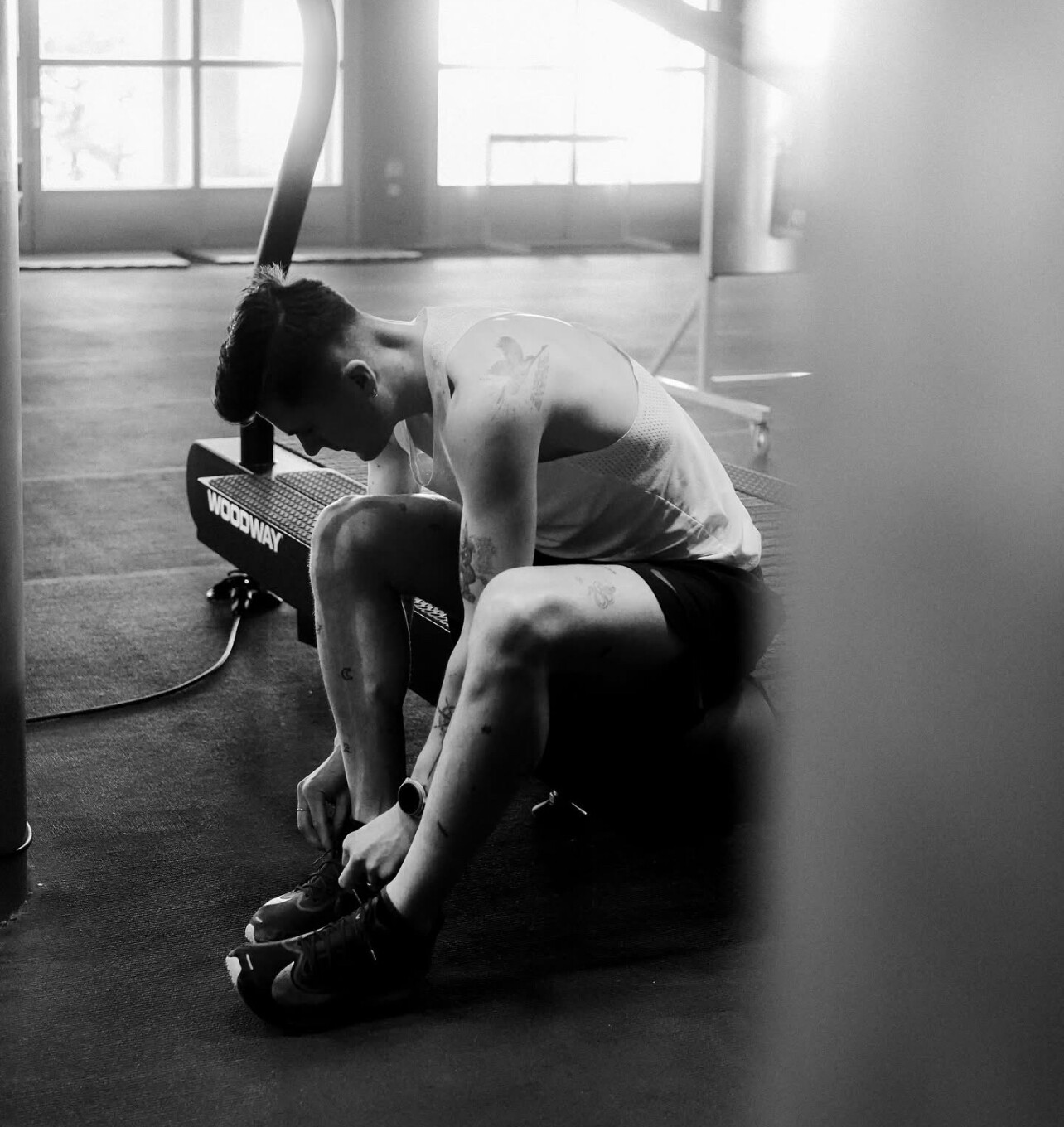
Personal Challenges and Legal Closure
In the midst of his recovery, Ingebrigtsen also had to navigate a difficult legal chapter. On June 23, his father, Gjert Ingebrigtsen, was convicted of minor assault against Jakob’s younger sister, Ingrid, for an incident involving a wet towel. Gjert received a 15-day suspended sentence and was ordered to pay damages. He was acquitted of similar charges involving Jakob due to lack of evidence.

The verdict marks a formal conclusion to a painful and public family dispute that first came to light in late 2023. With this chapter behind him, Jakob appears ready to shift focus fully back to his training and racing.
Looking Ahead
Jakob Ingebrigtsen’s approach to 2025 has been cautious but strategic. Rather than forcing an early comeback, he’s prioritized recovery, stability, and preparation. If his return to St. Moritz goes as planned, fans can expect to see him back on the track in top form later this summer—potentially just in time to contend for another global title.
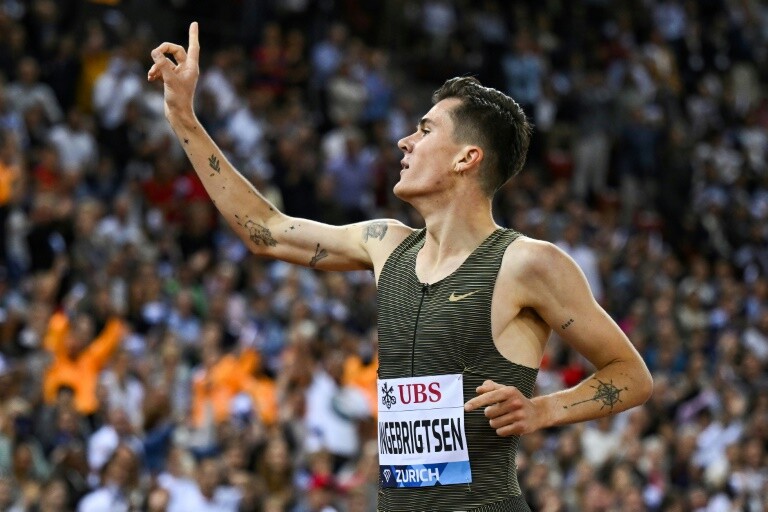
by Boris Baron
Rotich and Reline Triumph in Muddy Showdown at Kaptagat Forest Half Marathon - Kaptagat, Kenya — July 12, 2025
On a misty Saturday morning in the high-altitude woodlands of Simotwo, Elgeyo Marakwet County, Gideon Kiprop Rotich and Catherine Reline embraced the mud, mist, and mayhem to win the 2025 Kaptagat Forest Half Marathon. Battling a soaked red clay course shared by Kenya’s finest—including marathon legend Eliud Kipchoge—the two champions rose above the chaos to claim hard-fought victories in the men’s and women’s 21km races.
MEN’S 21KM — Rotich Edges Rivals in Thrilling Sprint Finish
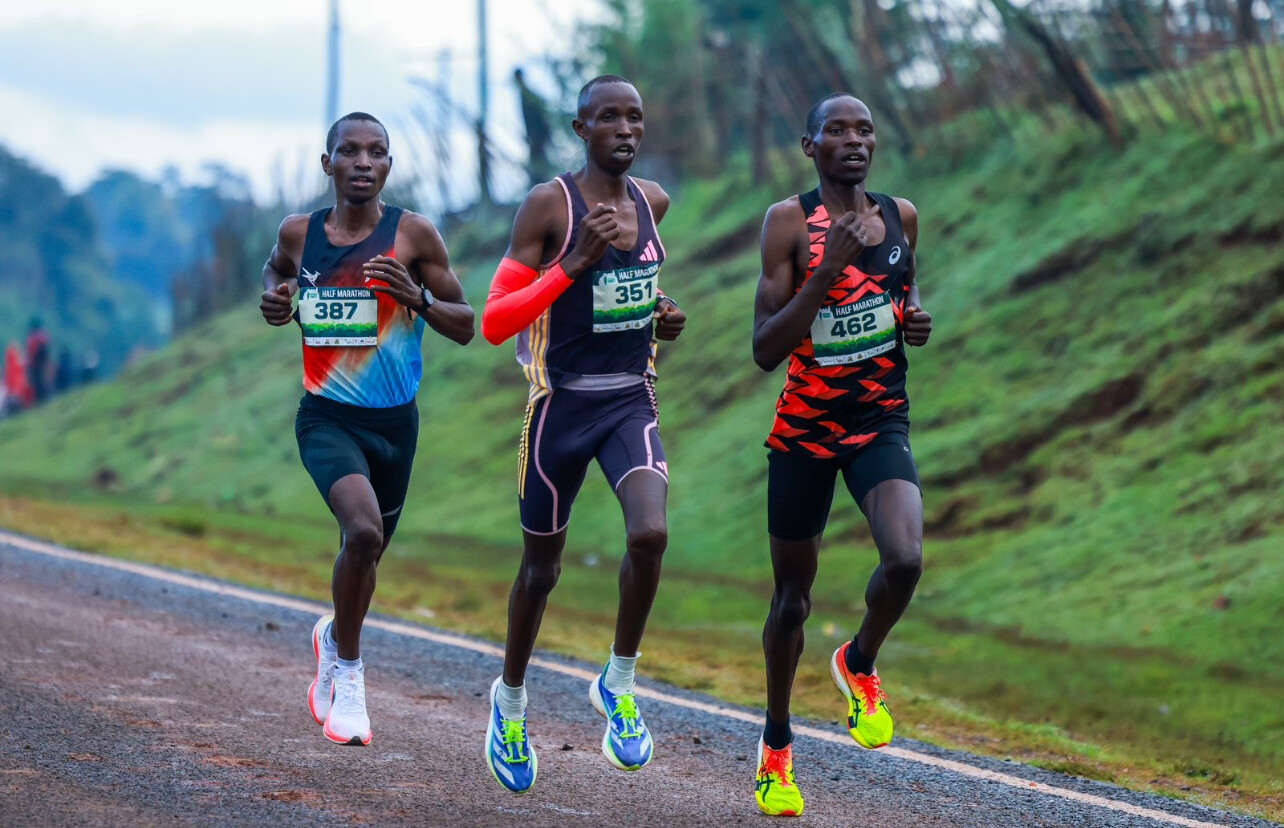
The men’s race quickly became a tactical chess match, played out on unpredictable terrain. Rotich, showing remarkable composure through the slippery climbs and sharp descents, surged in the final kilometer to win in 1:07:02.
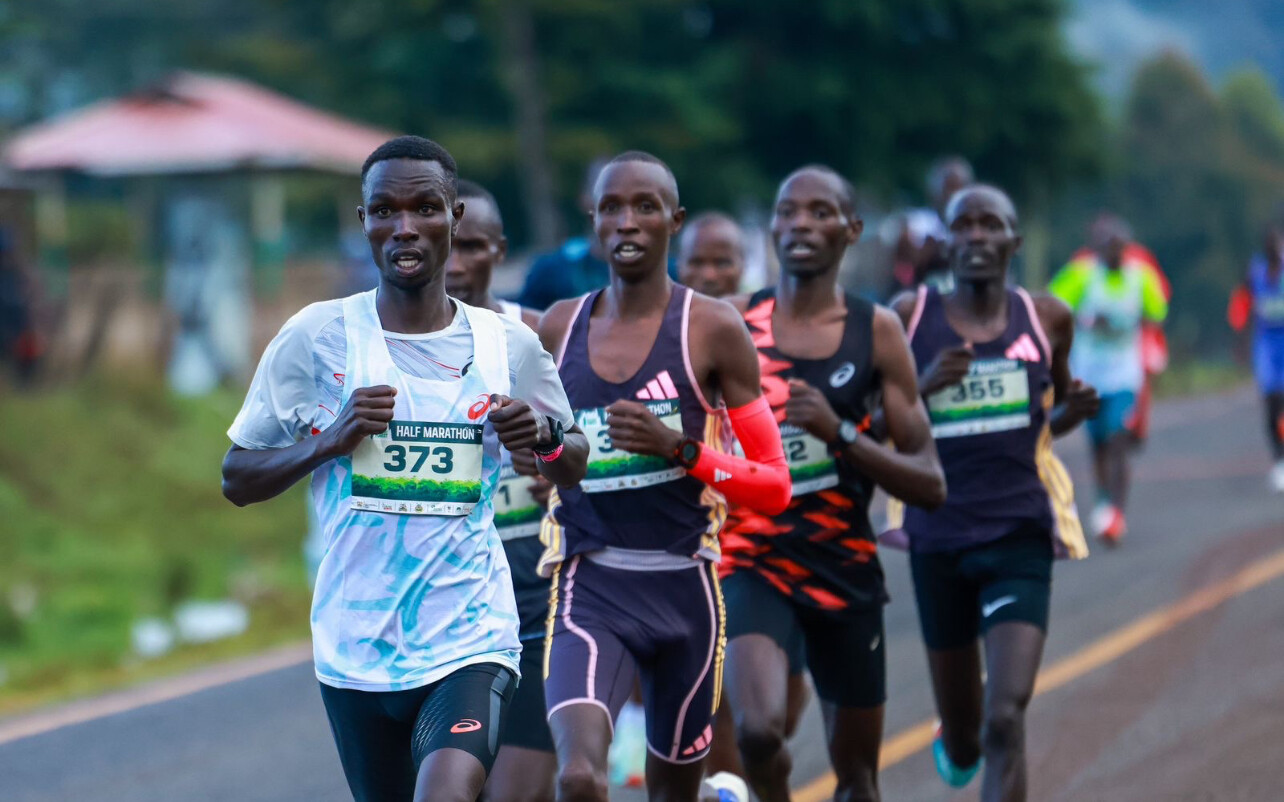
From the outset, he was closely shadowed by Wisley Kipkemoi Yego (Keringet) and Alfred Kipkemoi Cheruiyot, with the trio passing 5K in 14:19, 10K in 32:47, and 15K in 47:21. As the fog thickened and footing worsened, Rotich found a decisive gear on the final descent. Yego finished just two seconds back in 1:07:04, with Cheruiyot another heartbeat behind in 1:07:05.
“You couldn’t push the way you normally would,” said Rotich, his shoes caked with thick mud. “The ground was soft; the air was heavy. But that’s Kaptagat—it doesn’t reward the fastest, it rewards the smartest and toughest.”
Only 16 seconds separated the top five finishers, marking one of the most dramatic conclusions in the event’s recent history.
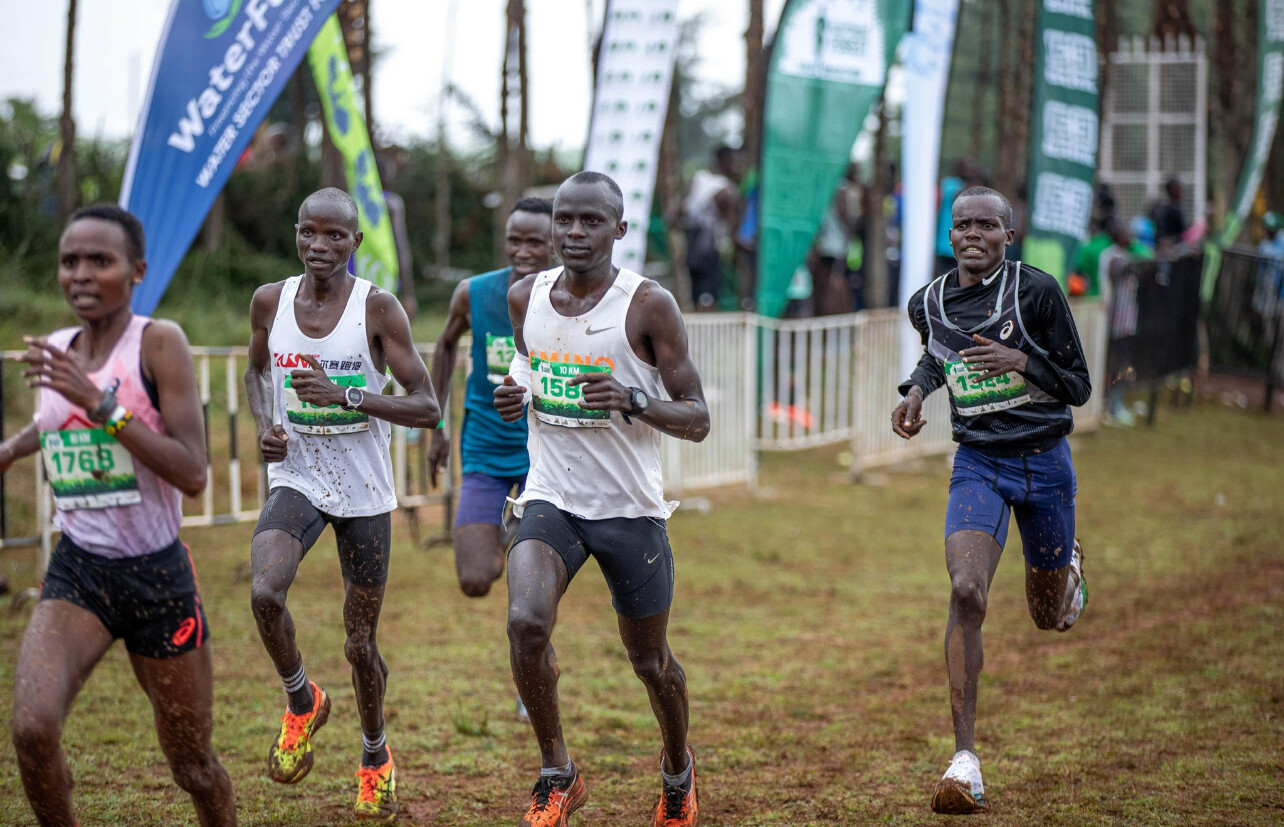
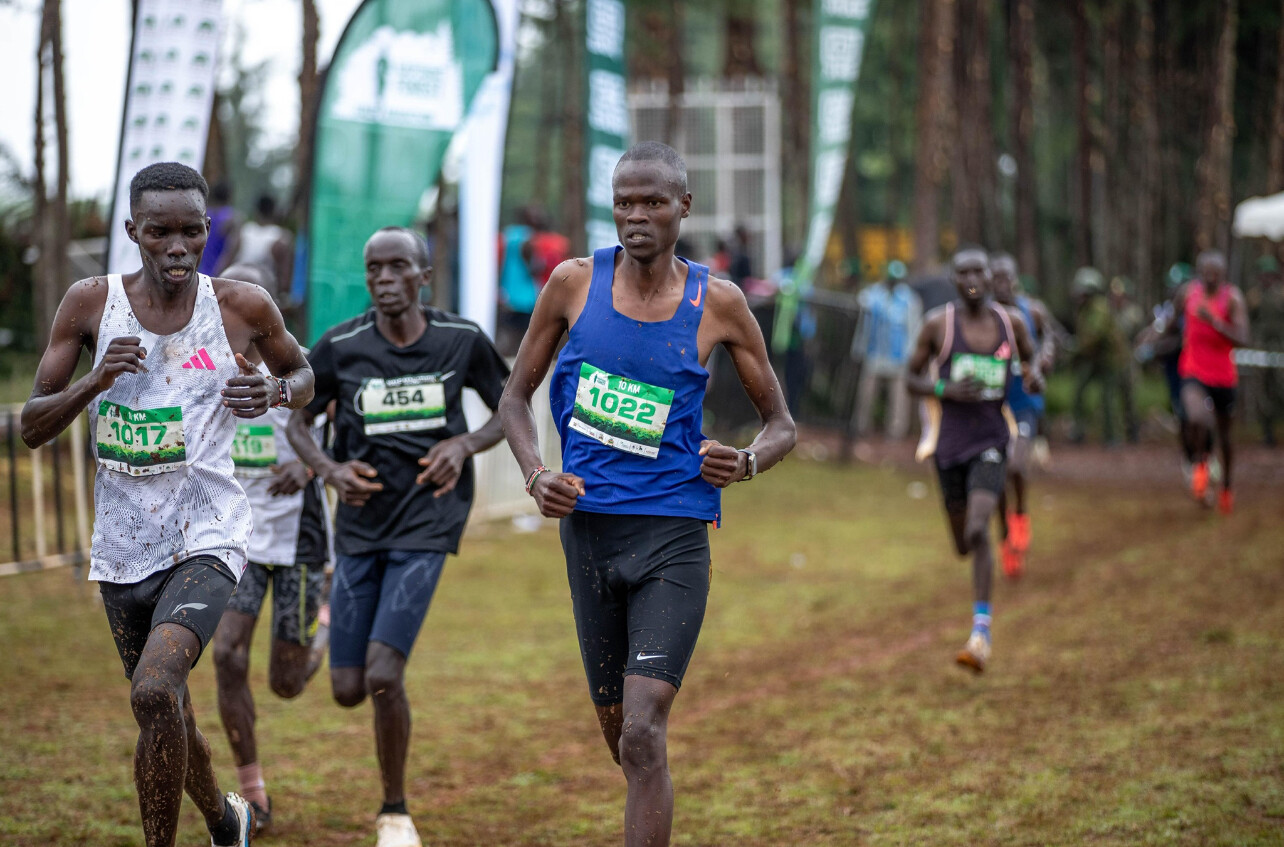
WOMEN’S 21KM — Reline Dominates with Precision and Power
In the women’s race, Catherine Reline executed a masterclass in pacing and poise. She broke away after 10K and never looked back, claiming victory in 1:14:23.
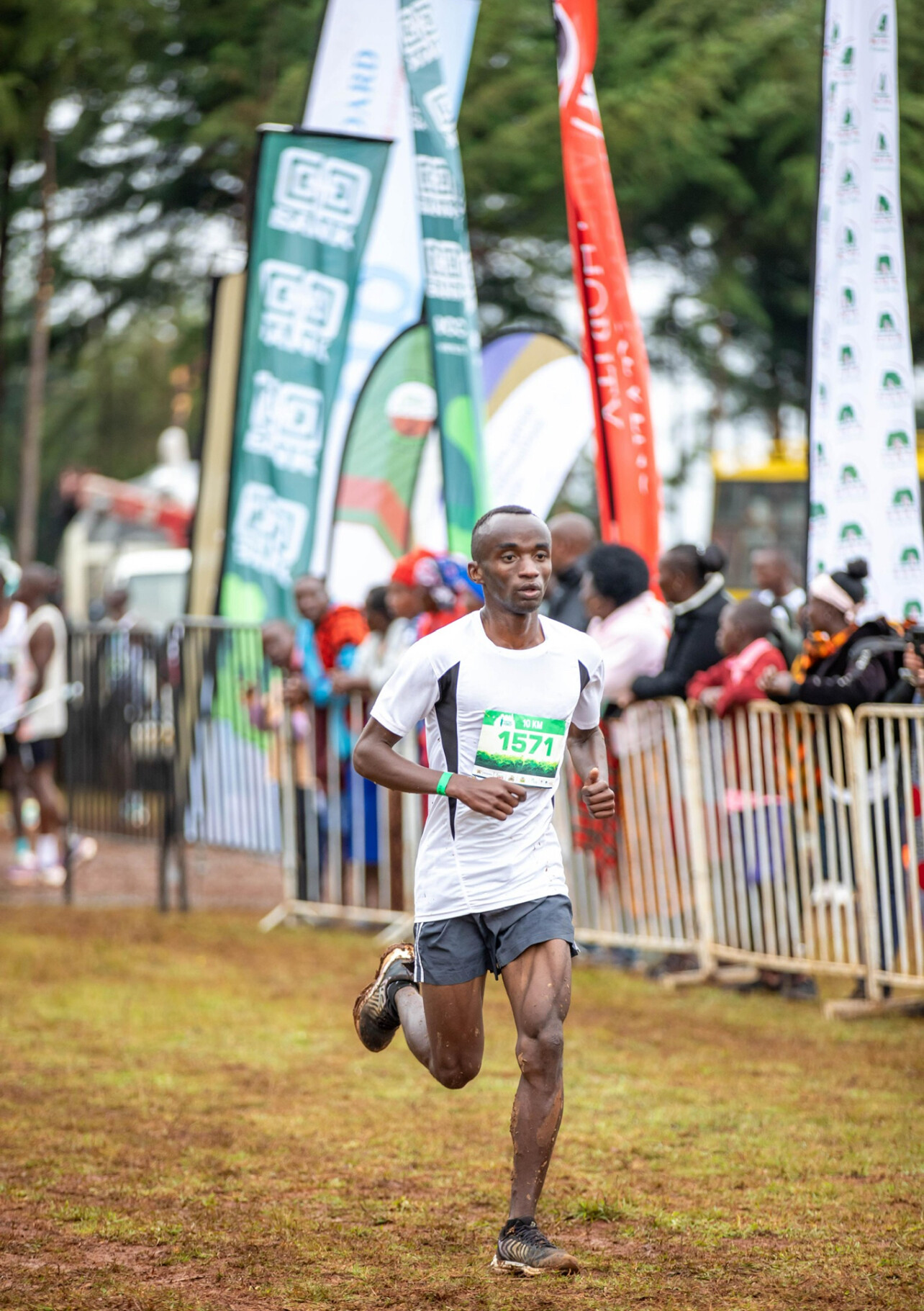
Her 5K split of 16:22 gave early notice of her form, with 10K and 15K reached in 37:33 and 53:39, respectively. Confident and sure-footed through the muddiest stretches, she ran unchallenged to the finish.
“The forest was unforgiving,” Reline said. “But I trusted my rhythm and focused on staying upright through the muddy patches. Once I found my footing, I just kept pressing.”
Vivian Cherotich (1:15:09) and Catherine Peiyoy (1:15:44) rounded out the podium after a gritty chase through the fog-shrouded ridgelines and pine forest trails.
Mud, Mist, and the Magic of Kaptagat
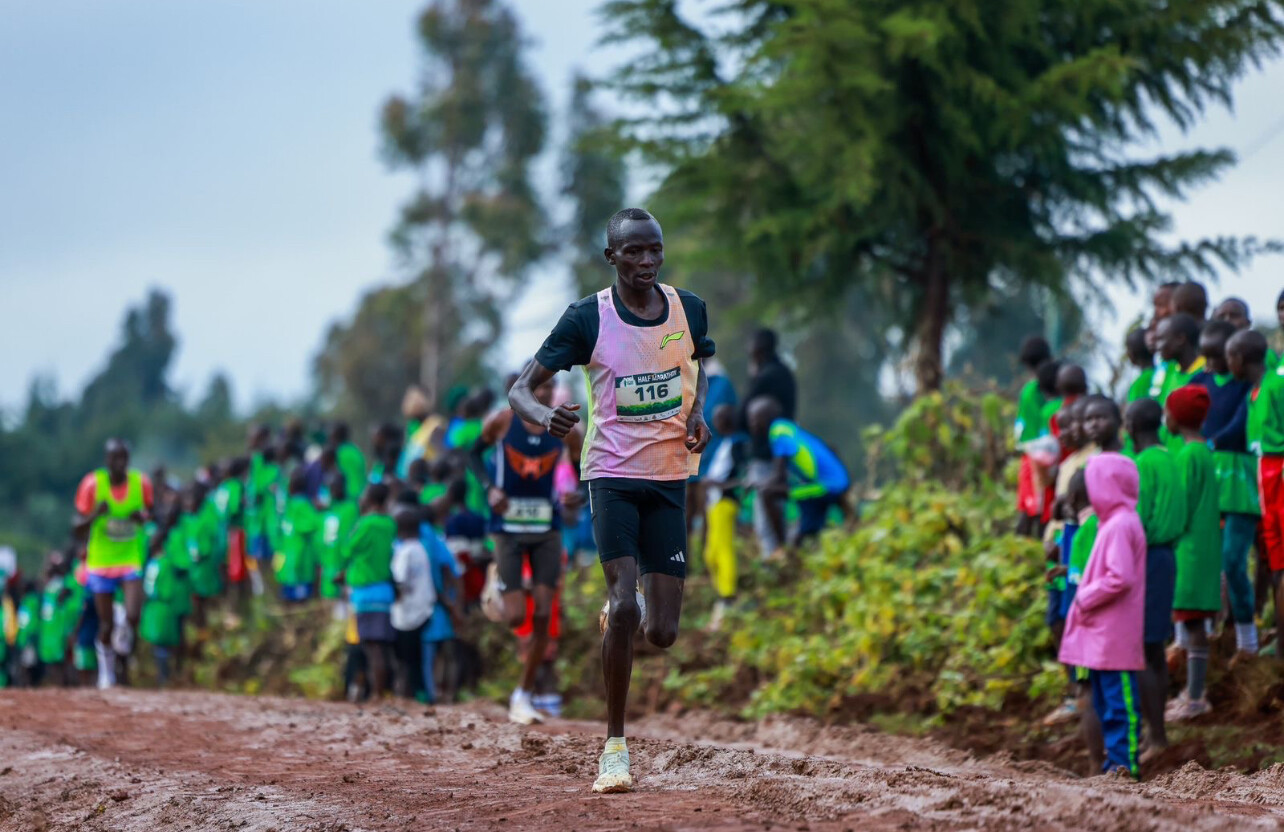
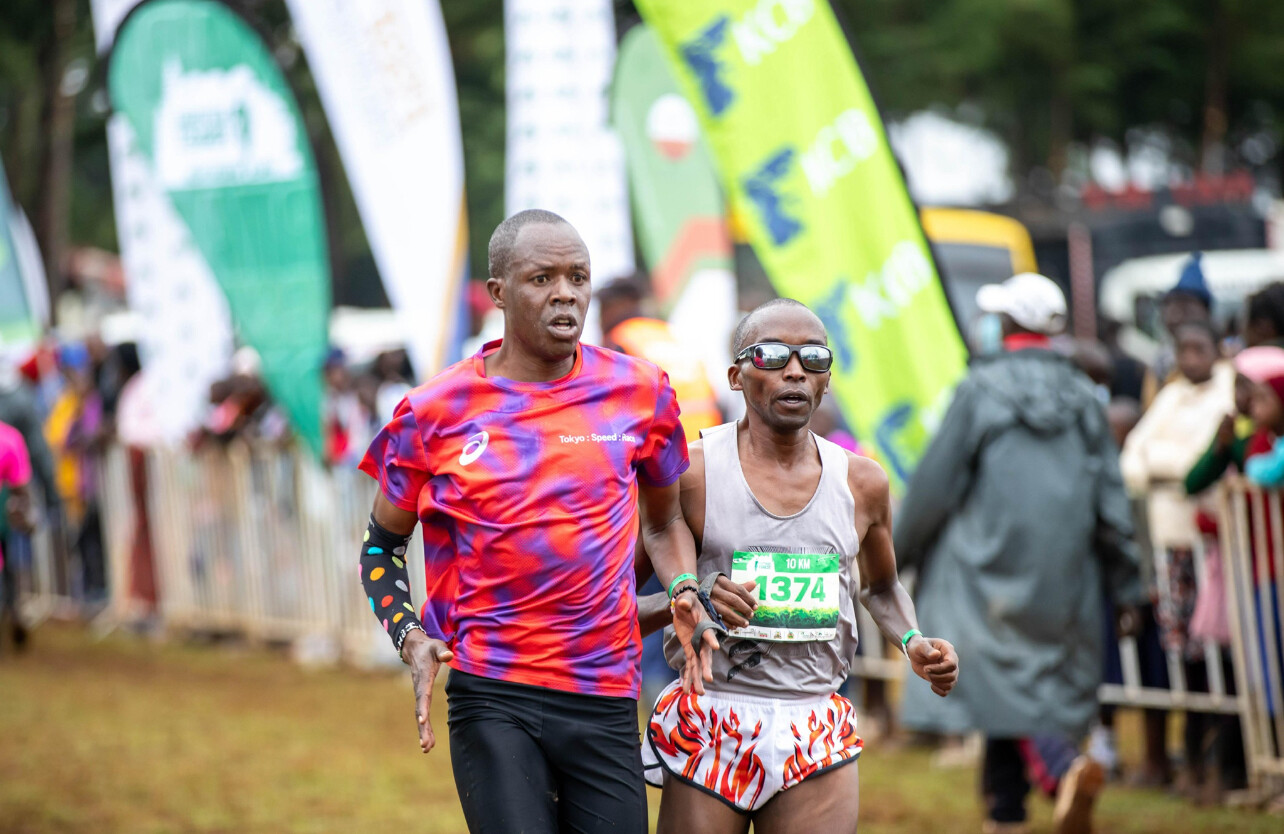
Despite a relentless drizzle and pre-race downpour, the race drew hundreds of spirited spectators. From Simotwo High School to the inner loops of the Kaptagat forest, locals wrapped in shawls, ponchos, and even barefoot stood cheering along the soaked 2,600-meter elevation trail.
Organizers praised the resilience of the athletes and hinted at possible drainage improvements for future editions. But for many, the mud and mist are part of Kaptagat’s mystique.
“This course defines toughness,” said third-place finisher Cheruiyot. “And the crowd’s energy—despite the rain—kept us going.”
As sunlight finally pierced the cloud cover, the 2025 Kaptagat Forest Half Marathon cemented its reputation once again: raw, real, and one of Kenya’s toughest tests of endurance.
Top 10 Results – Men’s 21km
1. Gideon Kiprop Rotich – 1:07:02
2. Wisley Kipkemoi Yego – 1:07:04
3. Alfred Kipkemoi Cheruiyot – 1:07:05
4. Kalipus Lomwai – 1:07:12
5. Stephen Kimutai Kibet – 1:07:18
6. Philemon Kiprotich Konor – 1:07:35
7. Timothy Kiptoo – 1:07:56
8. Patrick Mosin – 1:08:01
9. Noah Kipkemboi – 1:08:18
10. Jonah Belio – 1:08:21
Top 6 Results – Women’s 21km
1. Catherine Reline – 1:14:23
2. Vivian Cherotich – 1:15:09
3. Catherine Peiyoy – 1:15:44
4. Gladys Longari – 1:15:48
5. Beatrice Cheserek – 1:16:49
6. Gladys Jeptepkeny – 1:17:33
(07/13/2025) ⚡AMP
by Robert Kibet
Jon Sutherland’s 55 Year World Record Running Streak is being challenged
Jon Sutherland of Washington, Utah, officially ended the longest consecutive daily running streak in history on December 31, 2024. He ran every single day for 55 years, 7 months, and 6 days, totaling 20,309 consecutive days—a record of unmatched consistency, discipline, and passion for the sport.
Sutherland began his streak on May 29, 1969, at just 19 years old. Over five and a half decades later, now 74, he finally decided to hang up the streak—but not before cementing himself in the annals of running history.
For perspective, that’s nearly two-thirds of a century without missing a single day. Rain, injury, illness—none of it stopped him from getting in at least one mile daily. Though not all of those runs were fast or long, the sheer volume of uninterrupted effort is unparalleled.
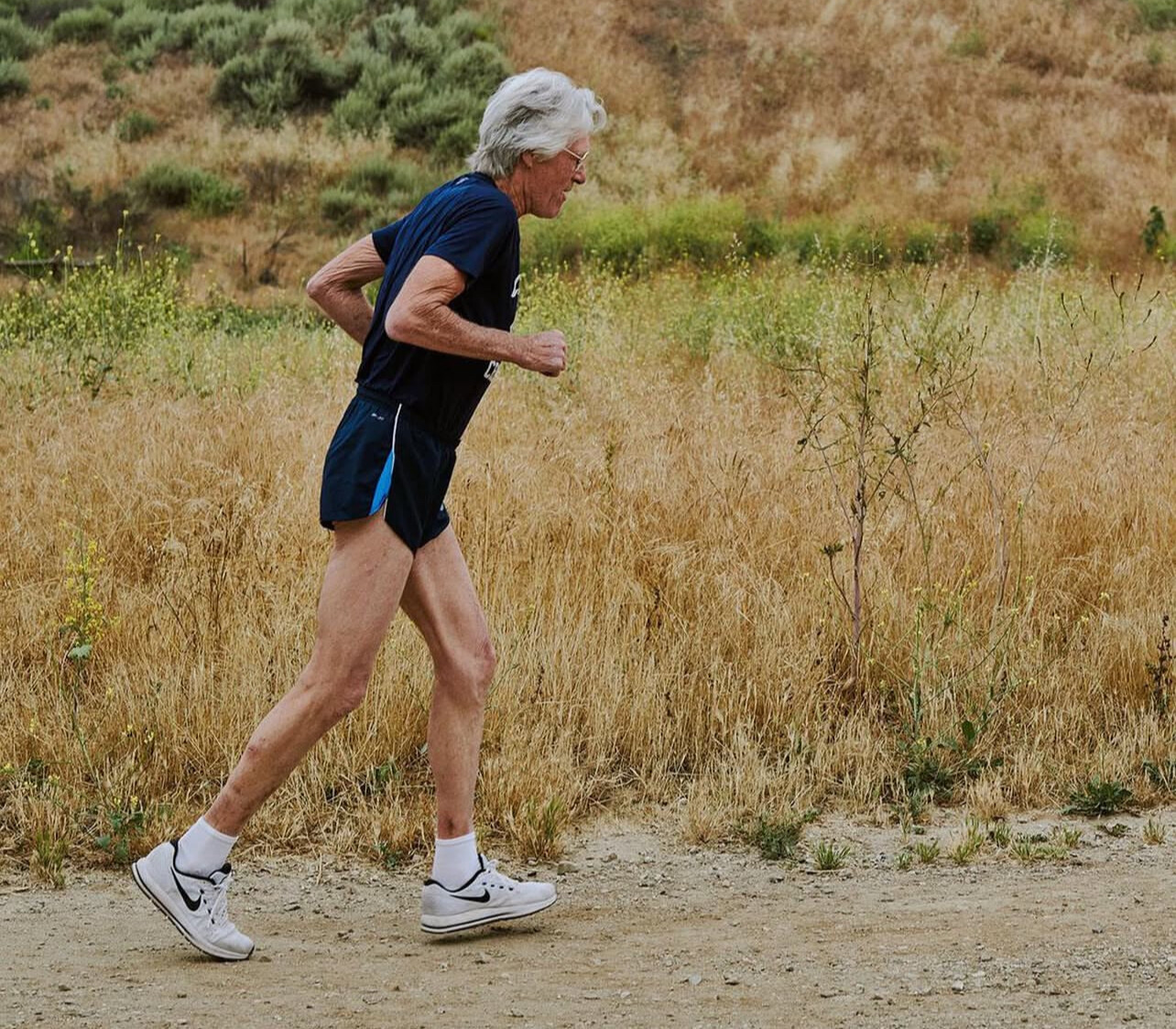

Interestingly, just behind Sutherland on the all-time list is Jim G. Pearson, who began his still-active streak on February 16, 1970, in Marysville, Washington. Pearson, now 81, has logged 20,236 consecutive days (55.4 years) as of today—meaning he could soon surpass Sutherland’s final total if he keeps going.

As of now, Jon Sutherland holds the record for the longest running streak ever completed.
If you’ve ever skipped a run because of bad weather or a sore ankle, let Jon’s example remind you what commitment really looks like.
(07/12/2025) ⚡AMPby Boris Baron
Berlin Marathon Pumps Nearly $510 Million Into the Local Economy—Here’s How the Numbers Break Down
The BMW Berlin Marathon, set for Sunday, September 28, 2025, isn’t just a premier event for world-class athletes—it’s one of the biggest economic powerhouses in distance running.
A new independent study presented this week by Nielsen Sports found that the Berlin Marathon generated a total economic impact of €469.4 million, or approximately $509 million USD. That includes €142.7 million ($155 million USD) in direct spending by participants, visitors, and organizers, and €326.7 million ($354 million USD) in indirect economic activity such as hotels, restaurants, and retail.
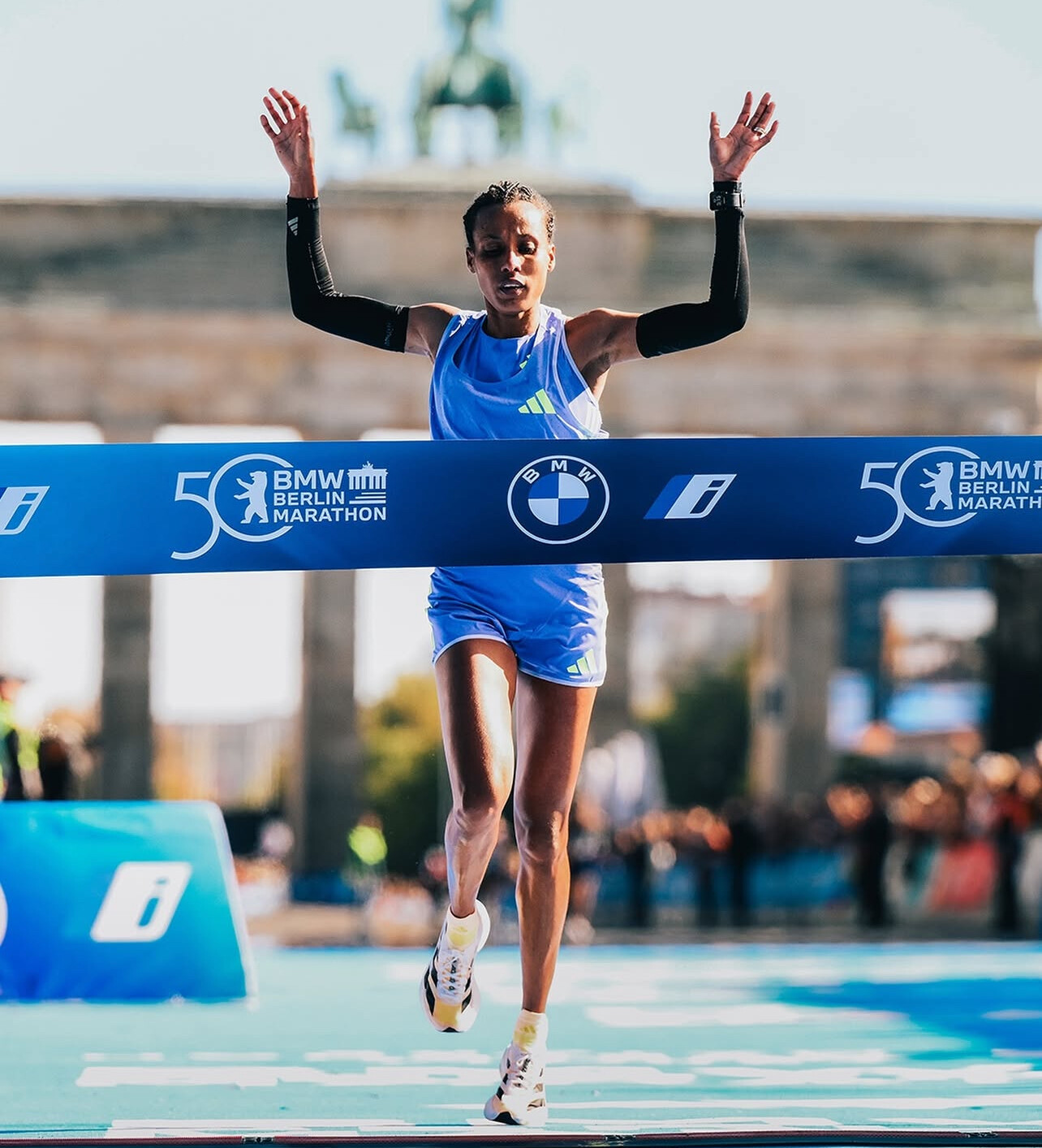
Where the Money Comes From
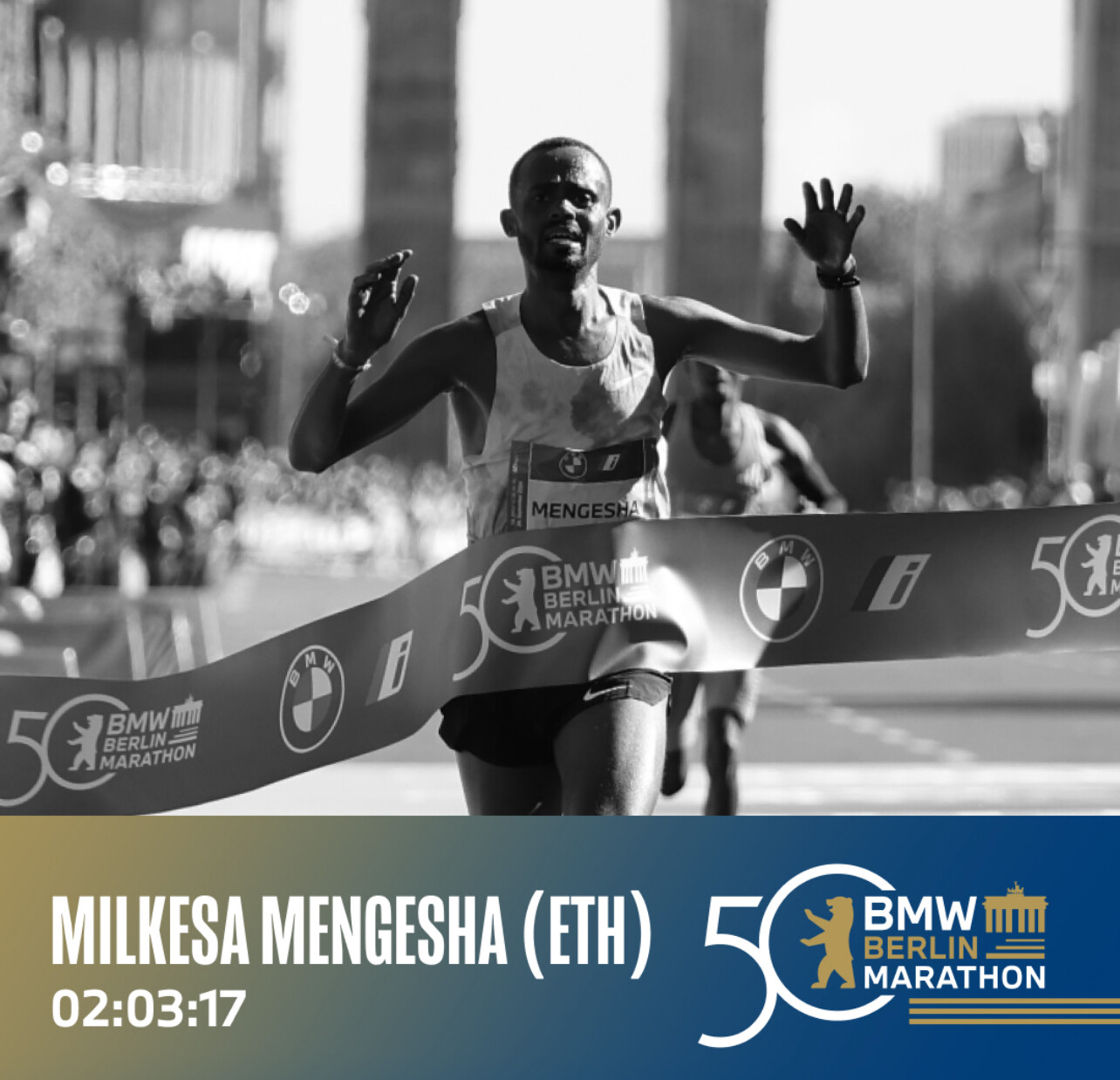
One key revenue stream is the entry fees paid by runners. With more than 47,000 participants, and an average fee of around €145 ($157 USD), that alone brings in an estimated €6.8 million ($7.4 million USD).

On the elite side, Berlin pays out competitive prize money, bonuses, and appearance fees. While exact figures aren’t published, estimates suggest:
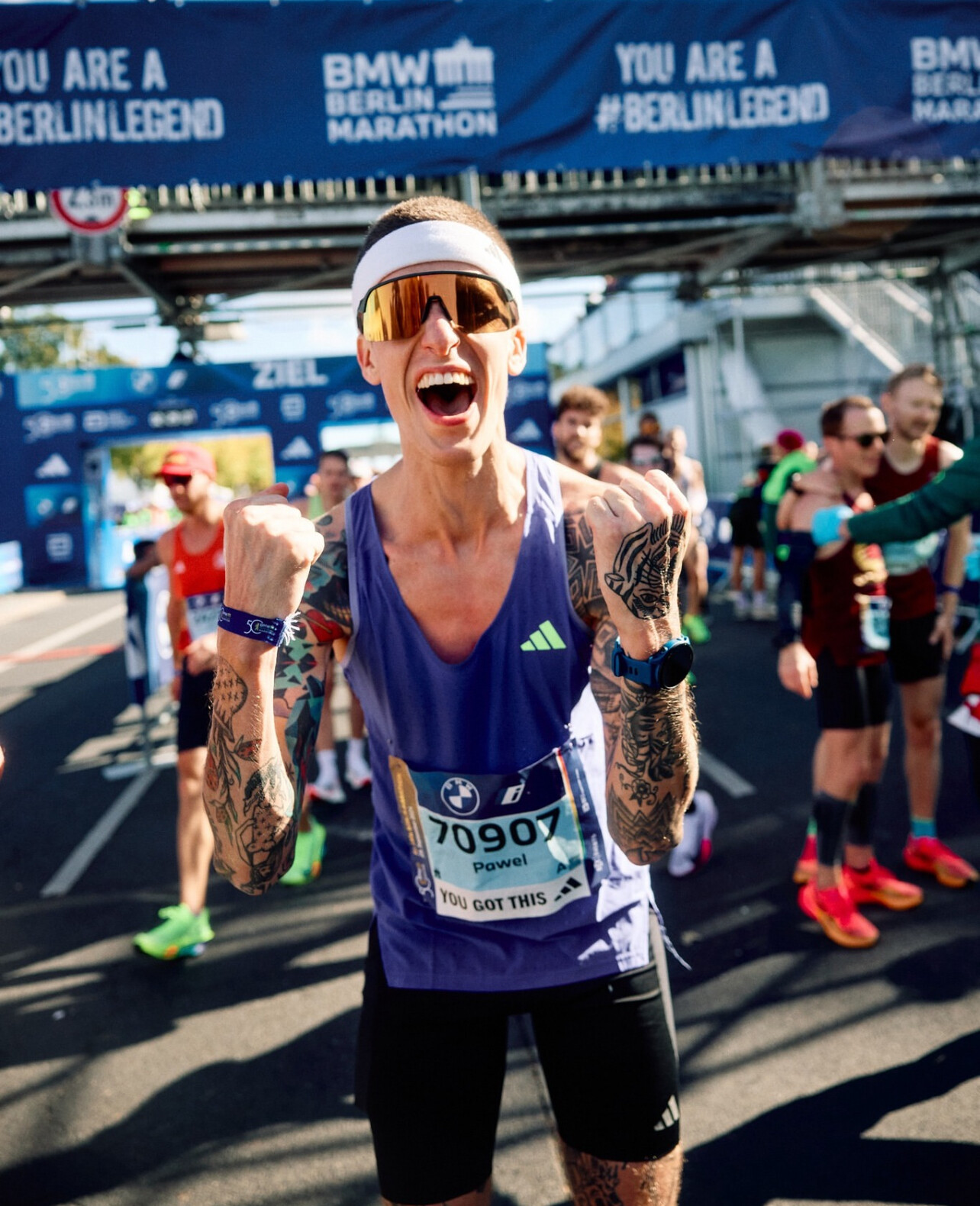
• Prize Money: Around $500,000 USD total, including winners and top-10 finishers.
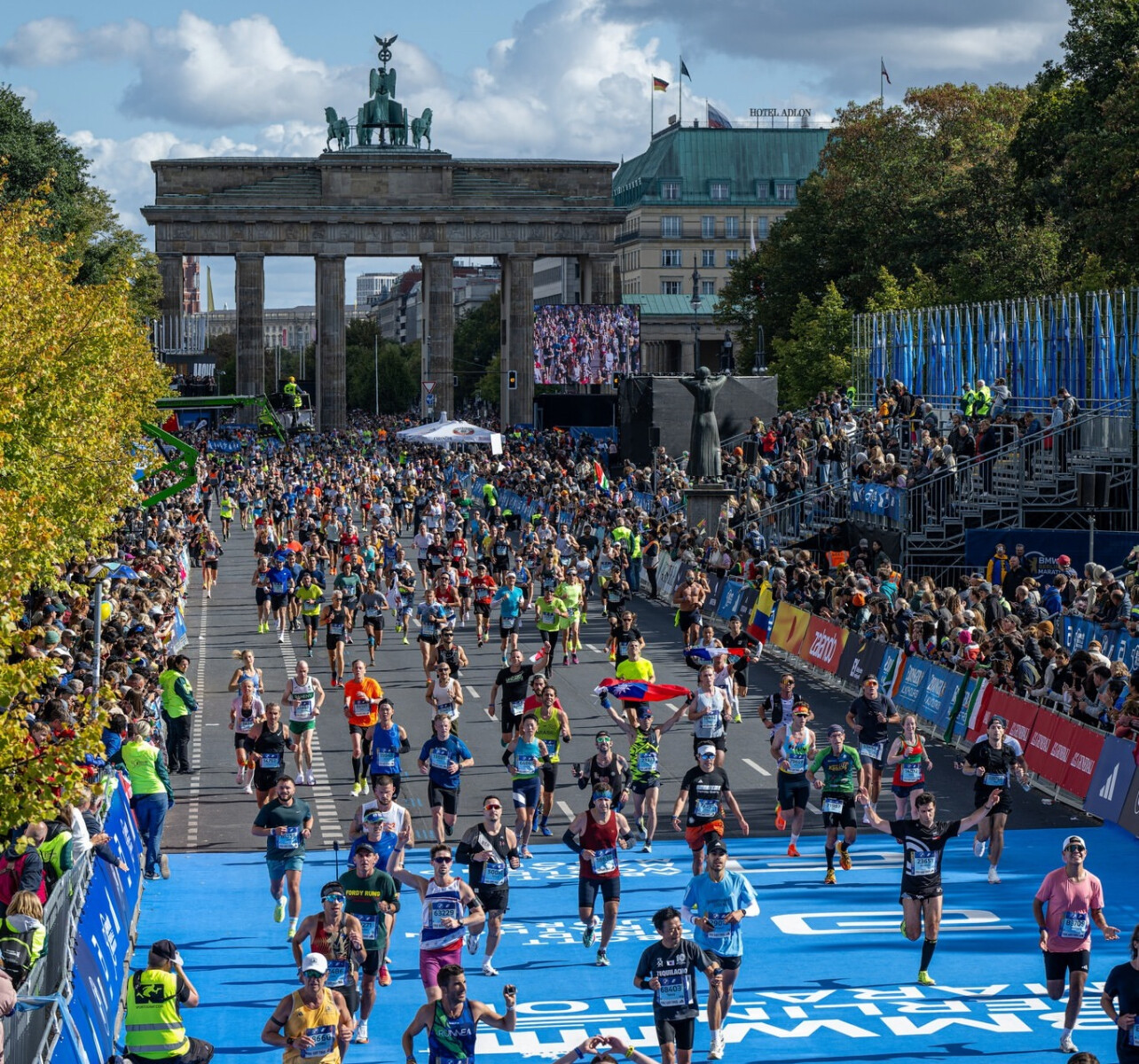
• Bonuses: Additional six-figure performance bonuses for times under certain marks (e.g. sub-2:03 or sub-2:20).
• Appearance Fees: Elite runners, especially past champions or potential record-breakers, can earn $50,000–$100,000 USD or more just to show up.
Berlin’s Fast Course Is Also a Fast Investment
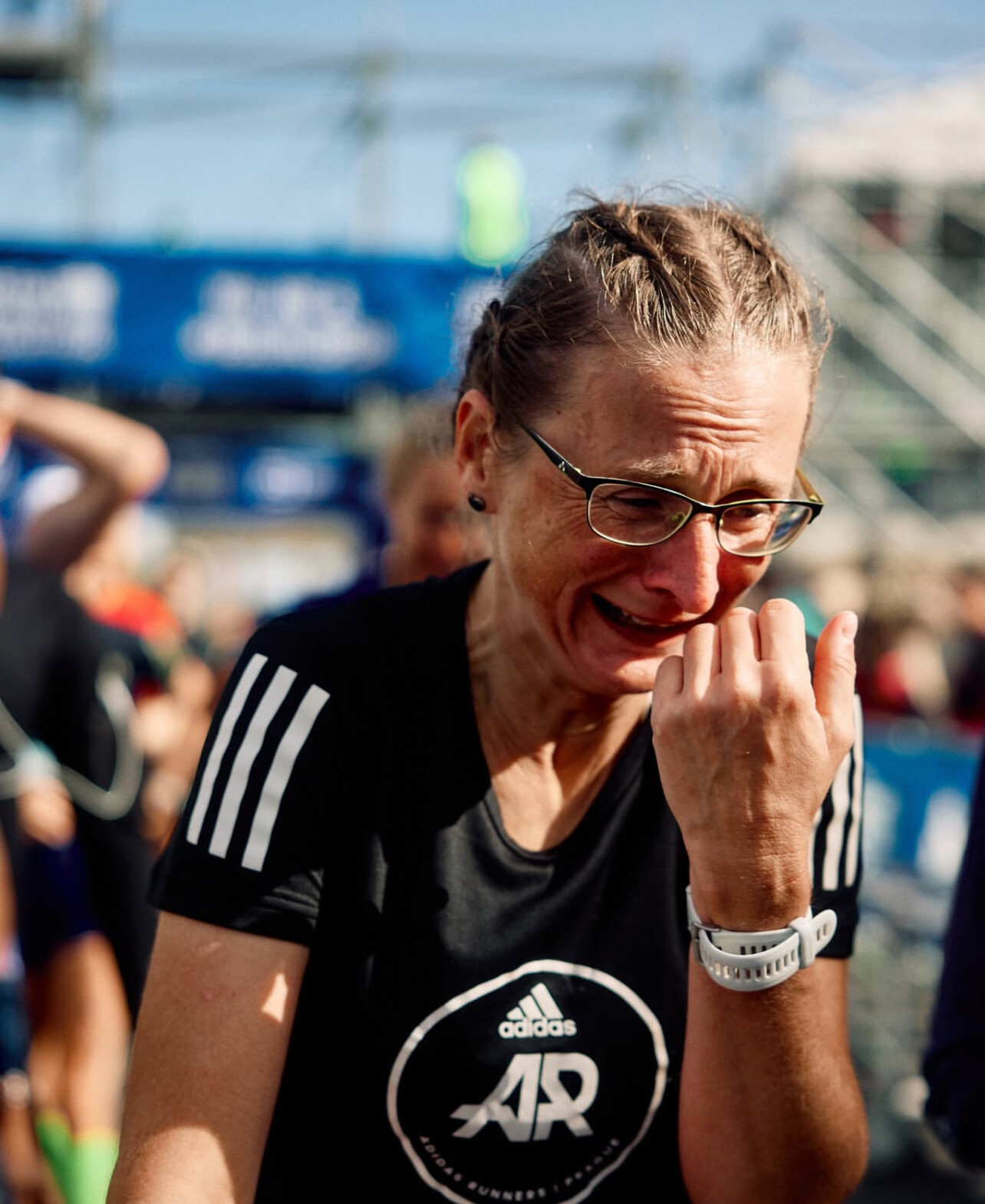
Berlin is known as the world record capital, having hosted 12 world records since 2003. That prestige, paired with a world-class event experience, keeps the race fully subscribed year after year.
Berlin’s mayor Kai Wegner and other city and sports officials were on hand this week to confirm what many already knew: the Berlin Marathon isn’t just a race—it’s a multi-million dollar economic catalystfor the city.
As race day approaches, the energy is building. Whether you’re chasing a PB or just soaking in the electric atmosphere, one thing is clear—Berlin delivers, on the roads and in the numbers.
(07/12/2025) ⚡AMPby Boris Baron
BMW Berlin Marathon
The story of the BERLIN-MARATHON is a story of the development of road running. When the first BERLIN-MARATHON was started on 13th October 1974 on a minor road next to the stadium of the organisers‘ club SC Charlottenburg Berlin 286 athletes had entered. The first winners were runners from Berlin: Günter Hallas (2:44:53), who still runs the BERLIN-MARATHON today, and...
more...Kenya’s Top Athletes to Compete for World Championships Spots at Trials on July 22
With the 2025 World Athletics Championships set to take place in Tokyo this September, Athletics Kenya has announced that the official national trials will be held at the Ulinzi Sports Complex in Nairobi on July 22, 2025.
The one-day meet will determine who earns the right to represent Kenya on the global stage—and with Tokyo hosting the championships, the stakes couldn’t be higher.
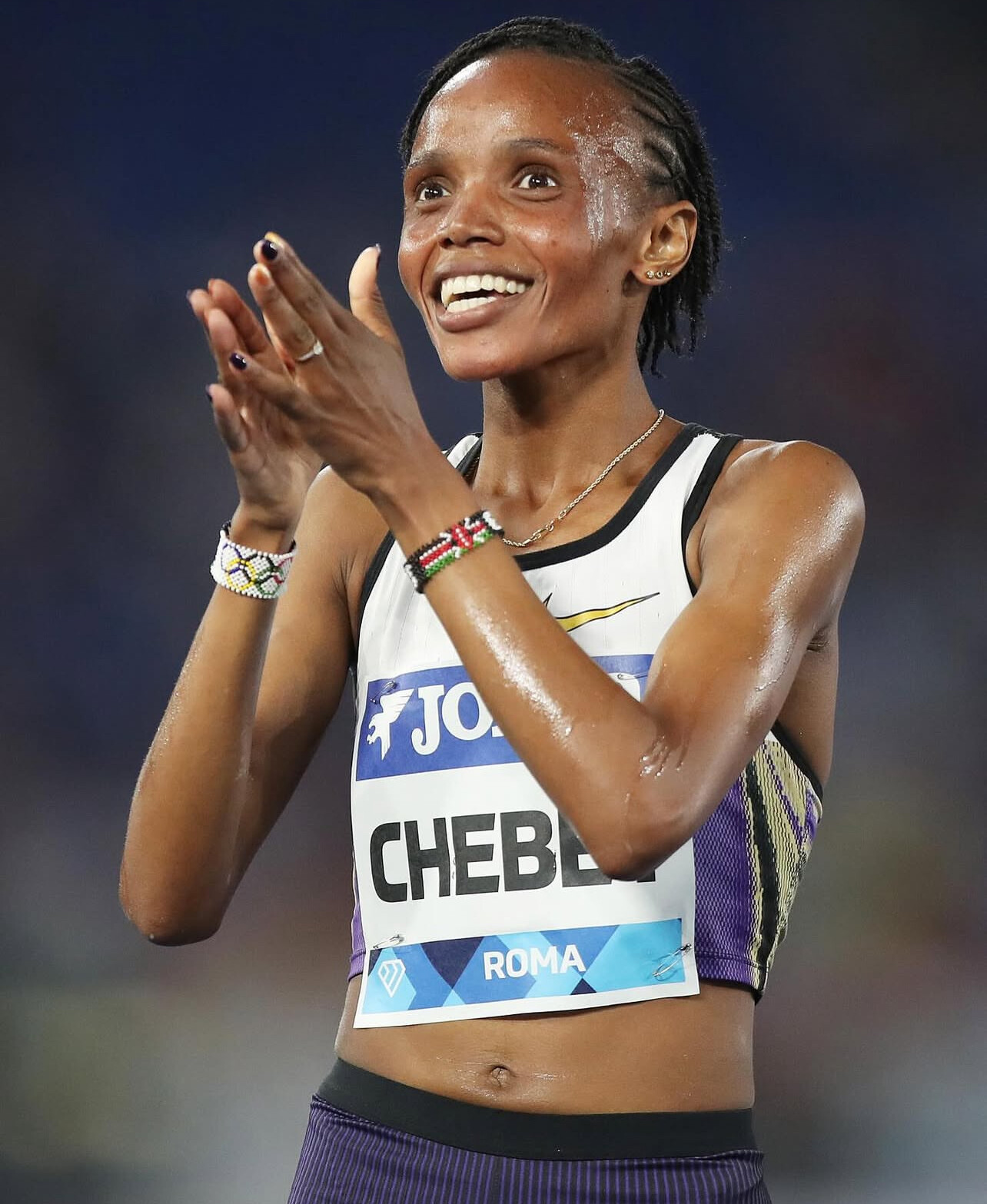
The Tokyo 2025 event is expected to draw the world’s best talent, and Kenya, known for its depth in middle and long-distance running, is aiming to field its strongest team yet. A number of top stars are expected to compete at the trials, including 100m national record-holder Ferdinand Omanyala, world steeplechase medalist Beatrice Chepkoech, 1500m ace Faith Kipyegon, and marathon standout Sharon Lokedi.
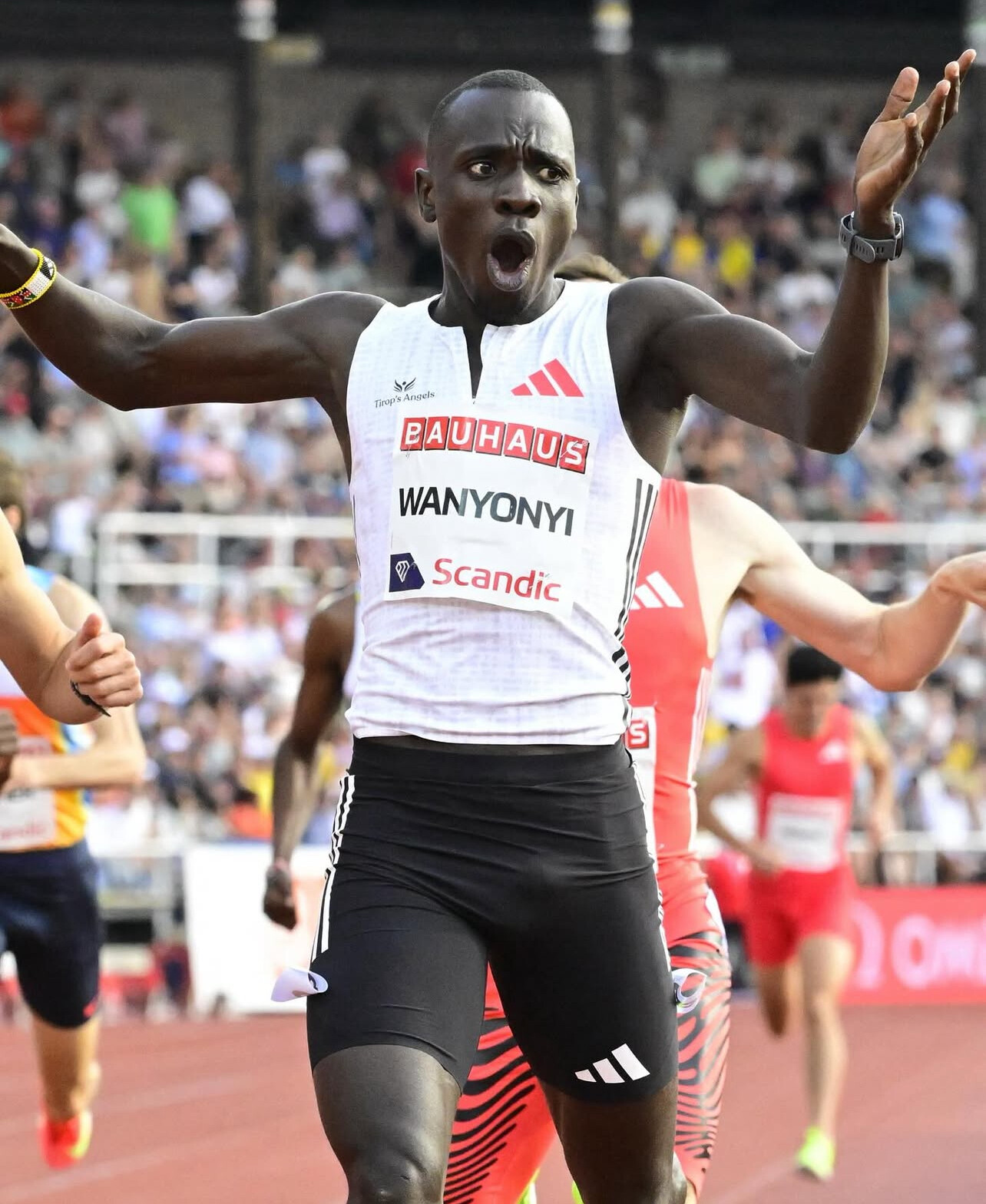
Though most of the attention will be on the track events, Kenya is also working to expand its representation in the field and sprints—areas where the country has shown recent promise.

A Veiled but Historic World Championship Ahead
The Tokyo 2025 World Championships mark the first time Japan will host the event since 1991 in Tokyo—when legendary performances, including Mike Powell’s world long jump record, rewrote the sport’s history books.
The 2025 edition, however, arrives amid a more complex and veiled atmosphere in the sport. With lingering questions about past doping scandals—including renewed attention to China’s 1990s distance-running records—many in the athletics community are calling for clean and transparent competition.
Kenya is no exception. The country remains under close international scrutiny but has made visible strides in testing, education, and compliance with global anti-doping standards.
What to Watch
• Will Faith Kipyegon aim to double in the 1500m and 5000m again?
• Can Omanyala convert his sub-10 form into a world medal?
• Will a new generation of Kenyan athletes step up in the sprints and field events?
The July 22 trials in Nairobi will offer the first answers. Expect fireworks—and a preview of what Team Kenya might look like in Tokyo.
(07/12/2025) ⚡AMPby Boris Baron
Faith Kipyegon to Race 3000m in Silesia – Is the World Record in Sight?
World 1500m record-holder Faith Kipyegon will race the 3000 meters at the Silesia Kamila Skolimowska Memorial on August 16, setting up what could be one of the most anticipated moments of the 2025 track season.
The Kenyan star has been rewriting the history books. Over the past year, she set new world records in the 1500m (3:48.68) and 5000m (14:05.20), and ran the fastest women’s mile ever in an unofficial exhibition event in Paris. Now she’s turning her attention to the 3000m—an event she hasn’t run seriously in over a decade.
A Decade Later, a Return to 3000m
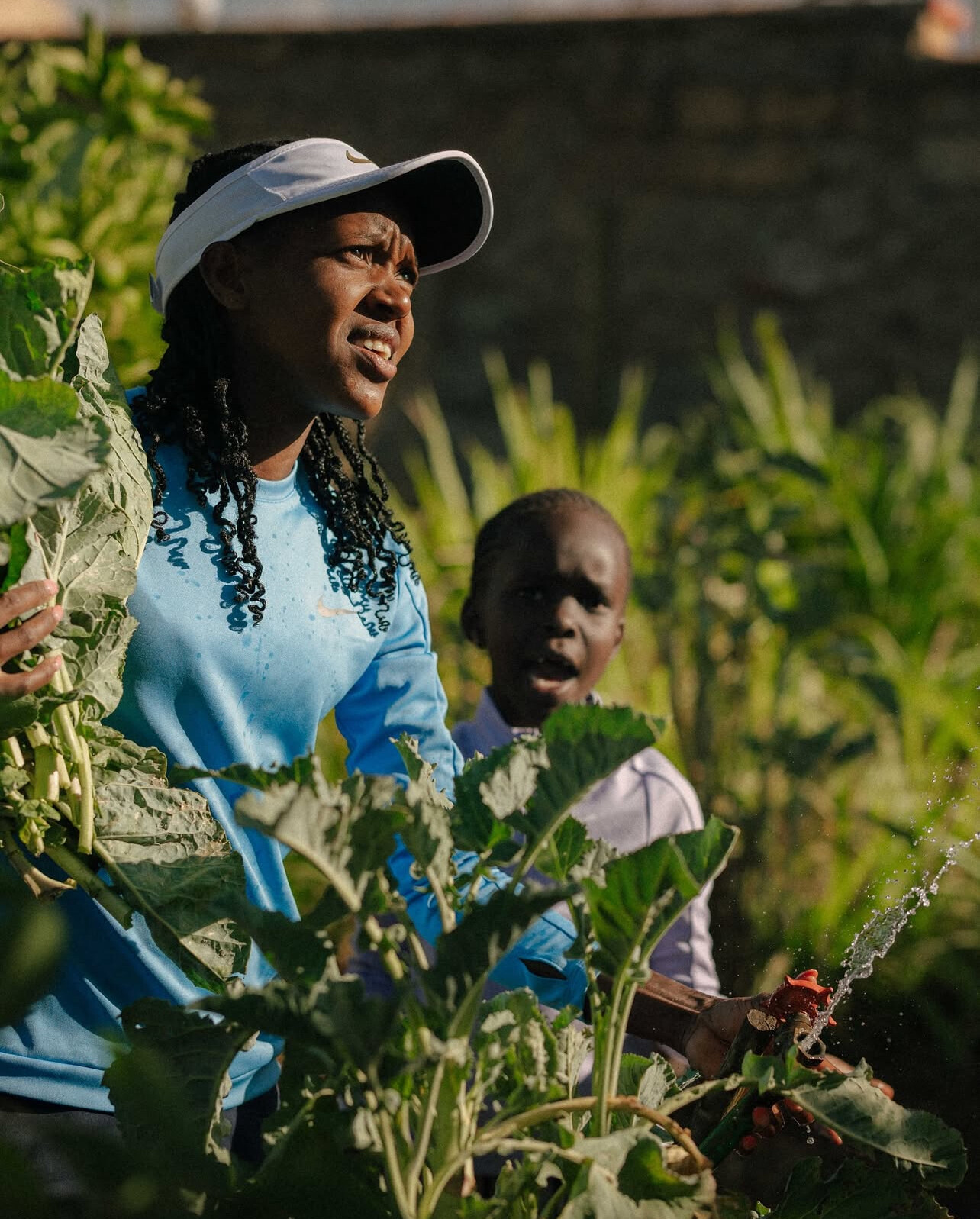
Kipyegon’s personal best of 8:23.55 was set in 2014 when she was just 20. Since then, she’s become a global icon—earning three Olympic gold medals, multiple world records, and establishing herself as the most dominant female middle-distance runner of her generation.
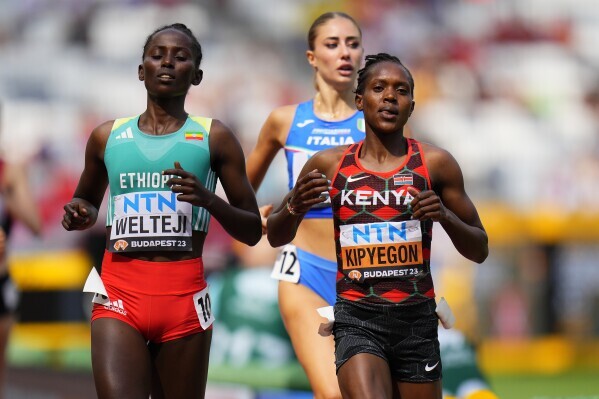
Now, with a combination of endurance from her 5000m training and unmatched speed honed in the 1500m, Kipyegon is poised to take a serious shot at history.
The Record She Might Be Chasing
The current women’s 3000m world record:
• 8:06.11 – Wang Junxia (China), set on September 13, 1993 in Beijing.
That mark has stood for more than 30 years—but it remains controversial. In 2015, a letter reportedly written by Wang Junxia in 1995 surfaced, in which she and nine teammates alleged they were forced to take “large doses of illegal drugs over the years” as part of a state-sponsored doping program under the direction of their coach, Ma Junren.
Wang wrote that the women “tried to refuse the drugs,” but that Ma would allegedly inject them himself if necessary. The letter was sent to Chinese journalist Zhao Yu but remained unpublished until decades later. Ma has consistently denied any doping allegations, and Wang’s world record still stands officially—despite renewed scrutiny.
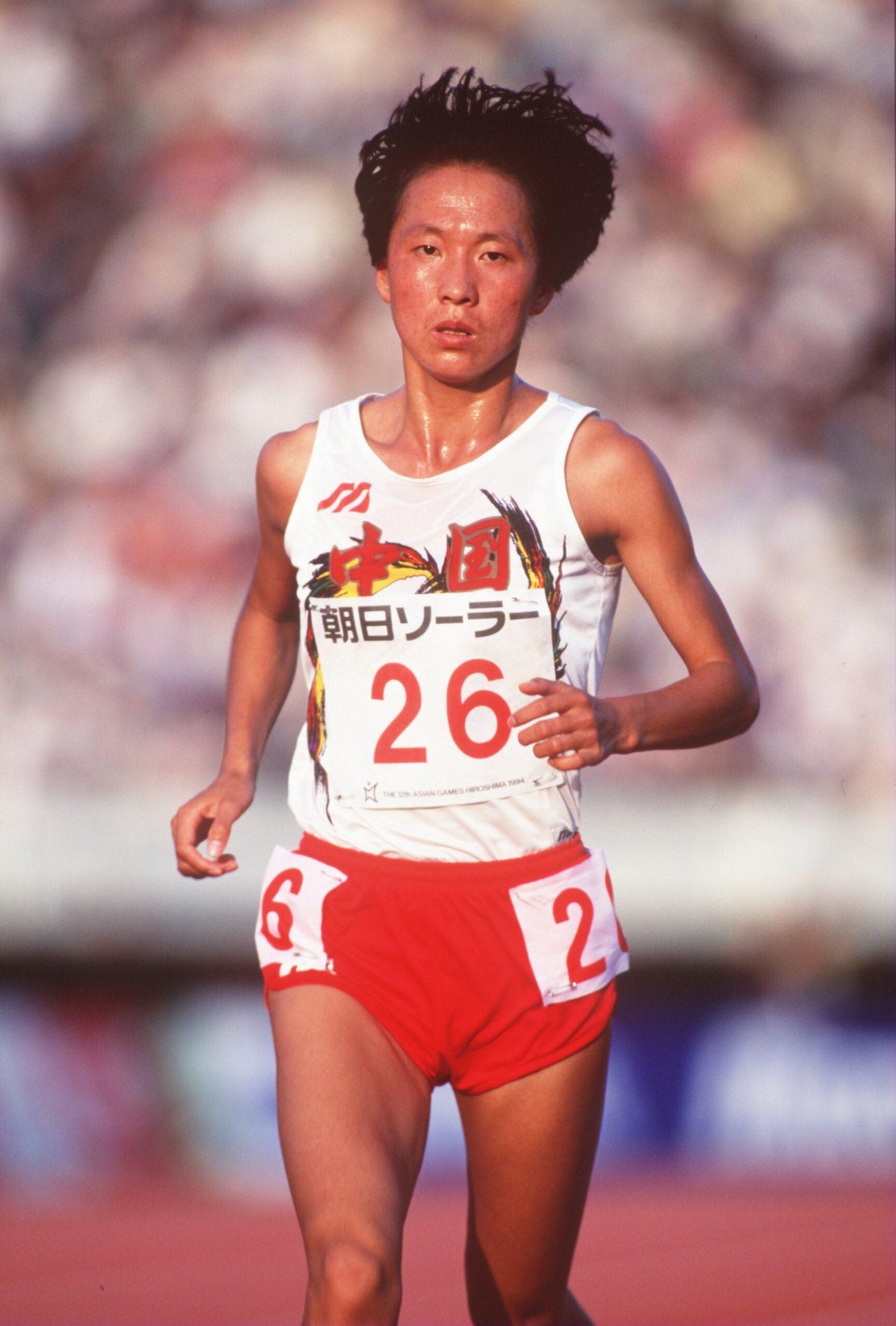
In response, the IAAF (now World Athletics) opened an investigation at the time, but as of today, the record has not been invalidated.
Why Silesia Matters
If Faith Kipyegon runs in the 8:10–8:15 range, it would mark one of the cleanest and most credible performances in the history of the event. Should she go even faster, it could position her to break or at least redefine the context of the 3000m record.
Few athletes in history have had the range, poise, and championship pedigree that Kipyegon carries. With the eyes of the world on Silesia this August, she may once again elevate the sport.
Is a new world record possible? We’ll find out soon.
If she does it, Faith Kipyegon won’t just rewrite another line in the record books—she’ll help reclaim one of the most contested chapters in women’s distance running.
(07/12/2025) ⚡AMPby Boris Baron
Eric Giacoletto: The Curator Preserving the Soul of Track and Field
In the fast-moving world of social media, few people are doing more to preserve the rich history of athletics than Eric Giacoletto. From his home in Albertville, France, Eric has become one of the most passionate archivists of the sport—sharing rare photos, insightful commentary, and forgotten moments that continue to inspire athletes and fans across the globe.
Though not a former elite runner himself, Eric’s knowledge runs deep, and his posts serve as daily reminders of what makes our sport timeless. He documents both legends and lesser-known heroes, giving context, names, and reverence to each moment he shares. His work has captured the attention of many—including My Best Runs founder Bob Anderson.
“What Eric is doing is important,” says Bob. “He’s preserving history—moments and athletes that might otherwise be forgotten. His posts are reminders of the beauty, pain, and glory of running.”
Just this past week, Eric posted dozens of compelling images from the golden eras of track and field. From that treasure trove, Bob Anderson selected eight photos he found particularly inspiring. Each tells a story—of courage, character, and the timeless spirit of competition.
Here are the eight photos Bob selected from Eric’s posts this past week:
Photo 1
Jim Ryun and Peter Snell – A Finish for the Ages
Two legends of the mile—Jim Ryun of Wichita and New Zealand’s Peter Snell—captured in one of the most dramatic finishes in middle-distance history. Ryun’s expression of anguish and Snell’s graceful stride speak volumes about what it takes to be world-class. An image that defines grit, shared by Eric earlier this week.
Photo 2
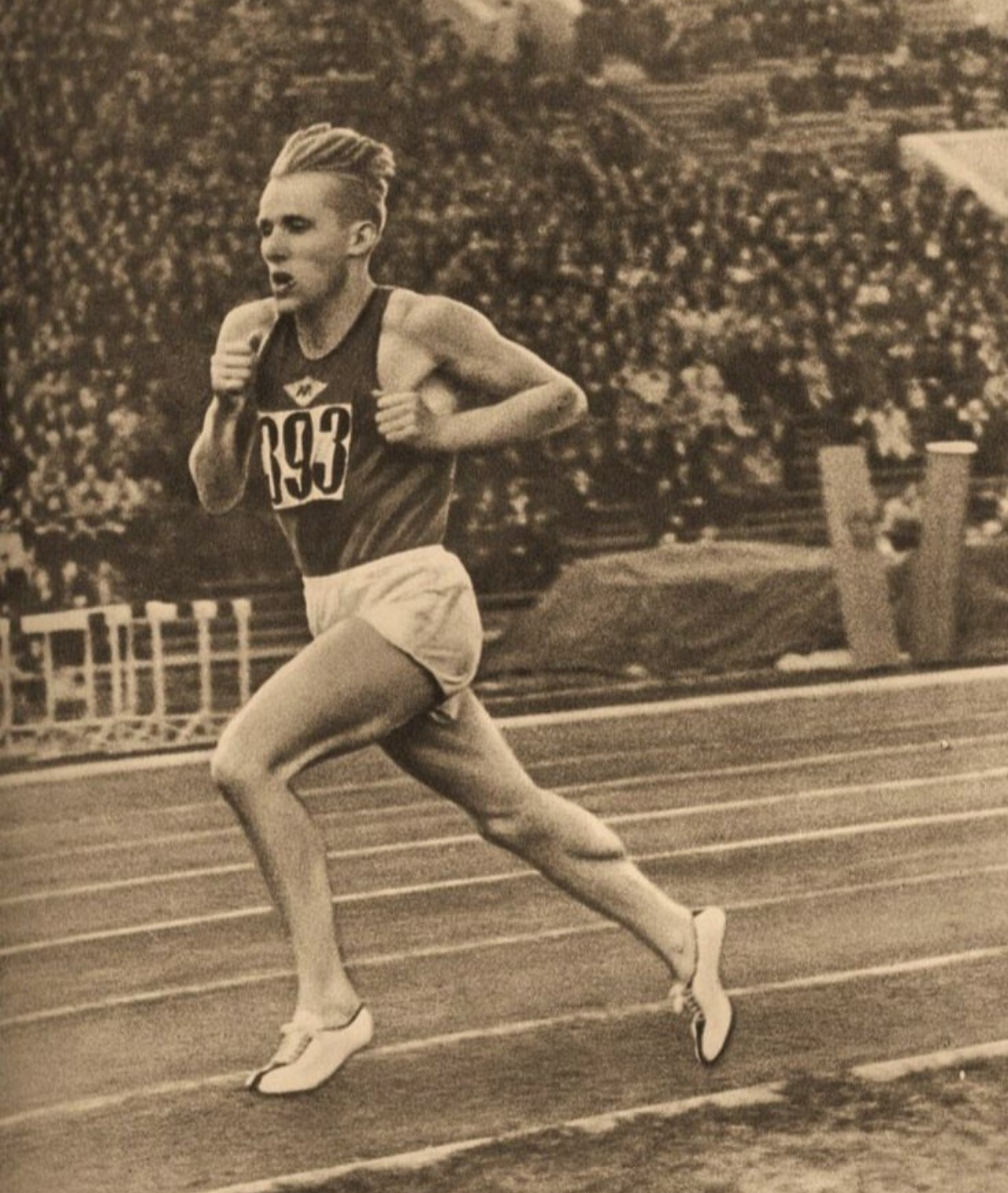
Vladimir Kuts – Soviet Powerhouse in Full Flight
Sprinting down the track with trademark aggression, Vladimir Kuts dominated the 1956 Olympics in Melbourne, winning both the 5,000m and 10,000m. Eric’s photo selection highlights Kuts’ unmistakable form and ferocity—a reminder of Eastern Bloc distance dominance during the Cold War era.
Photo 3
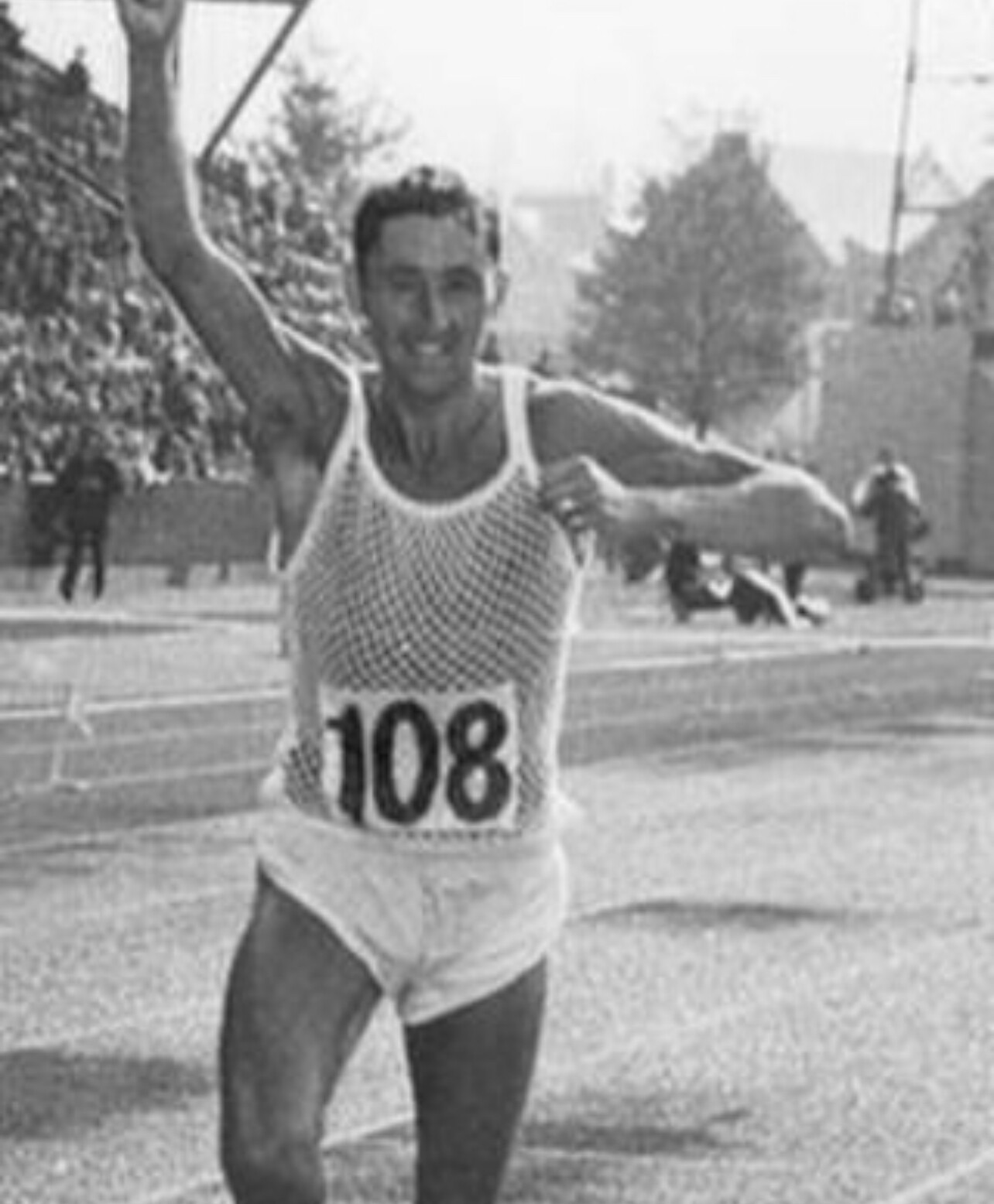
Ron Hill – 1970 Commonwealth Games, Edinburgh
Ron Hill, the pioneering English marathoner, crosses the line in his signature mesh singlet. By 2014, he had logged 159,106 lifetime miles—running at least one mile every day for 50 years. A legendary streak by a man who redefined commitment to the sport.
Photo 4
Steve Prefontaine in His Element
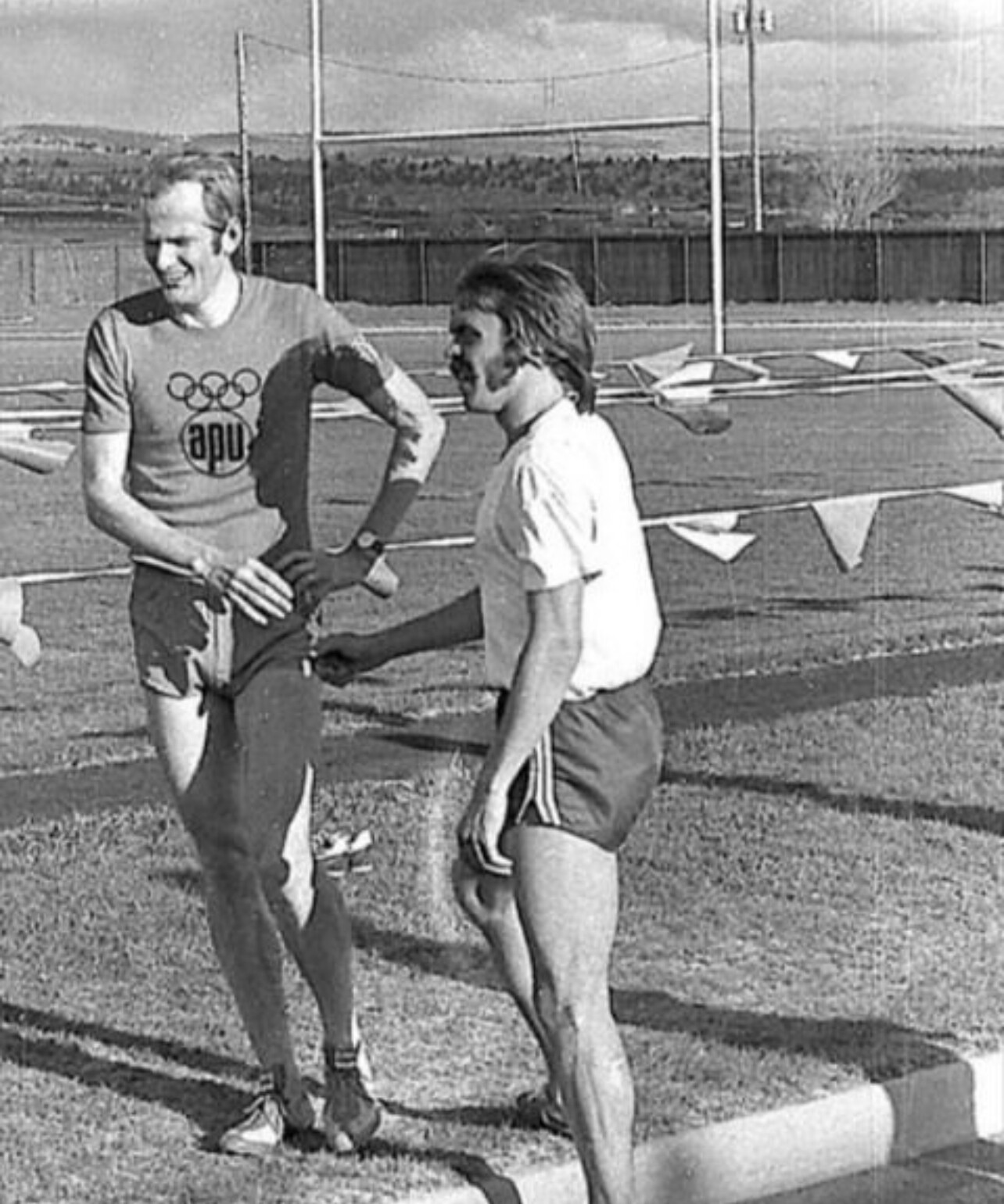
A candid photo of “Pre” during a training session, captured in conversation and camaraderie. Prefontaine’s fearless front-running style and outspoken personality made him a symbol of competitive fire. This relaxed moment shows the human side of a distance icon.
Photo 5
Herb Elliott – Training on the Dunes of Portsea
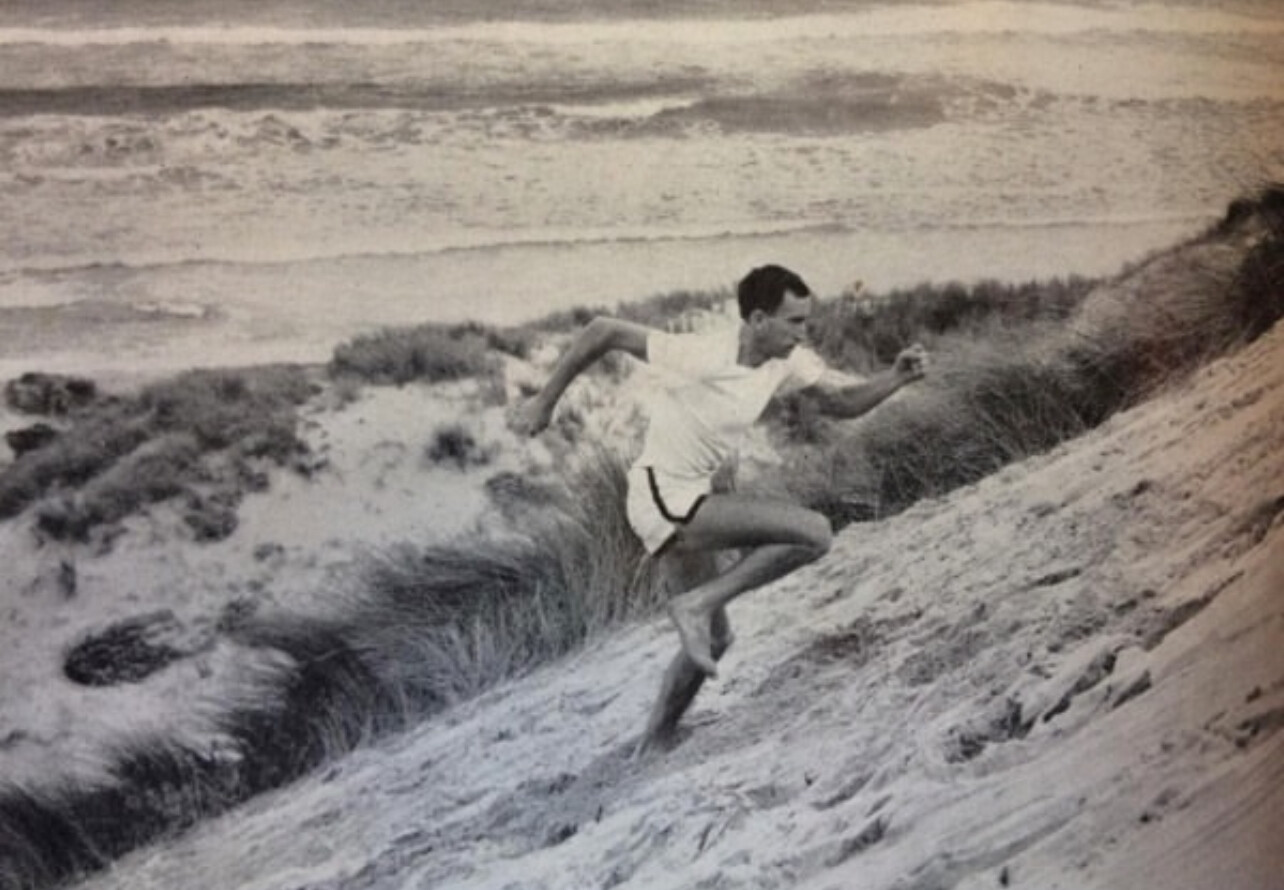
A powerful shot of Australian great Herb Elliott charging barefoot up the coastal sand dunes, guided by coach Percy Cerutty’s naturalist philosophy. Elliott never lost a 1500m or mile race in his career, and this photo shows the raw work behind that undefeated record.
Photo 6
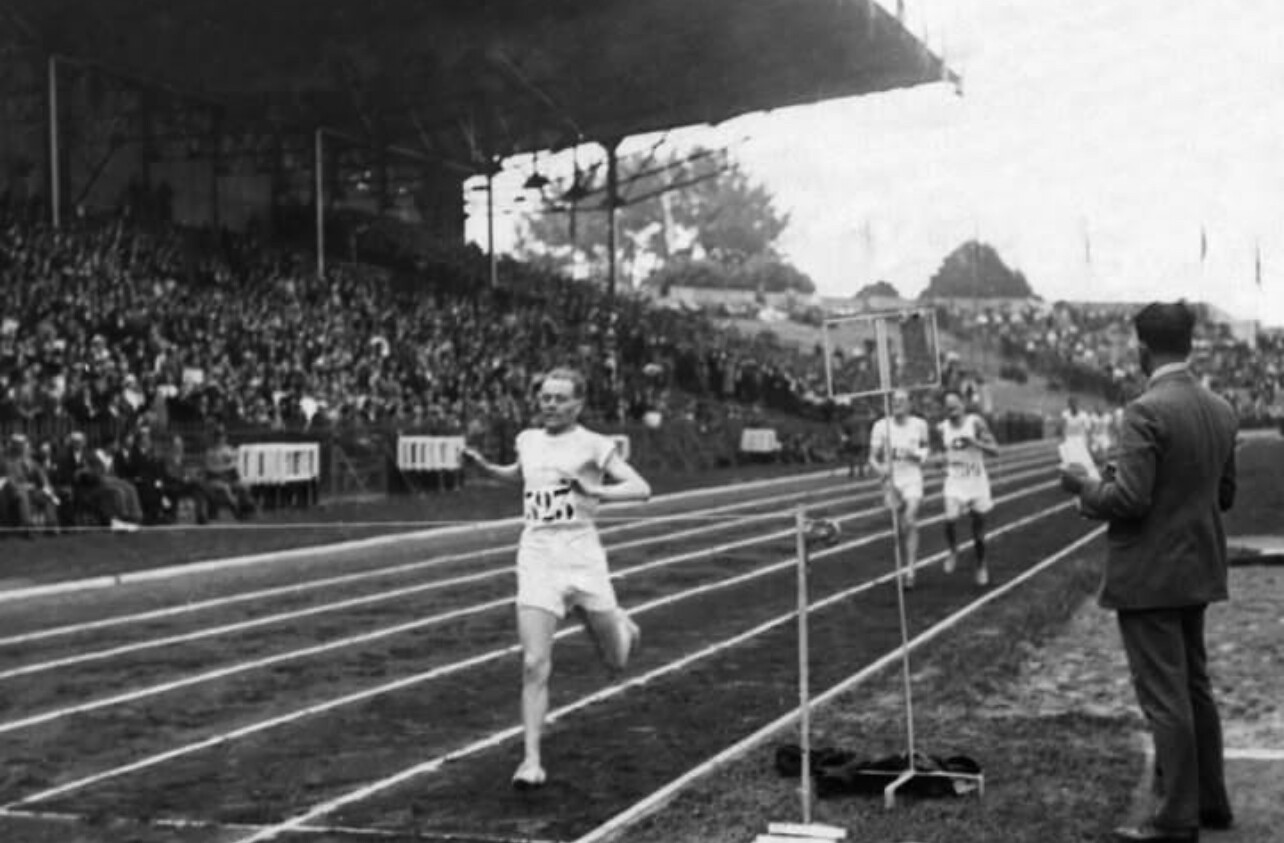
Paavo Nurmi – Double Gold in One Afternoon
Paris, July 10, 1924: Paavo Nurmi wins the 1500m, then returns just hours later to take gold again in the 5000m. This photo shows him well ahead of the field, delivering one of the most jaw-dropping performances in Olympic distance running history.
Photo 7
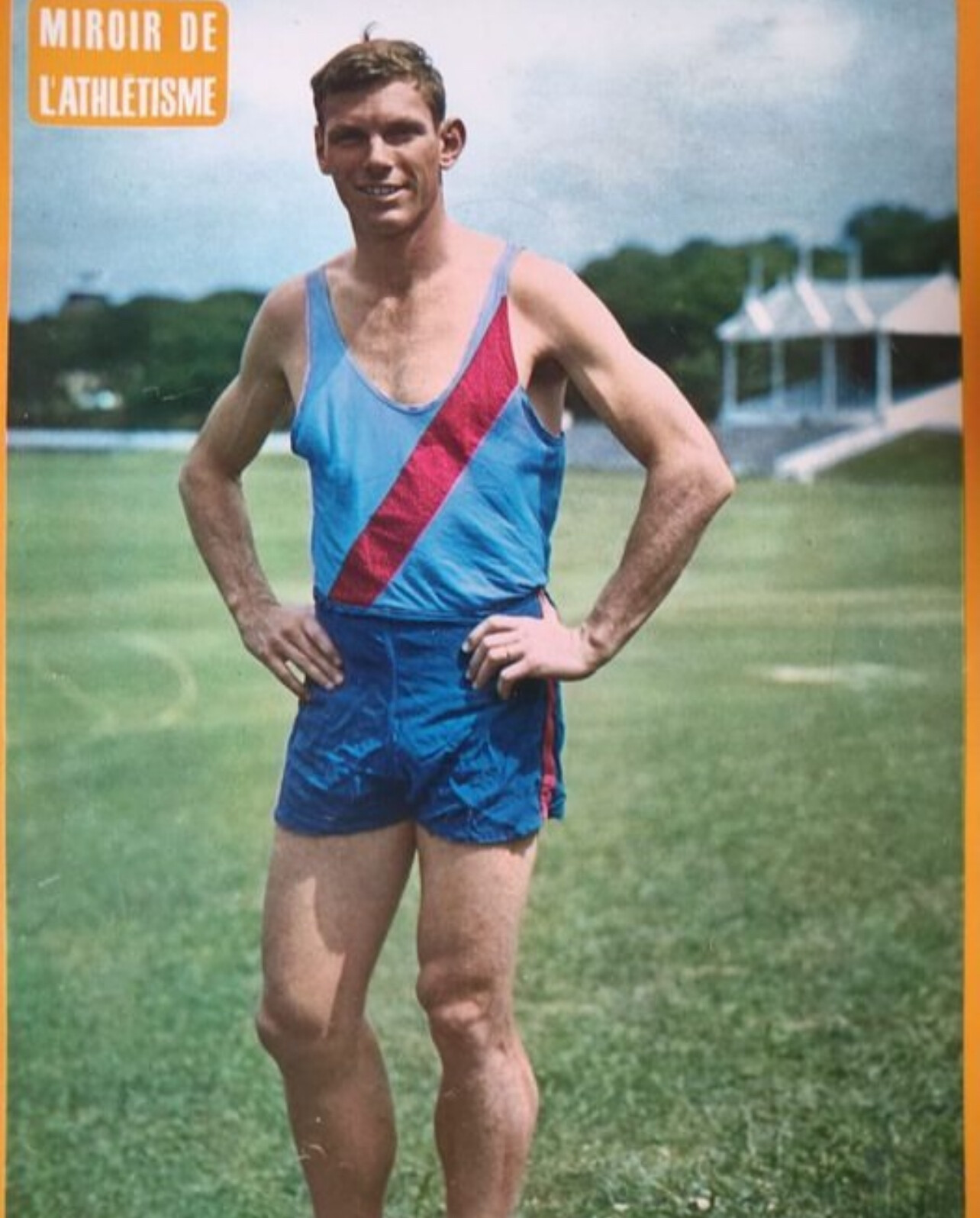
Peter Snell – Power and Poise in Color
A rare color image of New Zealand’s Peter Snell, one of the greatest middle-distance runners of all time. Winner of three Olympic gold medals, Snell combined strength with speed in a way few ever have. Eric’s post brings his iconic stature to life in full color.
Photo 8
Bill Rodgers – Boston Breakaway, 1975

Captured mid-stride during his victory at the 1975 Boston Marathon, Bill Rodgers pulls away under the escort of state police motorcycles. His win that year—2:09:55—was part of a dominant streak that made him a U.S. marathon legend. A city, and a sport, in full celebration.
Honoring the Archivist
Eric’s posts on Facebook and Instagram (@ericgiacoletto) continue to spark meaningful conversations among athletes, historians, and lifelong fans. Whether he’s unearthing a forgotten race photo or celebrating an athlete’s legacy, Eric is doing more than documenting—he’s inspiring.
If you enjoyed this feature, and with Eric’s permission, we’d love to post more regularly here at My Best Runs. Let us know what you think—we’re always looking to spotlight the people and moments that keep the spirit of our sport alive.
(07/12/2025) ⚡AMPby Boris Baron and Bob Anderson
Tea, Grit, and Gold: The Timeless Bond of Percy Cerutty and Herb Elliott
In the world of distance running, few duos are more legendary—or unconventional—than Percy Cerutty and Herb Elliott. This remarkable photo, a moment of quiet between the storm, captures their unique relationship: the eccentric coach and his prodigy, sharing a cup of tea, as if Olympic greatness were just another day at the beach.
Percy Cerutty, the Australian coaching pioneer, was known for his wildly unorthodox training methods. Forget tracks and stopwatches—Cerutty believed in natural running, hard living, and mental toughness forged through raw experience. His athletes sprinted through sand dunes, carried logs, ran barefoot, and followed strict diets. He preached a philosophy he called “Stotanism” (a blend of Stoicism and Spartan discipline), rooted in pushing physical and mental limits to achieve personal greatness.
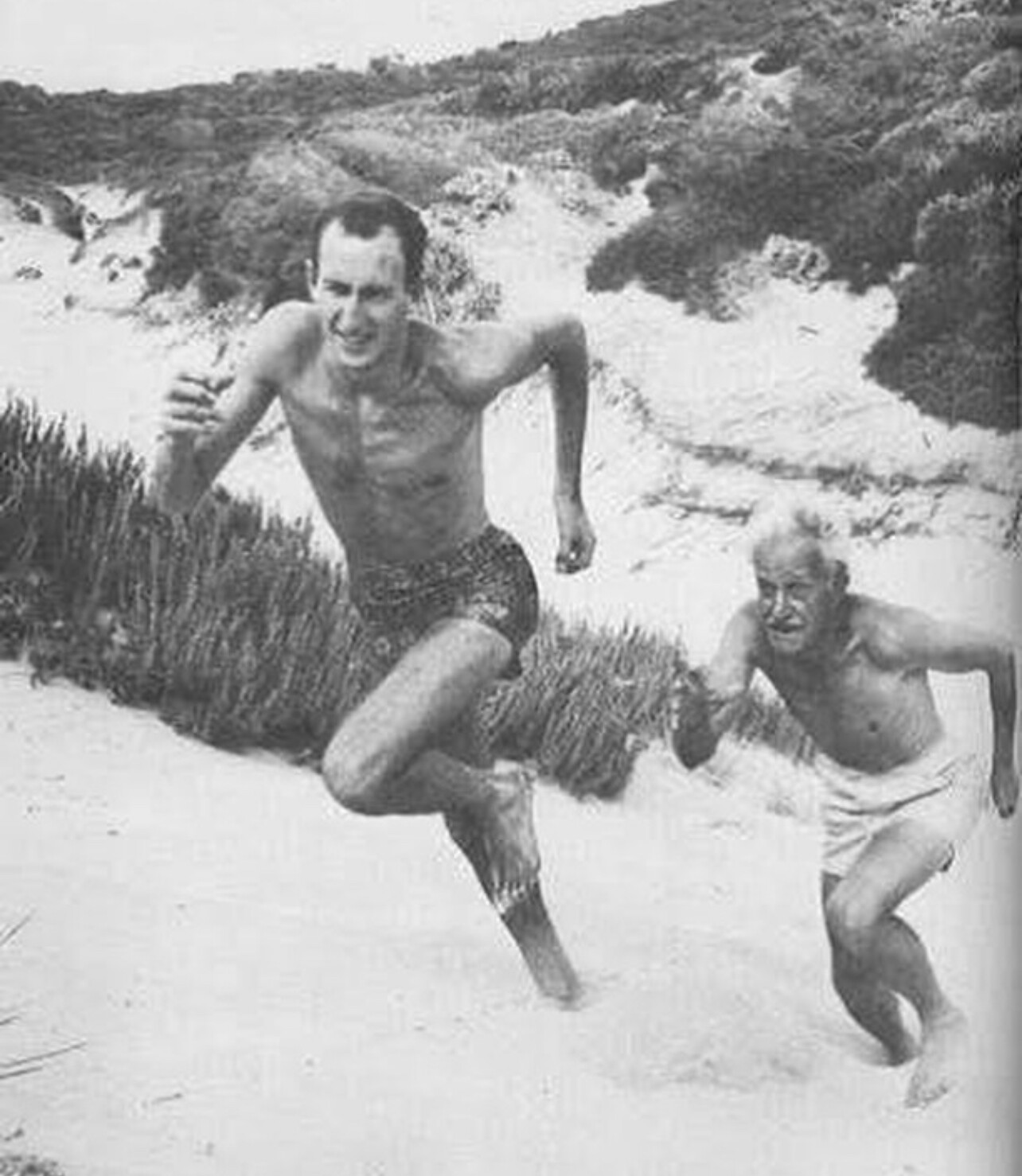
At the center of his philosophy stood Herb Elliott, perhaps the greatest middle-distance runner of his time. Under Cerutty’s guidance, Elliott remained undefeated in the mile and 1500m throughout his career. His crowning moment came at the 1960 Rome Olympics, where he won gold in the 1500m with a then-world record of 3:35.6—a performance that stunned the world and validated Cerutty’s methods.
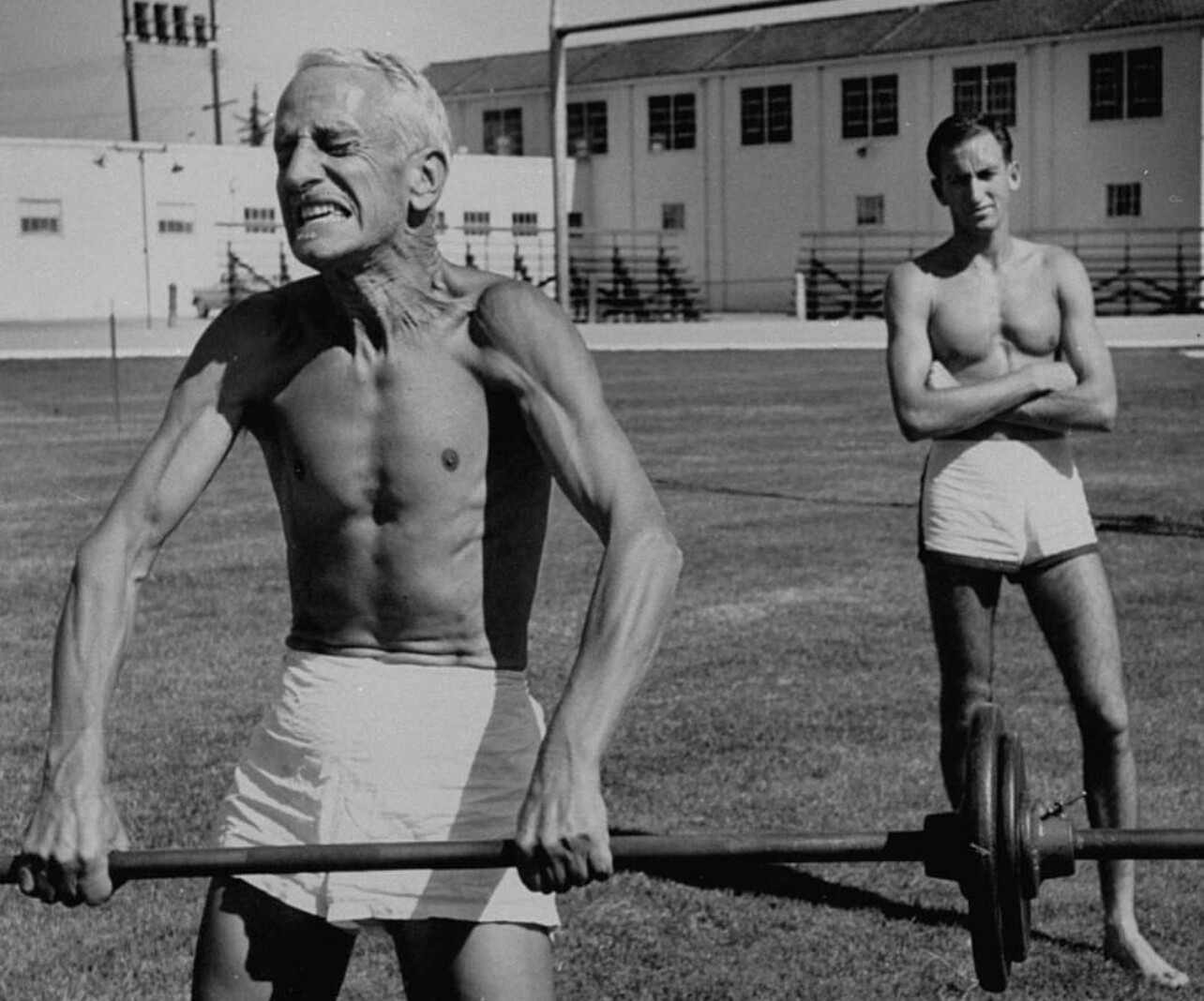
The photo tells its own story: Cerutty, intense and engaged, leans in with wisdom and purpose, while Elliott, relaxed and barefoot, listens—legs strong from miles on sand, mind sharp from hours of philosophical talk with his coach. They are not just athlete and trainer. They are master and disciple. Kindred spirits.
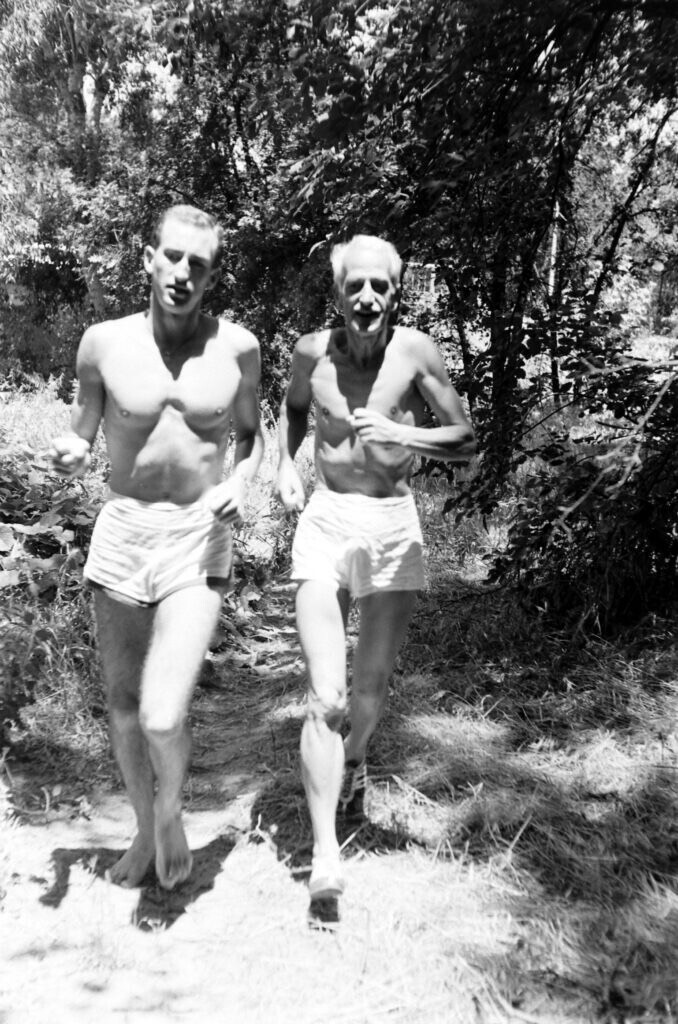
While modern training methods have evolved, the legacy of Percy and Herb endures. They taught us that greatness isn’t just built in the gym or on the track—it’s born in the wilderness, in the soul, and sometimes, over a cup of tea.
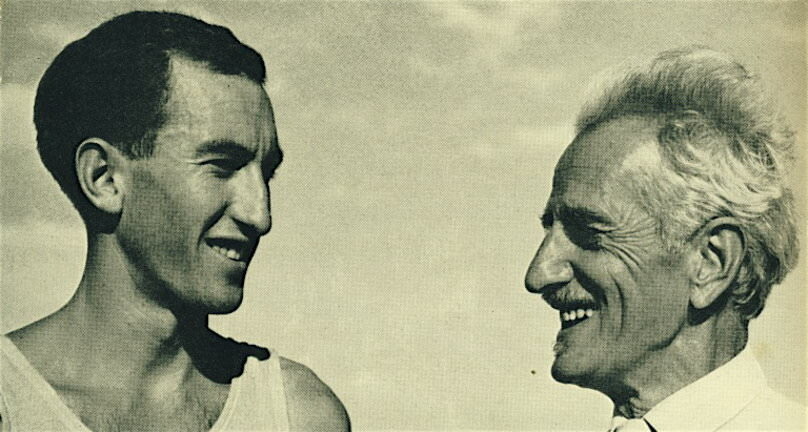
Thanks Eric Giacoletto for digging up this photo.
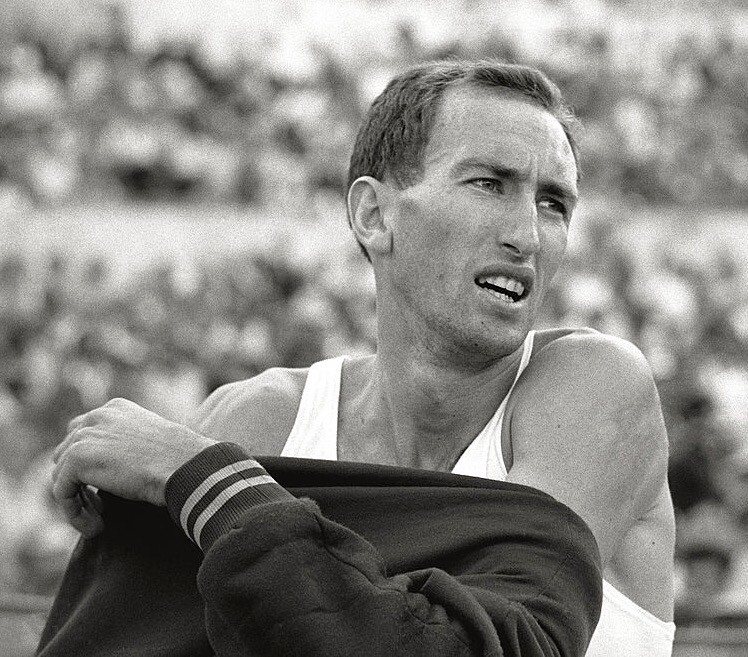
by Boris Baron
Sifan Hassan Returns to the Track for the Mile at London Athletics Meet on July 19
Sifan Hassan is heading back to the track—and to one of her signature events—at the London Athletics Meet on July 19, where she’ll contest the mile, a distance in which she once held the world record.
The Dutch distance superstar has done nearly everything in the sport. She’s an Olympic champion in the 5000m, 10,000m, and marathon, making history in Paris last summer by becoming the first woman ever to win Olympic gold in all three. She also took bronze in both the 5,000m and 10,000m at those same Games, adding to the three medals she won in Tokyo (held in 2021).
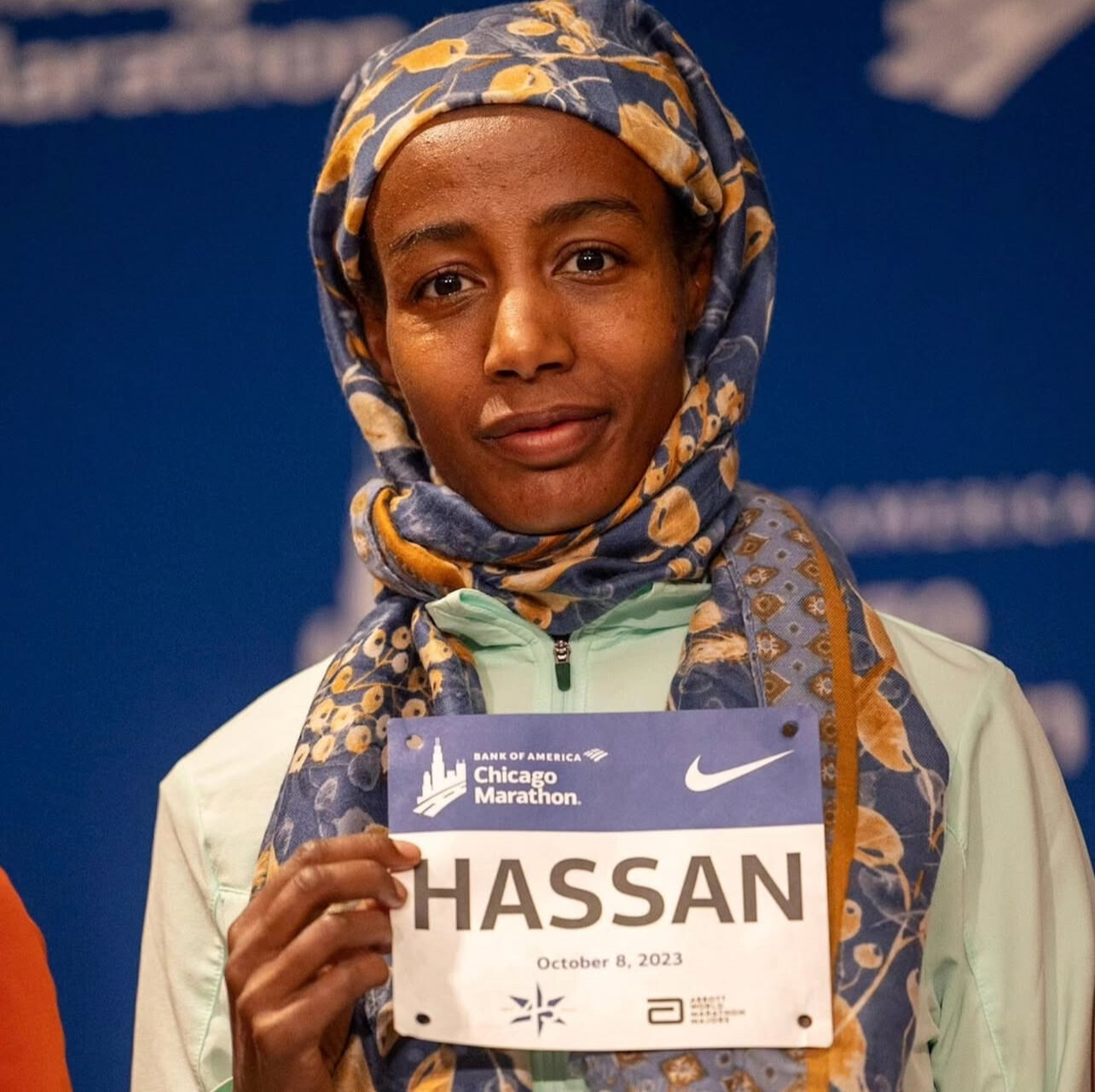
But despite her dominance in longer races, the mile still holds a special place in Hassan’s legacy. She shattered the world record in the mile in Monaco in 2019, running 4:12.33—a mark that stood until 2023.
Now, she returns to London, a city where she’s had immense success. She made headlines with her marathon debut win in 2023, clocking 2:18:33 in dramatic fashion after stopping mid-race to stretch. In her second appearance at the London Marathon in 2025, she placed third.
Her last outing on the track at the London Athletics Meet was also memorable—she finished third in the 5000m in 14:13.42, a time that still stands as the European record.
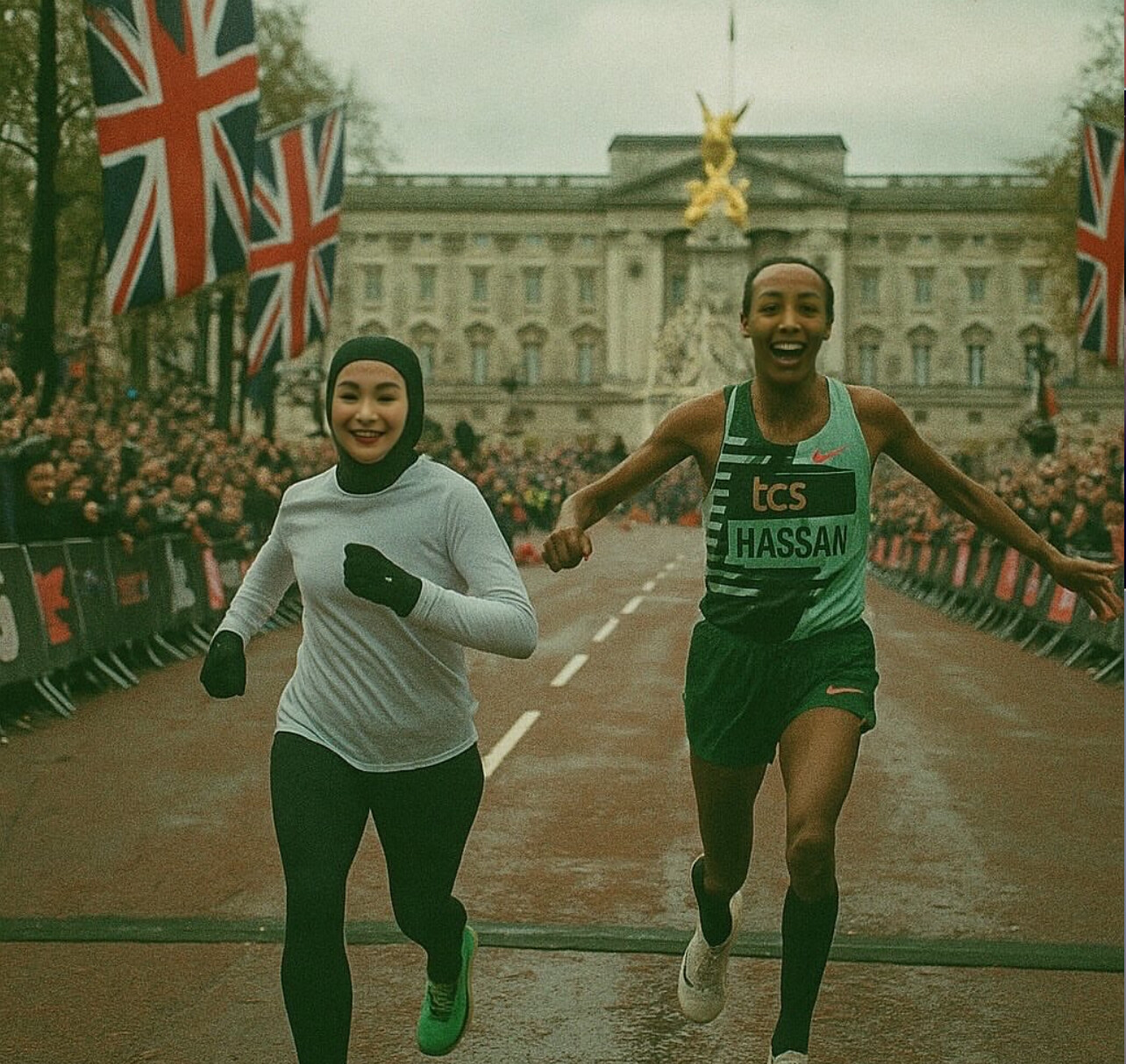
At 31, Hassan shows no signs of slowing down. Her return to the mile is a reminder of the versatility and endurance that have defined her career. With her eyes now set on another strong showing in London, fans can expect fireworks on July 19.
(07/11/2025) ⚡AMPby Boris Baron
The 30-Minute Window That Can Make or Break Your Running Progress
The 30-Minute Window That Can Make or Break Your Running Progress
Let’s talk about one of the most underrated habits that separates elite runners from the constantly injured: post-run recovery.
Most runners treat the workout as the main event—then just move on with their day. No cooldown, no mobility, no refueling. But what you do in the 30 minutes after your run is just as important as the miles you log.
When you finish a run, your body is in a high-alert state. Muscles are inflamed. Cortisol is elevated. Glycogen is depleted. This is your golden window—a chance to help your body adapt and bounce back stronger… or ignore it and slowly break down.
Here’s a recovery sequence that works:
1. Cool Down Properly
Don’t stop cold. Jog or walk for 5–10 minutes to gradually bring your heart rate down. It’s a small habit that significantly reduces next-day soreness and stiffness.
2. Rehydrate
Even if you didn’t feel hot, you lost fluid. Drink water—and if your run was longer than an hour or particularly sweaty, add electrolytes.
3. Refuel with Purpose
Within 30 minutes, have a mix of carbohydrates and protein. This replenishes glycogen stores and kick-starts muscle repair. A smoothie, banana with peanut butter, or a recovery shake are great options.
4. Mobility Work
You don’t need a 60-minute yoga class. Just 5–10 minutes of stretching or foam rolling helps your nervous system shift into recovery mode and reduces tightness.
Skipping recovery means accumulating stress and increasing injury risk. But prioritizing it helps you absorb training, recover faster, and stay in the game longer.
Running doesn’t end when your watch stops. That’s when real progress begins.
(07/10/2025) ⚡AMPby Boris Baron
The Fastest Mile Ever Run—And Why It Still Hasn’t Been Broken
On July 7, 1999, under the lights of Rome’s Stadio Olimpico, Morocco’s Hicham El Guerrouj delivered a performance that remains one of the most iconic feats in track and field history. Racing against a world-class field, El Guerrouj clocked 3:43.13 for the mile—shattering his own previous best and establishing a world record that still stands 26 years later.
No man has run faster since.
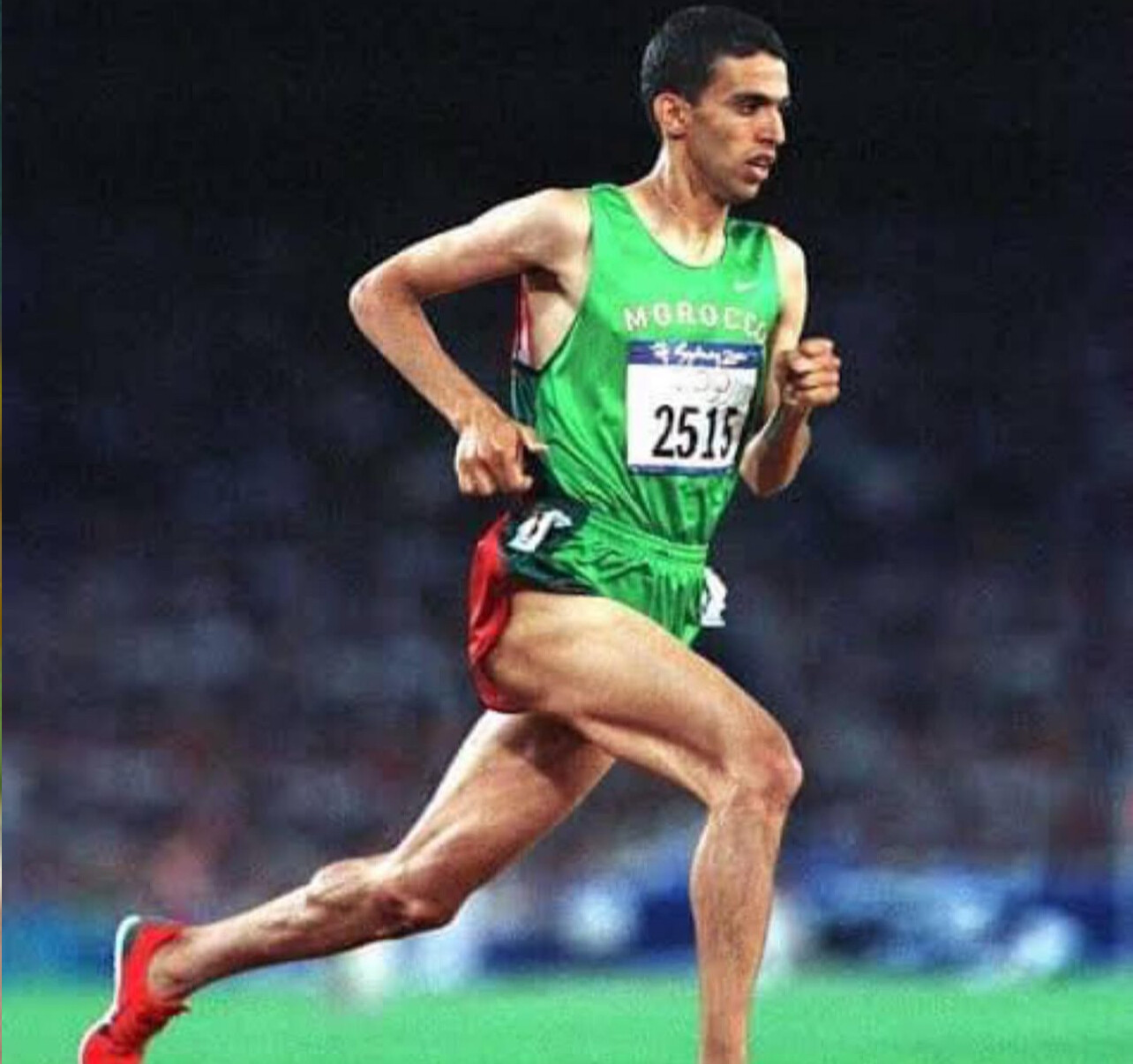
In one of the most thrilling middle-distance races ever contested, Kenya’s Noah Ngeny pushed El Guerrouj all the way to the finish, crossing in 3:43.40—a time that remains the second-fastest mile in history. The duel produced two performances that remain unmatched, solidifying the race as perhaps the greatest mile ever run.
At the time, El Guerrouj was already recognized as the world’s premier miler, having come heartbreakingly close to Olympic gold in 1996 when he tripped with 400 meters to go. But his performance in Rome in 1999 left no doubt about his dominance. Paced perfectly through the opening laps, El Guerrouj accelerated with trademark elegance and blistering speed over the final 400 meters, crossing the line with history behind him.
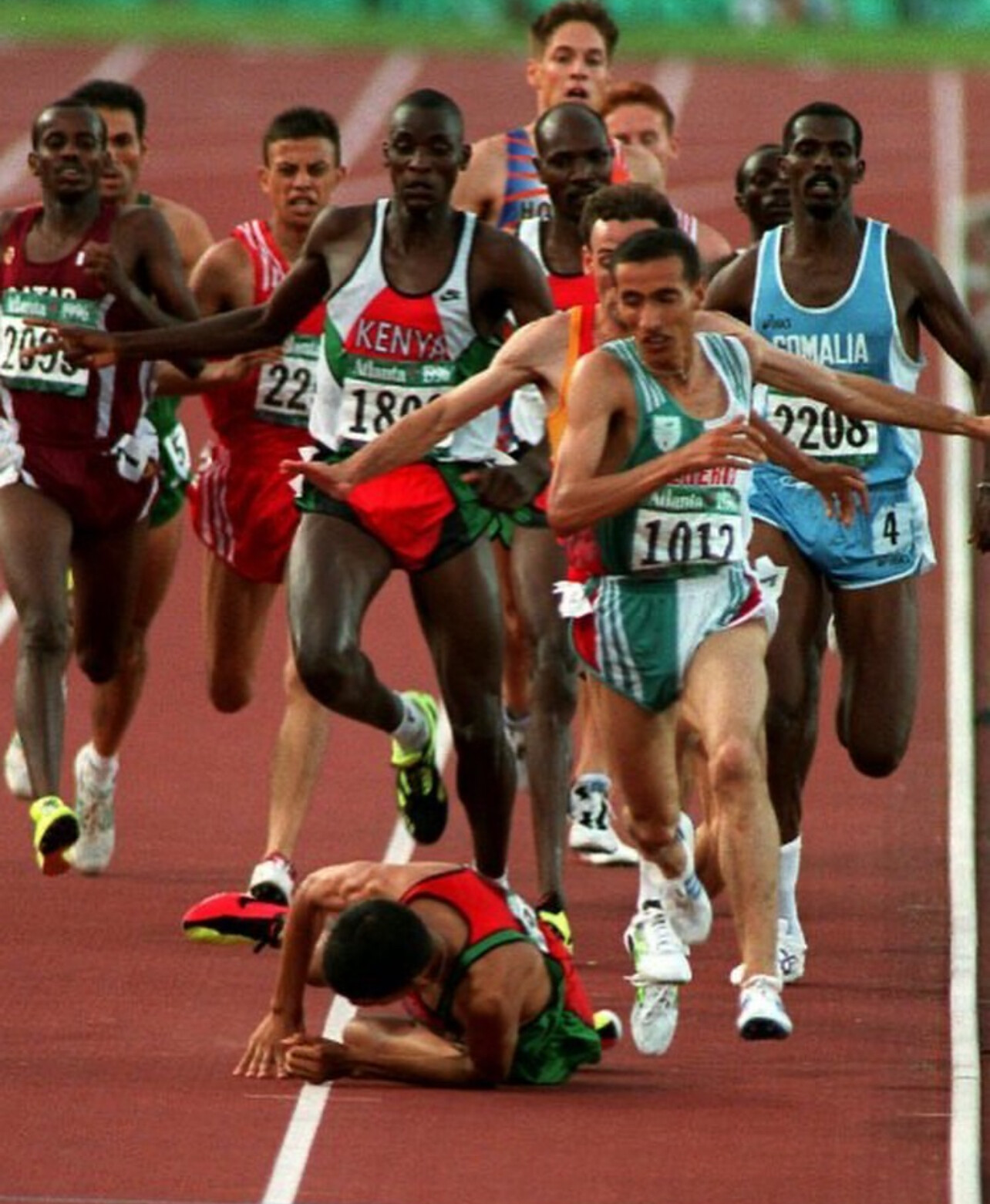
His 3:43.13 replaced the previous world record of 3:44.39, set by Noureddine Morceli in 1993, and it has now stood longer than any other men’s outdoor mile world record in history.
Fast Facts:

• Date: July 7, 1999
• Location: Stadio Olimpico, Rome, Italy
• Winner: Hicham El Guerrouj (Morocco) – 3:43.13 (World Record)
• Runner-Up: Noah Ngeny (Kenya) – 3:43.40 (Still #2 All-Time)
Legacy

El Guerrouj went on to win double Olympic gold in 2004 (1500m and 5000m), capping a storied career. But it’s the 1999 mile in Rome that may be his most enduring legacy. Despite super spikes, faster tracks, and new training philosophies, no one has yet managed to break 3:44 since that night.
As we mark 26 years since this historic performance, the record stands not just as a mark of physical excellence, but as a symbol of the enduring mystique of the mile—track and field’s most storied distance.
(07/10/2025) ⚡AMPby Boris Baron
Sinaloa Has a New Queen of Speed! Meet Jennifer Tirado Chavarín
At just 17 years old, Jennifer Tirado Chavarín has sprinted her way into the history books—and into the hearts of Mexican track fans.
Representing Sinaloa at the 2025 Conade National Olympics, Jennifer lit up the track with a blazing 100-meter time of 12.06 seconds, earning gold and a ticket to the Ibero-American U18 Championships in Paraguay. ????
Hailing from Mazatlán, Jennifer’s story is more than a race result. It’s the rise of a young athlete driven by grit, dreams, and discipline. With every step, she’s redefining what’s possible—not just for herself but for an entire generation of Mexican girls who see in her the power of believing big.

“This isn’t just talent,” one coach remarked. “It’s fire. It’s heart. It’s hard work.”
Now set to represent Mexico on the international stage, Jennifer Tirado Chavarín is a name to remember. She’s not just running for medals—she’s running for a movement.

The world better keep up—Sinaloa’s speed queen has just begun.
(07/10/2025) ⚡AMPby Boris Baron
David Sharpe: From Top of the Track to the Edge of Chaos
In the golden era of British middle-distance running, David Sharpe carved out his own unique lane—a fierce competitor on the track and a wild card off it. Now, the enigmatic former 800m specialist is telling all in a gripping, unfiltered memoir that pulls no punches.
Born in Jarrow, North-East England, Sharpe rose from humble beginnings to international acclaim. His athletic résumé is impressive: World Junior Champion, European Indoor Champion, World Cup winner, and the fastest Brit over 800m in 1992 with a blistering 1:43.98. Trained alongside legends like Steve Cram and coached by the iconic Jimmy Hedley, Sharpe became known for his trademark late kick—often coming from the back to snatch victory at the line.
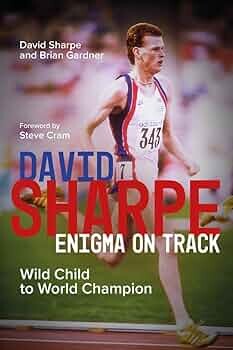
But if Sharpe’s racing style was unpredictable, his life outside the track was even more so.
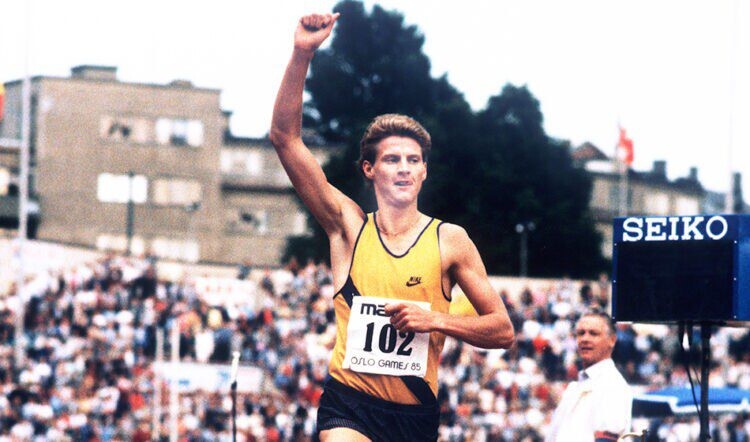
His new tell-all book offers a no-holds-barred look at the rollercoaster journey of a man once considered one of Britain’s brightest talents. He opens up about his battles with erratic behavior, brushes with controversy, and the highs and lows of being an elite athlete in the spotlight.
Sharpe touches on topics rarely explored in athletics autobiographies—motorbiking, celebrity boxing, birdwatching, skiing, and even suicide. He speaks candidly about suspected drug use in the sport, athlete payments, bereavement, and the toll that a turbulent lifestyle can take. He also reflects on his intense relationship with coach Jimmy Hedley and expresses regret over episodes that derailed parts of his career.
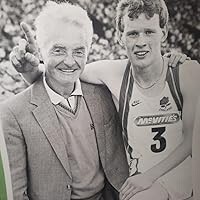
Through it all, one thing becomes clear: David Sharpe was never just a runner. He was a character. A fighter. A survivor.
His story isn’t just for athletics fans—it’s a window into the mental, emotional, and cultural world of competitive running during a transformational era.
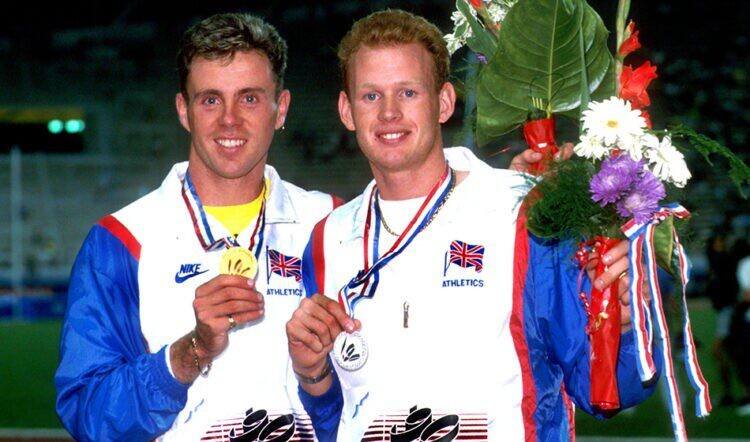
“David’s story is as entertaining as his running once was.” That tagline isn’t marketing fluff—it’s a fitting summary of a career and life that defied convention. For those who think middle-distance running is all about pace and splits, Sharpe reminds us that the real battles are often fought off the track.
Don’t miss this one.
(07/09/2025) ⚡AMPby Boris Baron
Monaco Diamond League Preview: Distance Fireworks Expected from 800m to 5000m
The prestigious Monaco Diamond League meet is set to ignite the track today, with a thrilling lineup of distance races headlined by Olympic medalists, world record holders, and rising stars. With world-best times under threat, all eyes turn to Monaco’s lightning-fast track where history is often made July 11.
Men’s 800m – 2:23 p.m. ET
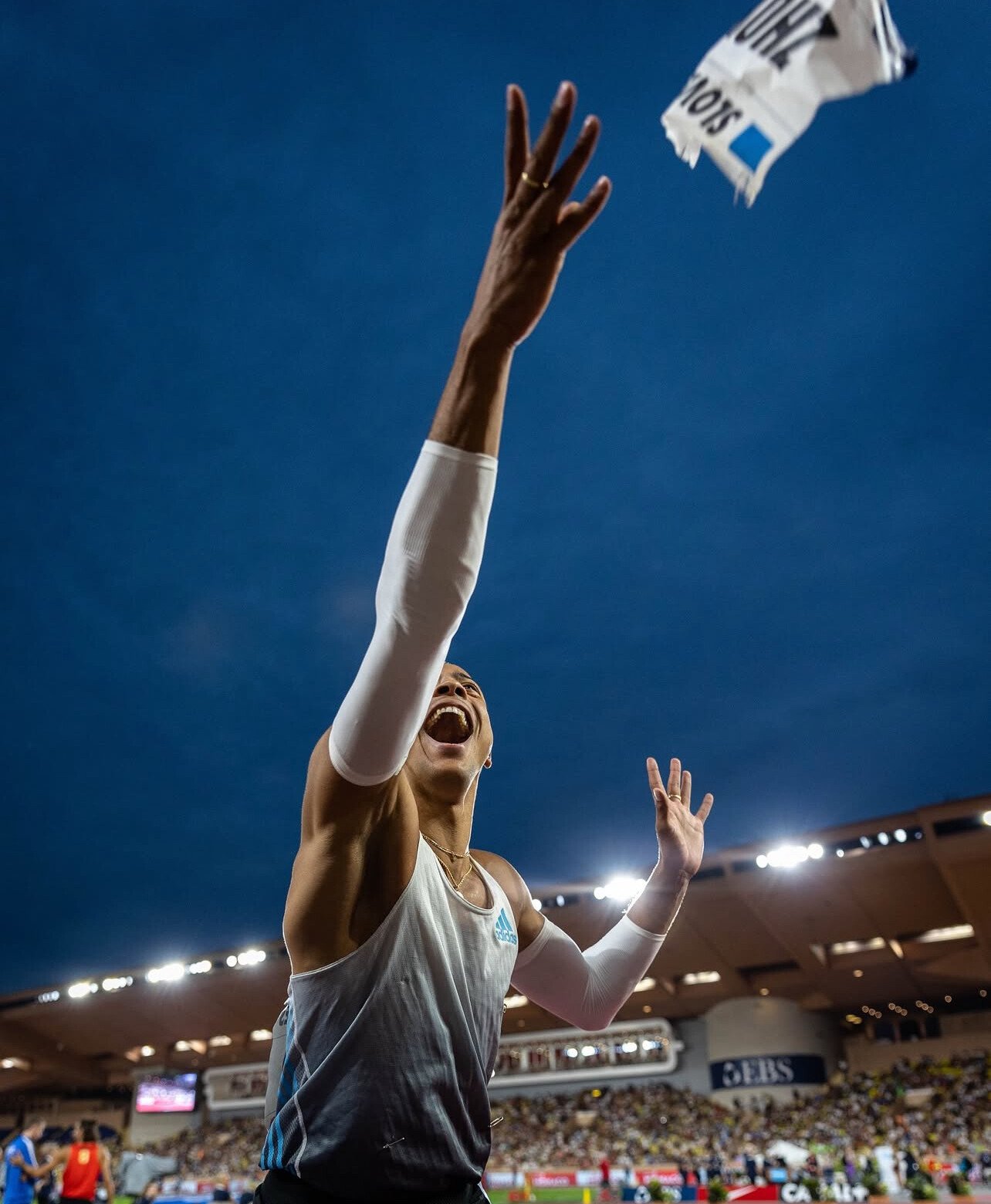
Arguably the most anticipated race of the day, the men’s 800m features seven of the eight Olympic finalists, and talk of David Rudisha’s legendary 1:40.91 world record is swirling. The pace will be red-hot, with athletes hungry to establish themselves ahead of the Paris Olympics.

Expect fireworks early. The pacing is likely to be aggressive, and with such a deep field, a sub-1:43 clocking may not even guarantee a podium spot. With a record on the line, this race is not to be missed.
Women’s 1000m – 2:43 p.m. ET

The rarely-run but always-exciting 1000m could see the 28-year-old world record of 2:28.98, set by Svetlana Masterkova in 1996, finally fall. Faith Kipyegon, the undisputed queen of middle distance, came close with a 2:29.21 earlier this year and owns the second-fastest time ever. She’s the clear favorite to take another crack at history.
Australia’s Jess Hull brings impressive credentials too, coming off a 3:52.67 1500m (the third-best of her career) and showing solid speed with a 1:58.58 800m PB. Also in the mix are:
• Mary Moraa, 800m world champion, with a 2:33.43 1000m PB,
• Nelly Jepchirchir (2:31.24 PB),
• Jemma Reekie (2:31.11 PB),
• Sinclaire Johnson and Addy Wiley, both looking to move up in distance.
With a blend of speed and endurance, this event has record-breaking potential.
Men’s 5000m – 3:05 p.m. ET
Seven men in today’s lineup have broken 12:50 this season, promising one of the fastest 5000m races of the year. Ethiopian sensation Biniam Mehari, just 18 years old, recently stunned with a 26:43.8210,000m win at the Pre Classic and a 12:45.93 at the Oslo Diamond League, where much of the spotlight went to Nico Young’s American record.
Sweden’s Andreas Almgren enters with momentum after clocking a 12:44.27 European record, currently the fastest time in the world this year.
The Ethiopian federation will be watching closely, as Yomif Kejelcha (12:47.84) and Hagos Gebrhiwetare also lining up—both seasoned athletes capable of upsets.
Final Word
Monaco has a storied history of delivering some of the fastest middle-distance times on the planet. With stars like Kipyegon, Mehari, and Almgren peaking at just the right time, the stage is set for records to be rewritten.
Stay tuned. If there’s ever a day to witness distance running greatness, this is it.
(07/09/2025) ⚡AMPby Boris Baron
Elizabeth Clor Defies the Heat—and Age—with a 20:39 5K Finish at 46
Running a fast 5K is a challenge at any age—but doing it at 46, in the heat, and placing 1st out of 81 runners in your age group? That’s exactly what Elizabeth Clor just accomplished with a blazing time of 20:39, averaging 6:30 per mile for 3.17 miles.
Wearing a patriotic stars-and-stripes racing kit and a wide smile of determination, Clor crossed the finish line with the kind of poise and grit that reflects years of disciplined training and unwavering mental strength.
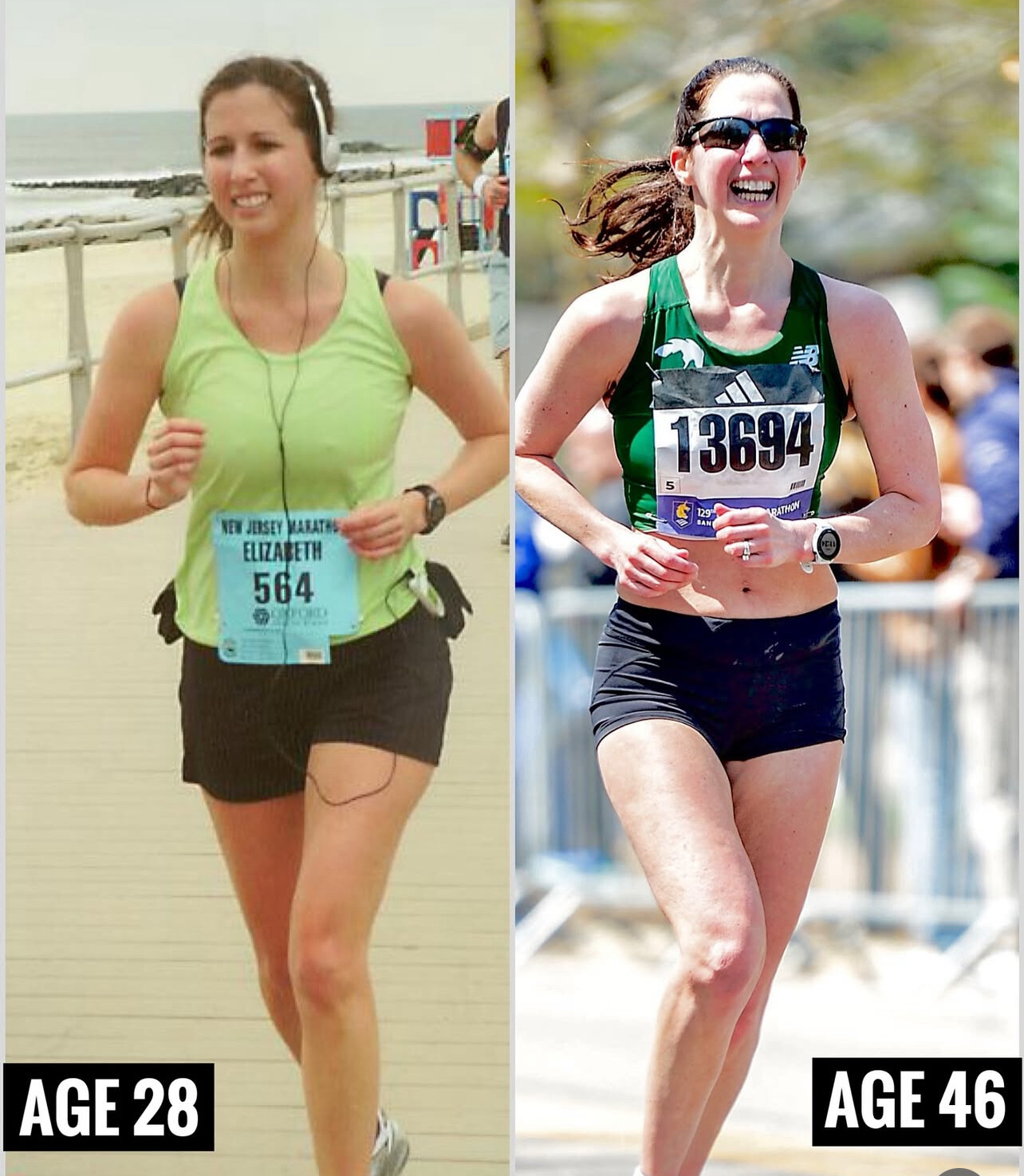
“I never expected to be running this kind of 5K pace at the age of 46,” she shared in a post-race update. “Especially in the heat. I’m feeling thankful that I’m healthy enough to do this!”
Elizabeth is no stranger to distance running. A longtime competitor and blogger, she’s built a reputation not just for speed, but for her candor about the highs and lows of the sport. Her performance here underscores the potential for longevity in running—reminding athletes everywhere that improvement doesn’t have to stop with age.
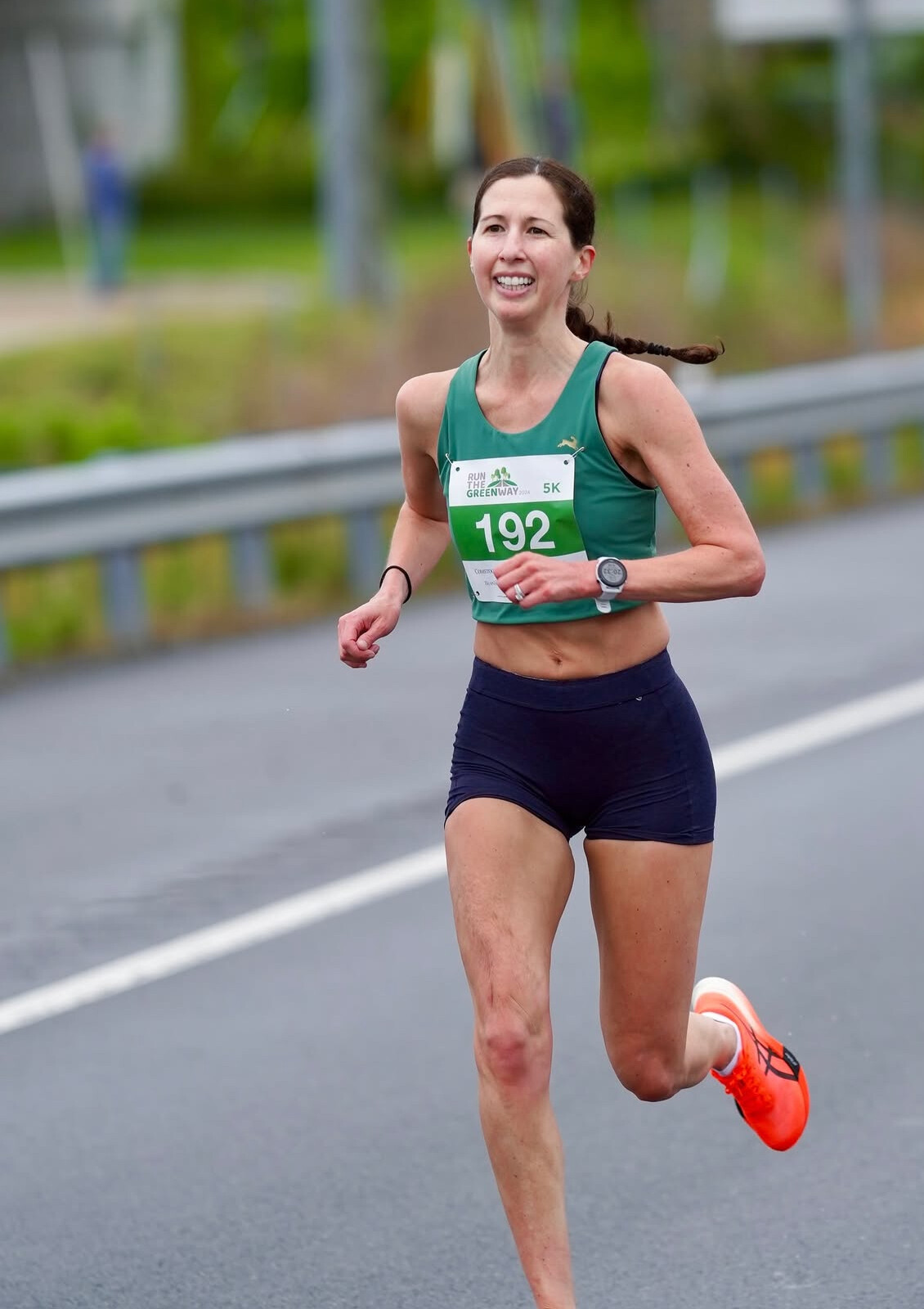
Age Is Just a Number
Her story is a powerful reminder that age-group runners are redefining what it means to compete. With a sub-21-minute 5K in challenging conditions, Elizabeth has placed herself among the top-performing women in her category nationwide.
Her pacing (6:30/mile) is particularly impressive given the heat—conditions that typically slow down even the fittest of elites.
Red, White, and Run
Donning ChicknLegs shorts and a custom U.S. kit, Clor also embodied the spirit of American amateur running—where pride, passion, and perseverance intersect at the starting line. Her visual energy was matched by her athletic performance, turning heads and inspiring followers across social media.
(07/08/2025) ⚡AMPby Boris Baron
South Africa's Prudence Sekgodiso Closes in on 800m World Lead
Prudence Sekgodiso of South Africa is charging toward the top of the global women’s 800m leaderboard with a sizzling time of 1:57.16, recorded in the 2025 season. As of July 4, this places her second on the current world list—trailing only Ethiopia’s Duguma, who leads with 1:56.64.
Sekgodiso’s breakthrough has sent waves through the athletics world, as seen in a recent viral post by SuperSport celebrating her ascent. The 800m is one of the most fiercely contested events in track and field, and Sekgodiso’s consistency and fearless racing style are positioning her as a serious medal contender ahead of the Paris World Championships and potentially the Olympics.
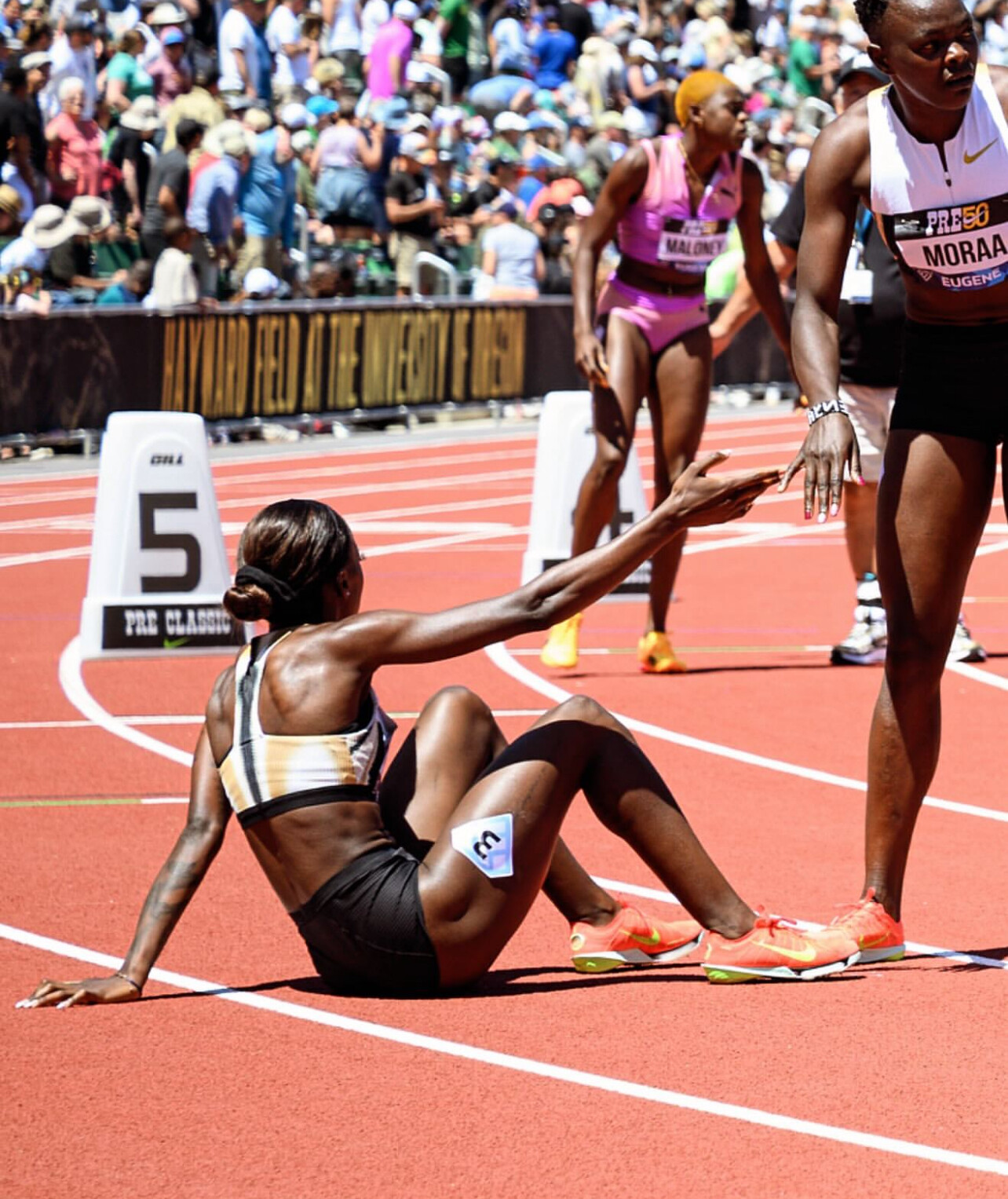
? Top 10 Women’s 800m Times in 2025 (as of July 4):
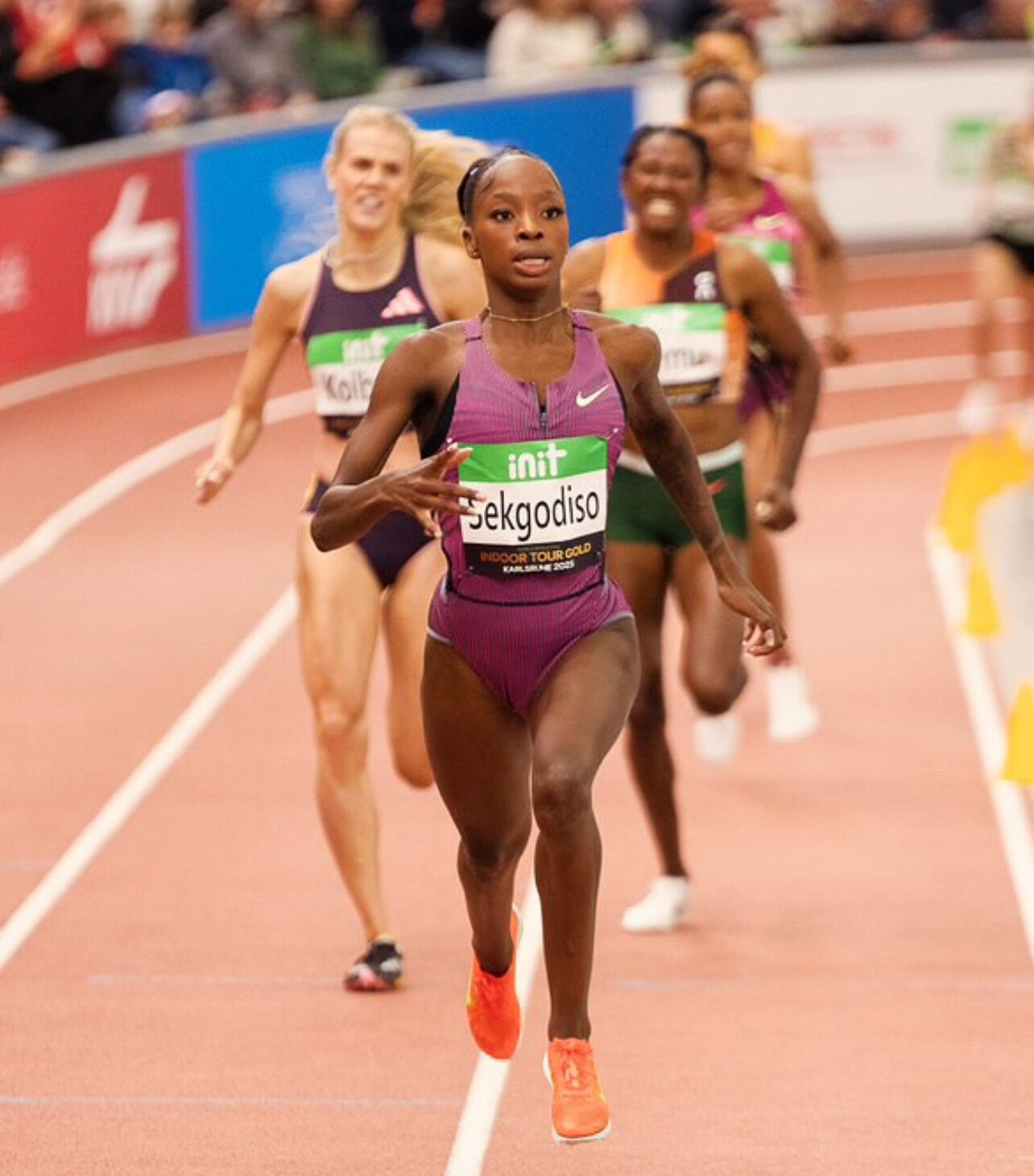
1. 1:56.64 – Duguma
2. 1:57.16 – Sekgodiso
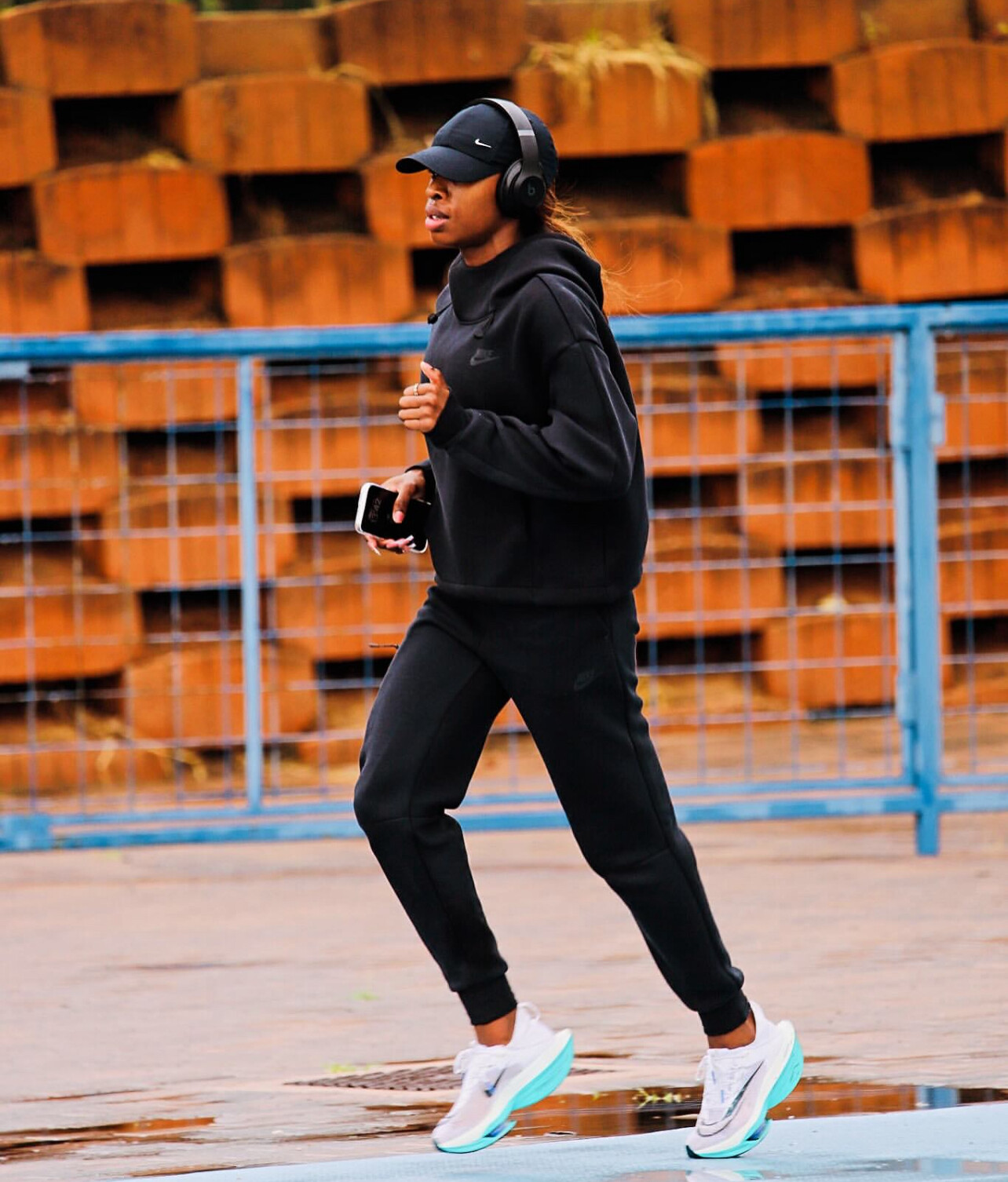
3. 1:57.25 – Werro
4. 1:57.49 – Nowe
5. 1:57.55 – Wiley
6. 1:57.66 – Bell
7. 1:57.81 – Bourgoin
8. 1:57.83 – Billings
9. 1:57.83 – Moraa
10. 1:58.00 – Maloney
How Sekgodiso Measures Up Historically:
The women’s 800m world record still stands at 1:53.28, set by Jarmila Kratochvílová of Czechoslovakia in 1983—a mark that has stood for over 40 years and is widely considered one of the most unbreakable in athletics. Only a handful of women have ever run under 1:55, including:
• Jarmila Kratochvílová (CZE) – 1:53.28 (1983)
• Nadezhda Olizarenko (URS) – 1:53.43 (1980)
• Pamela Jelimo (KEN) – 1:54.01 (2008)
• Caster Semenya (RSA) – 1:54.25 (2018)
Prudence Sekgodiso's 1:57.16 may not yet challenge these all-time performances, but it signals her potential to enter the elite sub-1:56 territory—especially with major races still ahead this season.
South Africa’s Next Middle-Distance Icon?
Following in the footsteps of Caster Semenya, Sekgodiso has reignited South Africa’s presence in the women’s 800m. At just 22 years old, she combines speed, endurance, and confidence, and her upward trajectory is undeniable.
As she continues her climb, all eyes will be on her next race. With every lap, Prudence Sekgodiso is narrowing the gap—not just between herself and the world leader, but also between today’s stars and history’s greats.
(07/08/2025) ⚡AMPby Boris Baron
Blind Runner, Clear Vision: Wilson Bii’s Nairobi Debut Fueled by Kenya Athletics Training Academy (KATA)
In a moving display of courage and transformation, Wilson Bii, a visually impaired Paralympian and Rio 2016 bronze medalist, made his road racing debut at the 2025 Nairobi City Marathon, taking on the half marathon along the scenic Nairobi Expressway.
For the 38-year-old Kenyan, long known for his prowess on the track, this was more than just a change in terrain — it marked a bold new chapter in a journey defined by resilience and reinvention.

“This was my first time competing in a road race,” Bii said. “I’ve spent years on the track, but this year I decided to train for longer distances. I wanted to challenge myself in a new way, and I found purpose on the road.”
But the road that brought him here was far from easy. Bii had good eyesight until 2002, when a tragic road accident changed his life forever. Shattered glass from the crash severely damaged his eyes, ultimately leading to complete vision loss. Though devastated, Bii refused to give in. Instead, he redirected his focus — and chose to run under the Paralympic banner.
“I never gave up,” he said. “Running became my way forward.”
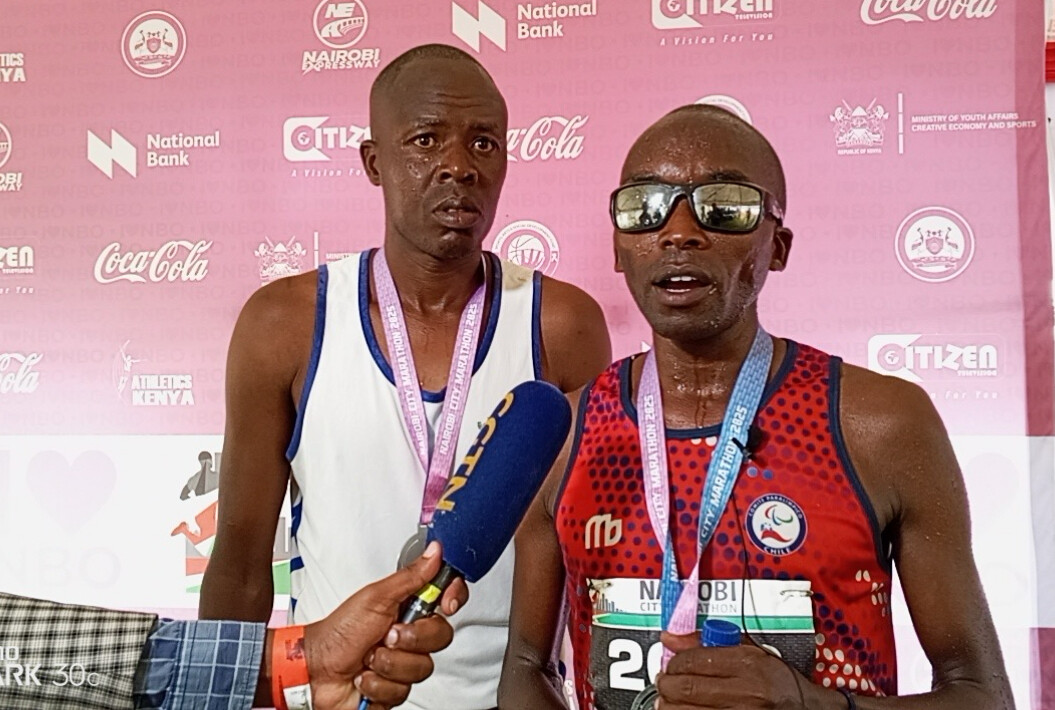
Today, Bii trains with the Kenya Athletics Training Academy (KATA), a grassroots initiative founded by Bob Anderson, the American running pioneer best known for launching Runner’s World magazine in 1966. Anderson, who helped ignite the global running boom through journalism and advocacy, now devotes his time to supporting emerging Kenyan talent.
At age 49, Anderson himself set a personal best in the half marathon (clocking 1:19:17) — an individual pursuit that reflects the very mindset he seeks to instill in others. Through KATA, he now oversees a network of 21 high-altitude training camps across Kenya, providing coaching, structure, and opportunity to athletes from underserved communities.
Bii trains at one of these camps in Sirikwa, Kuresoi North in Nakuru County — in the heart of the Rift Valley, where elevation, tradition, and grit continue to shape some of the world’s greatest endurance athletes.
Alongside his guide, Job Kiprono, Bii navigates training and racing with trust and precision.
“Kiprono has been my eyes for years. We move together, think together. We’re not just running for me — we’re running for both our families,” Bii shared.
He draws inspiration from the legacy of others. “When I saw how running changed Henry Wanyoike’s life, I knew I had to try. That’s why I came here today — to push myself and to inspire others who may feel forgotten.”
Bii now has his sights set on representing Kenya at the 2025 World Para Athletics Championships in India, after previously missing global events in Dubai and Morocco.
His guide, Kiprono, is appealing to Athletics Kenya and the National Paralympic Committee of Kenya to recognize the upcoming Belgut Road Race on July 24 as an official qualifier for para-athletes.
“If Belgut can be acknowledged, it will give athletes like Bii the opportunity we’ve waited for,” Kiprono said. “We want to earn our spot through performance, not politics.”
As Bob Anderson’s vision continues to take root across Kenya, athletes like Wilson Bii embody the mission: to empower through sport, to nurture overlooked potential, and to prove that running can restore far more than fitness — it can restore lives.
At the Nairobi City Marathon, Wilson Bii didn’t just finish a race — he reclaimed his momentum clocking 1:07:50 for the half marathon. From the wreckage of a 2002 accident to the fast-moving lanes of a 2025 half marathon, Bii now runs with a clarity of purpose. And behind him, a global legacy of running finds fertile ground in Kenya’s red soil — and in the courage of those who refuse to stop moving forward.
(07/08/2025) ⚡AMPby Robert Kibet
Niels Laros Stuns in Bowerman Mile, Edges Yared Nuguse by 0.01 Seconds
In one of the most electrifying finishes in recent mile history, 19-year-old Dutch phenom Niels Laros delivered a late-race surge to outkick American star Yared Nuguse, winning the Bowerman Mile at the Prefontaine Classic in an astonishing 3:45.94.
Nuguse, who looked in command entering the home stretch, clocked 3:45.95, just one-hundredth of a second behind the Dutch teenager. The dramatic showdown came down to the final 50 meters, where Laros unleashed a finishing kick that stunned fans and fellow competitors alike.

Third place went to Azzedine Habz of France, who crossed the line in 3:46.65.

This result marks a major statement from Laros, already hailed as the future of European middle-distance running. His performance in Eugene solidifies his status as a major contender on the global stage heading into the Paris Olympics.
The Prefontaine Classic continues to be a magnet for world-class mile showdowns, and this edition did not disappoint. For Laros, this victory will be remembered not only for the time, but for the thrilling fashion in which it was secured.
Top 3 Results – Bowerman Mile
• ? Niels Laros (NED) – 3:45.94
• ? Yared Nuguse (USA) – 3:45.95
• ? Azzedine Habz (FRA) – 3:46.65
(07/08/2025) ⚡AMPby Boris Baron
Tracksmith Launches “Stamata” — A New Women’s Marathon Team Aiming for the 2028 U.S. Olympic Trials
In a bold and inspiring move to uplift women’s distance running in the United States, Tracksmith has announced the formation of Tracksmith Stamata, a dedicated women’s marathon team. The initiative is led by elite marathoner and long-time advocate for female athletes, Stephanie Bruce, and is aimed squarely at helping women qualify for the 2028 U.S. Olympic Marathon Trials.
With a surge of momentum building in the U.S. women’s distance scene, the timing couldn’t be more ideal.
Supporting Women on the Olympic Path
The team’s mission is clear: identify and support talented women with the potential to reach the Olympic Trials, and ultimately, the Olympic Games. Named “Stamata” — Greek for “to stop,” perhaps symbolizing the end of outdated barriers and the start of something powerful — the team brings a structured, fully backed approach to marathon preparation.
Tracksmith will provide:
• Training camps
• Targeted marathon attempts
• Financial stipends
• Performance gear
• Access to sports professionals, including coaches, nutritionists, and medical experts
This comprehensive support structure is designed to level the playing field, especially for emerging or overlooked athletes who may not yet have major sponsorship deals.
California International Marathon to Host Team Debut
The California International Marathon (CIM) — long known for its fast course and Trials-qualifying potential — will be the official debut race for Tracksmith Stamata. The selection of CIM reflects the team’s pragmatic focus on real results and meaningful opportunities. In recent years, CIM has been a launchpad for many Olympic Trials qualifiers, and it’s the perfect stage for Stamata’s debut.
Stephanie Bruce at the Helm
Stephanie Bruce, who recently concluded her own professional racing career, brings not only elite experience but also deep empathy and advocacy for working mothers, aging athletes, and under-supported competitors. Her leadership signals that Stamata isn’t just a racing team — it’s a movement.
“This isn’t just about fast times. It’s about building an environment where women can thrive, be seen, and be supported in their pursuit of excellence,” Bruce said in a recent interview.
Let’s make it happen
The women’s marathon scene in the U.S. is more competitive than ever. As the road to Los Angeles 2028 heats up, initiatives like Tracksmith Stamata play a critical role in widening the access point and reinforcing the pipeline of elite female marathoners.
Whether you’re chasing a Trials standard or cheering from the sidelines, there’s no doubt: Stamata is a name to remember on the road to 2028.
(07/07/2025) ⚡AMPby Boris Baron
Big Performances at the Nairobi City Marathon — Wilson Bii and Zakariah Shine for KATA
Nairobi, Kenya — July 6, 2025
The streets of Kenya’s capital came alive this morning with the running of the Nairobi City Marathon, Half Marathon, and Expressway 10K. With elite competition, a scenic city course, and massive public support, the event once again showcased the depth of talent in the world’s running capital.
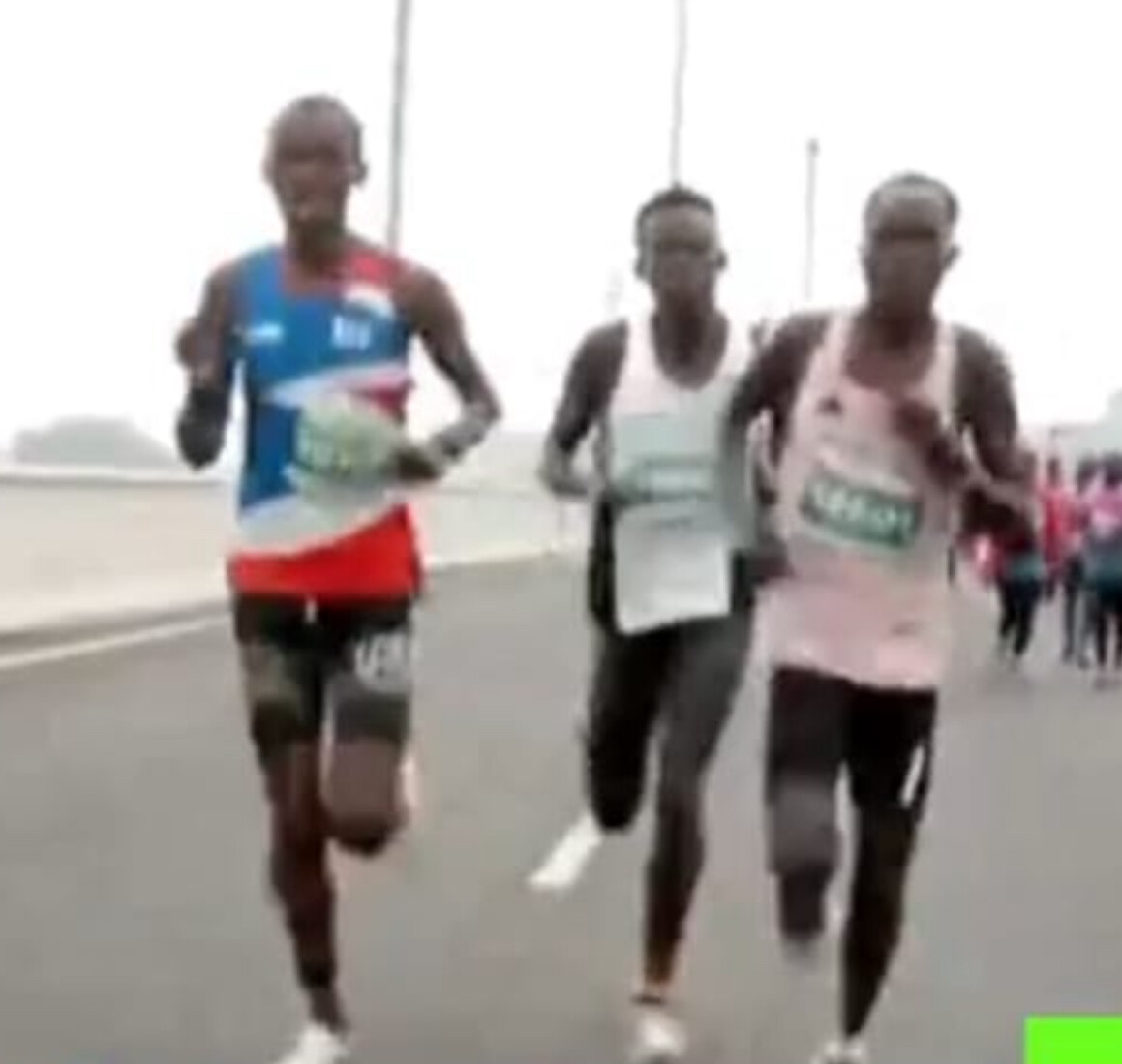
Among the standout performances were two remarkable athletes of from KATA Running Camps, continuing to make their mark on Kenya’s competitive distance running scene.
Wilson Bii Dominates Para Half Marathon
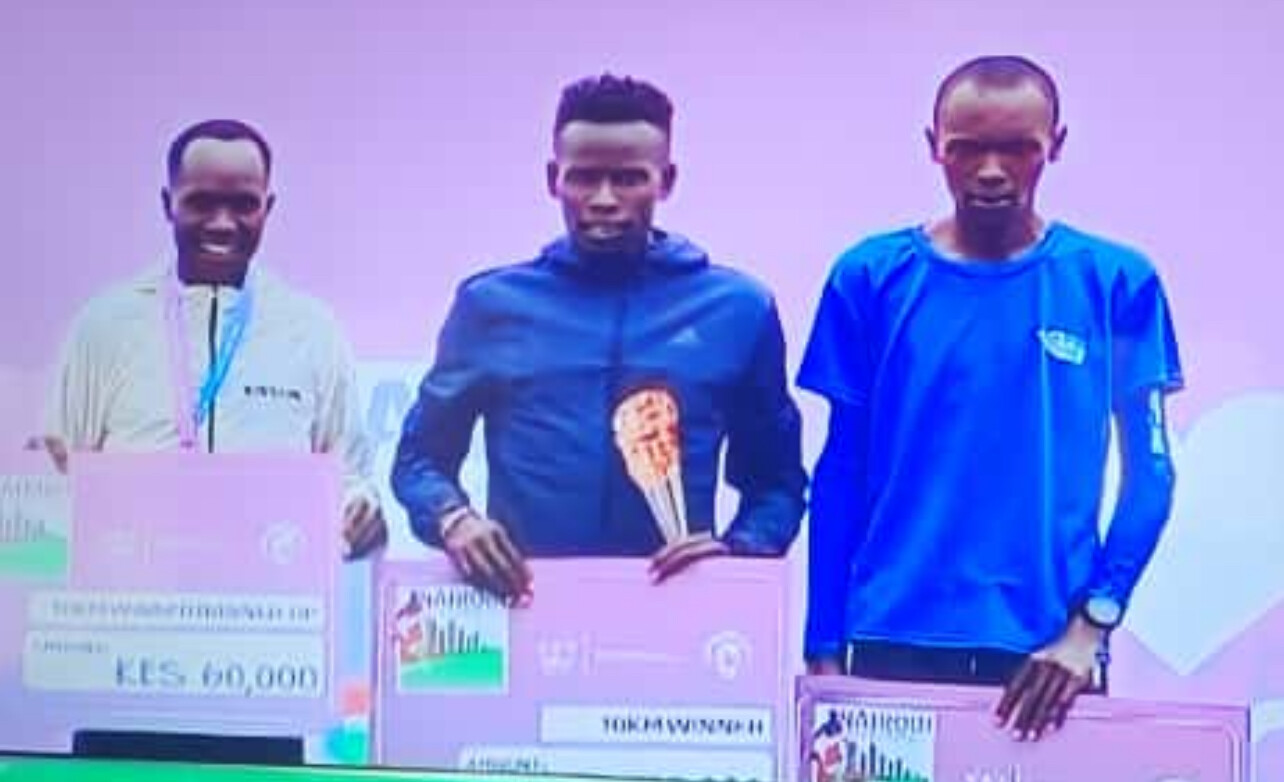
Wilson Bii (4th photo), a visually impaired runner training at a KATA Running Camp, delivered a stunning performance in the Para Half Marathon division, winning in a time of 1:07:50. Known for his resilience and smooth stride, Bii proved once again that no obstacle can hold back a champion spirit.
“We are so proud of Wilson,” said Bob Anderson, Founder of the KATA (Kenyan Athletics Training Academy) initiative. “His dedication, grit, and belief inspire all of us.”
Bii, who has represented Kenya at multiple international events, continues to sharpen his fitness under KATA’s structured training model, which combines elite coaching with holistic athlete support.
Zakariah Breaks Through in the 10K
In the Expressway 10K, Zakariah (first photo) one of KATA Thika’s earliest and most consistent athletes, put together the race of his life. He clocked a personal best of 27:00 flat, finishing third overall in a stacked elite field.
This marks a major breakthrough for the rising star, whose consistency in training over the past year is now paying off in a big way.
“Zakariah has been with us since the very beginning,” Anderson added. “He works hard every day and keeps improving. Today was a huge moment for him and for the entire KATA movement. When he first came to KATA he way running a 10k in 34 minutes. His 27 minutes today at altitude says he is ready to run faster at sea level. He was only two seconds behind the winner."
Nairobi Marathon Elevates All Levels
While elite runners headlined each race, the Nairobi City Marathon continues to grow as a celebration of endurance and unity. From full marathoners tackling 42.195 kilometers through the city to recreational 10K runners testing their limits on the Expressway, thousands took part in what is becoming one of East Africa’s most important road racing events.
KATA: A New Chapter in Kenyan Running
With more than a dozen training camps and potato farms across Kenya — and a flagship retreat in Portugal — the KATA movement is changing the narrative. It’s not just about producing fast times, but building complete athletes, nurturing character, and providing real economic sustainability.
Today’s results in Nairobi prove that the vision is working.
(07/06/2025) ⚡AMPby Boris Baron
The Untouchable Record: Jarmila Kratochvílová’s 800m Mark Still Stands 42 Years Later — But Should It?
In the fast-evolving world of athletics, records are made to be broken — except, it seems, for one. On July 26, 1983, in Munich, Czechoslovakia’s Jarmila Kratochvílová ran an astonishing 1:53.28 in the women’s 800 meters. Four decades later, that time remains the oldest unbroken individual world record in track and field history.
It has withstood super spikes, altitude training, hyper-focused coaching, and the world’s most gifted middle-distance runners. Olympic champions like Caster Semenya and Athing Mu have come close, but none have truly threatened it. Which begs the question — how did a performance like this come to be? And should it still be recognized?
A Record Born in a Different Era
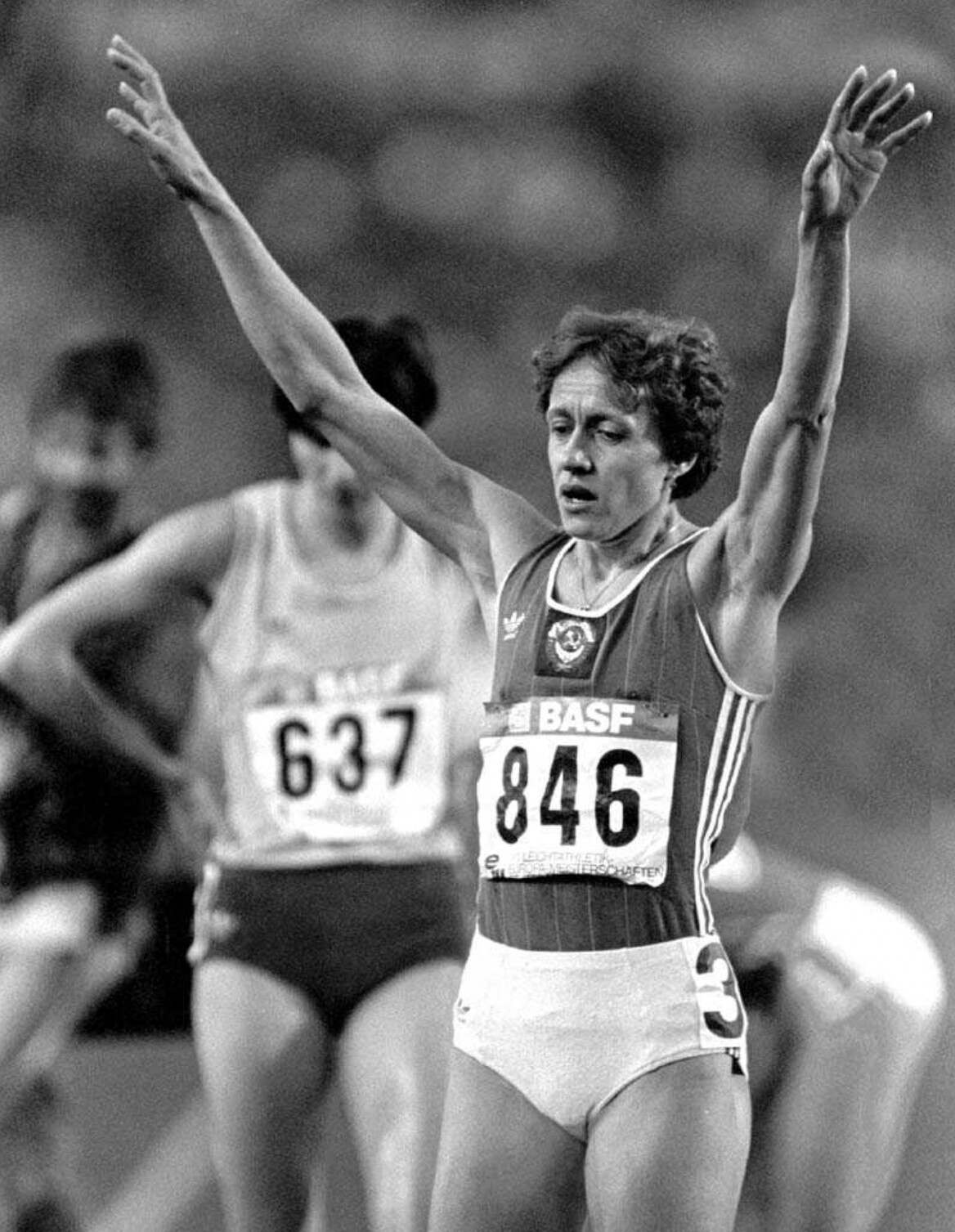
Kratochvílová’s performance came at a time when Eastern Bloc nations, including Czechoslovakia, were deep into state-sponsored sports programs. In that era, the line between elite preparation and banned enhancement was often blurred. Many athletes from that period, particularly from East Germany and the Soviet Union, have since admitted or been linked to systemic doping programs.
While there has been no formal proof that Kratochvílová used banned substances, the context raises suspicions. Her physical appearance — muscular, powerful, and more commonly compared to male counterparts than to female contemporaries — only added to the speculation. Combined with her unprecedented strength over both 400m and 800m distances, critics argue that the performance is not only unmatched, but possibly unnatural.
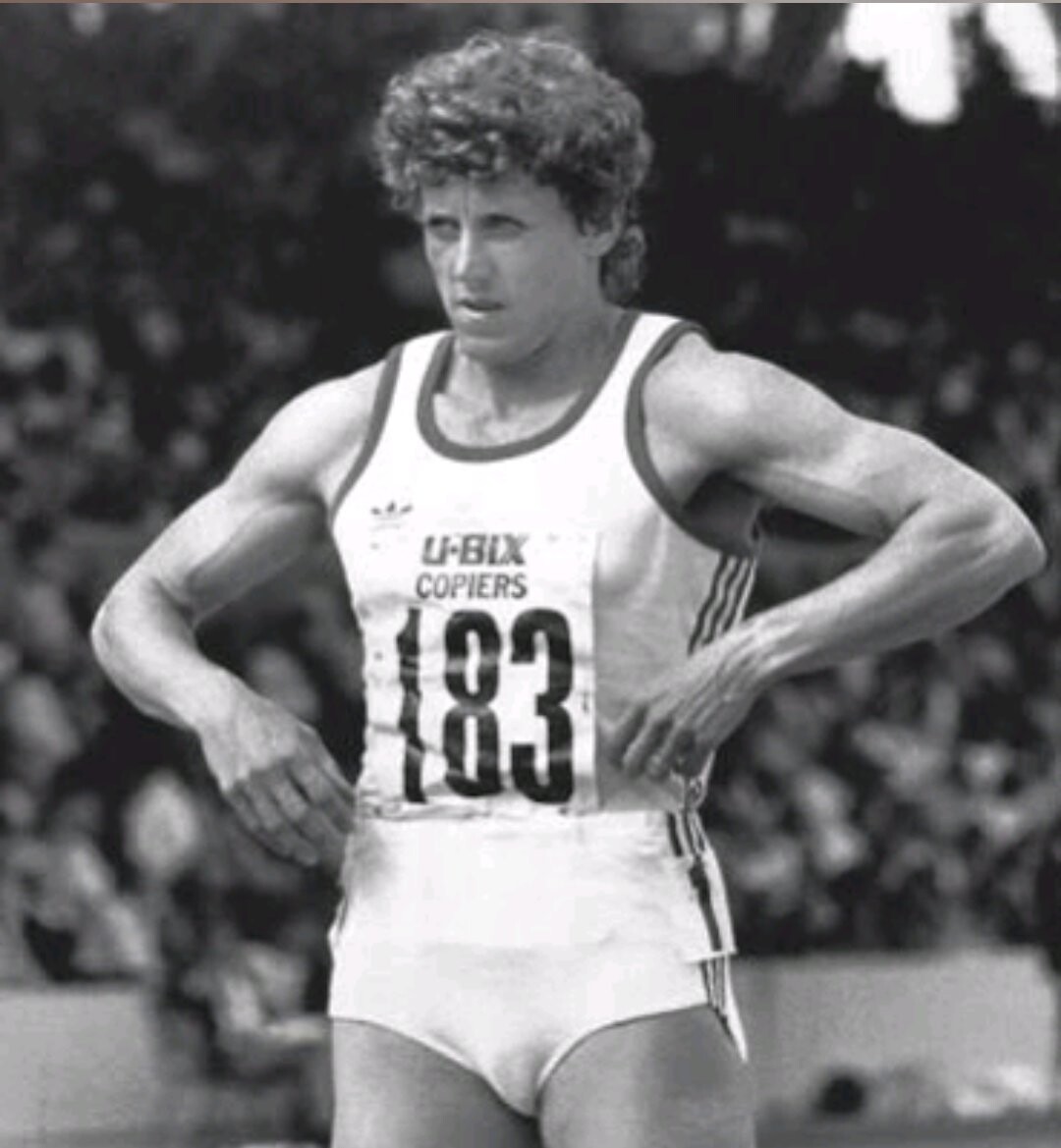
Why the Doubts Persist
• Performance Gap: Her time is still more than a second faster than most modern Olympic champions — a massive difference at the elite level.

• Era of Doping: Kratochvílová competed during a time when drug testing was primitive and records were often set under questionable conditions.
• Physique & Speculation: Her highly muscular build and deep voice led some to question if she should have been eligible to compete in the women’s category — though gender testing at the time did not flag her.
• Lack of Longevity: After 1983, Kratochvílová’s presence at major championships waned. Some suggest this could point to the unsustainable nature of her peak performance.
Arguments for Letting It Stand
Supporters of the record, including Kratochvílová herself, insist that the performance was clean and the result of hard work and unconventional training. She famously avoided standard intervals and instead focused on long sessions in heavy shoes and rugged conditions. No positive test exists, and the record has survived decades of scrutiny by World Athletics.
Moreover, some point out that breaking a record doesn’t validate its legitimacy — it simply reflects the evolution of training, equipment, and talent pools. If no one has broken it yet, perhaps it’s just one of those rare, generational performances that transcends time.
Should It Be Removed?
There have been proposals — including from World Athletics — to reset all pre-2005 records due to the lack of out-of-competition drug testing during earlier decades. The suggestion faced pushback, especially from record holders who never failed a test.
But the debate continues. Some believe Kratochvílová’s 1:53.28 represents a performance that belongs to a different set of rules — and therefore shouldn’t be part of the same record book as today’s achievements. Others see it as an enduring symbol of what the human body (with or without help) once accomplished.
Final Thought
Whether you view Jarmila Kratochvílová’s 800m world record as a miraculous outlier or a relic of a flawed system, one thing is certain: it has become the ultimate benchmark. Until someone runs faster — cleanly and unquestionably — the debate will rage on. And with every passing year, this 1983 run becomes less of a record and more of a legend.
(07/06/2025) ⚡AMPby Boris Baron
Faith Kipyegon Sets New 1500m World Record with 3:48.68 at 2025 Prefontaine Classic
Faith Kipyegon continues to redefine greatness in women’s middle-distance running. On July 5, 2025, at the Prefontaine Classic in Eugene, Oregon, the Kenyan superstar set a new world record in the 1500m, clocking 3:48.68 and breaking her own previous mark of 3:49.04 set just a year earlier.
The Hayward Field crowd witnessed another chapter in what is becoming one of the most dominant careers the sport has ever seen.
Sharpened Focus, Sharper Speed
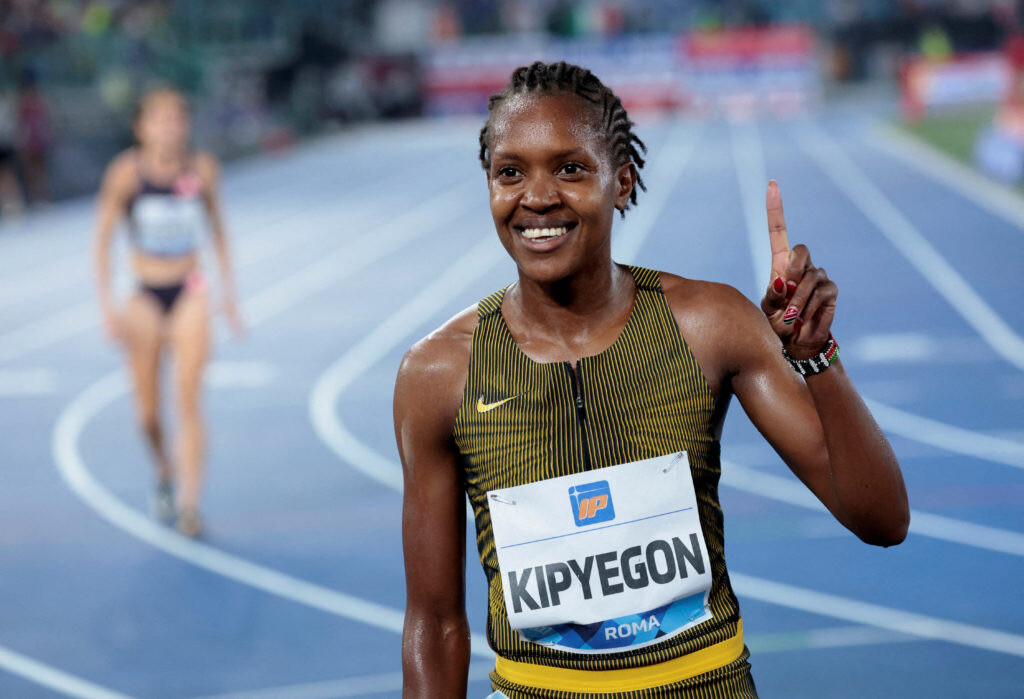
Kipyegon, already a two-time Olympic champion and multiple-time world champion, executed a flawless race. After a steady opening 800m behind the pacemaker, she began to pick up the tempo in lap three before unleashing her signature kick over the final 300 meters.
Her time of 3:48.68 now stands as the fastest women’s 1500m ever recorded — shaving more than three-tenths of a second off her previous world record from 2024.
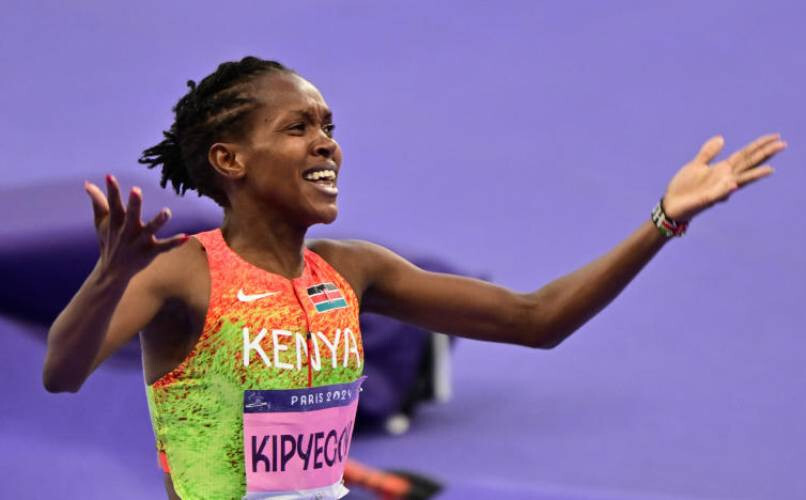
“I knew I was in shape to do something special,” said Kipyegon after the race. “Breaking the world record again, right here in front of this crowd, is a dream come true.”
One of the Greatest Careers in Track History

With this latest record, Kipyegon has now broken three world records in just over a year — the 1500m, mile, and 5000m — showcasing a range and consistency few have ever matched.
Her ability to dominate both the 1500m and 5000m places her in a category all her own. And after winning double gold in both events at the 2024 Paris Olympics, her legend continues to grow.
What’s coming up for Faith
With the 2026 World Championships in Tokyo looming, Kipyegon’s momentum couldn’t be stronger. She’s not just chasing titles — she’s rewriting the sport’s history.
As the only woman in history to run both sub-3:49 in the 1500m and sub-14 in the 5000m, Faith Kipyegon isn’t just winning races — she’s reshaping the limits of human performance.
(07/05/2025) ⚡AMPby Boris Baron
Prefontaine Classic
The Pre Classic, part of the Diamond League series of international meets featuring Olympic-level athletes, is scheduled to be held at the new Hayward Field in Eugene. The Prefontaine Classicis the longest-running outdoor invitational track & field meet in America and is part of the elite Wanda Diamond League of meets held worldwide annually. The Pre Classic’s results score has...
more...Beatrice Chebet Smashes Women’s 5000m World Record with Historic 13:58.06 at Prefontaine Classic
On a cool Saturday evening in Eugene, Oregon, Beatrice Chebet of Kenya made history — becoming the first woman ever to break the 14-minute barrier in the 5000m.
Chebet stormed to victory at the Prefontaine Classic on July 5, 2025, clocking an astonishing 13:58.06, obliterating the previous world record of 14:00.21 set by Ethiopia’s Letesenbet Gidey in 2020.
It was a performance that stunned the crowd at Hayward Field and sent shockwaves through the global athletics community.
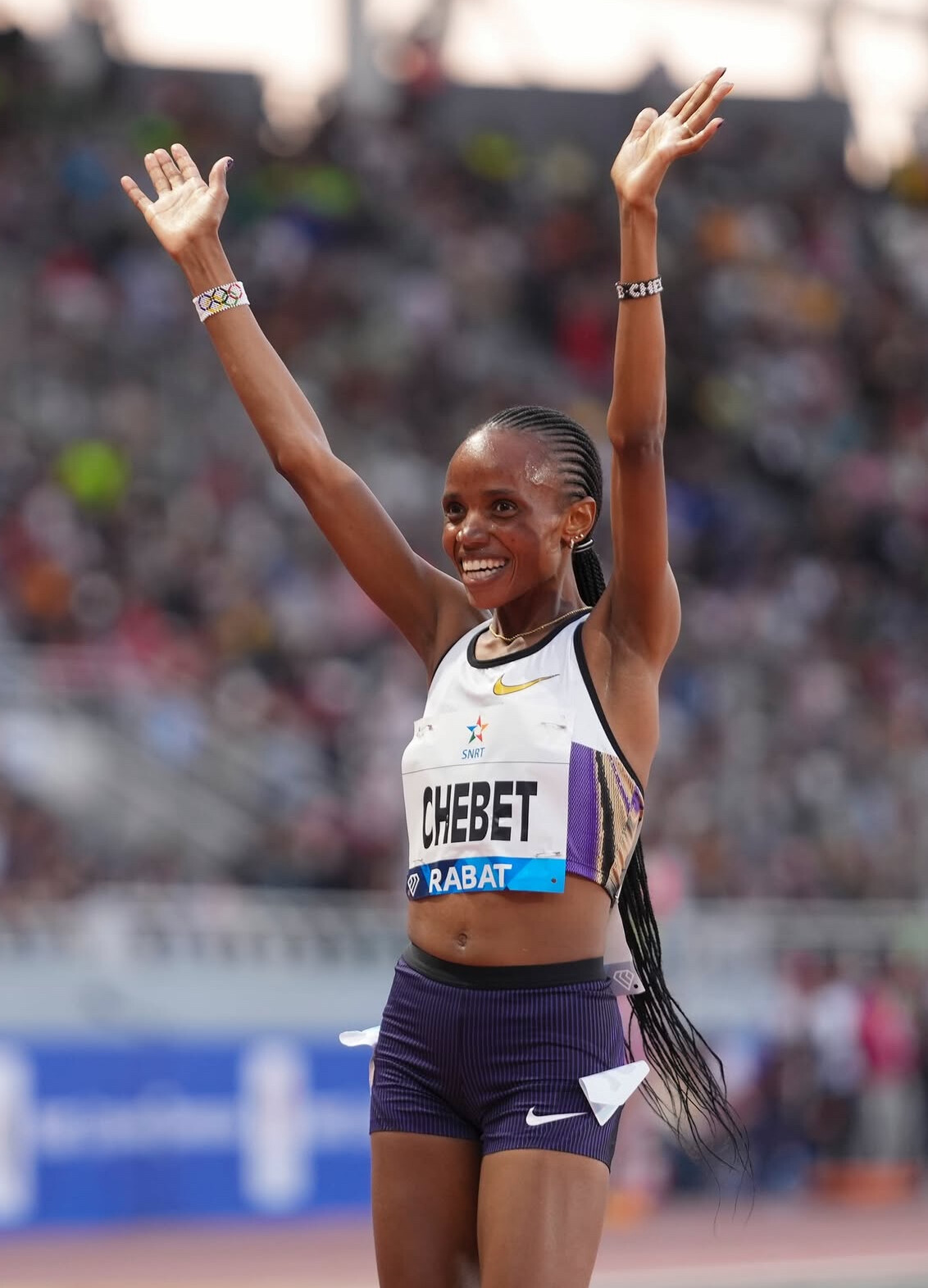
Making History in Style
From the gun, the race was electric. Pushed by strong pacing and an elite field, Chebet stayed composed and patient, moving smoothly through the early kilometers. But as the laps ticked down, she surged to the front with her trademark closing speed and never looked back.
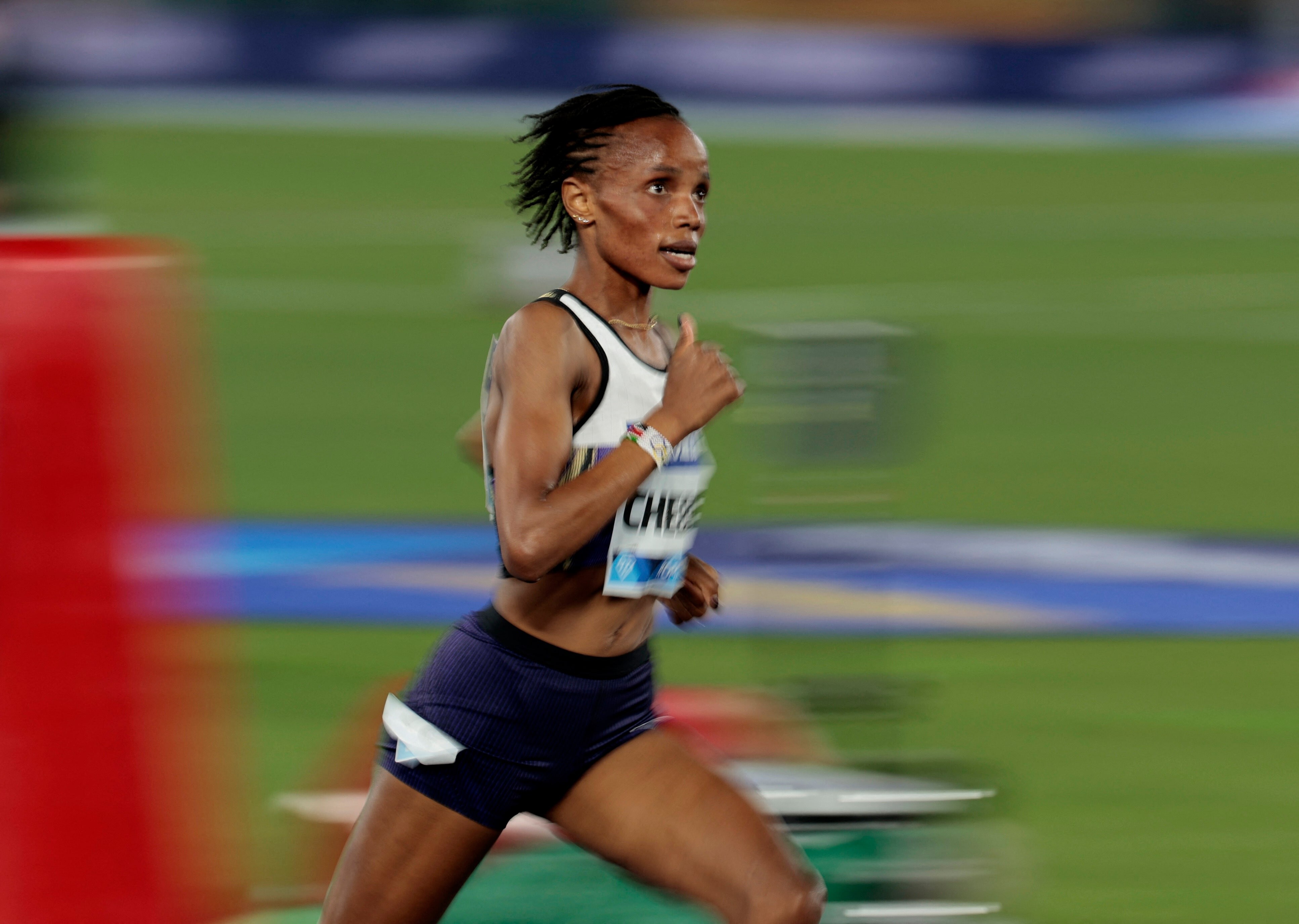
Her final time of 13:58.06 etched her name in the record books and established her as the new queen of the distance — a feat no woman in history had previously achieved.
“I knew the record was possible,” Chebet said after the race. “I trusted my training and my strength. This was for Kenya, for women, and for everyone who believes in breaking limits.”
A Star Ascending
At just 25, Beatrice Chebet has already had a career packed with accolades — World Cross Country champion, Diamond League winner, and now the fastest woman ever over 5000m.
With her Paris Olympic medal from last year and a World Championships season on the horizon, Chebet has shown that she is in the form of her life. Her historic run comes at a time when Kenyan distance running is enjoying a renaissance — especially among the women.
What’s Next for Beatrice
Chebet’s performance doesn’t just reset the record books — it redefines what’s possible in women’s distance running. The sub-14 club now exists, and she’s the founding member.
With competition heating up and eyes on the 2026 World Championships, Chebet has firmly taken the lead in the next chapter of women’s long-distance history.
(07/05/2025) ⚡AMPby Boris Baron
Prefontaine Classic
The Pre Classic, part of the Diamond League series of international meets featuring Olympic-level athletes, is scheduled to be held at the new Hayward Field in Eugene. The Prefontaine Classicis the longest-running outdoor invitational track & field meet in America and is part of the elite Wanda Diamond League of meets held worldwide annually. The Pre Classic’s results score has...
more...Grand Slam Track Series Faces Scrutiny Over Delayed Athlete Payments
The inaugural Grand Slam Track (GST) series launched with high hopes and bold promises—top-tier venues, world-class athletes, and massive prize money. But just months after its first leg in Kingston, Jamaica, the glitter is beginning to tarnish as frustration mounts over unpaid prize money and appearance fees.
From Olympic gold medallists to world record holders, dozens of elite athletes are still waiting to be compensated for their performances. Middle-distance star Emmanuel Wanyonyi is owed $100,000 (approximately Ksh12.9 million) after topping the men’s short-distance leaderboard. American sprint sensation Gabby Thomas and 400m hurdles world record holder Sydney McLaughlin-Levrone are among others reportedly awaiting their payouts.
The issue extends beyond prize money. Appearance fees—typically paid prior to or shortly after competition—have also not been delivered. In contrast, athletes competing on the Diamond League circuit often receive payments within two to three weeks. The GST delay now stretches months, leaving agents, athletes, and federations scrambling for answers.
Organizers claim the delay is due to “economic challenges,” the same reason cited by GST founder Michael Johnson when he abruptly canceled the final series meet scheduled for Los Angeles. That announcement, made during an emergency Zoom call with athletes, raised immediate red flags about the financial health of the operation.
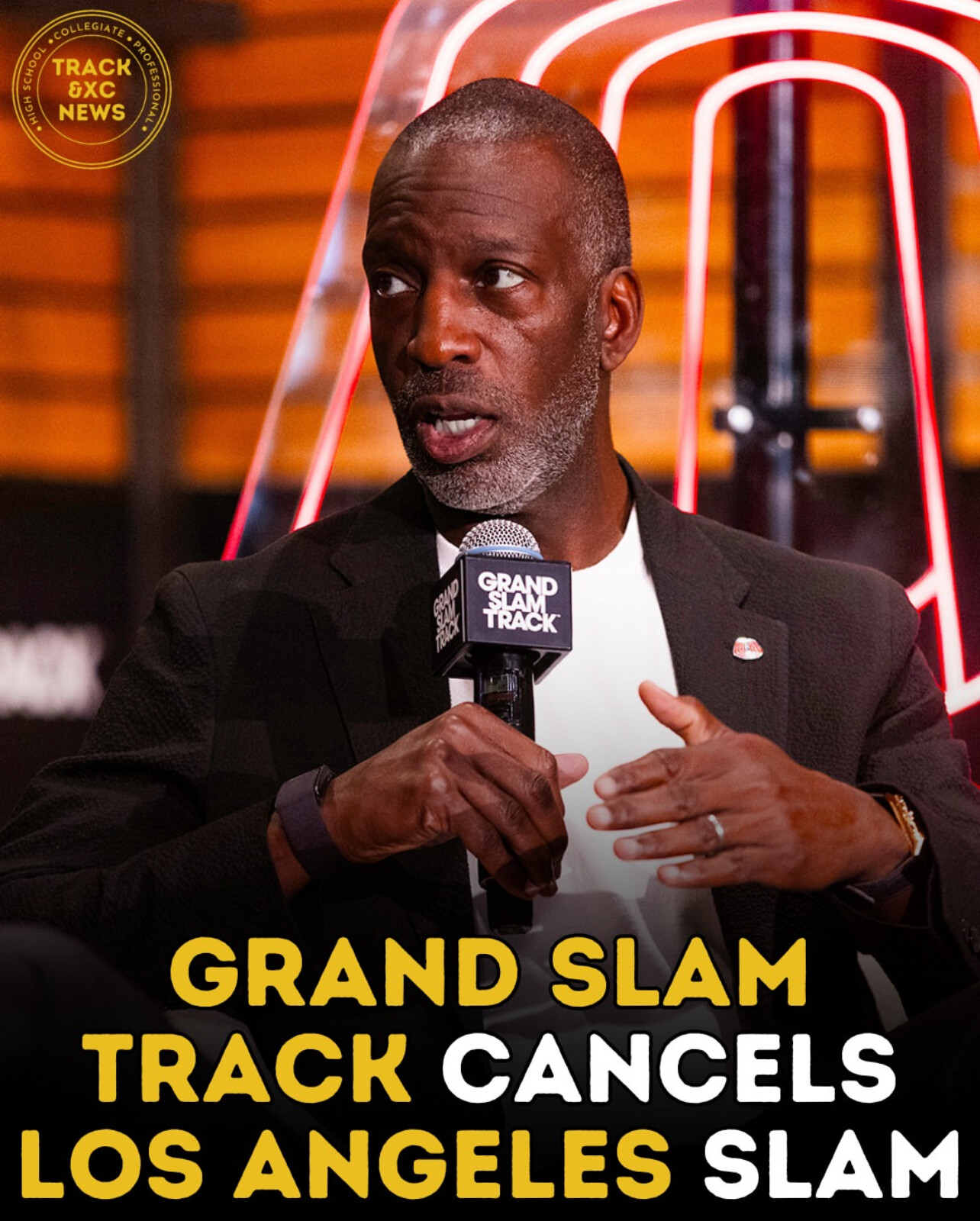
GST executive Kyle Merber recently attempted to ease concerns by emailing athlete representatives with a tentative payment plan. According to the message, prize money from Kingston will be paid by the end of July, with all other outstanding payments—including those for the canceled Los Angeles leg—expected by the end of September.
But skepticism remains. “It is still a bit vague,” one top agent told The Times. “If they have the money, why can’t they pay it now? For some of these athletes, we are talking hundreds of thousands of dollars.”
Reports of internal staff layoffs at GST have only added to the uncertainty.
Athlete managers and associations are now getting involved, demanding transparency and accountability. The Association of Athletics Managers recently held a meeting with Johnson to seek clarification, but sources say no firm dates or guarantees were given.
As the dust settles from what was supposed to be a revolutionary series for the sport, key questions remain unanswered:
• How much money was actually collected by GST?
• Have any athletes received their payments in full?
• What safeguards will be put in place to protect athletes moving forward?
"Big promises but I don't think GST set out to scam anyone," says Bob Anderson, " but those of us that have been around athletics for decades know that track and field is a hard sell. I hope the athletes involved will be paid but they should not count on it."
With millions promised and reputations on the line, the success—or collapse—of GST could set a precedent for future independent track series. For now, the running world waits.
(07/05/2025) ⚡AMPby Boris Baron
Fireworks on the Roads: Kiprop and Obiri Win 2025 AJC Peachtree 10K
ATLANTA, Georgia – July 4, 2025
The world’s largest 10K race, the AJC Peachtree Road Race, once again delivered thrilling fireworks on the Fourth of July. With tens of thousands of runners crowding Atlanta’s iconic Peachtree Street and elite athletes going head-to-head for glory, the 55th edition of the race lived up to the hype—and then some.

Men’s Race: Kiprop Leads Kenyan Sweep
In a battle that came down to seconds, Patrick Kiprop of Kenya surged ahead to claim the men’s title in 27:35, holding off a tightly packed group of countrymen. Just four seconds separated the top four finishers.
Top 5 Men’s Results
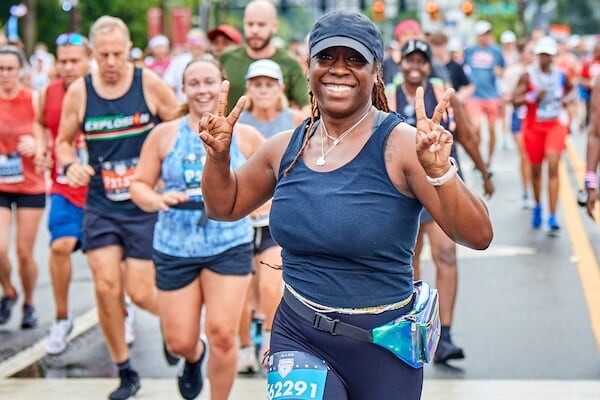
1. Patrick Kiprop (KEN) – 27:35
2. Vincent Langat (KEN) – 27:39
3. Patrick Mosin (KEN) – 27:39
4. Hillary Kipkoech (KEN) – 27:39
5. Isaia Lasoi (KEN) – 27:43
The men’s race was electric from the start, with the lead pack pushing the pace through the rolling hills of Atlanta. Kiprop’s victory continues Kenya’s dominance on the global road racing circuit and solidifies him as one to watch this season.
Women’s Race: Obiri Adds Peachtree to Her Legacy
Olympian and World Champion Hellen Obiri added another major victory to her résumé, winning the women’s elite race in 31:29. She held off a strong Ethiopian challenge led by Senayet Getachew, who finished just one second behind.
Top 5 Women’s Results
1. Hellen Obiri (KEN) – 31:29
2. Senayet Getachew (ETH) – 31:30
3. Gela Hambese Degefa (ETH) – 31:38
4. Gladys Chepkurui (KEN) – 31:48
5. Melknat Wudu (ETH) – 32:12
Obiri’s win confirms her versatility and consistency across track, cross country, and road racing. Her ability to outkick some of the world’s fastest women under warm and humid conditions impressed fans and commentators alike.
More Than a Race – A Celebration of Running
From the elite fields to everyday runners, the Peachtree 10K continues to inspire. With over 60,000 participants and countless spectators lining the 6.2-mile route, it remains the heart and soul of American road racing on Independence Day.
The event also upheld its famous tradition of rewarding the top 1,000 finishers with the coveted Peachtree finisher’s mug—a collector’s item for many. Organizers made smart adjustments to combat the early July heat, including starting the race 10 minutes earlier than usual.
A Dream Race for Many
My Best Runs founder Bob Anderson reflected, “Today's race reminds me why Peachtree is one of the most iconic 10Ks in the world. I’m starting to feel the desire to race it myself one day. Congratulations to all. Happy Fourth!”
Peachtree by the Numbers
• Founded: 1970
• Distance: 10K (6.2 miles)
• Location: Peachtree Street, Atlanta, Georgia
• Participants: ~60,000 runners annually
• Organized by: Atlanta Track Club
From world-class racing to heartfelt celebrations, the 2025 AJC Peachtree 10K showed once again why it’s a must-run event for runners across the globe.
(07/04/2025) ⚡AMPby Boris Baron
AJC Peachtree Road Race
The AJC Peachtree Road Race, organized by the Atlanta Track Club, is the largest 10K in the world. In its 48th running, the AJC Peachtree Road Race has become a Fourth of July tradition for thousands of people throughout the metro Atlanta area and beyond. Come kick off your Fourth of July festivities with us! If you did not get...
more...From Dirt Roads to Global Dreams: Inside Kenya’s Fastest-Growing Running Movement
In the heart of Kenya’s Rift Valley and beyond, a quiet revolution in athletics is underway. What began as a modest idea has grown into a dynamic movement that now spans 19 KATA Running Camps and Potato Farms across Kenya—plus two international retreats, including one at the historic Anderson Manor in Monforte da Beira, Portugal.
And it’s happening fast.
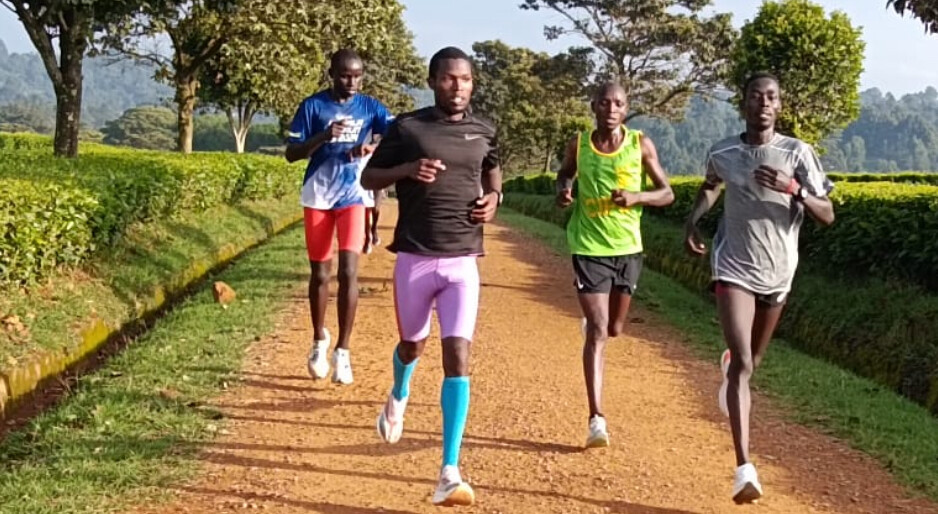
“We never planned to expand this quickly,” says Bob Anderson, founder of KATA and a lifelong advocate for long-distance running. “But the momentum of this movement just couldn’t be slowed down. We’ll be confirming one more camp shortly, and additional locations will follow in early 2026.”
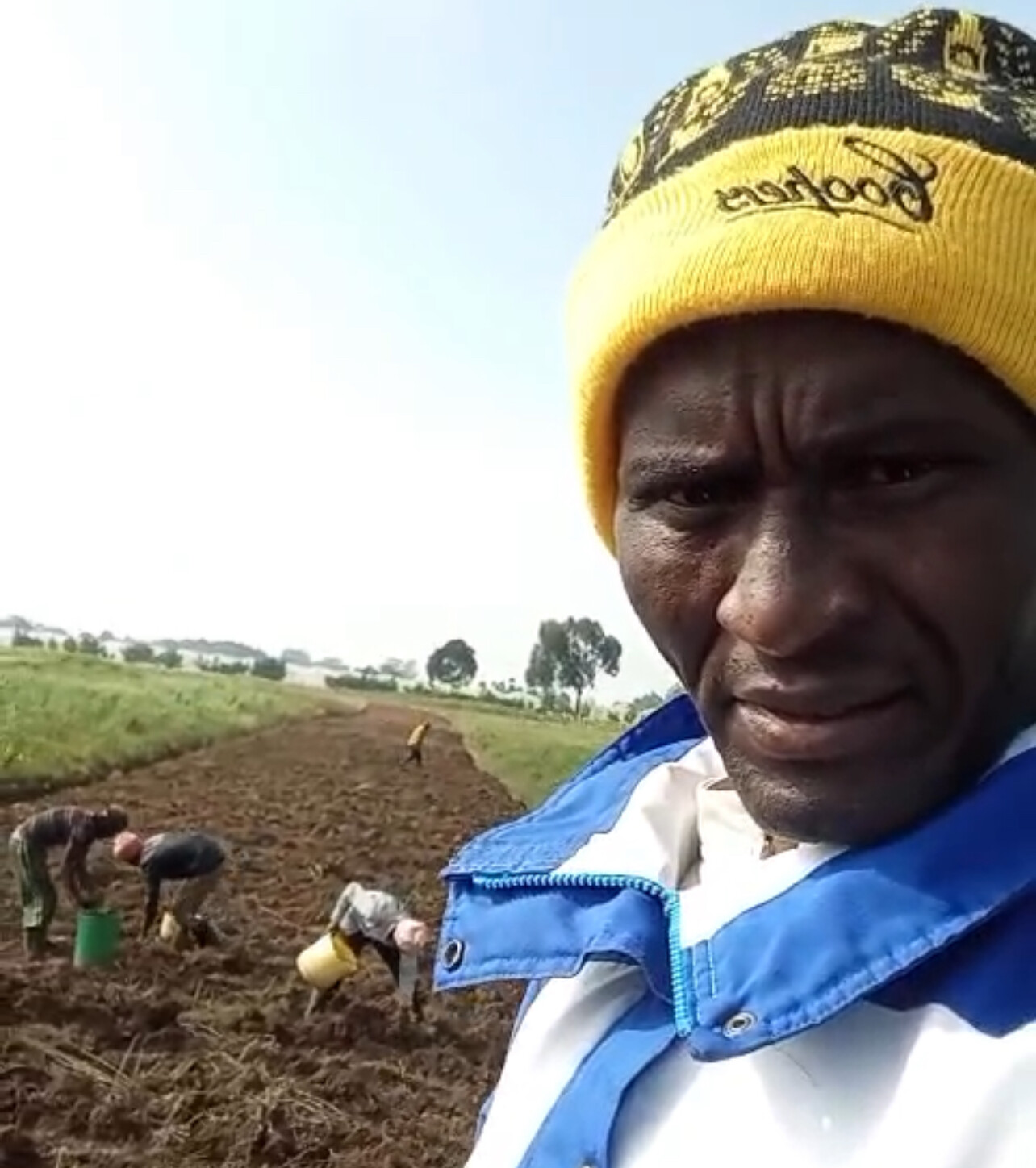
KATA—short for Kenyan Athletics Training Academy—is unlike anything else in the world of distance running. It blends elite training with economic empowerment, giving young athletes not only the tools to run fast, but also a system that sustains them—and their communities—beyond the track.
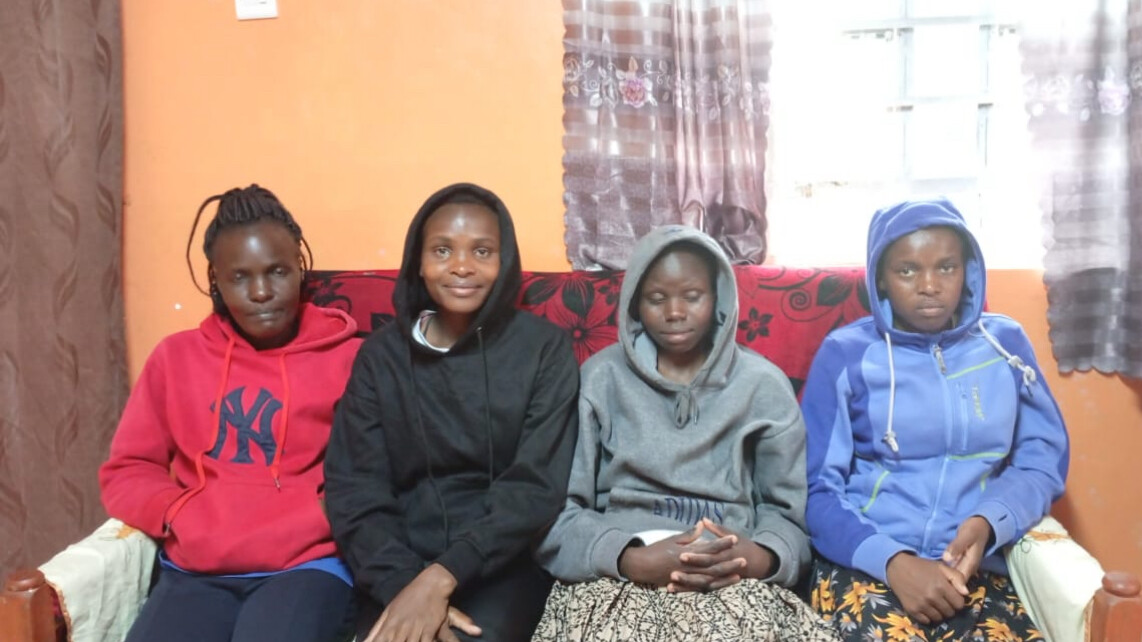
“This is not just sports development,” says Brigid Chebet, a Kenyan journalist who has closely followed the program. “It’s a model of rural transformation through athletics. And Kenya may finally have found a winning formula for generations to come.”
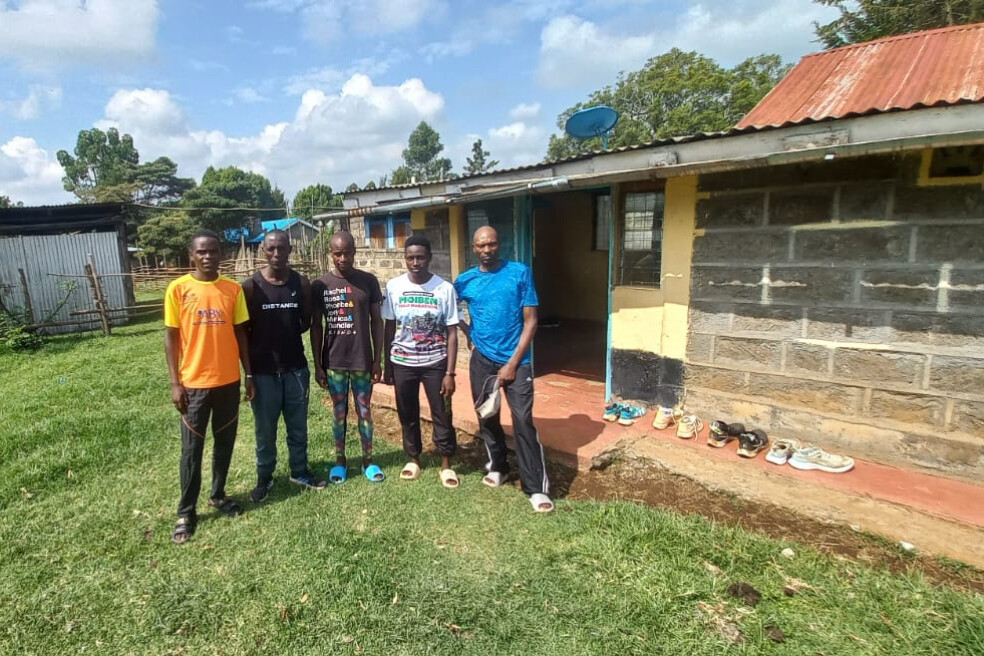
From a Vision to a Movement
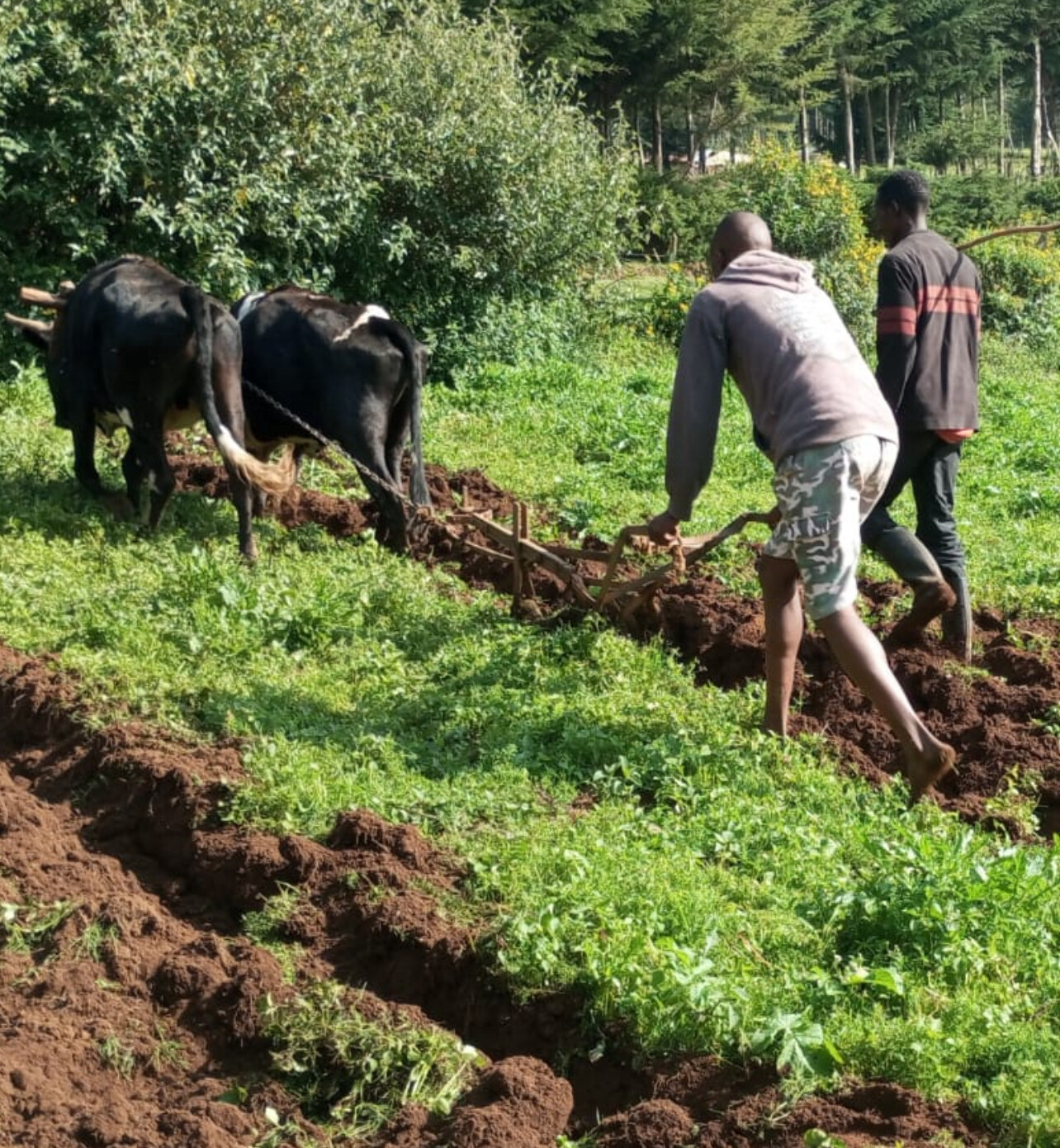
KATA was founded by Bob Anderson, an accomplished American runner who created Runner’s World magazine and later My Best Runs. After visiting Kenya in 2014, he was deeply inspired by the raw talent scattered throughout rural communities—athletes with potential but no pathway.
“He saw a path that few others in athletic management had envisioned—a system that not only trains champions but empowers them economically,” writes Chebet.
That system became KATA: a network of running camps, each paired with a three-acre potato farm. Each camp receives an interest-free loan from KATA to establish operations. In exchange, athletes train full-time and contribute 25 hours a week to the farm. Revenue from the potato harvest supports camp expenses, housing, and meals—creating a self-sustaining ecosystem.
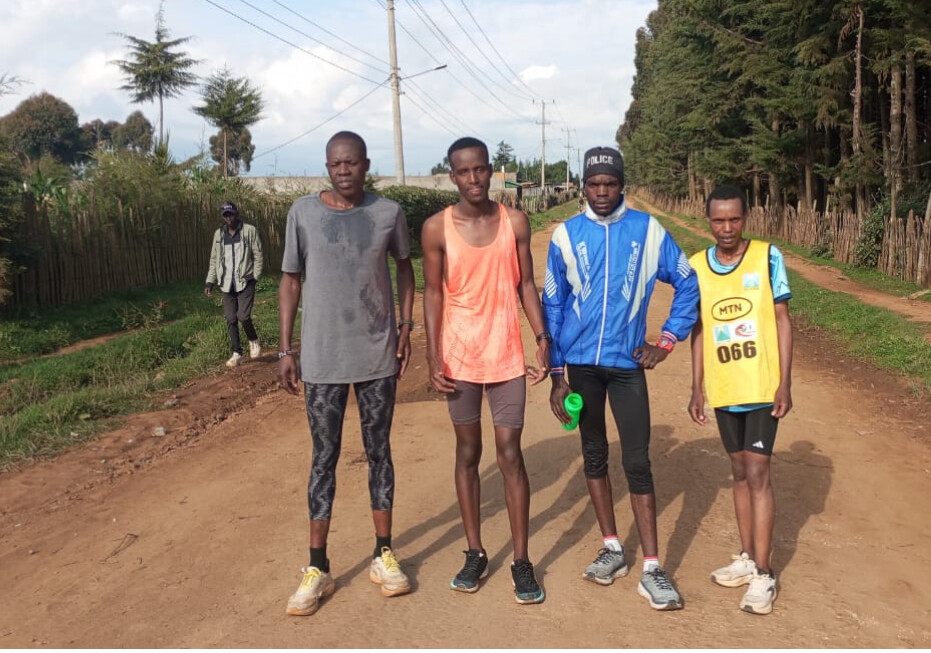
A Growing National Network
The first KATA retreat opened in Thika in 2019. Today, the initiative includes 19 camps spread across Kenya, each run by an experienced operator—many of them former elite athletes.
|
Location |
Operator |
|
Kapcherop |
Philemon Kipruto |
|
Molo |
Eric Chepkwony |
|
Kurengat |
Sammy Dismas |
|
Nyandarua |
Peter Njoroge |
|
Kericho |
|
|
Sotik |
|
|
Sachangwan |
Amos Chirchir |
|
Iten |
David Kellum |
|
Tenden |
Philemon Kipruto |
|
Eldoret |
Ruth Chumo |
|
Njerian Bomet |
Paul Kipsiele Koech |
|
Olenguruone |
Charles Ngeno |
|
Kapkembu |
Kipyegon Nehemiah |
|
Gasharrarge |
Job Langat |
|
Kaptagat |
Joseph Ngure |
|
Kiambu |
Julius Gacheru Migwi |
|
Kangundo |
Jimmy Muindi |
|
Moiben |
Hillary Kiplagat |
|
Kiptoror |
Caleb Rut |
In addition to these camps, two retreats serve as international training hubs: the KATA Running Retreat Thika, operated by Chris Muiruri, and the KATA Running Retreat Portugal, operated by Alberto Santos. Guests from around the world come to the two KATA retreats to train the Kenyan Way.
Elite Experience, Grassroots Impact
At the heart of KATA’s success is its leadership team. Olympic medalist Edwin Soi, now managing the Kuresoi Camp, brings both credibility and experience. Legendary steeplechaser Paul Kipsiele Koech, who has run under 8:10 in the 3000m steeplechase over 110 times, oversees two KATA camps/farms.
Veteran coach Charles Ngeno, known for his early work with Olympic champion Faith Kipyegon, now heads the Olenguruone camp, ensuring that young athletes from even the most remote villages receive structured training and economic opportunity.
“The new vision embraces sustainability, resilience, and empowerment,” writes Chebet. “It ensures that our athletes thrive both on and off the field.”
Looking Ahead
Anderson and the KATA team have ambitious plans: confirming one more camp this month and preparing for even more in 2026. The goal is clear—build up to 50 self-sustaining running camps across Kenya and replicate the model in other parts of the world.
“We’re not just chasing medals,” says Anderson. “We’re building lives.”

For partnership opportunities or more information, contact Bob Anderson on WhatsApp: +1-650-400-6643
(07/03/2025) ⚡AMPby Brigid Chebet with Boris Baron
Quincy Wilson Turns Down Team USA Call—and His Reason Says Everything
At just 17, Quincy Wilson had the opportunity of a lifetime: a chance to represent Team USA at the World Athletics Indoor Championships in Nanjing. He could have stood shoulder to shoulder with Olympians, tested himself against the world’s best, and made his international debut on one of track and field’s biggest stages.
But Wilson said no.
Instead of flying to China, the high school junior stayed home in Maryland—and focused on his homework.
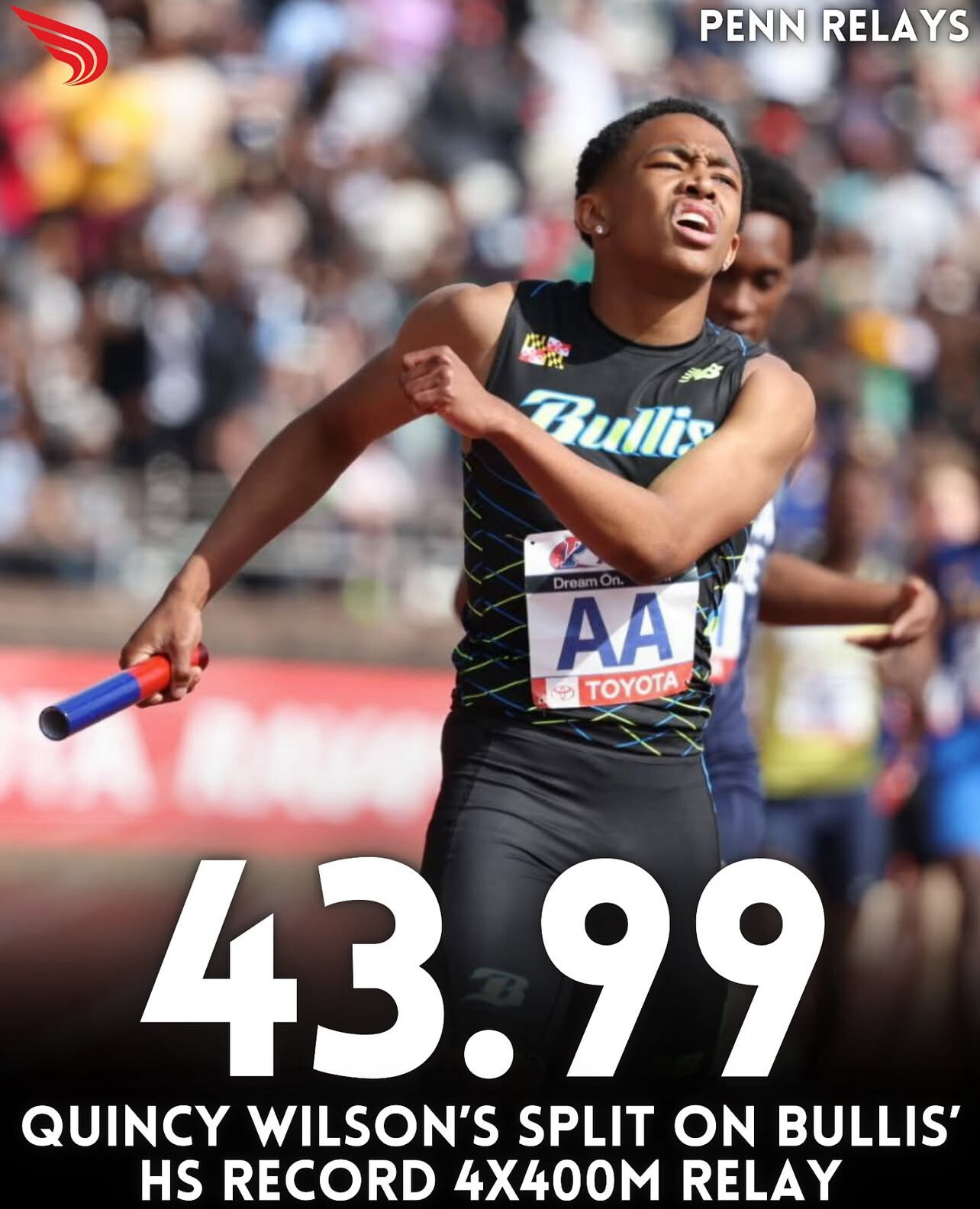
Yes, you read that right. The teenager who stunned crowds with a jaw-dropping 43.99 anchor leg at the Penn Relays—one of the fastest relay splits ever recorded in high school—chose to prioritize his studies. “School comes first,” Wilson posted on Instagram. And just like that, the rising sprint star reminded everyone that discipline isn’t just about medals. Sometimes, it’s about knowing when not to chase one.
What Has He Done Since?

Plenty. Wilson didn’t fade after passing on the global spotlight—he’s continued to rise, one breakthrough at a time:
• Set the high school track world on fire with a 43.99 anchor at the 2024 Penn Relays, helping Bullis School (MD) break national records.
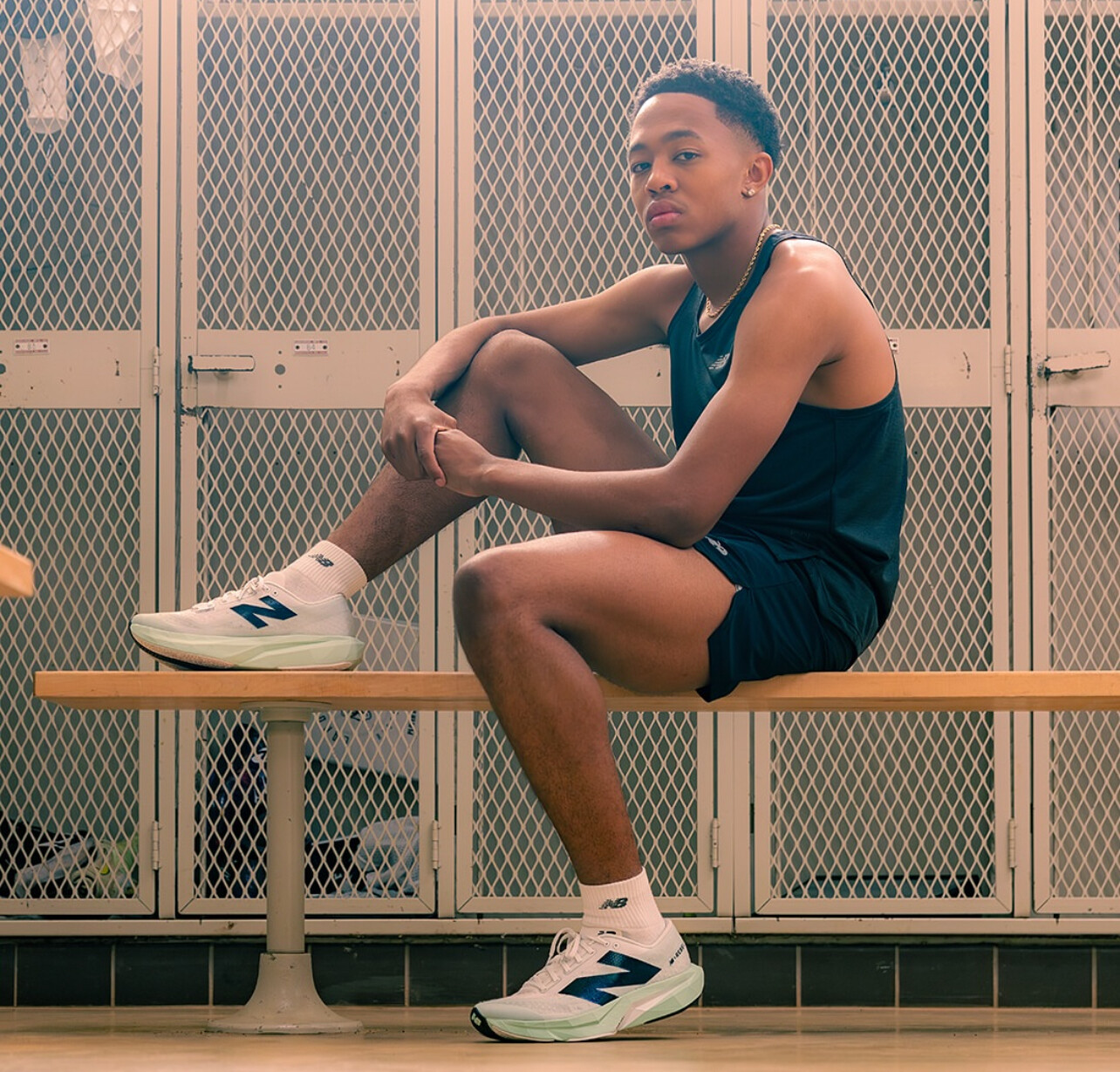
• Became the youngest athlete in history to win the All-Met Athlete of the Year four years in a row.
• Ran 45.76 indoors and 44.20 outdoors, setting U18 world bests and defeating professional-level athletes in senior-level finals.

• Earned Olympic gold in the men’s 4x400m relay in Paris 2024—competing in the heats, becoming the youngest male U.S. track athlete to medal at the Games.
• Maintained academic excellence while continuing to dominate both indoor and outdoor circuits, staying true to his commitment to graduate with his class at Bullis in 2026.
Why This Story Matters
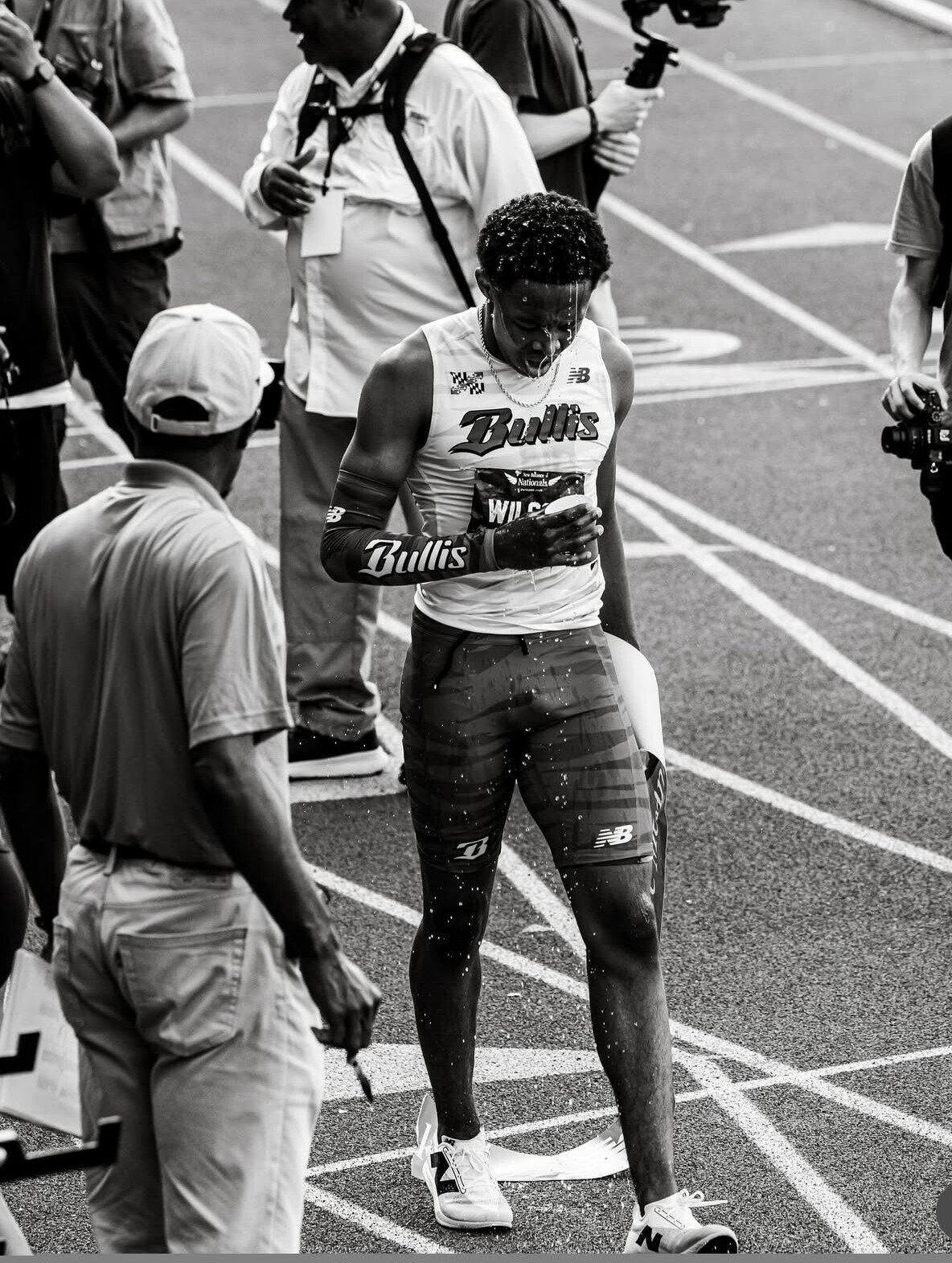
Quincy Wilson’s decision to delay international glory for academics wasn’t just impressive—it was instructive. In an age when young athletes are often rushed into the limelight, Wilson’s path is a reminder that long-term greatness is built with patience, intention, and maturity.
• He didn’t chase headlines—he earned them.
• He didn’t sacrifice school for sport—he’s mastering both.
• He’s not rushing to be great—he’s building it brick by brick.
A Lesson for Every Runner
Whether you’re chasing a PR, a national title, or just personal progress, Wilson’s journey offers a powerful takeaway:
• Run your own race. Don’t let hype or pressure pull you off course.
• Respect the process. Like training, growth takes time—and consistency.
• Play the long game. True success is sustainable, not rushed.
Wilson has already achieved what most runners only dream of. But more importantly, he’s doing it his way—with humility, focus, and incredible perspective.
As the world buzzes about what he could’ve done on that global indoor stage, Quincy Wilson is still just getting started.
And he’s doing it on his terms.
(07/02/2025) ⚡AMPby Boris Baron


